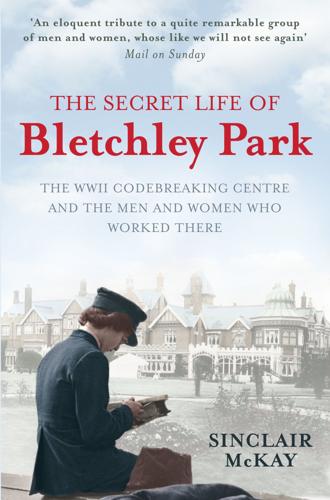
The Secret Life of Bletchley Park: The WWII Codebreaking Centre and the Men and Women Who Worked There
by
Sinclair McKay
Published 24 May 2010
‘A system of passwords has been instituted to enable authorised persons to circulate in the grounds after dark,’ stated an early Bletchley Park memo in October 1939. ‘[It will] enable them to identify themselves to the military police when challenged.’1 Many of those who reported for duty at Bletchley Park recall that suspense; the anticipation and excitement of not knowing what kind of work they were about to step into. For those who arrived on a winter evening, or even in the small hours, the total darkness around the station acquired a chillingly metaphorical depth. And even for the others who reported for duty in more conventional, brighter daylight, the introduction to Bletchley Park was no less disorientating.
…
As with the men, I believe that the early recruiting was largely on a personal-acquaintance basis, but with the whole of Bletchley Park looking for qualified women, we got a great many recruits of high calibre.’4 Life was to acquire a terrific intensity, not all of it generated by the sometimes nightmarish pressure of breaking codes or the sheer feats of hard work required. There was a great deal more to life at Bletchley Park than that. 4 The House and the Surrounding Country When talking to veterans of Bletchley Park now, one looming background visual feature of their lives seems to polarise opinion rather sharply, and that is the house itself.
…
We were told, if people asked us what we were doing, to say that we were “confidential writers” – or secretaries, in other words.’ The lack of prospects may have been put in place by the military hierarchy as opposed to the Bletchley Park authorities. Unlike the Wrens, the Hon. Sarah Baring did achieve promotion – she was sent to work at the heart of the war establishment in the Admiralty, her role to be a go-between representing Bletchley Park to the naval establishment. ‘I was seconded up to Admiralty from BP at the beginning of 1944,’ she recalls. ‘The Bletchley Park authorities opened an office there, underneath that hideous monstrous building on the Mall. The Citadel, the one that’s a mass of concrete that people used to call “Lenin’s Tomb”.

The Secrets of Station X: How the Bletchley Park codebreakers helped win the war
by
Michael Smith
Published 30 Oct 2011
Quite aside from the codebreaking triumphs, there is the simple fact that Bletchley Park was the birthplace of the modern computer. The creation of Colossus was a tremendous achievement and if that was all that had happened at Bletchley Park it would still now be hailed as a demonstration of British brilliance. It is not for nothing that George Steiner, the philosopher and writer, has described Bletchley Park as ‘the single greatest achievement of Britain during 1939-45, perhaps during the [20th] century as a whole.’ So who were the very best of the codebreakers who worked at Bletchley Park? There were in fact so many great men and women working at Bletchley during the Second World War that it is invidious to make such a judgement, but even among the great names four figures do stand out above all the others.
…
‘Archie’ 1 Campbell-Harris, Jean 1 ‘Captain Ridley’s Shooting Party’ 1, 2 Chaffinch cypher 1, 2, 3, 4 Chamberlain, Neville 1, 2, 3, 4 Charlesworth, Martin 1 Cholmondley, Charles 1, 2 Churchill, Winston sets up Room 40 1 interest in Bletchley Park 1 Battle of Britain speech 1 and massacres of Jews 1, 2, 3 visits Bletchley Park 1 orders more resources for Bletchley Park 1 and North African campaign 1, 2, 3, 4, 5 Cillies 1 Clarke, Diana Russell 1, 2, 3, 4, 5 Clarke, Joan 1 Clarke, William ‘Nobby’ and Room 40 1 on GC&CS 1 sets up Naval Section in GC&CS 1, 2 on move to Bletchley Park 1 codebreaking early history of 1 in First World War 1 Cohen, Jonathan 1 Colossus building of 1 and Tunny cypher 1 updated version built 1 growth in use of 1 Column BQ 1 Combined Bureau Middle-East (CBME) 1 Computor Clerks 1, 2 ‘contact analysis’ method 1 Cooper, Joshua ‘Josh’ 1 recruited to GC&CS 1 on GC&CS training 1 and air codebreaking section 1 on German cyphers 1 on work at GC&CS 1 on move to Bletchley Park 1 on liaison with Deuxième Bureau 1 on recruitment drive 1, 2 on secrecy at Bletchley Park 1, 2 on Y Service intercept stations 1, 2 and work with Air Intelligence 1, 2 description of 1 and training of Japanese linguists 1 Coventry bombing raid 1 Crete, invasion of 1 cribs, use of 1, 2, 3 Cromwell, Oliver 1 Cunningham, Sir Andrew 1 Cunningham, Charles 1, 2 Currer-Briggs, Noel 1, 2, 3 Currier, Prescott 1, 2 Curzon, Lord 1 D-Day and Bletchley Park 1, 2, 3, 4 and Double Cross deception 1, 2 Dakin, Alex 1, 2 Davies, Gwen 1, 2 Davies, Jean Faraday 1 de Grey, Nigel and Room 40 1 on move to Bletchley Park 1 on weaknesses in Enigma 1 on distribution of decyphered messages 1, 2 on procedures in Hut 3 1 on planned invasion of Britain 1 and massacre of Jews 1, 2 on Hut 3 1 and reorganisation of Bletchley Park 1 and Operation Torch 1 and Lorenz machine 1 Dee, John 1 Denniston, Alastair 1, 2 and Room 40 1 and GC&CS 1, 2 and liaison with Deuxième Bureau 1, 2 starts recruitment through universities 1, 2 and breaking of Naval Enigma 1 and recruitment problems 1 and arrival of American delegation 1 and Dilly Knox 1, 2 criticisms of approach 1, 2 moved from Bletchley Park 1 Deuxième Bureau 1 Dockyard cypher 1 Dolphin cypher 1, 2, 3, 4, 5 Dönitz, Admiral 1, 2 Double Cross system 1 and Operation Mincemeat 1 and D-Day preparations 1, 2 Double Playfair transposition system 1, 2, 3 Dryden, Henry 1, 2, 3 Eachus, Joe 1, 2 Edward II, King 1 Eisenhower, Dwight 1, 2 el Alamein, Battle of 1 Elizabeth I, Queen 1 Elmer’s School 1, 2 Enigma machine used by German navy 1 offered to British armed forces 1, 2 description of 1 joint attempt by British and French to break 1 clones given to British and French 1 and use of Cillies 1 weaknesses in 1 attempts to break by hand 1 details given to Americans 1, 2 changed by Admiral Dönitz 1 fourth wheel added 1 and traffic analysis 1 Ewing, Sir Alfred 1 Far East Combined Bureau 1, 2 Farrell, Adrienne 1 Fasson, Anthony 1 Fetterlein, Ernst 1 Filby, William 1 Fillingham, George 1 First World War codebreaking in 1 Fleming, Ian 1, 2 Flowers, Tommy 1, 2 Foley, Frank 1 Foreign Office takes control of GC&CS 1 Forster, Leonard 1 Fortitude South deception 1 Foss, Hugh and Enigma machine 1, 2 and liaison with Deuxième Bureau 1 description of 1 France, invasion of 1, 2, 3 Freeborn, Frederic 1 Freyberg, Bernard 1 Friendly, Alfred 1 Fusion Room (Hut 3) 1 Gambier-Parry, Richard 1 Garbo (Juan García Pujol) 1, 2, 3 ‘gardening’ 1 Gibson, Pamela 1 Gill, E.W.B. 1, 2 Glorious, HMS 1 Godfrey, John 1 Golombek, Harry 1 Government Code & Cipher School (GC&CS) 1 creation of 1 early development of 1 early recruitment to 1 and Soviet Union 1 training in 1 and use of military intelligence 1 and resurgence of Germany 1 move to Bletchley Park 1, 2, 3 at Broadway Buildings 1 liaison with Deuxième Bureau 1 liaison with Bureau Szyfrow 1, 2 starts to use mathematicians 1 recruitment drive starts 1 ignores German material 1 plans to evacuate 1 Grazier, Colin 1 Green, Edward 1 Halcrow, Marjorie 1 Halder, Franz 1 Halton, Ken 1 Harding, Ann 1 Harvie-Watt, George 1 Headlam, Walter 1 Herbert, Fanny 1 Herivel, John breaks Red cypher 1 on invasion of Crete 1 meets Winston Churchill 1 and Shark cypher 1 Heydrich, Reinhard 1 Hilton, Peter 1, 2, 3 Hinsley, Harry 1, 2, 3, 4, 5, 6, 7, 8 Hiroshi, Oshima 1, 2 Hitler, Adolf assassination attempt on 1 Holden, Carl F. 1 Holden Understanding 1 Hollerith tabulating machines 1 Howard, Jean 1 Humble, Olive 1, 2 Humphreys, Robert 1 Hut 3 formed 1 and invasion of Norway 1, 2 keeps codebreaking secret 1 and translating from German 1, 2 and start of Ultra 1 procedures changed in 1 and invasion of Crete 1 struggle for control over 1 Eric Jones put in charge of 1 and North African campaign 1, 2, 3, 4, 5, 6 and traffic analysis 1 Fusion Room in 1 and Tunny cypher 1 KGB spy in 1 Hut 4 Naval Section moves into 1 relations with Admiralty 1 and Naval Enigma section 1 and North African campaign 1 Hut 6 work in starts 1 becomes ‘barred zone’ 1 secrecy in 1 and Y Service intercept stations 1 decyphering of messages in 1 breaks Yellow cypher 1 and invasion of Norway 1 procedures changed in 1 breaks Brown cypher 1 and Red cypher 1 and invasion of Crete 1 and Abwehr Enigma 1 and North African campaign 1, 2, 3 Hut 7 and Purple diplomatic cypher 1 Hut 8 and Navel Enigma section moves 1, 2 and Barburismus process 1 and Shark cypher 1, 2, 3, 4 and North African campaign 1 Illicit Services Oliver Strachey (ISOS) 1, 2 Ismay, ‘Pug’ 1 Italian Enigma breaking of 1 Jacob, Freddie 1, 2, 3 Jeckeln, Friedrich 1, 2, 3, 4 Jeffreys, John 1, 2 Jenkins, Roy 1, 2 Jeschonnek, Hans 1 Jews messages of massacres picked up 1 Jones, Eric 1, 2, 3 Jones, R.V. 1, 2, 3 Jopson, Norman Brooke 1 Jumbos building of starts 1 Keefe, Bernard 1 Keen, Harold ‘Doc’ 1, 2 Kendrick, Tony 1 Kennedy, Malcolm 1, 2, 3, 4, 5 Kenworthy, Harold 1, 2, 3, 4 Kesselring, Albrecht 1 Keynes, John Maynard 1 Kluge, Günther von 1 Knox, Dillwyn ‘Dilly’ 1 and Room 40 1 attempts to break Enigma messages 1, 2, 3 and move to Bletchley Park 1 and liaison with Deuxième Bureau 1 recruits Peter Twinn 1 description of 1, 2 and liaison with Bureau Szyfrow 1 and Bomby mechanism 1 starts work at Bletchley Park 1 and Zygalski sheets 1 works in the Cottage 1 on Alan Turing 1 breaks Italian Enigma 1 dissatisfaction with work 1 breaks Abwehr Enigma 1 later life and death 1 Kursk, Battle of 1, 2, 3 Last, Hugh 1 Lavell, Ann 1, 2, 3, 4, 5 Leon, Herbert 1 ‘letter frequency’ method 1 Levenson, Art 1, 2, 3 Lever, Mavis 1, 2, 3, 4, 5, 6, 7, 8, 9 Light Blue cypher 1, 2, 3 Lorenz machine 1, 2, 3, 4 Lucas, F.L.
…
Despite the British victory at Matapan, German troops, supported by the Luftwaffe, executed yet another Blitzkrieg through Yugoslavia and into Greece. British and Greek troops facing insuperable odds were forced to retreat. But the campaign was the first in which the intelligence unearthed by the Bletchley Park codebreakers could be passed on to the commanders in the field direct from Bletchley Park itself rather than through MI6, as had occurred in Norway and France. A direct ‘Special Signals Link’ had been set up between Bletchley Park and Cairo in early 1941 to feed the Ultra intelligence to the British forces in the Middle East and it was extended to the British headquarters in Athens shortly before the German invasion.
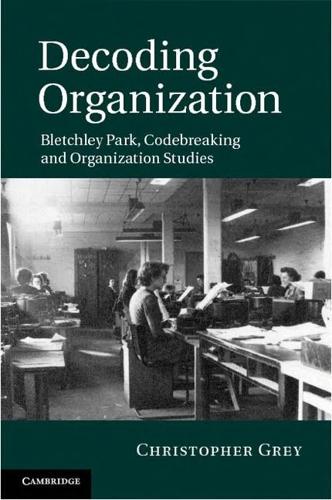
Decoding Organization: Bletchley Park, Codebreaking and Organization Studies
by
Christopher Grey
Published 22 Mar 2012
I am also very grateful to Dr Edward and Mrs Rebecca Simpson for explaining to me their work on Italian and Japanese ciphers at Bletchley Park. Christine Large, formerly Director of the Bletchley Park Trust, assisted with securing access to Bletchley Park veterans and to the Bletchley Park Trust Archives, where archivist Steve Ovens was helpful and welcoming. I am extremely grateful to the veterans of Bletchley Park who were interviewed for or otherwise contributed information to this study. They are not identified by their real names in the book, but they exemplify all the extraordinary qualities of their peers. The early period of data collection was funded by the Nuffield Foundation via its Social Science Small Grants Scheme.
…
Dedicated to my mother, Madeleine Grey The fact is that the process of ‘cryptography’ would perhaps better be described as interpretation. Josh Cooper, Head of Air Section at Bletchley Park, 24 June 1941 Inherent in all good interpretations is the casting of new light on something that earlier has either escaped serious attention or been understood in a conventional and thus partly conservative way. Alvesson and Deetz (2000: 152) Contents Acknowledgements Abbreviations and Acronyms Introduction: Organization Studies, History and Bletchley Park Part I Decoding Structures page xi xv 1 47 1 The Making of Bletchley Park 51 2 The Making of Signals Intelligence at Bletchley Park 78 Part II Decoding Cultures 107 3 Pillars of Culture at Bletchley Park 113 4 Splinters of Culture at Bletchley Park 145 Part III Decoding Work 173 5 Making Bletchley Park Work 177 6 Understanding Bletchley Park’s Work 213 Conclusion: Reviving Organization Studies 245 Appendix A.
…
Alvesson and Deetz (2000: 152) Contents Acknowledgements Abbreviations and Acronyms Introduction: Organization Studies, History and Bletchley Park Part I Decoding Structures page xi xv 1 47 1 The Making of Bletchley Park 51 2 The Making of Signals Intelligence at Bletchley Park 78 Part II Decoding Cultures 107 3 Pillars of Culture at Bletchley Park 113 4 Splinters of Culture at Bletchley Park 145 Part III Decoding Work 173 5 Making Bletchley Park Work 177 6 Understanding Bletchley Park’s Work 213 Conclusion: Reviving Organization Studies 245 Appendix A. Timeline 1919–2011 Appendix B. Table of Interviewees 273 280 Appendix C. Brief Profiles of Key Figures Appendix D. Organization Charts 1940–46 283 286 ix x contents Glossary of Terms 289 References 296 Index 313 Acknowledgements In the writing of this book I have incurred many debts. Before acknowledging these I should make it clear that any errors of fact or inadequacies of analysis are entirely my responsibility and in no way those of the individuals or organizations named below.
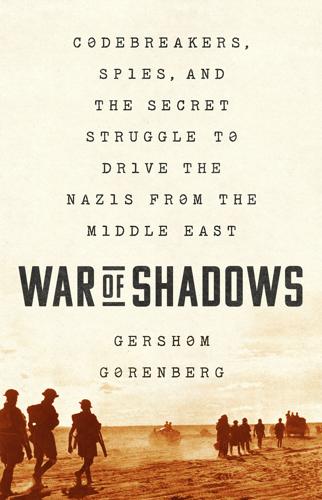
War of Shadows: Codebreakers, Spies, and the Secret Struggle to Drive the Nazis From the Middle East
by
Gershom Gorenberg
Published 19 Jan 2021
Secret Service: The Making of the British Intelligence Community. London: Sceptre, 1986. Annan, Noel. “Book Review: No More an Enigma: Codebreakers: The Inside Story of Bletchley Park.” Independent, August 22, 1993. www.independent.co.uk/arts-entertainment/book-review-no-more-an-enigma-codebreakers-the-inside-story-of-bletchley-park-ed-f-h-hinsley-alan-1462732.html. “Architectural History Report of Bletchley Park.” Bletchley Park Research. www.bletchleyparkresearch.co.uk/research-notes/architectural-history-report-bletchley-park. Arielli, Nir. “Beyond ‘Mare Nostrum.’ Ambitions and Limitations in Fascist Italy’s Middle Eastern Policy.” Geschichte und Gesellschaft 37, no. 3 (2011): 385–407. .
…
Bagnold, Sand, Wind, 121–123; CAB 44/151, “The History of the Long Range Desert Group (June 1940–March 1943),” reprinted in Special Forces in the Desert War, 1940–1943 (Kew, Richmond, Surrey, UK: National Archives, 2008), 14. 7. “Architectural History Report of Bletchley Park,” chap. 7, Bletchley Park, www.bletchleyparkresearch.co.uk/research-notes/architectural-history-report-bletchley-park (accessed March 12, 2016); Smith, Station X, loc. 600ff.; Bletchley Park: Home of the Codebreakers (Briscombe Port, UK: Pitkin Publishing, 2015). 8. Stuart Milner-Barry, “Hut 6: Early Days,” in Codebreakers: The Inside Story of Bletchley Park, ed. F. H. Hinsley and Alan Stripp (Oxford: Oxford University Press, 1993), 89–90; Welchman, Hut Six, 84–85. 9.
…
It’s unlikely that anyone in England would have asked him. The best minds of Bletchley Park assumed that the Poles had pinched an Enigma machine with its wheels, rather than working out the wiring mathematically. After the fall of France, in any case, Rejewski was beyond reach. Dilly Knox’s health grew worse, as did Alastair Denniston’s. Bletchley Park filled with new recruits who did not know how Enigma was first broken or by whom. The magicians from Warsaw faded from the collective memory of Britain’s codebreakers. Bletchley Park’s history was a secret known to few. The Poles’ contribution was an even deeper secret.
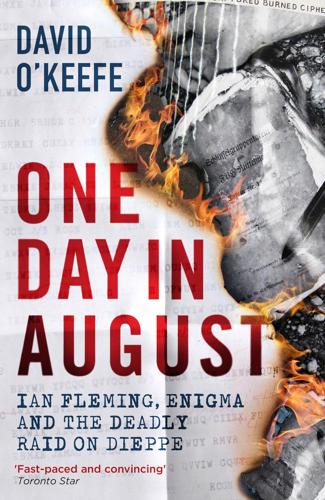
One Day in August: Ian Fleming, Enigma, and the Deadly Raid on Dieppe
by
David O’keefe
Published 5 Nov 2020
Most significant of all, Special Intelligence had now exploded onto the scene. The cryptographic abilities of Bletchley Park, buttressed by the other forms of signals intelligence and by the deft work of the staff of the Operational Intelligence Centre in translating all this information into focused activity, had led to unparalleled success on the high seas by the middle of 1941 – something that Ian Fleming and John Godfrey in NID, not to mention Alan Turing, Peter Twinn and Frank Birch at Bletchley Park, could only have dreamed of after the postponement of Operation Ruthless in October 1940. The cryptanalysts at Bletchley Park recognized that the dramatic success they were enjoying did not result, at this point, from any major technological breakthrough.
…
London: David and Charles, 2007. Sebag-Montefiore, Hugh. Enigma. London: Weidenfeld & Nicolson, 2000. Smith, Michael. The Secrets of Station X: How the Bletchley Park Codebreakers Helped Win the War. Hull, UK: Biteback Publishing, 2011. Watkins, Gwen. Cracking the Luftwaffe Codes: The Secrets of Bletchley Park. London: Greenhill Books, 2006. Wescombe, Peter, and John Gallehawk. Getting Back into SHARK: H.M.S. Petard and the George Cross. Bletchley, UK: Bletchley Park Trust, 1997. WAR AT SEA: GENERAL Bell, Christopher M. Churchill and Sea Power. Oxford: Oxford University Press, 2013. Brodhurst, Robin.
…
According to Mavis Batey, Knox and his counterpart William ‘Nobby’ Clarke (who handled operational intelligence at Bletchley Park) circumvented normal channels to deal directly with Cunningham ‘through Godfrey, to speed up the process without revealing the secret source … It is not clear how they had managed to by-pass the usual Admiralty requirements for dissemination of intelligence from Bletchley Park to the commanders in the field, but Dilly (Knox) is on record as saying that if the normal procedure had been carried out “it would have lost us the battle of Mediterranean.” Godfrey, who, like his guru Admiral Hall, was an arch-conspirator, later brought Admiral Cunningham down to Bletchley Park to celebrate with Dilly’s section.’
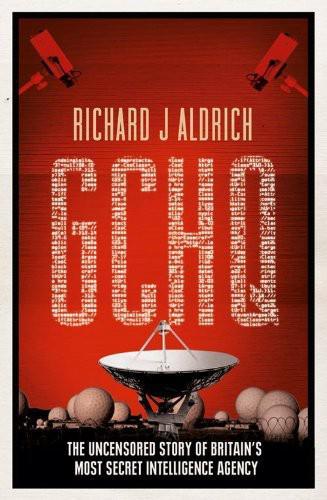
GCHQ
by
Richard Aldrich
Published 10 Jun 2010
One former code-breaker recalls that the main house was soon ‘too small for more than a handful of top brass and their immediate acolytes’. So Bletchley Park’s considerable garden, with its rosebeds and delightful maze, gradually disappeared beneath the expanding penumbra of temporary structures.19 The shadow of the bomber even reached out to Bletchley Park. The radio transmission infrastructure involved elaborate aerials which had the potential to give away the site’s location from the air. Accordingly, Bletchley Park’s own radio station was moved to nearby Whaddon Hall. As the operation gained momentum, other nearby premises were absorbed.
…
But he did not know how to manage Bletchley Park, and as a result it was under-resourced.27 In the words of one SIS contemporary, Menzies regarded anything to do with personnel or administration as ‘dirty work’, and would go to considerable lengths to avoid it.28 Bletchley Park may have been chaotic, but it was a creative and innovative chaos that allowed the code-breakers to make a fresh start in the Buckinghamshire countryside.29 The head of GC&CS, Alastair Denniston, spent the autumn of 1939 making detailed war preparations. His task was to find new cryptographers to fill out the ranks of Bletchley Park. His valuable contacts with the Poles and their success with the ‘bombe’ had led him to realise that he not only needed more code-breakers, he also needed mathematically-inclined individuals.
…
In August 1945 the Second World War finally drew to a close. Winston Churchill was of the view that Bletchley Park was the deciding factor in the defeat of the Fascist powers: in 1945 he apparently told King George VI that Ultra had effectively won the war.36 Robert Harris, author of the novel Enigma (1995), rightly points out that most of the major combatants had military forces that were superior to those of Britain, not least in their weapons technology. Bletchley Park was the one place where we enjoyed a crucial world lead.37 Harry Hinsley, a junior figure at Bletchley Park, but later the official historian who produced a magisterial study of intelligence during the Second World War, has famously asserted that Ultra shortened the war by several years, saving countless lives on all sides.
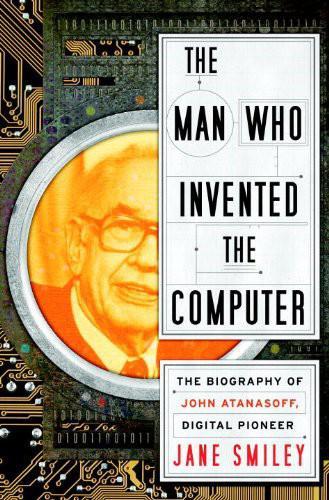
The Man Who Invented the Computer
by
Jane Smiley
Published 18 Oct 2010
(Courtesy of Horst Zuse) Konrad Zuse, 1910–1995. (Courtesy of Horst Zuse) Alan Turing, 1912–1954, upon his election as a Fellow of the Royal Society in 1951. (© National Portrait Gallery, London) Bletchley Park staff at work on deciphering codes, Hut 6. (Bletchley Park Trust Archive) A Lorenz SZ42 Schlüsselzusatz cipher machine on display at Bletchley Park. (Bletchley Park Trust Archive) Thomas Flowers, 1905–1998. (Bletchley Park Trust Archive) Colossus at work in 1943; note paper tape. (Science Museum/SSPL) Aiken’s Mark I analog device in use, 1944. (Courtesy of the Computer History Museum) John Mauchly, 1907–1980 (left), and J.
…
“Colossus and the Rise of the Modern Computer.” In Colossus: The Secrets of Bletchley Park’s Codebreaking Computers, edited by B. Jack Copeland et al. Oxford: Oxford University Press, 2006, pp. 101–15. Copeland, B. Jack, et al., eds. Colossus: The Secrets of Bletchley Park’s Codebreaking Computers. Oxford: Oxford University Press, 2006. Flowers, Thomas H. “Colossus.” In Colossus: The Secrets of Bletchley Park’s Codebreaking Computers, edited by B. Jack Copeland et al. Oxford: Oxford University Press, 2006, pp. 91–100. Flowers, Thomas H. “D-Day at Bletchley Park.” In Colossus: The Secrets of Bletchley Park’s Codebreaking Computers, edited by B.
…
By the summer and fall of 1941, Turing’s work on the Bombe and the Enigma code (which the British referred to as “Ultra”) had profoundly impressed his colleagues at Bletchley Park, and he had also impressed Winston Churchill. The code breakers had been successful: so many German supply ships were sunk in the late spring that the British authorities worried that they had handed the Germans irrefutable evidence that the cipher was broken. As Konrad Zuse had seen, though, the Germans simply decided that such a thing was impossible and continued using Enigma. After May, the work at Bletchley Park met with a few small obstacles, but by the autumn of 1941, the British were confident that they could decode any German naval communication, and if the British navy used their knowledge wisely, they could severely limit the vulnerability of British forces to German naval operations.
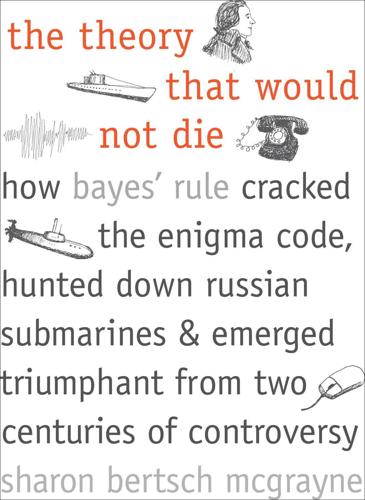
The Theory That Would Not Die: How Bayes' Rule Cracked the Enigma Code, Hunted Down Russian Submarines, and Emerged Triumphant From Two Centuries of Controversy
by
Sharon Bertsch McGrayne
Published 16 May 2011
Third, Bletchley Park became a giant factory employing almost 9,000 people. As more bombes came online, the laborious Banburismus cardboards were phased out. Barring unforeseen changes by German cryptographers, decoding naval Enigma was under control. Back home safely and free of responsibility for the Enigma and Tunny-Lorenz codes, Turing, the great theoretician, was free to dream. During long walks in the countryside around Bletchley Park, Turing and Good discussed machines that could think with Donald Michie, who would pioneer artificial intelligence. Michie, who had joined Bletchley Park as an 18-year-old, described the trio as “an intellectual cabal with a shared obsession with thinking machines and particularly with machine learning as the only credible road to achieving such machines.”
…
Hitler had decided it would be a diversionary feint to draw German troops away from the ports along the English Channel and that the real invasion would take place five days later. Colossus II decoded the message, and a courier raced a copy from Bletchley Park to Gen. Dwight “Ike” Eisenhower. As Ike and his staff were trying to decide when to launch the invasion of Normandy the courier handed him a sheet of paper containing Hitler’s order. Unable to tell his staff about Bletchley Park, Eisenhower simply returned the paper to the courier and announced, “We go tomorrow,” the morning of June 6.39 He later estimated that Bletchley Park’s decoders had shortened the war in Europe by at least two years. The Colossi became the world’s first large-scale electronic digital computers, built for a special purpose but capable of making other computations too.
…
Each new Colossus was an improvement over the previous one, and Michie believed the eleventh “nudged the design further in the direction of ‘programmability’ in the modern sense.”41 By 1945 Turing had moved on to voice encryption at a nearby military installation at Hanslope Park. Late in the war, others at Bletchley Park, ignorant of Turing’s work on Enigma, decided to use Bayesian methods to try to break the Japanese naval codes in the Pacific. Japan’s main naval cipher, JN-25, was becoming increasingly complex, and Bletchley Park began working on some particularly difficult versions shortly after September 1943. A trio of British mathematicians was assigned to work in tandem with Washington. The three were Ian Cassels, later a professor at Cambridge; Jimmy Whitworth; and Edward Simpson, who had joined Bletchley Park in 1942, immediately after earning a mathematics degree at Queen’s University, Belfast, at the age of 19.
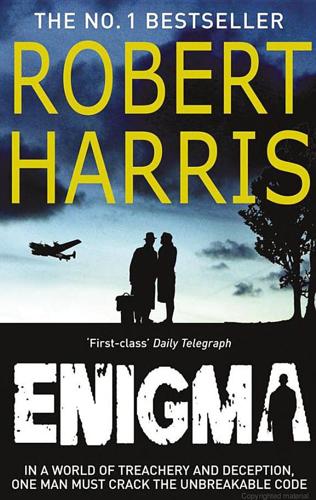
Enigma
by
Robert Harris
Published 15 Feb 2011
Jericho shivered again, remounted the bike and pointed it down the hill, towards the south, towards Orion and Procyon, and to Hydra, which hung suspended in the night sky above Bletchley Park like a knife. Enigma FOUR KISS KISS: the coincidence of two different cryptograms, each transmitted in a different cipher, yet each containing the same original plaintext, the solution of one thereby leading to the solution of the other. A Lexicon of Cryptography ("Most Secret', Bletchley Park, 1943) 1 HE DOESN'T KNOW what wakes him—some faint sound, some movement in the air that hooks him in the depths of his dreams and hauls him to the surface.
…
Enigma SIX STRIP STRIP: to remove one layer of encipherment from a cryptogram which has been subjected to the process of super-encipherment (US, gv)/ i.e., a message which has been enciphered once, and then re-enciphered to provide double security. A Lexicon of Cryptography ('Most Secret', Bletchley Park, 1943) 1 LATER, IT WOULD transpire that Bletchley Park knew almost everything there was to know about U-653. They knew she was a Type VIIc—220 feet long, 20 feet wide, with a submerged displacement of 871 tons and a surface range of 6,500 miles—and that she had been manufactured by the Howaldts Werke of Hamburg, with engines by Blohm und Voss.
…
The way Kite told it afterwards, Jericho must have stood that way for at least five minutes, turning first towards the chapel, then the meadow, and then the hall, before moving off purposefully towards his staircase, passing out of sight. Acknowledgements I OWE A debt of gratitude to all those former employees of Bletchley Park who spoke to me about their wartime experiences. In particular, I would like to thank Sir Harry Hinsley (Naval Section, Hut 4), Margaret Macintyre and Jane Parkinson (Hut 6 Decoding Room), the late Sir Stuart Milner-Barry (former head of Hut 6), Joan Murray (Hut 8) and Alan Stripp (Japanese ciphers). Roger Bristow, Tony Sale and their colleagues at the Bletchley Park Trust answered my questions with great patience and allowed me to wander about the site at will. None of these kind people bears any responsibility for the contents of this book, which is a work of the imagination, not of reference.
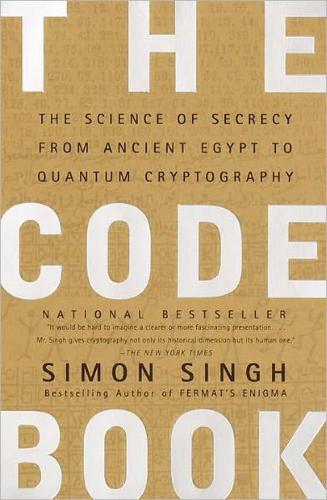
The Code Book: The Science of Secrecy From Ancient Egypt to Quantum Cryptography
by
Simon Singh
Published 1 Jan 1999
The new recruits were not brought to Room 40 in London, but instead went to Bletchley Park, Buckinghamshire, the home of the Government Code and Cypher School (GC&CS), a newly formed codebreaking organization that was taking over from Room 40. Bletchley Park could house a much larger staff, which was important because a deluge of encrypted intercepts was expected as soon as the war started. During the First World War, Germany had transmitted two million words a month, but it was anticipated that the greater availability of radios in the Second World War could result in the transmission of two million words a day. At the center of Bletchley Park was a large Victorian Tudor-Gothic mansion built by the nineteenth-century financier Sir Herbert Leon.
…
In particular, he dramatically describes the “pinches” from U-boats which helped the codebreakers at Bletchley Park. Hinsley, F.H., and Stripp, Alan (eds), The Codebreakers: The Inside Story of Bletchley Park (Oxford: Oxford University Press, 1992). A collection of illuminating essays by the men and women who were part of one of the greatest cryptanalytic achievements in history. Smith, Michael, Station X (London: Channel 4 Books, 1999). The book based on the British Channel 4 TV series of the same name, containing anecdotes from those who worked at Bletchley Park, otherwise known as Station X. Harris, Robert, Enigma (London: Arrow, 1996).
…
Hut 6 passed its decrypts to Hut 3, where intelligence operatives translated the messages, and attempted to exploit the information. Hut 8 specialized in the naval Enigma, and they passed their decrypts to Hut 4 for translation and intelligence gathering. Initially, Bletchley Park had a staff of only two hundred, but within five years the mansion and the huts would house seven thousand men and women. Figure 44 In August 1939, Britain’s senior codebreakers visited Bletchley Park to assess its suitability as the site for the new Government Code and Cypher School. To avoid arousing suspicion from locals, they claimed to be part of Captain Ridley’s shooting party. (photo credit 4.3) During the autumn of 1939, the scientists and mathematicians at Bletchley learned the intricacies of the Enigma cipher and rapidly mastered the Polish techniques.

Rebel Ideas: The Power of Diverse Thinking
by
Matthew Syed
Published 9 Sep 2019
Although these huts were rudimentary, they would play host to some of the most important (and fascinating) activity of the Second World War. The Bletchley Park team cracked the Enigma, providing a treasure trove of information that would prove vital to the overall war effort. Some argue that the intelligence shortened the war by up to three years. Others claim that it altered the outcome itself. Winston Churchill described Bletchley Park as ‘the goose that laid the golden egg’. Now, if you were recruiting a crack team of code breakers, I am guessing you would want to hire world-class mathematicians. This was precisely the approach of Alistair Denniston, a diminutive Scot, when he was asked to head up the Bletchley Park operation.
…
Although Tolkien took an instructional course at the London HQ of the Government Code and Cypher School, he ultimately decided to stay in Oxford. Cryptography’s loss was literature’s gain: during the war years Tolkien would write the bulk of The Lord of the Rings.13 The Bletchley Park team was diverse across multiple dimensions. They had different intellectual backgrounds, but also demographic backgrounds. Turing was gay at a time when homosexuality was illegal. The majority of the staff were women, albeit often in administrative roles (Bletchley Park was by no means immune from the sexism in broader society). There were many high-ranking Jewish cryptanalysts. There were also people of different religions and social backgrounds.14 Why did any of this matter when it came to cracking a code?
…
How easy to hire mathematicians who were superb at analysing data from the Enigma machines, but might not have stopped to wonder about their human operators. By taking a step back, by pondering the blind spots in any perspective, by having the ingenuity to seek insights across the universe of useful ideas, Bletchley Park came to express a collective intelligence of an unusual and remarkable kind. George Steiner, the philosopher and critic, described Bletchley Park as ‘the single greatest achievement of Britain during 1939–45, perhaps during the 20th century as a whole.’ Bill Bundy, an American code-breaker who worked at Bletchley, and would go on to become Assistant Secretary of State in the US government, said that he had never worked with a group of people that was ‘more thoroughly dedicated and with such a range of skills, insight and imagination’.19 After he received his letter, Sedgewick took up the invitation to visit Colonel Nicholls of the General Staff, who also happened to be the head of MI8, the British intelligence department.
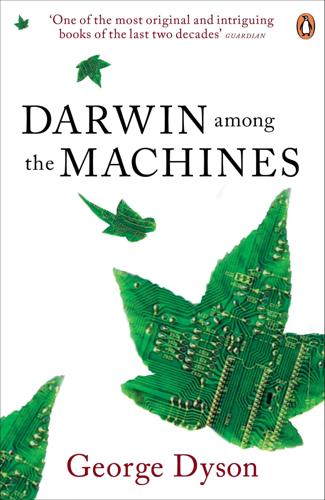
Darwin Among the Machines
by
George Dyson
Published 28 Mar 2012
Good wrote that Turing “made important statistical contributions, but had little to do with the Colossus,”31 a view supported by Newman, Flowers, and others, although Brian Randell, after extensive interviews with these participants, noted “virtually all the people I have interviewed recollect wartime discussions of his idea of a universal automaton.”32 Peter Hilton wrote that Turing “was, in fact,—and quite consciously and deliberately—inventing the computer as he designed first the ‘Bombe’ and then the ‘Colossus.’”33 By the time of the actual construction and operation of the Colossi, Turing had moved on to the problem of real-time voice encryption, among other things. Bletchley Park had grown into an operation employing seven thousand people, ten Colossi, innumerable bombes, large arrays of Hollerith equipment, and extensive telecommunications support. The Colossi were among the first programmable, if specialized, electronic digital computers. As an integrated data-processing installation the whole operation was years, if not decades, ahead of its time. With the end of the war, the computational torch passed to the Americans, even though it was the alumni of Bletchley Park who were first to demonstrate a working stored-program computer (the Manchester Baby Mark I, which ran its first program on 21 June 1948) and first to construct a fully electronic memory (the electrostatic Williams tube).
…
Good, “Pioneering Work on Computers at Bletchley,” in Nicholas Metropolis, J. Howlett, and Gian-Carlo Rota, eds., A History of Computing in the Twentieth Century (New York: Academic Press, 1980), 35. 24.Peter Hilton, “Reminiscences of Bletchley Park, 1942–1945,” in A Century of Mathematics in America, part 1 (Providence, R.I.: American Mathematical Society, 1988), 293–294. 25.Diana Payne, “The Bombes,” in F. H. Hinsley and Alan Stripp, eds., Codebreakers: The Inside Story of Bletchley Park (Oxford: Oxford University Press, 1993), 134. 26.Thomas H. Flowers, “The Design of Colossus,” Annals of the History of Computing 5 (1983): 244. 27.Irving J. Good, “A Report on a Lecture by Tom Flowers on the Design of the Colossus,” Annals of the History of Computing 4, no. 1 (1982): 57–58. 28.Howard Campaigne, introduction to Flowers, “Design of Colossus,” 239. 29.Irving J.
…
Turing’s thought experiment was as close to Leibniz’s dream of an elemental and universal language as mind, mechanism, or mathematics has been able to get so far. With the arrival of World War II, statistical analysis and the decoding of computable functions became a matter of life and death. Theory became hardware overnight. Turing and his wartime colleagues working for Allied intelligence at Bletchley Park found themselves coercing obstinate lengths of punched paper tape, at speeds of up to thirty miles per hour, through an optical mask linked by an array of photoelectric cells to the logical circuitry of a primitive computer named Colossus. Some fifteen hundred vacuum tubes, configured for parallel Boolean arithmetic, cycled through five thousand states per second, seeking to recognize a meaningful pattern in scrambled strings of code.
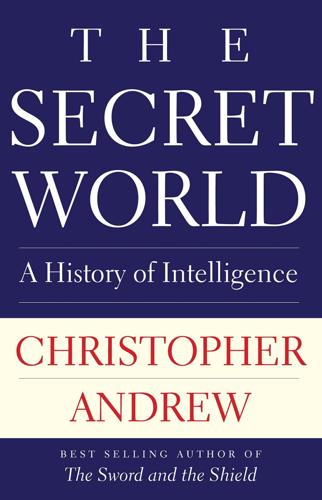
The Secret World: A History of Intelligence
by
Christopher Andrew
Published 27 Jun 2018
(Louisville, Ky: Westminster John Knox Press, 2004) —, The Historical Jesus: A Guide to the Perplexed (London: Bloomsbury, 2012) Bonilla, Diego Navarro, ‘“Secret Intelligences” in European Military, Political and Diplomatic Theory: An Essential Factor in the Defense of the Modern State (Sixteenth and Seventeenth Centuries)’, Intelligence and National Security, vol. 27 (2012), no. 2 Bonsall, Sir Arthur, ‘Bletchley Park and the RAFY Service: Some Recollections’, Intelligence and National Security, vol. 23 (2008), no. 6 —, An Uphill Struggle (Bletchley Park: Bletchley Park Trust, 2011) Borromeo, Agostino (ed.), L’Inquisizione: Atti del Simposio internazionale, Città del Vaticano, 29–31 ottobre 1998 (Vatican City: Biblioteca Apostolica Vaticana, 2003) Bos, A. P., Cosmic and Meta-Cosmic Theology in Aristotle’s Lost Dialogues (Leiden: Brill, 1989) Bossy, John, Under the Molehill: An Elizabethan Spy Story (New Haven, Conn.: Yale University Press, 2001) —, Giordano Bruno and the Embassy Affair (New Haven, Conn.: Yale Nota Bene, 2002) Bosworth, A.
…
The origins of ULTRA, the most important intelligence of the Second World War. In May 1940, less than a fortnight after Churchill became Prime Minister, Bletchley Park began to decrypt traffic from this Luftwaffe version of the Enigma cipher machine. 64. A US Army Signals Security detachment posted to Bletchley Park in 1942 (photographed at its Brickhill Manor billet): the first foreign codebreakers to work at a British SIGINT agency since the reign of George I. 65. Wrens (Women’s Royal Naval Service) in Hut 3 at Bletchley Park operating ‘Colossus’, the world’s first programmable, electronic computer. 66. The Yalta conference of the Big Three in session at the Livadia Palace in February 1945.
…
Western intelligence services during and after the Second World War knew very little about intelligence before – and sometimes during – the First World War. That was true even of ‘Station X’ at Bletchley Park, which had greater success in breaking enemy ciphers than any codebreaking agency had ever had before. Three times over the previous 500 years, Britain had faced major invasion threats – from the Armada of Philip II of Spain in 1588, from Napoleon at the start of the nineteenth century, and from Hitler in 1940. But the Bletchley Park codebreakers who solved Hitler’s ciphers, though they included some notable historians, had no idea that their predecessors had broken those of Philip II and Napoleon at other times of national crisis.* No other wartime profession was as ignorant of its own past.

Our Final Invention: Artificial Intelligence and the End of the Human Era
by
James Barrat
Published 30 Sep 2013
The vanity plate belonged to I. J. Good, who arrived in Blacksburg in 1967, as a Distinguished Professor of Statistics. The “007” was an homage to Ian Fleming and Good’s secret work as a World War II code breaker at Bletchley Park, England. Breaking the encryption system that Germany’s armed forces used to encode messages substantially helped bring about the Axis powers’ defeat. At Bletchley Park, Good worked alongside Alan Turing, called the father of modern computation (and creator of chapter 4’s Turing test), and helped build and program one of the first electrical computers. In Blacksburg, Good was a celebrity professor—his salary was higher than the university president’s.
…
German U-boats: Trueman, Chris, History Learning Site, “World War Two: U-boats,” last modified 2011, http://www.historylearningsite.co.uk/u-boats.htm (accessed December 2, 2011). Each key displayed a letter: Sales, Tony, “The Principal of the Enigma,” March 2001, http://www.codesandciphers.org.uk/enigma/enigma1.htm (accessed September 5, 2011). Turing and his colleagues: Bletchley Park National Codes Center, “Machines behind the codes,” last modified 2011, http://www.bletchleypark.org.uk/content/machines.rhtm. (accessed September 6, 2011). The heroes of Bletchley Park: Hinsley, Harry, “The Influence of ULTRA in the Second World War,” Babbage Lecture Theatre, Computer Laboratory, last modified November 26, 1996, http://www.cl.cam.ac.uk/research/security/Historical/hinsley.html (accessed September 6, 2011).
…
The heroes of Bletchley Park: Hinsley, Harry, “The Influence of ULTRA in the Second World War,” Babbage Lecture Theatre, Computer Laboratory, last modified November 26, 1996, http://www.cl.cam.ac.uk/research/security/Historical/hinsley.html (accessed September 6, 2011). At Bletchley Turing: Banks, “A Conversation with I. J. Good.” I won’t say that what Turing did: McKittrick, David, “Jack Good: Cryptographer whose work with Alan Turing at Bletchley Park was crucial to the War effort,” The Independent, sec. obituaries, May 14, 2009, http://www.independent.co.uk/news/obituaries/jack-good-cryptographer-whose-work-with-alan-turing-at-bletchley-park-was-crucial-to-the-war-effort-1684506.html (accessed September 5, 2011). In 1957, MIT psychologist: McCorduck, Pamela, Machines Who Think, A Personal Inquiry into the History and Prospects of Artificial Intelligence (San Francisco: W.

The Woman Who Smashed Codes: A True Story of Love, Spies, and the Unlikely Heroine Who Outwitted America's Enemies
by
Jason Fagone
Published 25 Sep 2017
CHAPTER 4: CIRCUIT 3-N 249 “Flight, fight, or neurosis” Ronald Clark, The Man Who Broke Purple: Life of Colonel William F. Friedman, Who Deciphered the Japanese Code in World War II (Boston: Little, Brown, 1977), 258–59. 250 “heebeegeebees . . . hbgbs WFF, “Bletchley Park Diary,” ed. Colin MacKinnon, http://www.colinmackinnon.com/files/The_Bletchley_Park_Diary_of_William_F._Friedman_E.pdf. three consecutive days ESF to Barbara Friedman, May 22, 1942, box 3, folder 22, ESF Collection. friends knocked on their door Ibid. “Artiste de Boudoir” WFF to ESF, telegram beginning “YOUR RENOWN,” May 1942, box 1, General Correspondence, ESF Collection. 250 “Doctor of Successful Marriage” WFF to ESF, telegram beginning “BOARD OF OVERSEERS,” May 1942, box 1, General Correspondence, ESF Collection. 251 leftist political causes Barbara Friedman to WFF, undated, box 4, folder 8, ESF Collection.
…
Later, the British mathematician Alan Turing discovered how to make bombes dramatically more powerful, based on mathematical principles and previously solved bits of text known as “cribs”—a crib might be the name of a Nazi officer, the time of day, or “Heil Hitler.” His solutions were essentially search algorithms, ancestors of the Internet search algorithms of today. Turing’s biographer calls these “search engines for the keys to the Reich.” It was anti-Nazi Google. The British codebreakers worked at Bletchley Park, a mansion in the countryside outside of London. Bletchley grew from a handful of people in 1938 to thousands by 1945, the bulk of them women, recruits from the Women’s Royal Navy Service who operated the bombes, among other jobs, and were billeted in large country houses. The Enigma codebreaking program would come to be known as ULTRA; Enigma decrypts were stamped with the imposing phrase TOP SECRET ULTRA as a reminder to handle them with the utmost care.
…
The British operated radio posts across Europe staffed by 1,500 secret listeners, many of them volunteer hobbyists, and the intercepts from those stations would fill gaps in the intercepts from the coast guard and the FCC, and vice versa. When the British couldn’t hear something, the coast guard could hear it, and when the coast guard couldn’t hear it, the British could. Aside from that, Stratton enjoyed deep connections to Bletchley Park and the already massive codebreaking operation there, where some analysts had been focusing specifically on Nazi spy codes. It might make sense to share knowledge. By now Elizebeth and her coast guard codebreakers had also begun working directly with the FBI at the request of J. Edgar Hoover.

The Innovators: How a Group of Inventors, Hackers, Geniuses and Geeks Created the Digital Revolution
by
Walter Isaacson
Published 6 Oct 2014
In addition to the Hodges biography, Alan Turing, this section draws on B. Jack Copeland, Colossus: The Secrets of Bletchley Park’s Codebreaking Computers (Oxford, 2006); I. J. Good, “Early Work on Computers at Bletchley,” Annals of the History of Computing, July 1979; Tommy Flowers, “The Design of Colossus,” Annals of the History of Computing, July 1983; Simon Lavington, editor, Alan Turing and His Contemporaries (BCS, 2012); Sinclair McKay, The Secret Life of Bletchley Park: The History of the Wartime Codebreaking Centre by the Men and Women Who Were There (Aurum Press, 2010); and my visit to Bletchley Park and the scholars, tour guides, displays, and material available there. 75.
…
John Vincent Atanasoff puts together concepts for an electronic computer during a long December night’s drive. 1938 William Hewlett and David Packard form company in Palo Alto garage. 1939 Atanasoff finishes model of electronic computer with mechanical storage drums. Turing arrives at Bletchley Park to work on breaking German codes. 1941 Konrad Zuse completes Z3, a fully functional electromechanical programmable digital computer. John Mauchly visits Atanasoff in Iowa, sees computer demonstrated. 1952 1942 Atanasoff completes partly working computer with three hundred vacuum tubes, leaves for Navy. 1943 Colossus, a vacuum-tube computer to break German codes, is completed at Bletchley Park. 1944 Harvard Mark I goes into operation. John von Neumann goes to Penn to work on ENIAC. 1945 Von Neumann writes “First Draft of a Report on the EDVAC” describing a stored-program computer.
…
Kleinrock: Courtesy of Len Kleinrock Cerf and Kahn: © Louie Psihoyos/Corbis Kesey: © Joe Rosenthal/San Francisco Chronicle/Corbis Brand: © Bill Young/San Francisco Chronicle/Corbis Whole Earth Catalog cover: Whole Earth Catalog Engelbart: SRI International First mouse: SRI International Brand: SRI International Kay: Courtesy of the Computer History Museum Dynabook: Courtesy of Alan Kay Felsenstein: Cindy Charles People’s Computer Company cover: DigiBarn Computer Museum Ed Roberts: Courtesy of the Computer History Museum Popular Electronics cover: DigiBarn Computer Museum Allen and Gates: Bruce Burgess, courtesy of Lakeside School, Bill Gates, Paul Allen, and Fredrica Rice Gates: Wikimedia Commons/Albuquerque, NM police department Microsoft team: Courtesy of the Microsoft Archives Jobs and Wozniak: © DB Apple/dpa/Corbis Jobs screenshot: YouTube Stallman: Sam Ogden Torvalds: © Jim Sugar/Corbis Brand and Brilliant: © Winni Wintermeyer Von Meister: The Washington Post/Getty Images Case: Courtesy of Steve Case Berners-Lee: CERN Andreessen: © Louie Psihoyos/Corbis Hall and Rheingold: Courtesy of Justin Hall Bricklin and Williams: Don Bulens Wales: Terry Foote via Wikimedia Commons Brin and Page: Associated Press Lovelace: Hulton Archive/Getty Images Vitruvian Man: © The Gallery Collection/Corbis TIMELINE CREDITS (IN CHRONOLOGICAL ORDER) Lovelace: Hulton Archive/Getty Images Hollerith: Library of Congress via Wikimedia Commons Bush (first image): © Bettmann/Corbis Vacuum tube: Ted Kinsman/Science Source Turing: Wikimedia Commons/Original at the Archives Centre, King’s College, Cambridge Shannon: Alfred Eisenstaedt/The LIFE Picture Collection/Getty Images Aiken: Harvard University Archives, UAV 362.7295.8p, B 1, F 11, S 109 Atanasoff: Special Collections Department/Iowa State University Bletchley Park: Draco2008 via Wikimedia Commons Zuse: Courtesy of Horst Zuse Mauchly: Apic/Hulton Archive/Getty Images Atanasoff-Berry Computer: Special Collections Department/Iowa State University Colossus: Bletchley Park Trust/SSPL via Getty Images Harvard Mark I: Harvard University Von Neumann: © Bettmann/Corbis ENIAC: U.S. Army photo Bush (second image): © Corbis Transistor invention at Bell Labs: Lucent Technologies/Agence France-Presse/Newscom Hopper: Defense Visual Information Center UNIVAC: U.S.
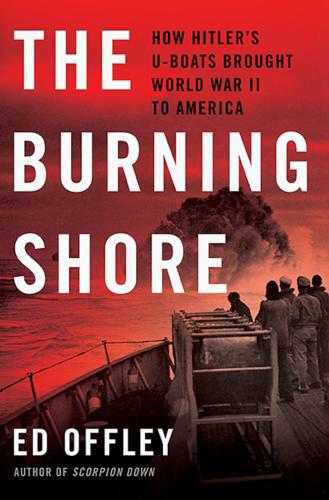
The Burning Shore: How Hitler's U-Boats Brought World War II to America
by
Ed Offley
Published 25 Mar 2014
On the eve of war in July 1939, the Poles gave one of them to the British, who rushed it to a guarded estate fifty miles northwest of London called Bletchley Park, where the newly organized Government Code and Cypher School was scrambling to penetrate German military communications. In late 1939, the British designed the prototype of what they would call a “bombe,” a fast electromechanical machine duplicating the Enigma wiring design. Entering service in March 1940, the bombe solved the Enigma rotor settings mechanically, which then allowed cryptanalysts to break the messages into clear text. By August 1941, Bletchley Park was decrypting most naval Enigma traffic within thirty-six hours.
…
BdU—Befehlshaber der Unterseeboote; commander-in-chief of U-boats (Admiral Karl Dönitz); the abbreviation was also commonly used to identify the admiral’s staff or U-boat Force Headquarters. BdU Zug—Special passenger train for U-boat personnel on leave. Bletchley Park—A mansion and grounds northwest of London in Buckinghamshire, England, officially termed the Government Code and Cypher School, where cryptanalysts “broke” intercepts of encrypted German wireless radio traffic. Bombe—Nickname for the electromechanical device at Bletchley Park used to solve the German Enigma cipher key settings. CNO—Chief of naval operations; the senior uniformed officer in the US Navy. Prior to World War II, the CNO was the service’s chief planner but subordinate to the commander-in-chief, US Fleet, at the time the highest-ranking admiral.
…
Winn and his staff then passed carefully sanitized intelligence reports to the Admiralty Trade Division and to Western Approaches Command in Liverpool. Using that information, Admiral Percy Noble and his operations staff guided convoys at sea in eluding the wolf packs and warships in hunting them down.4 By the end of 1941, the staff at Bletchley Park had grown to over 1,500 mathematicians, linguists, cryptanalysts, and clerks, all laboring around the clock. The staff targeted communications from all German bodies—ranging from the Luftwaffe and Wehrmacht to the Schutzstaffel (SS, Defense Corps)—but one of their highest priorities, given the crucial stakes at hand in the Battle of the Atlantic, remained attacking the encrypted Enigma messages between Admiral Dönitz’s headquarters in Lorient and his U-boats at sea.

12 Bytes: How We Got Here. Where We Might Go Next
by
Jeanette Winterson
Published 15 Mar 2021
A computer uses electricity. Signals travel at high speeds through the nervous system (neurons fire 200 times a second, or 200 hertz) but computer processors are measured in gigahertz – billions of cycles per second. We know how fast computers are at calculation – that’s how it all started, back in Bletchley Park in World War Two, when the human teams just couldn’t calculate fast enough to crack the German Enigma codes. Computers use brute force to process numbers and data. In time terms, they can get through more, faster. Acceleration has been the keyword in our world since the Industrial Revolution.
…
Fun though it was to play at building a coal-fired, steam-powered, punched-card computermade out of tons of metal, this was not the answer to the instant and elegant universe of numbers where Ada and Babbage lived. But elegance was still a long way off. * * * In 1944 (not 1844) the world’s first electronic digital computer – Colossus – built by a British team in World War Two, and housed in Bletchley Park, measured 7ft high by 17ft wide and 11ft deep. It weighed 5 tonnes, was made out of 2,500 valves, 100 Logic Gates and 10,000 resistors connected by 7km of wiring. Actually, the existence of this computer set was kept secret until the 1970s, so the American-built ENIAC (Electronic Numerical Integrator And Computer) often takes the title of ‘first’, arriving in 1946.
…
Set against that thought is the fact that the biggest touring bands in the world are still old-fashioned (and increasingly old-aged) guys who write their music and play their instruments. But this is probably the end of an era. As David Cope puts it: ‘The question isn’t whether computers possess a soul but if we possess one.’ * * * Alan Turing, the British mathematician who designed and built the Enigma code-breaking machine at Bletchley Park (Turing was played by Benedict Cumberbatch in the movie The Imitation Game), wasn’t interested in whether or not a computer could have, or would have, a soul, but he was interested in whether or not a computer could originate (as well as learn) independently of human input. Turing took issue with Ada Lovelace on this matter – though again we have to remember that he took issue 110 years after her statement that a computer could not originate anything (not the same thing as arriving at the right answer by itself, by means of Boolean programming – Ada was thinking about the leap-capacity of human intelligence, something she didn’t believe a computer would ever demonstrate).

In Our Own Image: Savior or Destroyer? The History and Future of Artificial Intelligence
by
George Zarkadakis
Published 7 Mar 2016
But to get from the Analytical Engine to modern computers required a giant leap in the early 1940s, as the British and the Americans fought the Germans in the Atlantic. Turing’s bombe cannot be considered a precursor of modern computer architecture. However, there was another machine designed and built at Bletchley Park that could. Tommy Flowers (1905–1998) was a friend of Turing and a colleague of his at Bletchley Park. He and his team were assigned the task of breaking another German cipher called ‘Lorenz’, used by the German High Command to send messages to its field commanders. Flowers designed and built ‘Colossus’, the world’s first programmable electronic computer.
…
THE HISTORY and FUTURE of ARTIFICIAL INTELLIGENCE GEORGE ZARKADAKIS CONTENTS Introduction PART I: DREAMING OF ELECTRIC SHEEP 1The birth of the modern mind 2Life in the Bush of Ghosts 3The mechanical Turk 4Loving the alien 5Prometheus unbound 6The return of the gods PART II: THE MIND PROBLEM 7A blueprint for a universe 8Minds without bodies 9La Résistance 10Peering into the mind 11The cybernetic brain PART III: ADA IN WONDERLAND 12‘All Cretans are liars’ 13The program 14From Bletchley Park to Google Campus 15Machines that think 16Darwin at the edge of chaos Epilogue: The future of humanity Timeline: A Brief History of Artificial Intelligence Notes Acknowledgements Index INTRODUCTION I met my first robot when I was five. It was a warm summer evening in Athens when my mother took me to an open-air cinema close to our house.
…
What was missing was a singular event, a spark, and for affluent societies to begin investing heavily both financially and intellectually in these formidable number-crunching machines. That spark ignited on 1 September 1939, when Hitler’s Wehrmacht crossed the eastern borders of Germany and invaded Poland. 14 FROM BLETCHLEY PARK TO GOOGLE CAMPUS In the years since the outbreak of war in Europe in 1939, the world has changed in unimaginable ways. Countries’ borders have been redrawn. Totalitarian regimes have all but disappeared. Even China has adopted a mixed economic model, and only North Korea lingers as a reminder of the tragicomic extravagances of communism.

Turing's Cathedral
by
George Dyson
Published 6 Mar 2012
Colossus, trained to sense the direction of extremely faint gradients that distinguished enciphered German from random alphabetic noise, was the distant progenitor of the search engine: scanning the Precambrian digital universe for fragments of the missing key, until the pieces fit. It was the alumni of Bletchley Park who were first to demonstrate a working stored-program computer (the Manchester Small Scale Experimental Machine, which ran its first program on June 21, 1948) and first to construct a kilobit-scale electronic memory (the electrostatic Williams tube). But the driving force behind computer development had shifted across the Atlantic, from the logical puzzle of cryptanalysis to the numerical design of hydrogen bombs. When Bletchley Park disbanded, the Official Secrets Act handicapped those who could not refer openly to their wartime work.
…
If the recipient had an identical machine, with the exact same rotors placed in the same starting positions, the function could be executed in reverse, producing deciphered text. In September of 1939, Turing joined the Foreign Office’s Government Code and Cypher School, sequestered at a Buckinghamshire estate known as Bletchley Park. Their mission was to break the Enigma codes, now modified by the German military authorities, who had introduced new rotor configurations and were frequently changing the keys. For top-secret communications, especially with the U-boat fleet, an additional rotor position was added as well as an auxiliary plugboard that further scrambled ten pairs of letters, leaving only six letters unchanged.
…
(Jack) Good, who signed on as Turing’s statistical assistant, at the age of twenty-five, in May 1941.30 For the three-rotor Enigma a brute-force trial-and-error approach would have to test about a thousand states per second to run through all possible configurations in the three billion years since life appeared on Earth. A brute-force approach to the four-rotor Enigma would have to test about two hundred thousand states per second to be assured of a solution in the fifteen billion years since the known universe began. Bletchley Park eventually succeeded in deciphering a significant fraction of intercepted Enigma traffic within a few days or sometimes hours before the intelligence grew stale. This success was a product of intuition and ingenuity on the part of the British aided by human error on the other side. “When the war started probably only two people thought that the Naval Enigma could be broken,” explained Hugh Alexander, in an internal history written at the end of the war.
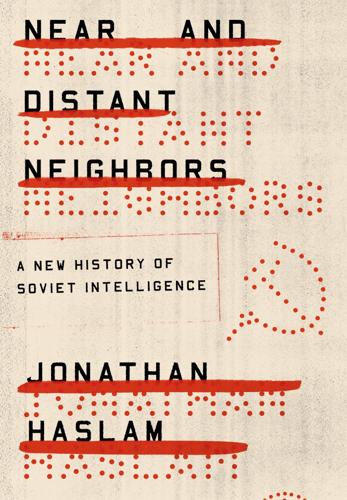
Near and Distant Neighbors: A New History of Soviet Intelligence
by
Jonathan Haslam
Published 21 Sep 2015
The most important among the new sections were those devoted to Germany, Japan, Britain, and the United States.7 Japan was very important as a potential adversary, but Germany was critical. Moscow was too far behind in electronics even to consider doing what London was doing on a massive scale at GC&CS in Bletchley Park. The British could test Enigma’s permutations at a rate of a thousand per minute. The Russians, on the other hand, had to rely for decrypts upon Cairncross, who had been at Bletchley Park since March 1942, but he did not have access to material on the Eastern Front until April 1943. Also, they were crucially dependent on the agent “Dolly” (one of few as yet unidentified, working for Soviet military intelligence) at the War Office, who gave the Russians access to Japanese diplomatic decrypts initially and, later, to German military decrypts on a vast scale throughout the latter half of the war.8 Technological backwardness meant that the Russians had no hope of winning the decryption race,9 and not until the end of the decade were top mathematicians in the Soviet Union drawn into code and cipher cracking.10 Instead, the Russians had to make do with human intelligence.
…
Training was inadequate—new recruits for the most part benefited only from a basic secondary education—the Soviet cryptographers were cut off entirely from their counterparts elsewhere, and they conducted no fundamental research. After 1945, when the Russians finally learned the sheer scale of the vast enterprise that GC&CS had established at Bletchley Park, midway between Oxford and Cambridge, and its focus on mechanising decryption, they were completely stunned.27 An uneasy sense of backwardness reasserted itself with a vengeance. The preventive war with Finland (November 1939 to April 1940) exposed the Soviet régime’s deep-seated military failings.
…
The absence of a research and analysis directorate was finally to be remedied, but under joint leadership from the GRU and the NKGB.25 Clearly Stalin’s failure to heed incoming intelligence, which he held entirely within his own hands, now obliged him to spread responsibility more widely; though, ultimately, of course, there was nothing to stop his reverting to old habits, which, indeed, is exactly what he did by by the end of the war. While working for Chancellor of the Duchy of Lancaster Lord Hankey, Cairncross (“Liszt”) had managed to avoid army service by currying favour with a contact, Colonel Nicolls, to secure employment at Bletchley Park early in August 1942. He worked translating Luftwaffe decrypts. A breakthrough occurred when he sent word that Germany was determined to avenge its defeat at Stalingrad by launching a massive offensive called Operation Citadel in the region of Kursk and Oryol’.26 In April 1943, Dolly reported Churchill’s call for information on German plans for Kursk.
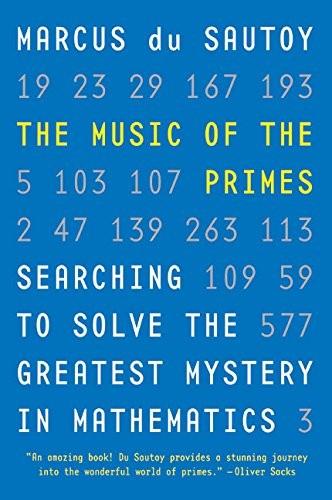
The Music of the Primes
by
Marcus Du Sautoy
Published 26 Apr 2004
The evidence that has emerged in the fifty years since the war has in Selberg’s view become quite overwhelming. But it was the war, and in particular the code-breakers at Bletchley Park, that were responsible for the development of the machine that would generate this new evidence: the computer. CHAPTER EIGHT Machines of the Mind I propose to consider the question, ‘Can machines think?’ Alan Turing, Computing Machinery and Intelligence Alan Turing’s name will always be associated with the cracking of Germany’s wartime code, Enigma. From the comfort of the country house of Bletchley Park, halfway between Oxford and Cambridge, Churchill’s code-breakers created a machine which could decode the messages sent each day by German intelligence.
…
The onset of the Second World War saw this burgeoning intellectual unity between the two countries replaced by military conflict. British intellectual forces were rallied at Bletchley Park, and minds turned from finding zeros to cracking codes. Turing’s success in designing machines to crack Enigma owes something to his apprenticeship calculating the zeros of the Riemann zeta function. His complex mesh of interlocking gear wheels hadn’t uncovered the secrets of the primes, but Turing’s new contraptions would prove to be spectacularly successful in revealing the secret movements of the German war machine. Bletchley Park was a strange mix of the ivory tower and the real world. It was like a Cambridge College, with games of cricket played on the front lawn; for Turing and company, cosseted in their country retreat, the encoded messages that arrived each day were a substitute for doing the Times crossword in a Cambridge common room.
…
It was while at Bletchley that Turing came to understand, as Babbage had some hundred years before, that it was better to construct a single machine that could be told to do different tasks rather than build a completely new one for each new problem. Although he already knew this in principle, he was to learn the hard way that this should be implemented in practice too. When the Germans changed the designs of the Enigma machines being used in the field, Bletchley Park was plunged into weeks of silence. Turing realised that the code-breakers needed a machine that could be adapted to cope with any change the Germans might make to their machines. After the war had finished, Turing began to explore the possibility of building a universal computing machine that could be programmed to perform a multitude of tasks.
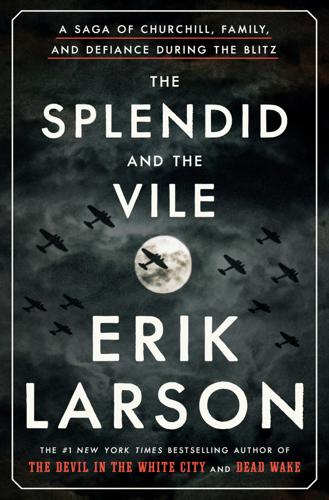
The Splendid and the Vile: A Saga of Churchill, Family, and Defiance During the Blitz
by
Erik Larson
Published 14 Jun 2020
This had already proved the case with radar, a happy by-product of far less successful research into the feasibility of creating a “death ray” capable of destroying aircraft outright. Likewise, the British were becoming adept at intercepting and decrypting Luftwaffe communications, these processed at Bletchley Park, the ultrasecret home of the Government Code and Cypher School, where codebreakers had cracked the secrets of the German “Enigma” encryption machine. Lindemann had previously run an Admiralty office established to provide Churchill, as first lord, with as rich a grasp as possible of the day-to-day readiness of the Royal Navy.
…
As the meeting came to a close, Jones changed the subject. Something had happened earlier that day that troubled him. A colleague, Group Captain L. F. Blandy, head of the RAF unit responsible for listening in on German radio transmissions, had given Jones a copy of a Luftwaffe message deciphered at Bletchley Park. “Does this mean anything to you?” Blandy had asked. “It doesn’t seem to mean much to anybody here.” The message was brief, and included a geographic position rendered in latitude and longitude, along with what appeared to be two German nouns, Cleves and Knickebein. As best Jones could make out, the message, translated, said: “Cleves Knickebein is confirmed [or established] at position 53° 24' north and 1° west.”
…
Jones pointed out that this could indicate “an intention to land motorized AA units in both England and Ireland.” Such a force would be necessary to help an invading army protect itself from the RAF and consolidate its hold on captured ground. Churchill knew that the “unimpeachable source” was not in fact a human spy but, rather, the elite codebreaking unit at Bletchley Park. He was one of the few senior officials in Whitehall who knew of the unit’s existence; Jones, as deputy director of Air Intelligence, also knew. Bletchley’s secrets were delivered to Churchill in a special yellow dispatch box, separate from his regular black box, that only he was authorized to open.

Code Dependent: Living in the Shadow of AI
by
Madhumita Murgia
Published 20 Mar 2024
While AI technology has become a global regulatory priority in the past year, the issues being discussed are primarily around security risks of sophisticated AI systems, including their ability to assist in the design of bio-weapons, the spread of AI-generated misinformation in the political areas, and impact on democracy. Other areas of the law being examined include issues of copyright violation by generative AI software, since the systems require the use of copyrighted words, images, voices and likenesses of creative professionals for their training. At an inaugural summit held in the UK’s Bletchley Park mansion last November, state leaders spoke of the need to legislate on AI safety: the practice of designing algorithmic systems that aren’t discriminatory and unethical, that can’t be co-opted to commit crimes, and in the far future, superhuman technologies that don’t harm humanity. Against this backdrop of complexity, global political leaders, who are overwhelmingly male,18 simply haven’t prioritized the rising prevalence of deepfakes, Clare said.
…
Eighty-nine-year-old Sheikh bin Bayyah of the UAE, recognized by Muslims as one of the greatest living scholars on Islamic jurisprudence, said the current era suggested the writings of the Arab poet Abu al-Fath al-Busti, who had likened human innovation to the silkworm’s self-annihilation. Man toils like the silkworm which spends its life weaving, only to perish, confused, inside its woven creation. Their worries mirrored questions being asked by lawmakers around the world, as AI software has grown and spread across the global economy over the past year. I spent two days in Bletchley Park, the UK hub for codebreakers during the Second World War, last November, where state representatives of two dozen nations, from India, Brazil and Nigeria to China, the United States and the European Union, came together with leaders of all the major AI companies including OpenAI, Google DeepMind and Microsoft to discuss these very issues.
…
Index Abeleira, Carlos (Charlie) ref1, ref2, ref3, ref4, ref5, ref6, ref7, ref8 Abeleira, Pablo ref1, ref2, ref3, ref4, ref5, ref6 abortion ref1, ref2, ref3, ref4, ref5, ref6, ref7 Abrahamic religions ref1, ref2, ref3 Accenture ref1, ref2 Accredited Social Health Activists (ASHAs) ref1, ref2, ref3 adivasis (indigenous people) ref1 Afghanistan ref1, ref2, ref3 African Americans ref1 over-policing of ref1 pain and ref1 agency AI systems impinging on ref1, ref2 Bandura’s description of ref1, ref2 checklist of guiding questions to help reclaim ref1 China, fight to reclaim within ref1, ref2, ref3 collective agency, AI systems lead to strengthening of ref1 data workers and ref1, ref2, ref3 facial recognition and ref1, ref2, ref3 gig workers and ref1, ref2, ref3 growing wellspring of people fighting to recoup collective ref1, ref2, ref3, ref4 healthcare and ref1, ref2 illusion of ref1 pregnant girls and ref1 proxy agents and ref1, ref2 Ajder, Henry ref1, ref2 Alexa ref1, ref2 alignment, AI ref1 algor-ethics and ref1, ref2 Bletchley Park summit (2023) ref1, ref2, ref3 guiding questions checklist ref1 Rome Call ref1 algorithms agency and see agency algor-ethics and ref1, ref2 autonomy and ref1 bias and ref1, ref2 data ‘colonialism’ and ref1 deepfakes and ref1, ref2, ref3 diagnostic ref1, ref2, ref3, ref4, ref5, ref6, ref7, ref8, ref9 discriminatory and unethical ref1 exam grades and ref1 facial recognition ref1, ref2, ref3, ref4, ref5, ref6 ‘fuck the algorithm’ ref1 GANs and ref1 gig-work and ref1, ref2 hateful content and ref1 military targeting and ref1 organ-allocation and ref1 policing and ref1, ref2, ref3, ref4, ref5 social media ref1, ref2 teenage pregnancy and ref1, ref2, ref3, ref4, ref5, ref6, ref7 training ref1, ref2, ref3 UK government use of ref1 working conditions impact quality of ref1 Xinjiang and ref1, ref2, ref3, ref4 Ali, Altab ref1 Alphabet ref1 al Qaeda ref1 Altab Ali Park ref1 Alzheimer’s disease ref1 Amare, Meareg ref1 Amazon ref1 AI diagnostics and ref1 Alexa ref1, ref2 Echo ref1 warehouse workers ref1, ref2, ref3 Web Services ref1 Amnesty International ref1, ref2, ref3, ref4 Amsterdam predictive policing systems in ref1, ref2, ref3, ref4 Uber ruling in ref1, ref2 Andrade, Norberto ref1 Aneja, Urvashi ref1, ref2, ref3, ref4, ref5, ref6 Anthropic ref1 antitrust law ref1 Apostolic Palace, Rome ref1, ref2 App Drivers and Couriers Union ref1, ref2 Appen ref1 Apple ref1, ref2 Aravind Eye Hospital ref1 Arbusta ref1, ref2 Argent ref1 Argentina app delivery platforms in ref1 data-workers in ref1 teenage pregnancy in ref1, ref2, ref3, ref4 Argo.ai ref1 Arrival (film) ref1, ref2 artificial intelligence (AI) algorithms see algorithms alignment/ethics see alignment, AI data annotation/data-labelling see data annotation/data-labelling deepfakes and see deepfakes facial recognition and see facial recognition future of and see China generative AI see generative AI gig workers and see gig workers growth of ref1 healthcare and see healthcare policing and see policing regulation of see regulation teenage pregnancy and see pregnancy, teenage term ref1 Aslam, Yaseen ref1 AstraZeneca ref1 ‘Attention Is All You Need’ (paper) ref1, ref2 automation ref1, ref2, ref3, ref4 Ayup, Abduweli ref1 Azure software ref1, ref2 Bandura, Albert ref1, ref2 Bard ref1 Bayyah, Sheikh bin ref1 B-corp ref1 Benanti, Paolo ref1, ref2, ref3 Bender, Emily ref1 Berk, Richard ref1 Berlin ref1, ref2, ref3, ref4, ref5 Bezos, Jeff ref1 Bhil tribe ref1, ref2, ref3, ref4, ref5, ref6, ref7 bias ref1, ref2, ref3, ref4, ref5 automation ref1 confirmation ref1 facial recognition technologies and ref1 health technologies and ref1 predictive policing and ref1, ref2 racial see race teenage pregnancy and ref1 Big Tech ref1, ref2, ref3, ref4, ref5, ref6, ref7, ref8 Bing ref1 bioethics ref1 Birhane, Abeba ref1 blacklists ref1, ref2 Black Lives Matter ref1 Black Mirror ref1, ref2 Blem (Ghanaian-British entrepreneur) ref1, ref2 Bletchley Park summit (2023) ref1, ref2, ref3 Bletchley Declaration ref1, ref2 Bloomberg ref1 Bokinni, Yinka ref1 Bolt ref1, ref2 Bouvard, Laurence ref1, ref2 Bravo, Ivan ref1 Bridges, Ed ref1 Bridle, James ref1, ref2, ref3 Budweiser ref1 Buenos Aires ref1, ref2, ref3, ref4, ref5 Bulgaria ref1, ref2 Bulger, Whitey ref1 ‘bullshit jobs’ ref1 Buolamwini, Joy ref1, ref2 Burgess, Rick ref1 al-Busti, Abu al-Fath ref1 Cameroon ref1, ref2 Camofleurs ref1 Can You Forgive Me app ref1 Cant, Callum ref1 Capitol riot, US (2021) ref1 cars, self-driving ref1, ref2, ref3, ref4, ref5, ref6, ref7 Cast Away (film) ref1 Castile, Philando ref1 Catholic Church ref1, ref2, ref3, ref4, ref5, ref6, ref7, ref8, ref9 Cattaneo, Paula ref1 Caucasians ref1, ref2, ref3 CCTV Amsterdam ref1 India ref1, ref2 London ref1 Uganda ref1 Xinjiang ref1 Central St Martins ref1 CGI ref1 Channel 4 ref1 ChatGPT ref1, ref2 ‘ChatGPT Is a Blurry JPEG of the Web’ ref1 deep learning and ref1 generative AI and ref1 language used to describe ref1 lawyers and ref1 origins and launch of ref1 Sama and ref1, ref2, ref3 transformer and ref1 chemical structures ref1 Chiang, Ted ref1 ‘ChatGPT Is a Blurry JPEG of the Web’ ref1 ‘Story of Your Life’ ref1 The Lifecycle of Software Objects ref1 Chien-Shiung Wu ref1 China ref1 Covid-19 and ref1, ref2, ref3 deepfakes in ref1 dissidents in ref1, ref2 facial recognition in ref1, ref2, ref3, ref4, ref5, ref6, ref7, ref8 gig workers in ref1, ref2, ref3, ref4 Integrated Joint Operations Platform (IJOP) ref1, ref2 One Card System ref1 Tiananmen Square massacre (1989) ref1, ref2, ref3, ref4 video game artists ref1 Xinjiang, Uyghur Muslims in ref1, ref2, ref3 China Electronics Technology Group Corporation (CETC) ref1 Chinchpada, India, healthcare AI in ref1 Chinchpada Christian Hospital, India ref1 Chinese Communist Party ref1, ref2 CIA ref1 Claude ref1 Clearview AI ref1 Coca Cola ref1 collective bargaining ref1 colonialism ref1, ref2, ref3, ref4, ref5 data colonialism ref1, ref2, ref3, ref4, ref5, ref6, ref7, ref8, ref9, ref10 divide and rule and ref1 gig workers and ref1 resource extraction ref1 technology companies as monopolistic quasi-states ref1 Communications Decency Act, Section ref1 ref1 COMPAS ref1, ref2 Conin ref1, ref2, ref3, ref4 content moderators ref1, ref2, ref3, ref4, ref5, ref6 cookies ref1 Couldry, Nick: The Costs of Connection ref1 Covid-19 ref1, ref2, ref3, ref4, ref5, ref6 AI labelling and ref1 China and ref1 diagnostic algorithms ref1, ref2 exam results during ref1 social media algorithms and ref1 CPI Libertad ref1 Crawford, Kate ref1 creativity ref1, ref2, ref3, ref4 credit-rating agencies ref1 Crider, Cori ref1 Crime Anticipation System (CAS) ref1 culture of secrecy/climate of fear ref1 Curling, Rosa ref1 CV Dazzle ref1 DaimlerChrysler ref1 Dall-E ref1, ref2 Dalrymple, William: The Anarchy ref1 Daoud, Abdullah ref1, ref2 Daoud, Ghazwan ref1, ref2, ref3, ref4, ref5 Daoud, Hiba Hatem ref1, ref2, ref3, ref4, ref5, ref6, ref7 Dark, Martha ref1 Dasgupta, Rana ref1 Dashcam For Your Bike ref1 data annotation/data-labelling ref1 Humans in the Loop ref1, ref2, ref3, ref4 Sama ref1, ref2, ref3, ref4, ref5, ref6, ref7 wages ref1, ref2, ref3, ref4, ref5, ref6 workin conditions impact quality of algorithms ref1 data brokers ref1, ref2 data colonialism ref1, ref2, ref3, ref4, ref5, ref6, ref7, ref8, ref9, ref10 Dazzle Club ref1 De Moeder Is De Sleutel (The Mother Is the Key) ref1 deathworlds ref1, ref2 Decentraland ref1 ‘#DeclineNow’ ref1 deepfakes ref1, ref2, ref3, ref4, ref5 Can You Forgive Me app ref1 data colonialism and ref1 DeepNude ref1 DreamTime ref1 GANs and ref1 Goldberg and fighting ref1, ref2 Martin and ref1, ref2, ref3, ref4, ref5, ref6, ref7 metaverse ref1 Mort and see Mort, Helen nudes-for-hire services ref1 Online Safety Bill and ref1 origins and rise of ref1 PimEyes ref1 regulatory change ref1, ref2, ref3, ref4, ref5, ref6, ref7, ref8, ref9, ref10 term ref1 WITNESS and ref1 deep learning ref1, ref2, ref3 DeepMind ref1, ref2, ref3, ref4 DeepNude ref1 Deliveroo ref1, ref2, ref3, ref4 Department for Work and Pensions ref1 Department of Defense ref1, ref2 diffuse policing ref1 digital colonialism ref1, ref2 Digital Geneva Convention (2017) ref1 Disney ref1 dissidents, Chinese ref1, ref2 divide et impera (divide and rule) ref1 domestic violence ref1, ref2, ref3 DoorDash ref1, ref2, ref3 Douglass, Frederick ref1 DreamTime ref1 driver profiles ref1 Driver’s Seat Cooperative ref1 ‘driving while black’ ref1 drones ref1, ref2, ref3, ref4 Dryhurst, Mathew ref1 East India Company ref1, ref2 el chineo (gang rape) ref1 Ele.me ref1 Electronic Frontier Foundation ref1 Emmanuel Trust ref1 Entregadores Anti-fascistas (Anti-Fascist Couriers) ref1 ethics, AI ref1, ref2, ref3 alignment, AI ref1 algor-ethics and ref1, ref2 Bletchley Park summit (2023) ref1, ref2, ref3 guiding questions checklist ref1 ‘humanist’ ref1 Rome Call ref1 Ethiopia ref1, ref2, ref3 Eubanks, Virginia ref1 European Union ref1, ref2, ref3, ref4, ref5 Artificial Intelligence Act, draft ref1 exam grades ref1 Experian ref1 exports, AI Surveillance ref1, ref2 Eyeota ref1 fabricated sentences ref1 Face++ ref1 Facebook content moderators and ref1, ref2 deepfakes and ref1, ref2, ref3, ref4, ref5 gig workers and ref1 metaverse and ref1, ref2 ‘move fast and break things’ motto ref1 NDAs and ref1, ref2 online hatred and ref1 Sama and ref1, ref2, ref3, ref4 see also Meta facial recognition ref1, ref2, ref3, ref4 Camofleurs and ref1 CCTV and ref1 China and ref1, ref2, ref3, ref4, ref5, ref6, ref7, ref8 confirmation bias and ref1 databases of faces ref1 Dazzle Club/dazzle camouflage techniques and ref1 exporting technologies ref1, ref2 gig workers and ref1, ref2, ref3, ref4 origins of ref1 racial bias and ref1, ref2, ref3, ref4, ref5 regulating ref1 super-recognizers ref1 Fair Trials ref1, ref2 Fallujah, Iraq ref1, ref2 Farrar, James ref1, ref2 Financial Times ref1, ref2, ref3 Floyd, George ref1 forgiveness ref1, ref2, ref3 Forster, E.

Britain at Bay: The Epic Story of the Second World War: 1938-1941
by
Alan Allport
Published 2 Sep 2020
If any image of the Battle of the Atlantic has impressed in the public imagination in recent years, it’s one of eccentric professors sitting in damp huts in an English country house garden, fighting the German submariners with tables of incomprehensible mathematical formulae and primitive mechanical computers. The image in question is, of course, Bletchley Park, the Buckinghamshire mansion that was the home to the wartime Government Code and Cypher School (GC&CS). GC&CS was the top-secret organisation that broke the German ENIGMA wireless cypher in 1940, and thus provided throughout the rest of the war a unique window into Nazi strategy. Known as ULTRA, the Bletchley Park intelligence programme included, among other things, key information on U-boat movements, allowing the Admiralty to re-route Atlantic convoys safely out of danger.
…
They are all in this room,’ one of his awed colleagues says to Turing at one point in the film. Was it Bletchley Park, then, that turned things around in the Atlantic in 1941? On the face of it, it might appear so. On 9 May 1941, east of Greenland’s Cape Farewell, U-110 (commanded by Fritz-Julius Lemp, the captain who had sunk the liner SS Athenia on the day war broke out) was detected on ASDIC by a British destroyer and depth-charged to the surface. A Royal Navy boarding party retrieved the submarine’s ENIGMA machine and codebooks before she sank. These documents, in conjunction with materials taken from German meteorological ships around the same time, provided Bletchley Park with a vital insight into ‘Dolphin’, the particular form of ENIGMA cipher used for U-boat signals traffic between Dönitz’s headquarters and boats at sea.
…
September saw a brief re-escalation in Rudeltaktik attacks, but then there was a further drought until the end of the year. The correlation between Bletchley Park’s success and Dönitz’s failure in 1941 seems clear. But what was going on was rather more complicated than just a cryptanalytical miracle. Ship re-routings prompted by ULTRA warnings certainly helped to reduce loss rates in 1941. But monthly losses of merchantmen in the North Atlantic started to fall in April, a month before U-110’s codebooks were delivered into the hands of Turing’s men. Gross tons sunk per U-boat at sea had already started to decline in March. Bletchley Park’s breakthrough with Dolphin had only accelerated a shift in fortunes that had begun already.72 What brought the ‘happy time’ in the Atlantic to an end was not code-breaking genius but a ruder assembly of military matériel: more (and better) escorts; more (and better) aircraft; and, eventually, more (and better-protected) convoys.
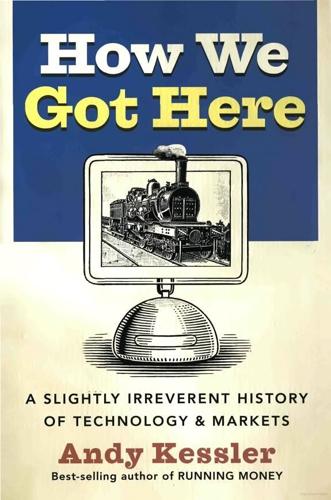
How We Got Here: A Slightly Irreverent History of Technology and Markets
by
Andy Kessler
Published 13 Jun 2005
Using Edison effect tubes and relays and other forms of logic and memory, scientists and engineers invented electronic computers to help win World War II. John von Neumann at the Moore School at the University of Pennsylvania designed the ENIAC digital computer, the birth mother of the U.S. computer industry, to speed up calculations for artillery firing tables for Navy guns. At the same time, Alan Turing and the British at Bletchley Park designed the Colossus computer to decipher Enigma codes. A host of electronic devices at Los Alamos helped speed up difficult calculations to control the reaction of uranium-235 for the atomic bomb. It is the very pursuit of those weapons that created huge commercial markets, and vice versa. Lasers emerged as researchers cranked up the frequency of radar microwaves to avoid fog.
…
Alan Turing, a mathematician from Cambridge and then Princeton, had written a thesis in 1934 on a Universal Machine that could figure out any algorithm depending on how it was programmed. In other words, he conceptualized the stored-program computer with programmable instructions, rather than a fixed-purpose machine. When war broke out, Turing, who had returned to Cambridge, was sent to the infamous Hut 8 at Bletchley Park to help break codes. By January 1940, with the help of Bomba, the Enigma code was broken. But the decoding work was all done by hand, which meant it would take several days to break the daily code, and by then, there was a huge pile of messages waiting to be deciphered. Turing figured out a short cut.
…
Two London-based post office engineers, Tommy Flowers and Alan Coombes, improved on the Robinson, more than doubling the speed, by using 2400 vacuum tubes and a number of servomotors, instead of relays and fragile paper tape. But it was still a Turing machine. Its name was Colossus, a mighty name, and it was moved to 114 HOW WE GOT HERE Bletchley Park and started operating in December 1943. It had both logic and memory and since it could change its program based on which code needed to be deciphered, it was a true Turing programmable computer. The Allies relied on the Colossus to help determine Nazi troop concentrations and the best D-Day landing points. *** But in 1945, after VE and VJ days and the end of the war, we all know what happened next.

The Fire and the Darkness: The Bombing of Dresden, 1945
by
Sinclair McKay
G., The War in the Air Weser, Arno West Germany see Federal Republic of Germany Wilhelm II, Kaiser Winchester College ‘Window’ (radar counter-measure) Windsor, Edward, Duke of (earlier King Edward VIII) Windsor, Wallis, Duchess of Windsor Castle wireless operators Wisconsin, wildfires women: finishing schools for young ladies; forced labour; pregnant mothers; Red Army atrocities against; relations with Allied aircrews Women’s Royal Navy Service (Wrens) Woolf, Virginia Workers’ and Soldiers’ Council Würzburger (brewery company) Yalta Conference (February 1945) yellow star badges (for Jews) Yokohama York Zeiss Ikon (camera manufacturers) Zeus (Greek god) Zhukov, Georgy zones of occupation (post-war Germany) zoos and zoo animals Zweig, Stefan; collaboration with Strauss Zwinger Palace (Dresden); bells; galleries About the Author SINCLAIR MCKAY is the bestselling author of The Secret Life of Bletchley Park, The Secret Listeners, Bletchley Park Brainteasers, and Secret Service Brainteasers. He is a literary critic for the Telegraph and The Spectator and lives in London. You can sign up for email updates here. Thank you for buying this St. Martin’s Press ebook. To receive special offers, bonus content, and info on new releases and other great reads, sign up for our newsletters.
…
His superior noted his reluctance coolly and wrote detailed letters explaining why he thought he was wrong. In one of these, Portal tried to impress upon Harris the effectiveness of oil-plant targeting: he had ‘a dossier of “Ultra” information’ (decrypts from the British Government Code and Cypher School at Bletchley Park) gleaned from the aftermath of attacks. ‘My dear Harris,’ Portal wrote, using his habitual salutation, ‘If cities, once attacked, were entirely destroyed, the chances would be better; but as you yourself admit, cities recover their industrial output … in four or five months.’ After all those months of hitting cities, ‘there is no evidence she [Germany] was [sic] near collapse’.16 Harris was hurt, especially as he was convinced that decisions were being taken in the Air Ministry that he was not party to.
…
Portal was keen to share his own praise: ‘I would like to say how pleased I was with the success of your recent attacks on oil targets.’20 He also tried to persuade Harris that – successful though he had been – Harris alone could not be expected to know exactly which targets would be most effectively destroyed, that some decisions had to be taken at the Air Ministry with full access to all intelligence. This meant from the codebreakers of Bletchley Park onwards. ‘No commander of a large strategic bomber force can possibly have time to study and appreciate the enormous number of military and economic factors involved in the selection of the best policy,’ wrote Portal. ‘He has more than a full-time job running his Command.’21 And at this point, Portal’s emollience was aimed at forestalling Harris’s furious exit.

Empire of the Sum: The Rise and Reign of the Pocket Calculator
by
Keith Houston
Published 22 Aug 2023
Arthur Tatnall and Christopher Leslie (Cham: Springer, 2016), 186–192. 6. the friden stw-10 1 Erwin Danneels, “Trying to Become a Different Type of Company: Dynamic Capability at Smith Corona,” Strategic Management Journal 32, no. 1 (January 1, 2011): 1–31, https://doi.org/10.1002/smj.863; “Company History” (Unisys), accessed May 28, 2021, https://www.unisys.com/aboutus/company-history; Frank Stephen Baldwin, “An Interview with the Father of the Calculating Machine” (Monroe Calculating Machine Company, 1919). 2 Martin, Kidwell, and Williams, The Calculating Machines, 23. 3 Robert Lewis, “Bletchley Park,” Encyclopaedia Britannica, 2016, https://www.britannica.com/place/Bletchley-Park; Andrew Hodges, “Turing, Alan Mathison (1912–1954), Mathematician and Computer Scientist,” Oxford Dictionary of National Biography, 2017, https://doi.org/10.1093/ref:odnb/36578. 4 Alan M. Turing, “On Computable Numbers, with an Application to the Entscheidungsproblem,” Proceedings of the London Mathematical Society s2-42, no. 1 (1937): 230–265, https://doi.org/10.1112/plms/s2-42.1.230; Alan M.
…
The development of the Curta, for instance, was driven by Herzstark’s desperate efforts to survive the Second World War even as millions of others perished. The same conflict would ultimately give rise to a new type of pocket calculator, although it would take decades for the lessons learned at the Manhattan Project in the United States, at Bletchley Park in England, and at other secretive projects around the world to come to fruition. In the meantime, the mechanical calculator was going nowhere. * At the time of writing, the £12 that Henry Brunel spent on his arithmometer equates to around £1,388, or $1,958, in today’s money. Not cheap, but broadly in line with the personal computers that populate offices and homes the world over
…
Many were made by stolid, familiar corporations that had become part of the business landscape: Smith Corona, best known for its typewriters; Burroughs, an adding machine pioneer founded in 1886; and Monroe, a maker of calculators based on an expired nineteenth-century patent.1 These were unexceptional machines for the most part, little advanced from the electrically driven arithmometers first built at the turn of the century, and the vast majority were capable only of the four fundamental arithmetical operations.2 And yet, by the mid-twentieth century, when the Curta was garnering attention but not sales, those same simple calculators had become the hardware on which ran great enterprises of commerce and science. They were the hardware and we, their human wranglers, were the software. Alan turing, the twentieth-century British mathematician, is known for many things. At Bletchley Park, a stately home that housed Britain’s government codebreakers, he masterminded the cracking of the German “Enigma” encryption scheme, a feat that may have shortened the Second World War by up to two years.3 Before the war, Turing had published a conceptual blueprint for all programmable electronic computers, later to be dubbed the “universal Turing machine.”
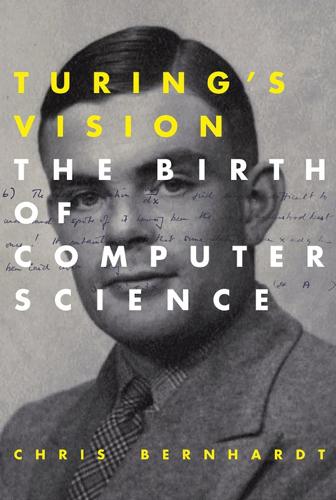
Turing's Vision: The Birth of Computer Science
by
Chris Bernhardt
Published 12 May 2016
It was Newman, a year later, who realized that Turing’s approach to computation was both highly original and important, and encouraged him to submit his paper for publication. Newman also wrote to the editor of the London Mathematical Society explaining what Turing had done and urged him to accept Turing’s paper for publication. During the war both Turing and Newman worked at Bletchley Park on code breaking. After the war, Newman would go on to found the Royal Society Computing Machine Laboratory at the University of Manchester, and would invite Turing to join this group. Turing would work at Manchester from 1948 until his death in 1954. Newman also helped Turing to make the decision to go to Princeton and work with Alonzo Church.
…
It very quickly became widely known among electrical engineers and influenced the design of all subsequent digital computers. Second World War After his time at Princeton, Turing returned to his position at Cambridge, but also started working on code breaking for the Government Code and Cipher School (GC&CS).6 When Britain declared war on Germany in September 1939, Turing moved to Bletchley Park, the wartime location of GC&CS, to work full time on cryptanalysis. Germany was using Enigma machines to encode and decode all of their military’s messages. These machines had a keyboard in which the operator typed letters. Their interiors contained a number of rotors. At the start of the encoding process, the operator had to insert the rotors in a certain order, then rotate them to the appropriate initial setting.
…
Turing wrote several articles on the application of probability to cryptography. These were classified and only now are being made available to the public (two papers were declassified in 2012. They are available at http://www.nationalarchives.gov.uk). 9. The English use the term valve where the Americans use vacuum tube. 10. The National Museum of Computing in Bletchley Park has reconstructed a Colossus. Visitors can see the machine running. 11. OBE stands for the Officer of the Order of the British Empire. This is a couple of levels down from a knighthood. 12. Mauchly and Eckert went to court several times trying to obtain patents, but were never successful. 13.
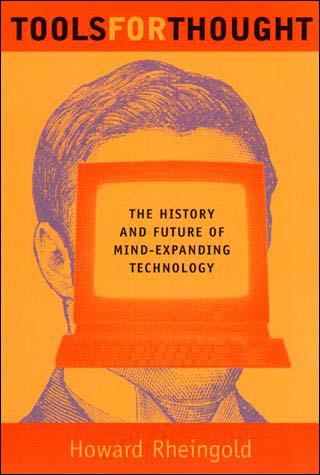
Tools for Thought: The History and Future of Mind-Expanding Technology
by
Howard Rheingold
Published 14 May 2000
Good, a prankster who once wrote Her Majesty the Queen suggesting that he be made peer of the realm, because then his friends would be forced to remark, "Good Lord, here comes Lord Good," when they saw him coming. The place known as Bletchley Park is far less famous than Omaha Beach, but many historians contend that the European war was won, in large part, in a closely guarded Victorian mansion in Hertfordshire, England, by the group of thinkers who succeeded in breaking the German code. The brilliant, young, unorthodox code-crackers were housed near Bletchley Park while they performed their role in the top-secret operation. One of the code breakers was twenty-eight-year-old Alan Turing. Turing was eccentric, fun-loving, disheveled, painfully honest, erratic, introspective, prodigiously and elegantly brilliant, and somewhat inept socially.
…
The bicycle and his habit of running twenty or thirty miles to attend a meeting were the objects of sundry anecdotes about "the Prof," as Turing was known around Bletchley. He was once detained by the local constable for bicycling around in a gas mask, which Truing claimed alleviated his hay fever. Turing and his colleagues at Bletchley Park ended up solving the Enigma enigma by devising a series of machines known as "bombes," "the Robinsons," and a culminating contraption known as "Colossus." Their purpose? To imitate "Enigma," of course! The Bletchley Park devices were by no means universal machines by Turing's 1936 definition, but they did use important aspects of Turing's ideas. Using high-speed devices for feeding instructions encoded on paper tapes, and electrical circuitry for performing simple but tedious logical operations upon coded messages, the decoding machines began operating in 1943.
…
Such dreams would have been akin to an Air Force officer wishing for a ten-thousand-mile-per-hour airplane, except for the fact that another new technology, one that only a few people even thought of applying to mathematical problems, looked as if it might make such a machine possible in theory, if only questionably probable in execution. Research in the young field of electronics had been uncovering all sorts of marvelous properties of the vacuum tube. Over in Great Britain, the whiz kids at Bletchley Park were using such devices in Colossus, their not-quite-computational code-breaking machine. Until the war, electronic vacuum tubes had been used almost exclusively as amplifiers. But they could also be used as very fast switches. Since the rapid execution of a large number of on/off impulses is the hallmark of digital computation, and vacuum tubes could switch on and off as fast as a million times a second, electronic switching (as opposed to the mechanical switching of Vannevar Bush's machine) was an unbelievably good candidate for the key component of an ultrafast computing machine.

I, Warbot: The Dawn of Artificially Intelligent Conflict
by
Kenneth Payne
Published 16 Jun 2021
Grasping the distinction between human and AI decision-making is essential for understanding how conflict will be shaped by the advent of sophisticated warbots. And so, in successive chapters, we’ll first explore the ways in which Artificial Intelligence and war have acted on one another, from the very beginning at Bletchley Park in the Second World War through to the present day. Then we’ll look ahead to the battlefield of the near future. It’s an environment where today’s AI will be extremely useful—its relentlessness, accuracy and speed of decision-making are invaluable assets. AI will prompt the invention of new equipment, and the development of new concepts through which these might be used.
…
That’s an observation to reflect on later, when we explore the possibility for using machine intelligence to predict, as an aide to human strategists. Architectures of warbot intelligence More capable warbots would need to be smarter than a V1. It wouldn’t take long. The Second World War prompted massive technological innovation, nowhere more so than in the fields of electronics and computing. The British codebreaking project at Bletchley Park led the way—most famously via the genius of Alan Turing. This astonishing polymath made several enormous contributions that bear on the story here. Most directly, his creation of mechanical, and then electronic code-breaking machines started the digital computing revolution. Today’s warbots run on computers first imagined by Turing.
…
A-10 Warthog abacuses Abbottabad, Pakistan Able Archer (1983) acoustic decoys acoustic torpedoes Adams, Douglas Aegis combat system Aerostatic Corps affective empathy Affecto Afghanistan agency aircraft see also dogfighting; drones aircraft carriers algorithms algorithm creation Alpha biases choreography deep fakes DeepMind, see DeepMind emotion recognition F-117 Nighthawk facial recognition genetic selection imagery analysis meta-learning natural language processing object recognition predictive policing alien hand syndrome Aliens (1986 film) Alpha AlphaGo Altered Carbon (television series) Amazon Amnesty International amygdala Andropov, Yuri Anduril Ghost anti-personnel mines ants Apple Aristotle armour arms races Army Research Lab Army Signal Corps Arnalds, Ólafur ARPA Art of War, The (Sun Tzu) art Artificial Intelligence agency and architecture autonomy and as ‘brittle’ connectionism definition of decision-making technology expert systems and feedback loops fuzzy logic innateness intelligence analysis meta-learning as ‘narrow’ needle-in-a-haystack problems neural networks reinforcement learning ‘strong AI’ symbolic logic and unsupervised learning ‘winters’ artificial neural networks Ashby, William Ross Asimov, Isaac Asperger syndrome Astute class boats Atari Breakout (1976) Montezuma’s Revenge (1984) Space Invaders (1978) Athens ATLAS robots augmented intelligence Austin Powers (1997 film) Australia authoritarianism autonomous vehicles see also drones autonomy B-21 Raider B-52 Stratofortress B2 Spirit Baby X BAE Systems Baghdad, Iraq Baidu balloons ban, campaigns for Banks, Iain Battle of Britain (1940) Battle of Fleurus (1794) Battle of Midway (1942) Battle of Sedan (1940) batwing design BBN Beautiful Mind, A (2001 film) beetles Bell Laboratories Bengio, Yoshua Berlin Crisis (1961) biases big data Bin Laden, Osama binary code biological weapons biotechnology bipolarity bits Black Lives Matter Black Mirror (television series) Blade Runner (1982 film) Blade Runner 2049 (2017 film) Bletchley Park, Buckinghamshire blindness Blunt, Emily board games, see under games boats Boden, Margaret bodies Boeing MQ-25 Stingray Orca submarines Boolean logic Boston Dynamics Bostrom, Nick Boyd, John brain amygdala bodies and chunking dopamine emotion and genetic engineering and language and mind merge and morality and plasticity prediction and subroutines umwelts and Breakout (1976 game) breathing control brittleness brute force Buck Rogers (television series) Campaign against Killer Robots Carlsen, Magnus Carnegie Mellon University Casino Royale (2006 film) Castro, Fidel cat detector centaur combination Central Intelligence Agency (CIA) centre of gravity chaff Challenger Space Shuttle disaster (1986) Chauvet cave, France chemical weapons Chernobyl nuclear disaster (1986) chess centaur teams combinatorial explosion and creativity in Deep Blue game theory and MuZero as toy universe chicken (game) chimeras chimpanzees China aircraft carriers Baidu COVID-19 pandemic (2019–21) D-21 in genetic engineering in GJ-11 Sharp Sword nuclear weapons surveillance in Thucydides trap and US Navy drone seizure (2016) China Lake, California Chomsky, Noam choreography chunking Cicero civilians Clarke, Arthur Charles von Clausewitz, Carl on character on culmination on defence on genius on grammar of war on materiel on nature on poker on willpower on wrestling codebreaking cognitive empathy Cold War (1947–9) arms race Berlin Crisis (1961) Cuban Missile Crisis (1962) F-117 Nighthawk Iran-Iraq War (1980–88) joint action Korean War (1950–53) nuclear weapons research and SR-71 Blackbird U2 incident (1960) Vienna Summit (1961) Vietnam War (1955–75) VRYAN Cole, August combinatorial creativity combinatorial explosion combined arms common sense computers creativity cyber security games graphics processing unit (GPU) mice Moore’s Law symbolic logic viruses VRYAN confirmation bias connectionism consequentialism conservatism Convention on Conventional Weapons ConvNets copying Cormorant cortical interfaces cost-benefit analysis counterfactual regret minimization counterinsurgency doctrine courageous restraint COVID-19 pandemic (2019–21) creativity combinatorial exploratory genetic engineering and mental disorders and transformational criminal law CRISPR, crows Cruise, Thomas Cuban Missile Crisis (1962) culmination Culture novels (Banks) cyber security cybernetics cyborgs Cyc cystic fibrosis D-21 drones Damasio, Antonio dance DARPA autonomous vehicle research battlespace manager codebreaking research cortical interface research cyborg beetle Deep Green expert system programme funding game theory research LongShot programme Mayhem Ng’s helicopter Shakey understanding and reason research unmanned aerial combat research Dartmouth workshop (1956) Dassault data DDoS (distributed denial-of-service) dead hand system decision-making technology Deep Blue deep fakes Deep Green DeepMind AlphaGo Atari playing meta-learning research MuZero object recognition research Quake III competition (2019) deep networks defence industrial complex Defence Innovation Unit Defence Science and Technology Laboratory defence delayed gratification demons deontological approach depth charges Dionysus DNA (deoxyribonucleic acid) dodos dogfighting Alpha domains dot-matrix tongue Dota II (2013 game) double effect drones Cormorant D-21 GJ-11 Sharp Sword Global Hawk Gorgon Stare kamikaze loitering munitions nEUROn operators Predator Reaper reconnaissance RQ-170 Sentinel S-70 Okhotnik surveillance swarms Taranis wingman role X-37 X-47b dual use technology Eagleman, David early warning systems Echelon economics Edge of Tomorrow (2014 film) Eisenhower, Dwight Ellsberg, Daniel embodied cognition emotion empathy encryption entropy environmental niches epilepsy epistemic community escalation ethics Asimov’s rules brain and consequentialism deep brain stimulation and deontological approach facial recognition and genetic engineering and golden rule honour hunter-gatherer bands and identity just war post-conflict reciprocity regulation surveillance and European Union (EU) Ex Machina (2014 film) expert systems exploratory creativity extra limbs Eye in the Sky (2015 film) F-105 Thunderchief F-117 Nighthawk F-16 Fighting Falcon F-22 Raptor F-35 Lightning F/A-18 Hornet Facebook facial recognition feedback loops fighting power fire and forget firmware 5G cellular networks flow fog of war Ford forever wars FOXP2 gene Frahm, Nils frame problem France Fukushima nuclear disaster (2011) Future of Life Institute fuzzy logic gait recognition game theory games Breakout (1976) chess, see chess chicken Dota II (2013) Go, see Go Montezuma’s Revenge (1984) poker Quake III (1999) Space Invaders (1978) StarCraft II (2010) toy universes zero sum games gannets ‘garbage in, garbage out’ Garland, Alexander Gates, William ‘Bill’ Gattaca (1997 film) Gavotti, Giulio Geertz, Clifford generalised intelligence measure Generative Adversarial Networks genetic engineering genetic selection algorithms genetically modified crops genius Germany Berlin Crisis (1961) Nuremburg Trials (1945–6) Russian hacking operation (2015) World War I (1914–18) World War II (1939–45) Ghost in the Shell (comic book) GJ-11 Sharp Sword Gladwell, Malcolm Global Hawk drone global positioning system (GPS) global workspace Go (game) AlphaGo Gödel, Kurt von Goethe, Johann golden rule golf Good Judgment Project Google BERT Brain codebreaking research DeepMind, see DeepMind Project Maven (2017–) Gordievsky, Oleg Gorgon Stare GPT series grammar of war Grand Challenge aerial combat autonomous vehicles codebreaking graphics processing unit (GPU) Greece, ancient grooming standard Groundhog Day (1993 film) groupthink guerilla warfare Gulf War First (1990–91) Second (2003–11) hacking hallucinogenic drugs handwriting recognition haptic vest hardware Harpy Hawke, Ethan Hawking, Stephen heat-seeking missiles Hebrew Testament helicopters Hellfire missiles Her (2013 film) Hero-30 loitering munitions Heron Systems Hinton, Geoffrey Hitchhiker’s Guide to the Galaxy, The (Adams) HIV (human immunodeficiency viruses) Hoffman, Frank ‘Holeshot’ (Cole) Hollywood homeostasis Homer homosexuality Hongdu GJ-11 Sharp Sword honour Hughes human in the loop human resources human-machine teaming art cyborgs emotion games King Midas problem prediction strategy hunter-gatherer bands Huntingdon’s disease Hurricane fighter aircraft hydraulics hypersonic engines I Robot (Asimov) IARPA IBM identity Iliad (Homer) image analysis image recognition cat detector imagination Improbotics nformation dominance information warfare innateness intelligence analysts International Atomic Energy Agency International Criminal Court international humanitarian law internet of things Internet IQ (intelligence quotient) Iran Aegis attack (1988) Iraq War (1980–88) nuclear weapons Stuxnet attack (2010) Iraq Gulf War I (1990–91) Gulf War II (2003–11) Iran War (1980–88) Iron Dome Israel Italo-Turkish War (1911–12) Jaguar Land Rover Japan jazz JDAM (joint directed attack munition) Jeopardy Jobs, Steven Johansson, Scarlett Johnson, Lyndon Joint Artificial Intelligence Center (JAIC) de Jomini, Antoine jus ad bellum jus in bello jus post bellum just war Kalibr cruise missiles kamikaze drones Kasparov, Garry Kellogg Briand Pact (1928) Kennedy, John Fitzgerald KGB (Komitet Gosudarstvennoy Bezopasnosti) Khrushchev, Nikita kill chain King Midas problem Kissinger, Henry Kittyhawk Knight Rider (television series) know your enemy know yourself Korean War (1950–53) Kratos XQ-58 Valkyrie Kubrick, Stanley Kumar, Vijay Kuwait language connectionism and genetic engineering and natural language processing pattern recognition and semantic webs translation universal grammar Law, Jude LeCun, Yann Lenat, Douglas Les, Jason Libratus lip reading Litvinenko, Alexander locked-in patients Lockheed dogfighting trials F-117 Nighthawk F-22 Raptor F-35 Lightning SR-71 Blackbird logic loitering munitions LongShot programme Lord of the Rings (2001–3 film trilogy) LSD (lysergic acid diethylamide) Luftwaffe madman theory Main Battle Tanks malum in se Manhattan Project (1942–6) Marcus, Gary Maslow, Abraham Massachusetts Institute of Technology (MIT) Matrix, The (1999 film) Mayhem McCulloch, Warren McGregor, Wayne McNamara, Robert McNaughton, John Me109 fighter aircraft medical field memory Merkel, Angela Microsoft military industrial complex Mill, John Stuart Milrem mimicry mind merge mind-shifting minimax regret strategy Minority Report (2002 film) Minsky, Marvin Miramar air base, San Diego missiles Aegis combat system agency and anti-missile gunnery heat-seeking Hellfire missiles intercontinental Kalibr cruise missiles nuclear warheads Patriot missile interceptor Pershing II missiles Scud missiles Tomahawk cruise missiles V1 rockets V2 rockets mission command mixed strategy Montezuma’s Revenge (1984 game) Moore’s Law mosaic warfare Mueller inquiry (2017–19) music Musk, Elon Mutually Assured Destruction (MAD) MuZero Nagel, Thomas Napoleon I, Emperor of the French Napoleonic France (1804–15) narrowness Nash equilibrium Nash, John National Aeronautics and Space Administration (NASA) National Security Agency (NSA) National War College natural language processing natural selection Nature navigation computers Nazi Germany (1933–45) needle-in-a-haystack problems Netflix network enabled warfare von Neumann, John neural networks neurodiversity nEUROn drone neuroplasticity Ng, Andrew Nixon, Richard normal accident theory North Atlantic Treaty Organization (NATO) North Korea nuclear weapons Cuban Missile Crisis (1962) dead hand system early warning systems F-105 Thunderchief and game theory and Hiroshima and Nagasaki bombings (1945) Manhattan Project (1942–6) missiles Mutually Assured Destruction (MAD) second strike capability submarines and VRYAN and in WarGames (1983 film) Nuremburg Trials (1945–6) Obama, Barack object recognition Observe Orient Decide and Act (OODA) offence-defence balance Office for Naval Research Olympic Games On War (Clausewitz), see Clausewitz, Carl OpenAI optogenetics Orca submarines Ottoman Empire (1299–1922) pain Pakistan Palantir Palmer, Arnold Pandemonium Panoramic Research Papert, Seymour Parkinson’s disease Patriot missile interceptors pattern recognition Pearl Harbor attack (1941) Peloponnesian War (431–404 BCE) Pentagon autonomous vehicle research codebreaking research computer mouse development Deep Green Defence Innovation Unit Ellsberg leaks (1971) expert system programme funding ‘garbage in, garbage out’ story intelligence analysts Project Maven (2017–) Shakey unmanned aerial combat research Vietnam War (1955–75) perceptrons Perdix Pershing II missiles Petrov, Stanislav Phalanx system phrenology pilot’s associate Pitts, Walter platform neutrality Pluribus poker policing polygeneity Portsmouth, Hampshire Portuguese Man o’ War post-traumatic stress disorder (PTSD) Predator drones prediction centaur teams ‘garbage in, garbage out’ story policing toy universes VRYAN Prescience principles of war prisoners Project Improbable Project Maven (2017–) prosthetic arms proximity fuses Prussia (1701–1918) psychology psychopathy punishment Putin, Vladimir Pyeongchang Olympics (2018) Qinetiq Quake III (1999 game) radar Rafael RAND Corporation rational actor model Rawls, John Re:member (Arnalds) Ready Player One (Cline) Reagan, Ronald Reaper drones reciprocal punishment reciprocity reconnaissance regulation ban, campaigns for defection self-regulation reinforcement learning remotely piloted air vehicles (RPAVs) revenge porn revolution in military affairs Rid, Thomas Robinson, William Heath Robocop (1987 film) Robotics Challenge robots Asimov’s rules ATLAS Boston Dynamics homeostatic Shakey symbolic logic and Rome Air Defense Center Rome, ancient Rosenblatt, Frank Royal Air Force (RAF) Royal Navy RQ-170 Sentinel Russell, Stuart Russian Federation German hacking operation (2015) Litvinenko murder (2006) S-70 Okhotnik Skripal poisoning (2018) Ukraine War (2014–) US election interference (2016) S-70 Okhotnik SAGE Said and Done’ (Frahm) satellite navigation satellites Saudi Arabia Schelling, Thomas schizophrenia Schwartz, Jack Sea Hunter security dilemma Sedol, Lee self-actualisation self-awareness self-driving cars Selfridge, Oliver semantic webs Shakey Shanahan, Murray Shannon, Claude Shogi Silicon Valley Simon, Herbert Single Integrated Operations Plan (SIOP) singularity Siri situational awareness situationalist intelligence Skripal, Sergei and Yulia Slaughterbots (2017 video) Slovic, Paul smartphones Smith, Willard social environments software Sophia Sorcerer’s Apprentice, The (Goethe) South China Sea Soviet Union (1922–91) aircraft Berlin Crisis (1961) Chernobyl nuclear disaster (1986) Cold War (1947–9), see Cold War collapse (1991) Cuban Missile Crisis (1962) early warning systems Iran-Iraq War (1980–88) Korean War (1950–53) nuclear weapons radar technology U2 incident (1960) Vienna Summit (1961) Vietnam War (1955–75) VRYAN World War II (1939–45) Space Invaders (1978 game) SpaceX Sparta Spike Firefly loitering munitions Spitfire fighter aircraft Spotify Stanford University Stanley Star Trek (television series) StarCraft II (2010 game) stealth strategic bombing strategic computing programme strategic culture Strategy Robot strategy Strava Stuxnet sub-units submarines acoustic decoys nuclear Orca South China Sea incident (2016) subroutines Sukhoi Sun Tzu superforecasting surveillance swarms symbolic logic synaesthesia synthetic operation environment Syria Taliban tanks Taranis drone technological determinism Tempest Terminator franchise Tesla Tetlock, Philip theory of mind Threshold Logic Unit Thucydides TikTok Tomahawk cruise missiles tongue Top Gun (1986 film) Top Gun: Maverick (2021 film) torpedoes toy universes trade-offs transformational creativity translation Trivers, Robert Trump, Donald tumours Turing, Alan Twitter 2001: A Space Odyssey (1968 film) Type-X Robotic Combat Vehicle U2 incident (1960) Uber Uexküll, Jacob Ukraine ultraviolet light spectrum umwelts uncanny valley unidentified flying objects (UFOs) United Kingdom AI weapons policy armed force, size of Battle of Britain (1940) Bletchley Park codebreaking Blitz (1940–41) Cold War (1947–9) COVID-19 pandemic (2019–21) DeepMind, see DeepMind F-35 programme fighting power human rights legislation in Litvinenko murder (2006) nuclear weapons principles of war Project Improbable Qinetiq radar technology Royal Air Force Royal Navy Skripal poisoning (2018) swarm research wingman concept World War I (1914–18) United Nations United States Afghanistan War (2001–14) Air Force Army Research Lab Army Signal Corps Battle of Midway (1942) Berlin Crisis (1961) Bin Laden assassination (2011) Black Lives Matter protests (2020) centaur team research Central Intelligence Agency (CIA) Challenger Space Shuttle disaster (1986) Cold War (1947–9), see Cold War COVID-19 pandemic (2019–21) Cuban Missile Crisis (1962) culture cyber security DARPA, see DARPA Defense Department drones early warning systems F-35 programme Gulf War I (1990–91) Gulf War II (2003–11) IARPA Iran Air shoot-down (1988) Korean War (1950–53) Manhattan Project (1942–6) Marines Mueller inquiry (2017–19) National Security Agency National War College Navy nuclear weapons Office for Naval Research Patriot missile interceptor Pearl Harbor attack (1941) Pentagon, see Pentagon Project Maven (2017–) Rome Air Defense Center Silicon Valley strategic computing programme U2 incident (1960) Vienna Summit (1961) Vietnam War (1955–75) universal grammar Universal Schelling Machine (USM) unmanned aerial vehicles (UAVs), see drones unsupervised learning utilitarianism UVision V1 rockets V2 rockets Vacanti mouse Valkyries Van Gogh, Vincent Vietnam War (1955–75) Vigen, Tyler Vincennes, USS voice assistants VRYAN Wall-e (2008 film) WannaCry ransomware War College, see National War College WarGames (1983 film) warrior ethos Watson weapon systems WhatsApp Wiener, Norbert Wikipedia wingman role Wittgenstein, Ludwig World War I (1914–18) World War II (1939–45) Battle of Britain (1940) Battle of Midway (1942) Battle of Sedan (1940) Bletchley Park codebreaking Blitz (1940–41) Hiroshima and Nagasaki bombings (1945) Pearl Harbor attack (1941) radar technology V1 rockets V2 rockets VRYAN and Wrangham, Richard Wright brothers WS-43 loitering munitions Wuhan, China X-37 drone X-drone X-rays YouTube zero sum games

Open: The Story of Human Progress
by
Johan Norberg
Published 14 Sep 2020
But no one has questioned that Tandy’s expertise in preserving marine specimens suddenly took on a new and surprising significance. And this, rather than a potential misspelling, is the real story of Bletchley Park. The facility was so successful not despite but because it was filled with experts from a multitude of different fields, each looking at the problems of other disciplines with their own eyes and tools, and therefore increasing their chance of creating new combinations and insights. They came from fields like mathematics, geometry, statistics, chemistry, linguistics, literature – and spore-reproducing plants. Though top secret, Bletchley Park was the scene for an amazing demonstration of the power of open science.
…
INDEX Abbasid Caliphate (750–1258), 6, 136–7, 138, 169, 353 abortion, 113 absolutist monarchies, 154, 155, 170, 182, 185 Academy Awards, 82 Accenture, 375 accountants, 41 Acemoglu, Daron, 185, 187, 200 Achaemenid Empire (550–330 BC), 86–7, 88, 249 Acton, Lord, see Dalberg-Acton, John Adams, Douglas, 295 Adobe, 310 Advanced Research Projects Agency (ARPA), 306 Aeschylus, 132 affirmative action, 244 Afghanistan, 70, 345 Age of Discovery, 177 agriculture, 39–40, 42, 74, 171, 263 Akbar I, Mughal Emperor, 98 Akkadian Empire (c. 2334–2154 BC), 42 Alaska, 76 Albania, 54 Albertus Magnus, Saint, 145 d’Alembert, Jean-Baptiste le Rond, 154 Alexander III ‘the Great’, Basileus of Macedon, 87–9 Alexandria, Egypt, 134 algae, 332 algebra, 137 Alibaba, 311 Allport, Gordon, 244–5 Almohad Caliphate (1121–1269), 137–8 alpha males, 227–8, 229 Alphaville, 245 altruism, 216 Amalric, Arnaud, 94 Amazon, 275, 311 America First, 19, 272 American Civil War (1861–5), 109 American Declaration of Independence (1776), 103, 201, 202 American Revolutionary War (1775–83), 102–3, 200–201 American Society of Human Genetics, 76–7 Americanization, 19 Amherst, William, 1st Earl Amherst, 176–7 amphorae, 48 Amsterdam, Holland, 150, 152, 153 An Lushan Rebellion (755–63), 352 anaesthesia, 279, 296 anagrams, 83 Anatolia, 42, 74 Anaximander, 127 Anaximenes, 127 al-Andalus (711–1492), 97, 137–9, 140 Andromeda, 88 Anglo–French Treaty (1860), 53–4 Anhui, China, 315 anti-Semitism, 11, 94–7, 109, 220, 233, 251, 254, 255 anti-Semitism, 254–5, 356 Antonine Plague (165–80), 77 Antoninus Pius, Roman Emperor, 91 Apama, 88 Appiah, Kwame Anthony, 5 Apple, 82, 195, 304, 311, 319 Apuleius, 89 Arab Spring (2011), 10, 342 Arabic numerals, 70, 137, 156 Arabic, 136, 137, 140 archaeology, 21–2, 31, 32, 38, 43, 50, 51 Archer Daniels Midland, 329 Aristides, Aelius, 48 Aristophanes, 129, 131, 132 Aristotle, 130–31, 132, 137, 141–6, 161 Armenians, 136, 220 ARPAnet, 306 Art Nouveau, 198 art, 198 Artaxerxes III, Persian Emperor, 87 Ashkenazi Jews, 99 Ashoka, Mauryan Emperor, 53 Assyria (2500–609 BC), 248–9 Assyrian Empire (2500–609 BC), 41, 43, 86 astronomy, 80, 145–6, 150 Atari, 304 Athens, 47, 53, 89, 90, 131, 134 Atlas Copco, 65 Augustine of Hippo, 133, 139 Australia, 50–53, 76, 262 Australopithecus afarensis, 24–5 Austria, 1, 150, 151, 190 Austria-Hungary (1867–1918), 179, 254 Battle of Vienna (1683), 237, 238 Habsburg monarchy (1282–1918), 151, 179, 190, 237 migration crisis (2015–), 342 Mongol invasion (1241), 95 Nazi period (1938–45), 105 Ötzi, 1–2, 8–9, 73, 74 Thirty Years War (1618–48), 150 Authoritarian Dynamic, The (Stenner), 343 authoritarianism, 4, 14, 220, 343–61, 363, 379 democracy and, 357 economics and, 346–51 exposure to difference and, 242 innovation and, 318 insecurity and, 338, 342, 378 media and, 346–9 nostalgia and 351–4 predisposition, 220, 343–6 populism and, 325, 350–51 scapegoats and, 355–6 science and, 161–3 automatic looms, 179 automation, 63, 312–13 Averroes, 137–8, 143, 144, 145 Aztec Empire (1428–1521), 55 Bab-el-Mandeb Strait, 75 baby-boom generation (1946–64), 294, 340 Babylon, 39, 86–7 Babylonia (1895–539 BC), 39, 42, 43, 86–7, 128, 131, 249, 267 Bacon, Francis, 147, 156, 165–6, 201 bad news, 322 Baghdad, 70, 136, 353 Bahrain, 42 Bailey, Ron, 11 Bailyn, Bernard, 201 balance of trade, 59–60 Banda Islands, 100 Bangladesh, 270 Bannon, Steve, 14, 108 Barcelona, Catalonia, 320 Basel, Switzerland, 152 Battle of Vienna (1683), 237, 238 Bayezid II, Ottoman Sultan, 98 Bayle, Pierre, 158 Beginning of Infinity, The (Deutsch), 332 Behavioural Immune System, 222 Beirut, Lebanon, 236 benefit–cost ratio, 60, 61, 62 Berges, Aida, 80 Bering land bridge, 76 Berkeley, see University of California, Berkeley Berlin Wall, fall of (1989), 10, 340, 341, 363, 364 Berners-Lee, Timothy, 307–8 Bernstein, William, 42 Berossus, 267 Better Angels of Our Nature, The (Pinker), 243 Beveridge, William, 59 Béziers, France, 94 Bezos, Jeffrey, 274, 275–6, 277 Bi Sheng, 171 Bible, 46, 72, 248–50, 296 bicycles, 297 de Biencourt, Charles, 189 Big Five personality traits, 7 Black Death (1346–53), 77, 139, 208, 356, 352, 356 Blade Runner, 334 Bletchley Park, Buckinghamshire, 124–6 Blue Ghosts, 236 Bohr, Niels, 105 Bolt, Beranek and Newman (BBN), 307 bonobos, 226–7 Book of Jonah, 248–50 Borjas, George, 116 Boston, Massachusetts, 122, 223 Boudreaux, Donald, 62, 270 Boulton, Matthew, 194 Bowles, Samuel, 216 Boym, Svetlana, 288 Brandt, Willy, 364 Brewer, Marilynn, 247 Brexit (2016–), 9, 14, 118, 238, 240–41, 349, 354, 379 Brezhnev, Leonid, 315 Britain, 169, 181–99 Acts of Union (1707), 101, 194 Afghanistan War (2001–14), 345 Amherst Mission (1816), 176–7 anti-Semitism in, 254 arts, 198 Bletchley Park, 124–6 Brexit (2016–), 9, 14, 118, 238, 240–41, 349, 354, 379 Cheddar Man, 74 Cobden–Chevalier Treaty (1860), 53–4 coffee houses, 166 colonies, 84, 191, 194, 200 Corn Laws repeal (1846), 53, 191 creative destruction in, 179 crime in, 119, 120 Dutch War (1672–4), 101 English Civil War (1642–1651), 148, 183, 184, 201 Glorious Revolution (1688), 101, 185–8, 190, 193 hair powder tax (1795), 72 immigration in, 113, 115, 118, 119, 120, 193–4 Industrial Revolution, 188–99, 202 innovation in, 53, 189–90 Internet, development of, 307–8 Iraq War (2003–11), 345 Levellers, 183–4, 186 literacy in, 188, 198 literature, 188–9 London Bridge stabbings (2019), 120 London 7/7 bombings (2005), 341 Macartney Mission (1793), 176 Magna Carta (1215), 5 monopolies, 182 MPs’ expenses scandal (2009), 345 Muslim community, 113 Navigation Acts, 192 nostalgia in, 294 open society, 169, 181–2, 195–9 patent system, 189–90, 203, 314 Peasants’ Revolt (1381), 208 political tribalism in, 238, 240–41 poverty in, 256 railways in, 297 Royal Society, 156, 157, 158, 196, 296 ruin follies, 286–7 slavery, abolition of (1807), 182, 205 smuggling in, 192 Statute of Labourers (1351), 208 United States, migration to, 104 West Africa Squadron, 205 Whig Party, 185, 201 World War II (1939–45), 124–6 British Broadcasting Corporation (BBC), 135 Bronze Age (c. 3300–600 BC) Late Bronze-Age Collapse (1200–1150 BC), 44, 49, 54 migration to Europe, 74–5 Phoenician civilization, 43–6, 49, 70 Sumerian civilization, 42–3 Brotherton, Rob, 322 Brown, Donald, 219, 283 Bruges, Flanders, 208 Bruno, Giordano, 150 Bryn Mawr College, 201 Buddhism, 96, 149, 352 Bulgaria, 73, 342 Bureau of Labor Statistics, US, 65 Burke, Edmund, 152, 292 Bush, George Walker, 328 ByteDance, 318 Byzantine Empire (395–1453), 94, 134, 135, 155, 224 California Gold Rush (1848–1855), 104 Calvin, John, 149 Calvinism, 6, 99, 153, 356 Canada, 235, 258 Caplan, Bryan, 258 Caracalla, Roman Emperor, 91 Carbon Engineering, 332 Cardwell, Donald, 10 Cardwell’s Law, 10 Carlson, Tucker, 82, 302 Carlyle, Thomas, 206 Carthage (814–146 BC), 45 Caspian Sea, 75 Cathars, 94, 142 Catherine II, Empress of Russia, 154 Catholicism, 208 in Britain, 101, 185–6, 191 Crusades, 94, 138 in Dutch Republic, 99 exiles and, 153 in France, 154 Jews, persecution of, 97–8, 100, 106, 140, 233 Inquisition, 94, 97, 98, 100, 143, 150 in Italy, 6, 169 Muslims, persecution of, 97, 106, 233 Papacy, 102, 142, 143, 152, 155, 178, 237 in Rwanda, 230–31 in United States, 102, 104, 108, 254 values and, 114 Cato’s Letters (Trenchard and Gordon), 201 Celts, 89, 289 Central Intelligence Agency (CIA), 313 Ceres, 89 Cerf, Vinton, 307 CERN (Conseil européen pour la recherche nucléaire), 306, 307 chariot racing, 224 Charles I, King of England, Scotland and Ireland, 148, 179, 183 Chávez, Hugo, 354 Chechen War, Second (1999–2009), 354 Cheddar Man, 74 cheongsam dresses, 73 Chesterton, Gilbert Keith, 286, 300 Chicago principles, 164–5 Chicago, Illinois, 202 child mortality, 168–9 Child, Josiah, 184 children, 26 chimpanzees, 24, 25, 32, 36, 226–7, 228 China, 4, 5, 6, 13, 84, 270, 314–18 Amherst Mission (1816), 176–7 An Lushan Rebellion (755–63), 352 Antonine Plague (165–80), 77 authoritarianism, 4, 162–3, 175, 318, 325, 343 budget deficits, 60 cheongsam dresses, 73 Confucianism, 129, 149, 169, 176 COVID-19 pandemic (2019–20), 4, 11–12, 162–3 Cultural Revolution (1966–76), 355 dictatorships, support for, 367 dynamism in, 315–18 ethnic groups in, 84 Great Wall, 178 industrialization 169, 172–3, 207 intellectual property in, 58 kimonos, 73 literacy in, 148 Macartney Mission (1793), 176 Ming dynasty (1368–1644), 54, 148, 175, 177–8, 179, 215 national stereotypes, 235, 236 overcapacity in, 317 paper, invention of, 136 private farming initiative (1978), 315–16 productivity in, 317 poverty in, 273, 316 Qing dynasty (1644–1912), 148, 149, 151, 153, 175–7, 179, 353 Reform and Opening-up (1979–), 4, 53, 56, 315–16 SARS outbreak (2002), 162 science in, 4, 13, 70, 153, 156, 162–3, 169–73, 269 Silk Road, 171, 174, 352 Song dynasty (960–1279), 53, 169–75 state capitalism in, 316–17 Tang dynasty (618–907), 84, 170, 177, 352 Taoism, 129, 149 trade barriers, 59 United States, migration to, 104, 109, 254 United States, trade with, 19, 57, 58–9, 62–3, 64 WTO accession (2001), 63 Yuan Empire (1271–1368), 174–5 Zheng He’s voyages (1405–33), 177–8 Chinese Exclusion Act (1882), 254 Christensen, Clayton, 305 Christianity, 46, 70, 96, 129 Bible, 46, 72, 248–50, 296 in Britain, 101 Calvinism, 6, 99, 149, 153, 356 Cathars, 94, 142 clash of civilizations narrative, 237 Crusades, 94, 138 Catholicism, see Catholicism Dominican order, 356 in Dutch Republic, 99 economic hardship and, 359 fundamentalism, 133–5, 149 Great Awakening (1730–55), 102 Great Vanishing, 134–5 Inquisition, 97, 98, 100 Jews, persecution of, 95, 96, 97 Lutheranism, 99, 356 in Mongol Empire, 96 Old Testament, 46, 72 orthodox backlash, 149–50 Orthodox Church, 155 Papacy, 102, 142, 143, 152, 155, 178, 233 Protestantism, 99, 104, 148, 149, 153, 169, 178 Puritanism, 99, 102 Rastafari and, 72 Reformation, 148, 155 in Roman Empire, 90, 93–4 science and, 133–5, 141–6, 149–50 Thirty Years War (1618–48), 97 tribalism and, 230–31, 246 zero-sum relationships and, 248–50 Chua, Amy, 84 Cicero, 141 Cilician, Gates, 42 cities, 40, 79, 140 division of labour in, 40 immigration and, 114, 250 innovation and, 40, 53, 79, 140, 145, 172, 287 liberalism and, 339 Mesopotamia, 37–43 open-mindedness and, 35 productivity and, 40, 98 tradition and, 287, 291 turtle theory and, 121–2 civic nationalism, 377–8 civil society, 6, 199, 253, 358, 363 clash of civilizations narrative, 237, 362–3, 365–6 ‘Clash of Civilizations?’
…
It goes something like this: joining the Natural History Museum in London in 1926, Geoffrey Tandy was its first cryptogamist, which meant he specialized in non-flowering, spore-reproducing plants like seaweeds, mosses and ferns. When Tandy enlisted as a volunteer in the Royal Navy Reserve in 1939, the Ministry of Defence got a bit more excited about him than he thought warranted. To his surprise, he was immediately sent to Bletchley Park, where the best minds in Britain were hard at work trying to crack the code of Nazi Germany’s Enigma machine. Apparently, the ministry had assumed that Tandy, the cryptogamist, was a cryptogrammist, specialized in encrypted texts and therefore the ideal man to help Alan Turing and the others to crack codes.
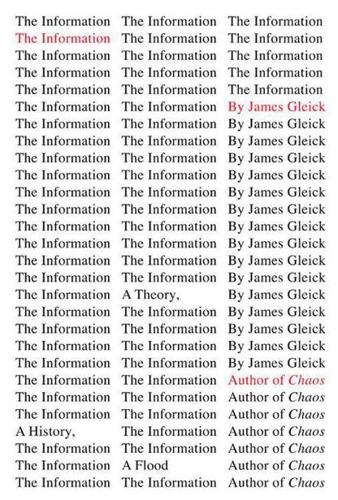
The Information: A History, a Theory, a Flood
by
James Gleick
Published 1 Mar 2011
—Jon Barwise (1986)♦ AT THE HEIGHT OF THE WAR, in early 1943, two like-minded thinkers, Claude Shannon and Alan Turing, met daily at teatime in the Bell Labs cafeteria and said nothing to each other about their work, because it was secret.♦ Both men had become cryptanalysts. Even Turing’s presence at Bell Labs was a sort of secret. He had come over on the Queen Elizabeth, zigzagging to elude U-boats, after a clandestine triumph at Bletchley Park in deciphering Enigma, the code used by the German military for its critical communication (including signals to the U-boats). Shannon was working on the X System, used for encrypting voice conversations between Franklin D. Roosevelt at the Pentagon and Winston Churchill in his War Rooms. It operated by sampling the analog voice signal fifty times a second—“quantizing” or “digitizing” it—and masking it by applying a random key, which happened to bear a strong resemblance to the circuit noise with which the engineers were so familiar.
…
As war loomed, the task of reading messages intercepted from German cable and wireless traffic fell to the Government Code and Cypher School, originally part of the Admiralty, with a staff at first composed of linguists, clerks, and typists, but no mathematicians. Turing was recruited in the summer of 1938. When the Code and Cypher School evacuated from London to Bletchley Park, a country mansion in Buckinghamshire, he went along with a team that also included some champions at chess and crossword-puzzle solving. It was clear now that classical language scholarship had little to contribute to cryptanalysis. The German system, named Enigma, employed a polyalphabetic cipher implemented by a rotor machine the size of a suitcase, with a typewriter keyboard and signal lamps.
…
What all secrecy systems had in common was the use of a key: a code word, or phrase, or an entire book, or something even more complex, but in any case a source of characters known to both the sender and receiver—knowledge shared apart from the message itself. In the German Enigma system, the key was internalized in hardware and changed daily; Bletchley Park had to rediscover it anew each time, its experts sussing out the patterns of language freshly transformed. Shannon, meanwhile, removed himself to the most distant, most general, most theoretical vantage point. A secrecy system comprised a finite (though possibly very large) number of possible messages, a finite number of possible cryptograms, and in between, transforming one to the other, a finite number of keys, each with an associated probability.
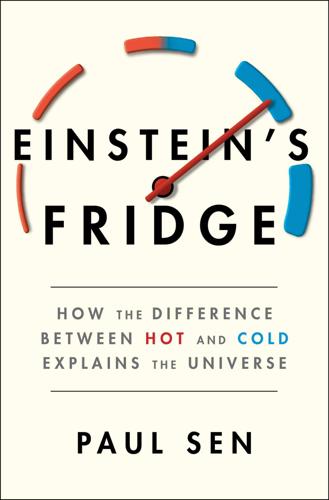
Einstein's Fridge: How the Difference Between Hot and Cold Explains the Universe
by
Paul Sen
Published 16 Mar 2021
During this time he also visited Bell Labs in New York City, where he assessed the cryptographic potential of the SIGSALY voice-encryption system and met regularly for tea with Claude Shannon, one of the few people in the world who could be considered his intellectual equal. Although the war dominated Turing’s attention at Bletchley Park, people noticed his fascination with the natural world and the patterns and shapes it manifests. This interest was shared by Joan Clarke, a fellow mathematician to whom Turing became close and was briefly engaged. Clarke, who had a double first from Cambridge in mathematics, was the most senior female cryptographer at Bletchley Park and worked with Turing on cracking the German naval codes. Marriage to Clarke, Turing felt, would bring with it a certain respectability.
…
Turing took him on holidays and invited him to Cambridge on several occasions. Augenfeld, who never saw his own parents again, never forgot Turing’s kindness, and the two men remained friends till Turing’s death. Within a few weeks of meeting Augenfeld, Turing began his code-breaking work at Bletchley Park. He never stated if meeting the refugee children affected his work, but there is no doubt that as the war began Turing knew, in a personal way, what kind of regime the Nazis had created. Turing is often portrayed as awkward and incapable of empathizing with other people, and according to his brother, Alan hated what he called “vapid conversation.”
…
Nonetheless, Clarke agreed, and the couple introduced each other to their respective families. A few months later, however, Turing broke off the engagement, unable to countenance a sham marriage. The pair remained close friends, though, and as a mathematician who had also studied botany, Joan Clarke often accompanied Turing on walks around the grounds at Bletchley Park, helping him identify plant species that particularly intrigued him. Turing and Clarke were often spotted during breaks from code breaking lying on the grass, peering, in an echo of Sara Turing’s drawing, at the spirals of florets at the center of daisy flowers. The head of the daisy, the circular part to which the flower’s petals are attached, consists of densely packed dots called florets, which eventually become the plant’s seeds.

The Myth of Artificial Intelligence: Why Computers Can't Think the Way We Do
by
Erik J. Larson
Published 5 Apr 2021
They were working for their governments, helping to crack secret codes used by Germany to coordinate attacks on commercial and military ships crossing the English Channel and the Atlantic. Turing found himself engaged in a desperate effort to help defeat Nazi Germany in the Second World War, and it was his ideas about computation that helped turn the tide of war. BLETCHLEY PARK Bletchley Park, situated unobtrusively in a small town out of the path of bombs falling in London and metropolitan Britain, was a research facility set up to help uncover the locations of German U-boats—submarines—which were laying waste to shipping routes in the English Channel. U-boats were a major problem for the Allied forces, sinking thousands of ships and destroying huge quantities of supplies and equipment.
…
Now, assuming that Turing was smarter than Alice (though who is to say?), she can’t just design a Turing-Machine directly, and anyway she already ran into a brick wall puzzling out how to design a Bob-Machine. She decides to begin with a machine that’s as smart as Hugh Alexander—Turing’s colleague at Bletchley Park and a one-time chess champion of Cambridge. Hugh Alexander was smart—really smart. He played championship-level chess, and although he did not summon the kinds of insights about breaking the Enigma code that Turing did, he did make valuable contributions and earn the respect of the other Bletchley code breakers—no small feat.
…
Hugh Alexander, for instance, was a national chess champion who helped in the Bletchley effort. 5. The Germans added rotors that generated long sequences of ciphered free text, along with a more complicated initial (and also ciphered) instructions for deciphering communications. 6. See Andrew Hodges’s excellent biography of Turing for in-depth discussion of the role of Bletchley Park and Turing in World War II. Andrew Hodges, Alan Turing: The Enigma (New York: Vintage, 1992). 7. Joseph Brent, Charles Sanders Peirce: A Life (Bloomington, IN: Indiana University Press, 1993), 72. 8. Hodges, Enigma, 477. 9. François Chollet, “The Implausibility of Intelligence Explosion,” Medium, November 27, 2017. 10.
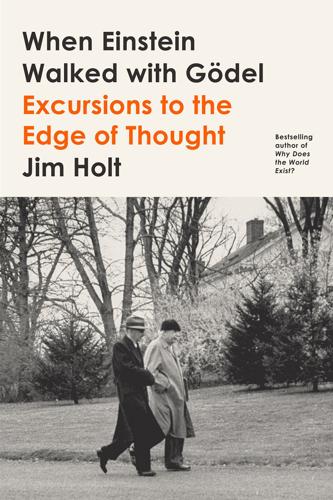
When Einstein Walked With Gödel: Excursions to the Edge of Thought
by
Jim Holt
Published 14 May 2018
A really compelling need for them did not arise until World War II, when they proved decisive in breaking enemy codes. At that time, it was Alan Turing who supplied the critical ideas. But Turing did know of Babbage’s work; in fact, his conception of a universal computing machine was very close to Babbage’s. The first digital computers of the early 1940s—the Colossus at Bletchley Park in England, where thanks to Turing’s genius the Nazi Enigma cipher was cracked; the ENIAC (Electronic Numerical Integrator and Computer) at the University of Pennsylvania; the Harvard Mark I, built by IBM—were all essentially Babbage machines. A question remains: Who was the first programmer?
…
To which Turing’s response was “The real harm will not come in unless there is an application, in which case a bridge may fall down.” Before long, Turing would himself demonstrate that contradictions could indeed have life-or-death consequences. On September 1, 1939, Nazi troops invaded Poland. Three days later, Turing reported to Bletchley Park, a Victorian Tudor-Gothic estate northwest of London where the British cipher service had secretly relocated. He and the other code breakers arrived at Bletchley under the guise of “Captain Ridley’s Shooting Party” (which had some locals grumbling about able-bodied men not doing their bit in the war).
…
By early 1941, Germany’s growing U-boat fleet was devastating British shipping, sinking around sixty ships a month. Unlike Germany, Britain was almost completely reliant on the sea-lanes for sustenance. Unless some counterstrategy could be found, the British Isles faced being starved into submission. When Turing arrived at Bletchley Park, no work was being done on the naval Enigma, which many considered unbreakable. Indeed, it has been said there were only two people who thought the Enigma could be broken: Frank Birch, the head of Bletchley’s naval-intelligence division, because it had to be broken; and Alan Turing, because it was an interesting problem.
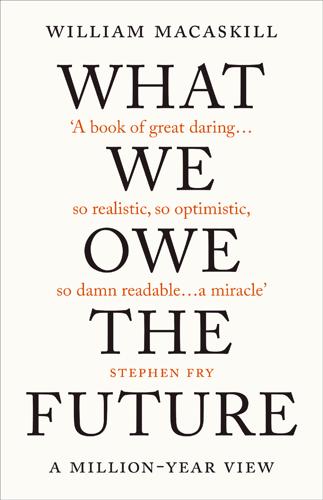
What We Owe the Future: A Million-Year View
by
William MacAskill
Published 31 Aug 2022
“Our mission is to ensure that artificial general intelligence benefits all of humanity” (OpenAI 2021a). 43. See whatweowethefuture.com/notes. 44. Silver et al. 2018. 45. Schrittwieser et al. 2020a, 2020b. 46. My grandmother Daphne S Crouch is listed on the Bletchley Park Roll of Honour (Bletchley Park, n.d.-a) and commemorated at brick location E1:297 in Bletchley Park’s (n.d.-b) digital Codebreakers’ Wall. The fact that Good worked at Bletchley Park is well known (see, e.g., Guardian 2009). The idea that thinking machines would at some point quickly overtake human intelligence and would then “take control, in the way that is mentioned in Samuel Butler’s Erewhon” was raised by Turing (1951, 475), but the classic statement of the idea comes from Good (1966, 33; emphasis in original): “Let an ultraintelligent machine be defined as a machine that can far surpass all the intellectual activities of any man however clever.
…
AlphaGo is extraordinarily good at playing Go but is incapable of doing anything else.41 But some of the leading AI labs, such as DeepMind and OpenAI, have the explicit goal of building AGI.42 And there have been indications of progress, such as the performance of GPT-3, an AI language model which can perform a variety of tasks it was never explicitly trained to perform, such as translation or arithmetic.43 AlphaZero, a successor to AlphaGo, taught itself how to play not only Go but also chess and shogi, ultimately achieving world-class performance.44 About two years later, MuZero achieved the same feat despite initially not even knowing the rules of the game.45 The development of AGI would be of monumental longterm importance for two reasons. First, it might greatly speed up the rate of technological progress, economic growth, or both. These arguments date back over sixty years, to early computer science pioneer I. J. Good, who worked in Bletchley Park to break the German Enigma code during World War II, alongside Alan Turing and, as it happens, my grandmother, Daphne Crouch.46 Recently, the idea has been analysed by mainstream growth economists, including Nobel laureate William Nordhaus.47 There are two ways in which AGI could accelerate growth.
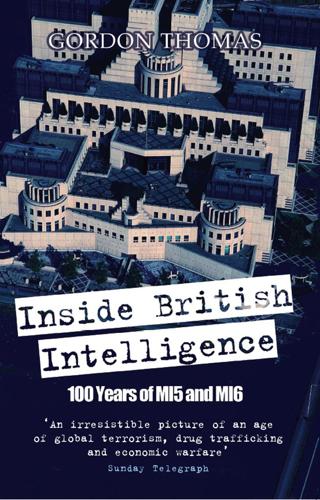
Inside British Intelligence
by
Gordon Thomas
As Paris fell, further agents were arrested. In a matter of months MI6 was in a state of disarray, to be saved only by the code breakers of Bletchley Park. They were a brilliant but eccentric group of mathematicians, working in an English country house, who had unraveled Germany’s top-secret codes in one of the greatest espionage successes of this or any other war. In August 1940, MI6’s Radio Security Service had started to pick up Abwehr (German military intelligence) transmissions, and the cryptologists at Bletchley Park, Station X, had broken the German cipher codes transmitted on their Enigma code machine. The Bletchley cryptologists called their system Ultra, and it gave MI6 an extraordinary insight into the secret world of German espionage, becoming the most powerful single weapon in the intelligence arsenal Menzies was rebuilding.
…
However, Truman had agreed to the continuation of America’s SIGINT collaboration with Britain after Acting Secretary of State Dean Acheson sent him a top-secret memo on September 12, 1945 (still only partly declassified), in which he reminded the president of “the possible hostile intentions of foreign nations” and “recommended you authorize continued collaboration between the United States and the United Kingdom in the field of signals.” At the end of the war, one arm of British intelligence—the Code and Cipher School—had emerged with its reputation enhanced. They were the Bletchley Park code breakers whose Ultra machines had broken the German codes for its U-boats. Renamed in 1946 as Government Communications Headquarters, they were relocated from their rural surroundings of Buckinghamshire to a featureless group of buildings in the drab London suburb of Eastcote. It was there that the cryptographers continued trying to decipher the coded messages of Soviet spymasters to their agents.
…
Washington politics dictated that the agency should be headed by either a navy or army man, as the NSA came under the ultimate control of the Department of Defense; the feeling was that only a military figure would know how to keep in check some of the more temperamental of the cryptologists and mathematicians, “near geniuses who live beyond all the usual rules,” President Truman had once called them. Some were veterans from Bletchley Park who had opted for a higher salary and a better life for their families in America when the NSA opened; their work in breaking the German Enigma code made them legendary figures in the communities around Fort Meade. Their neighbors included specialists on loan from Britain’s GCHQ; others had moved from Canada’s Communications Security Establishment, set up after the postwar Soviet spy scandals in that country.

Heart of the Machine: Our Future in a World of Artificial Emotional Intelligence
by
Richard Yonck
Published 7 Mar 2017
In Elliot’s case, the cause was a neural disconnect from his body’s interoceptive senses due to the brain damage he suffered, interoception being sensations in internal organs that are generated from within the body. 4. Stanford Encyclopedia of Philosophy. Leibniz’s Philosophy of Mind. 5. The term computer originally referred to a person or machine whose job was to compute or perform extensive calculations. At Bletchley Park, this role was filled exclusively by women. 6. An often overlooked piece of the codebreaking story is that the Bletchley Park team was given an enormous helping hand by a team of Polish mathematicians who cracked an earlier version of Germany’s Enigma coding machine in the 1930s. Credit where credit is due. 7. The paper is also famous for proposing a test of machine intelligence, which has since been eponymously named the Turing test. 8.
…
World War II gave computing a huge boost that would eventually contribute to our confidence in the inevitability of AI. Driven by the exigencies of war and the challenge of seemingly unbreakable coded messages then being used by Germany and Japan, enormous strides were made in what would later become the field of computer science.5 The code-breaking team of England’s Bletchley Park, including Alan Turing, worked for years on the problem.6 Without their advances, it’s very possible the war would have lasted much longer and perhaps might have even have been lost by the Allies. As it was, soon after the end of World War II, computer science and theory were at such a stage that a number of researchers and scientists believed we would be capable of building a true machine intelligence before very long.
…
See autonomous weapons systems (AWS) Axilum Robotics, 217 B backpropagation, 41 Backyard Brains, 127 Bandai, 198–199 Baron-Cohen, Simon, 59–60, 112 Barrett, Lisa Feldman, 18–19 Bayesian networks, 41 Beowulf, 95–96 Berliner-Mauer, Eija-Riitta, 187 Berman, David, 70 The Better Angels of Our Nature (Pinker), 267 Beyond Verbal, 71–73, 76–77, 265 Bhagat, Alisha, 173 “The Bicentennial Man (Asimov),” 207 BigDog, 101 biomechatronics, 52–53 black box bound, 251 Bletchley Park, 36 Block, Ned, 242–246, 249, 257 Bloom, Benjamin, 115–116 “Bloom’s two sigma problem,” 115–116 Blue Frog Robotics, 86 “Blue Screen of Death,” 50 Boltzmann machines, 67 Boole, George, 37 Borg, 267 Boston Robotics, 101 brain chips, 125–127 brain-computer interfaces (BCIs), 111, 211–214 BrainGate, 213 Brave New World, 229 BRCA breast cancer genes, 75 Breathed, Berkeley, 95 Breazeal, Cynthia, 84–86, 118–119 brittleness (in software), 42, 44–45, 131 Broca’s area of the brain, 16, 23 Brooks, Rodney, 84 Brown, Eric, 197 Buddy, 86 “Bukimi no tani” (“The Uncanny Valley”), 96–98 Bullwinkle, 187 Butler, Samuel, 228 C Calvin, Susan, 231 “Campaign to Stop Killer Robots,” 130 Capek, Karel, 229 Carpenter, Julie, 78–82, 89 CCTVs, 144 Chalmers, David, 244 chatbots, 140–141, 185, 196 Cheetah, 101 Cheney, Dick, 167 childcare and resistance to technology, 159–160 chimpanzees, 14, 16, 243 Chomsky, Noam, 13 A Christmas Carol (Dickens/Zemeckis), 95–96 Clarke, Arthur C., 232 Clippy (Clippit), 51–52 Clynes, Manfred, 44, 72, 265 Cobain, Kurt, 223 Colossus, 210 combinatorial language, 13–14 communication, nonverbal, 10, 15, 25, 111, 269 companion robots, 151–152 Computer Expression Recognition Toolbox (CERT), 114–115 computer machinicide, 49–50 “conceptual act model,” 18 consciousness and AI, 247 definition of consciousness, 242–247 development of intelligence, 257–259 human emulation, necessity of, 252–255 possibility of, 240–242 ranges of intelligence, 255–257 self-awareness, 245–249 theories concerning consciousness and self-awareness, 250 content-based retrieval systems, 42–44 Conversational Character Robots, 87 “core affect,” 18 cortisol, 16, 221 Curiosity Lab, Tel Aviv, 118 cyber warfare, 133 cybercrime, 133–134 CyberEmotions consortium, 19 Cybermen, 267 cybernetic persons AI and social experiments, 195–198 digital pets, 198–200 emotional engagement with, 200–203 as family members, 194–195 future attitudes toward, 203–208 Cytowick, Richard, 45 D Dallas Autism Treatment Center University of Texas Arlington, 113 Damasio, Antonio, 34–35, 249 “dames de voyage,” 182–183 Daniel Felix Ritchie School of Engineering and Computer Science, 112 “Dark Web,” 158 Darling, Kate, 90–91 DARPA.

This Is for Everyone: The Captivating Memoir From the Inventor of the World Wide Web
by
Tim Berners-Lee
Published 8 Sep 2025
He was a lean and handsome polymath who drafted a conceptual outline of the computer – known as ‘the Turing machine’ – several years before the hardware was available to build one. His team then put these ideas into practice at Bletchley Park, a stately English country house north-west of London, building the electromechanical contraption known as Colossus that cracked the German Enigma cipher. His work was kept confidential for decades afterwards, but historians now credit Turing and his team with shortening the war by several years. While at Bletchley Park, Turing proposed marriage to Joan Clarke, one of his fellow mathematicians. He then broke off the engagement and admitted to Clarke that he was gay.
…
In the modern era, we have climate change to worry about along with AI, although of course the threat of nuclear weapons has not gone away. For international collaboration on climate, there is the UN and its yearly Conference of the Parties (COP). We are seeing the embryonic signs of similar initiatives for AI. In 2023, the UK convened the first global summit on artificial intelligence, held at Bletchley Park, fittingly where Alan Turing used to work as a codebreaker and computing pioneer. The AI Safety summit drew a number of prominent attendees, including Rishi Sunak, then British prime minister, US Vice President Kamala Harris, Elon Musk and Wu Zhaohui, Chinese vice-minister of science and technology.
…
Nash ref1 electronics experiments ref1, ref2 home-built computer ref1, ref2, ref3, ref4 knighthood ref1 lecture tours ref1 marriage to Rosemary ref1, ref2 model railway ref1 move to USA ref1 music ref1 Order of Merit ref1 Oxford University ref1, ref2, ref3, ref4 Plessey ref1, ref2, ref3 Royal Society election ref1 running ref1, ref2 sailing ref1, ref2 skiing ref1, ref2, ref3 windsurfing ref1 see also CERN; MIT; World Wide Web ‘best viewed in’ ref1, ref2 Bezos, Jeff ref1 Bezos, Mackenzie ref1 Bina, Eric ref1, ref2, ref3 biometrics ref1, ref2 Bitcoin ref1 Black Mountains, Wales ref1 Bletchley Park ref1, ref2 blockchain technology ref1, ref2 blogosphere ref1 blogs ref1, ref2, ref3 Bluesky ref1 Bono ref1 bookmarks ref1 Bos, Burt ref1 Boston ref1, ref2, ref3, ref4 Bostrom, Nick ref1 bots ref1 Bouazizi, Mohamed ref1 Bourgeois, Alain ref1 Boutell, Thomas ref1 Boyera, Stephan ref1 Boyle, Danny ref1, ref2 Bratt, Steve ref1 Brazil ref1 Brewer, Judy ref1 Brexit ref1 Brin, Sergei ref1 broadband ref1 broadband providers Africa ref1 cable ref1 speeds ref1 Brown, Gordon ref1, ref2 browsers Cello ref1 Chrome ref1 cookies ref1, ref2, ref3 early development ref1, ref2, ref3 Firefox ref1 Internet Explorer ref1, ref2, ref3, ref4, ref5 landing pages ref1 Mosaic ref1, ref2, ref3, ref4 Netscape ref1, ref2 Opera ref1, ref2 smartphones ref1 Bruce, John ref1, ref2, ref3, ref4 Bruce, Tom ref1, ref2, ref3 Buckingham Palace ref1, ref2 Bulletin Board Services (BBS) ref1 bulletin board services (BBS) ref1 Burkina Faso ref1, ref2 Bush, Kate ref1 Bush, Vannevar ref1, ref2 Butler, Christopher ref1, ref2 ByteDance ref1 cable companies ref1 Cailliau, Robert ref1, ref2, ref3, ref4, ref5, ref6, ref7 Cairo ref1 calendars interoperability ref1, ref2 Mary Lee Berners-Lee design ref1 Cambridge Analytica ref1, ref2, ref3 Cambridge University ref1 Cameron, David ref1 Campbell Gray, Helen (grandmother) ref1 canals ref1, ref2 Capital One ref1 car analogy, net neutrality ref1 Cargill, Carl ref1 Carpenter, Brian ref1, ref2, ref3 Carroll, Lewis ref1 cathode-ray tubes ref1 Cello browser ref1, ref2 censorship ref1, ref2, ref3, ref4, ref5 Center for Democracy and Technology (CDT) ref1 Center for Humane Technology ref1 Cerf, Vint ref1, ref2, ref3, ref4, ref5, ref6, ref7 CERN CERNDoc ref1 culture ref1, ref2 description of site ref1 ‘Enquire-within’ program ref1, ref2, ref3 history and foundation ref1 information systems ref1 International Conference for the World Wide Web (WWW1) ref1, ref2 LAN ref1 language protocols ref1 Large Electron–Positron (LEP) ref1, ref2 Large Hadron Collider (LHC) ref1, ref2 mission ref1, ref2, ref3 phone numbers website ref1 Proton Synchrotron Booster (PSB) ref1, ref2 real-time data acquisition ref1, ref2 Tim Berners-Lee’s arrival ref1 Tim Berners-Lee’s return ref1 WWW intellectual property rights ref1, ref2 Charlie (an AI that works for you) ref1, ref2 chatbots ref1 ChatGPT ref1, ref2, ref3, ref4, ref5 chemistry ref1 Chequers ref1 chess ref1, ref2 children, smartphones access ref1 China ref1, ref2 Chrétien, Jean ref1 Christianity ref1 Chrome ref1, ref2, ref3 cities ‘rational’ ref1 rivers ref1 citizens’ data ref1, ref2, ref3, ref4 civil liberties ref1, ref2, ref3 Clark, David ref1 Clark, Jim ref1 Clarke, Arthur C. ref1 Clarke, Joan ref1 climate change ref1 Clippy ref1 closed captioning ref1 ‘The Cluetrain Manifesto’ ref1 Coalition for Content Provenance and Authenticity (C2PA) ref1 Coffey, Shelby ref1 collaboration collaborative filtering ref1 early websites ref1 intercreativity ref1, ref2, ref3, ref4 principle ref1, ref2, ref3 TPAC (Technical Plenary Advisory Committee) conferences ref1 Collage ref1 Common Crawl ref1, ref2, ref3 communication CERN information systems and LAN ref1, ref2 internet protocols ref1, ref2 compassion ref1, ref2 CompuServe ref1 computer mouse ref1 computer science, home education ref1 computer terminals ref1 computers home-built ref1, ref2, ref3, ref4 interoperability ref1 NeXT ref1, ref2, ref3, ref4, ref5, ref6, ref7 PC revolution ref1 Xerox Alto ref1 confidentiality ref1 connections ref1, ref2, ref3 connectivity ref1, ref2, ref3 Connolly, Dan ref1 consciousness ref1 consistent hashing ref1 conspiracy theories ref1, ref2 Content ID ref1 Contract for the Web ref1, ref2, ref3 cookies ref1, ref2, ref3 Copilot ref1 copyright ref1, ref2 Cortico ref1 Cosgrave, Paddy ref1 cost-of-living crisis ref1 Covid-19 ref1 Craigslist ref1 crawlers ref1 creativity ref1, ref2, ref3, ref4, ref5, ref6 cryptocurrency ref1 cryptography ref1, ref2, ref3, ref4 CSS (cascading style sheets) ref1, ref2 culture, trust ref1 Cunningham, Ward ref1 cybercriminals ref1 cybersquatting ref1, ref2 Cyc ref1 Daleks ref1 Dalitz, Meryl ref1 DARPA (Defense Advanced Research Projects Agency) ref1, ref2 data breaches ref1 compared to documents ref1 garbage in, garbage out ref1 linking ref1, ref2, ref3 open data ref1 PODS (Personal Online Data Stores) ref1 read–write web ref1 silos ref1 structures ref1, ref2, ref3, ref4 data packets ref1 data sheets ref1 data sovereignty ref1, ref2, ref3, ref4, ref5, ref6, ref7, ref8 data wallets ref1 see also PODS data.gov.uk ref1 Datasolids ref1 Davies, Roger ref1 Dawkins, Richard ref1 De Martin, Noel ref1 dead links ref1 Deakin, Roger ref1 decentralization ref1, ref2, ref3 deep web ref1 deepfakes ref1, ref2 DeepMind ref1, ref2 democracy Arab Spring ref1 Burkina Faso ref1 Cambridge Analytica ref1, ref2 deepfakes ref1 digital citizenship ref1 historical record ref1, ref2 Philippines ref1 see also civil liberties Denmark ref1 Dertouzos, Michael ref1, ref2, ref3, ref4 ‘Design Issues’ ref1, ref2, ref3, ref4 D.G.

Coders: The Making of a New Tribe and the Remaking of the World
by
Clive Thompson
Published 26 Mar 2019
were staffed by women: Bryony Norburn, “The Female Enigmas of Bletchley Park in the 1940s Should Encourage Those of Tomorrow,” The Conversation, January 26, 2015, accessed August 16, 2018, https://theconversation.com/the-female-enigmas-of-bletchley-park-in-the-1940s-should-encourage-those-of-tomorrow-36640; Sarah Rainey, “The Extraordinary Female Codebreakers of Bletchley Park,” The Telegraph, January 4, 2015, accessed August 16, 2018, https://www.telegraph.co.uk/history/world-war-two/11308744/The-extraordinary-female-codebreakers-of-Bletchley-Park.html. calculating ballistics trajectories, were women: Jennifer S.
…
It’s often a surprise to people today, but at MIT’s Lincoln Labs in the 1960s, when Wilkes worked there, most of the “career programmers” were female. Indeed, it was often assumed back then that women were naturals at programming. There was also a recent female pedigree; during World War II, some of the first experimental computational machines used for code-breaking at Bletchley Park in the UK were staffed by women, and in the US, the first programmers for the ENIAC computer, calculating ballistics trajectories, were women. Still, Wilkes noticed gender divides. Part of the reason men weren’t full-time programmers is because in the ’60s, the sexy, high-glory part of the job was regarded as building the hardware.

Thinking Machines: The Inside Story of Artificial Intelligence and Our Race to Build the Future
by
Luke Dormehl
Published 10 Aug 2016
It remains to discuss the equivalents of the sensory or afferent and the motor or efferent neurons.’ Others would happily take up the challenge. Alan Turing, meanwhile, was a British mathematician and cryptanalyst. During the Second World War, he led a team for the Government Code and Cypher School at Britain’s secret code-breaking centre, Bletchley Park. There he came up with various techniques for cracking German codes, most famously an electromechanical device capable of working out the settings for the Enigma machine. In doing so, he played a key role in decoding intercepted messages, which helped the Allies defeat the Nazis. Turing was fascinated by the idea of thinking machines and went on to devise the important Turing Test, which we will discuss in detail in a later chapter.
…
In 1964, the same year as the New York World’s Fair, cybernetics pioneer Norbert Wiener predicted: ‘The world of the future will be an ever more demanding struggle against the limitations of our own intelligence; not a comfortable hammock in which we can lie down to be waited upon by our robot slaves.’ Wiener passed away in May 1964, aged sixty-nine. However, concerns about superintelligent machines continued. The following year, a British mathematician named Irving John Good expanded on some of the concerns. Good had worked with Alan Turing at Bletchley Park during World War II. Years after he had played a key role in cracking the Nazi codes, the moustachioed Good took to driving a car with the vanity licence plate ‘007IJG’ as a comical nod to his days as a gentleman spy. In 1965, Good penned an essay in which he theorised on what a superintelligent machine would mean for the world.
…
To find a specific word or phrase from the index, please use the search feature of your ebook reader. 2001: A Space Odyssey (1968) 2, 228, 242–4 2045 Initiative 217 accountability issues 240–4, 246–8 Active Citizen 120–2 Adams, Douglas 249 Advanced Research Projects Agency (ARPA) 19–20, 33 Affectiva 131 Age of Industry 6 Age of Information 6 agriculture 150–1, 183 AI Winters 27, 33 airlines, driverless 144 algebra 20 algorithms 16–17, 59, 67, 85, 87, 88, 145, 158–9, 168, 173, 175–6, 183–4, 186, 215, 226, 232, 236 evolutionary 182–3, 186–8 facial recognition 10–11, 61–3 genetic 184, 232, 237, 257 see also back-propagation AliveCor 87 AlphaGo (AI Go player) 255 Amazon 153, 154, 198, 236 Amy (AI assistant) 116 ANALOGY program 20 Analytical Engine 185 Android 59, 114, 125 animation 168–9 Antabi, Bandar 77–9 antennae 182, 183–5 Apple 6, 35, 56, 65, 90–1, 108, 110–11, 113–14, 118–19, 126–8, 131–2, 148–9, 158, 181, 236, 238–9, 242 Apple iPhone 108, 113, 181 Apple Music 158–9 Apple Watch 66, 199 architecture 186 Artificial Artificial Intelligence (AAI) 153, 157 Artificial General Intelligence (AGI) 226, 230–4, 239–40, 254 Artificial Intelligence (AI) 2 authentic 31 development problems 23–9, 32–3 Good Old-Fashioned (Symbolic) 22, 27, 29, 34, 36, 37, 39, 45, 49–52, 54, 60, 225 history of 5–34 Logical Artificial Intelligence 246–7 naming of 19 Narrow/Weak 225–6, 231 new 35–63 strong 232 artificial stupidity 234–7 ‘artisan economy’ 159–61 Asimov, Isaac 227, 245, 248 Athlone Industries 242 Atteberry, Kevan J. 112 Automated Land Vehicle in a Neural Network (ALVINN) 54–5 automation 141, 144–5, 150, 159 avatars 117, 193–4, 196–7, 201–2 Babbage, Charles 185 back-propagation 50–3, 57, 63 Bainbridge, William Sims 200–1, 202, 207 banking 88 BeClose smart sensor system 86 Bell Communications 201 big business 31, 94–6 biometrics 77–82, 199 black boxes 237–40 Bletchley Park 14–15, 227 BMW 128 body, machine analogy 15 Bostrom, Nick 235, 237–8 BP 94–95 brain 22, 38, 207–16, 219 Brain Preservation Foundation 219 Brain Research Through Advanced Innovative Neurotechnologies 215–16 brain-like algorithms 226 brain-machine interfaces 211–12 Breakout (video game) 35, 36 Brin, Sergey 6–7, 34, 220, 231 Bringsjord, Selmer 246–7 Caenorhabditis elegans 209–10, 233 calculus 20 call centres 127 Campbell, Joseph 25–6 ‘capitalisation effect’ 151 cars, self-driving 53–56, 90, 143, 149–50, 247–8 catering 62, 189–92 chatterbots 102–8, 129 Chef Watson 189–92 chemistry 30 chess 1, 26, 28, 35, 137, 138–9, 152–3, 177, 225 Cheyer, Adam 109–10 ‘Chinese Room, the’ 24–6 cities 89–91, 96 ‘clever programming’ 31 Clippy (AI assistant) 111–12 clocks, self-regulating 71–2 cognicity 68–9 Cognitive Assistant that Learns and Organises (CALO) 112 cognitive psychology 12–13 Componium 174, 176 computer logic 8, 10–11 Computer Science and Artificial Intelligence Laboratory (CSAIL) 96–7 Computer-Generated Imagery (CGI) 168, 175, 177 computers, history of 12–17 connectionists 53–6 connectomes 209–10 consciousness 220–1, 232–3, 249–51 contact lenses, smart 92 Cook, Diane 84–6 Cook, Tim 91, 179–80 Cortana (AI assistant) 114, 118–19 creativity 163–92, 228 crime 96–7 curiosity 186 Cyber-Human Systems 200 cybernetics 71–4 Dartmouth conference 1956 17–18, 19, 253 data 56–7, 199 ownership 156–7 unlabelled 57 death 193–8, 200–1, 206 Deep Blue 137, 138–9, 177 Deep Knowledge Ventures 145 Deep Learning 11–12, 56–63, 96–7, 164, 225 Deep QA 138 DeepMind 35–7, 223, 224, 245–6, 255 Defense Advanced Research Projects Agency (DARPA) 33, 112 Defense Department 19, 27–8 DENDRAL (expert system) 29–31 Descartes, René 249–50 Dextro 61 DiGiorgio, Rocco 234–5 Digital Equipment Corporation (DEC) 31 Digital Reasoning 208–9 ‘Digital Sweatshops’ 154 Dipmeter Advisor (expert system) 31 ‘do engines’ 110, 116 Dungeons and Dragons Online (video game) 197 e-discovery firms 145 eDemocracy 120–1 education 160–2 elderly people 84–6, 88, 130–1, 160 electricity 68–9 Electronic Numeric Integrator and Calculator (ENIAC) 12, 13, 92 ELIZA programme 129–30 Elmer and Elsie (robots) 74–5 email filters 88 employment 139–50, 150–62, 163, 225, 238–9, 255 eNeighbor 86 engineering 182, 183–5 Enigma machine 14–15 Eterni.me 193–7 ethical issues 244–8 Etsy 161 Eurequa 186 Eve (robot scientist) 187–8 event-driven programming 79–81 executives 145 expert systems 29–33, 47–8, 197–8, 238 Facebook 7, 61–2, 63, 107, 153, 156, 238, 254–5 facial recognition 10–11, 61–3, 131 Federov, Nikolai Fedorovich 204–5 feedback systems 71–4 financial markets 53, 224, 236–7 Fitbit 94–95 Flickr 57 Floridi, Luciano 104–5 food industry 141 Ford 6, 230 Foxbots 149 Foxconn 148–9 fraud detection 88 functional magnetic resonance imaging (fMRI) 211 Furbies 123–5 games theory 100 Gates, Bill 32, 231 generalisation 226 genetic algorithms 184, 232, 237, 257 geometry 20 glial cells 213 Go (game) 255 Good, Irving John 227–8 Google 6–7, 34, 58–60, 67, 90–2, 118, 126, 131, 155–7, 182, 213, 238–9 ‘Big Dog’ 255–6 and DeepMind 35, 245–6, 255 PageRank algorithm 220 Platonic objects 164, 165 Project Wing initiative 144 and self-driving cars 56, 90, 143 Google Books 180–1 Google Brain 61, 63 Google Deep Dream 163–6, 167–8, 184, 186, 257 Google Now 114–16, 125, 132 Google Photos 164 Google Translate 11 Google X (lab) 61 Government Code and Cypher School 14 Grain Marketing Adviser (expert system) 31 Grímsson, Gunnar 120–2 Grothaus, Michael 69, 93 guilds 146 Halo (video game) 114 handwriting recognition 7–8 Hank (AI assistant) 111 Hawking, Stephen 224 Hayworth, Ken 217–21 health-tracking technology 87–8, 92–5 Healthsense 86 Her (film, 2013) 122 Herd, Andy 256–7 Herron, Ron 89–90 High, Rob 190–1 Hinton, Geoff 48–9, 53, 56, 57–61, 63, 233–4 hive minds 207 holograms 217 HomeChat app 132 homes, smart 81–8, 132 Hopfield, John 46–7, 201 Hopfield Nets 46–8 Human Brain Project 215–16 Human Intelligence Tasks (HITs) 153, 154 hypotheses 187–8 IBM 7–11, 136–8, 162, 177, 189–92 ‘IF THEN’ rules 29–31 ‘If-This-Then-That’ rules 79–81 image generation 163–6, 167–8 image recognition 164 imagination 178 immortality 204–7, 217, 220–1 virtual 193–8, 201–4 inferences 97 Infinium Robotics 141 information processing 208 ‘information theory’ 16 Instagram 238 insurance 94–5 Intellicorp 33 intelligence 208 ambient 74 ‘intelligence explosion’ 228 top-down view 22, 25, 246 see also Artificial Intelligence internal combustion engine 140–1, 150–1 Internet 10, 56 disappearance 91 ‘Internet of Things’ 69, 70, 83, 249, 254 invention 174, 178, 179, 182–5, 187–9 Jawbone 78–9, 92–3, 254 Jennings, Ken 133–6, 138–9, 162, 189 Jeopardy!
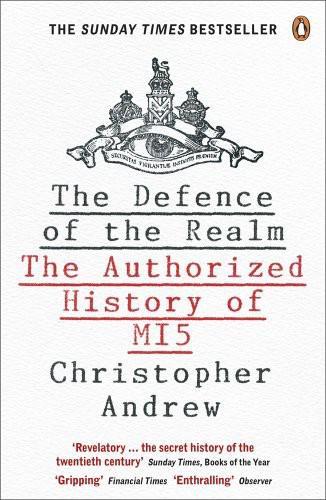
The Defence of the Realm
by
Christopher Andrew
Published 2 Aug 2010
Allen, 1977) Smith, Michael, New Cloak, Old Dagger (London: Victor Gollancz, 1996) Smith, Michael, Foley: The Spy Who Saved 10,000 Jews (London: Hodder, 1999) Smith, Michael, ‘Bletchley Park, Double Cross and D-Day’, in Michael Smith and Ralph Erskine (eds), Action This Day: Bletchley Park from the Breaking of the Enigma Code to the Birth of the Modern Computer (London: Bantam Press, 2001) Smith, Michael, ‘The Government Code and Cypher School and the First Cold War’, in Michael Smith and Ralph Erskine (eds), Action This Day: Bletchley Park from the Breaking of the Enigma Code to the Birth of the Modern Computer (London: Bantam Press, 2001) Smith, Michael and Erskine, Ralph (eds), Action This Day: Bletchley Park from the Breaking of the Enigma Code to the Birth of the Modern Computer (London: Bantam Press, 2001) Smith, Simon, ‘General Templer and Counter-Insurgency in Malaya: Hearts and Minds, Intelligence and Propaganda’, Intelligence and National Security, vol. 16, no. 3 (2001) Snelling, O.
…
The first, Mathilde Krafft, a German-born British national who was used by the Abwehr to forward money, was put under surveillance but not arrested immediately for fear of compromising SNOW and in the hope that she might produce leads to other agents; she was later interned in Holloway Prison.39 The second, codenamed CHARLIE, was a British businessman who had been pressured into working for the Abwehr by threats to a German relative and was easily turned into a double agent by MI5.40 The code supplied to SNOW and GW later helped GC&CS to discover the basic construction of Abwehr hand ciphers, which were later regularly broken and assisted the capture of other German agents. The first Abwehr decrypt was circulated by GC&CS (which had relocated to Bletchley Park at the outbreak of war) on 14 April 1940. To produce the decrypts, which continued for the rest of the war, a new section was set up at Bletchley, headed by the veteran codebreaker Oliver Strachey. The decrypts became known as ISOS (‘Intelligence Service Oliver Strachey’), informally referred to by some of those with access to it as ‘ice’; its initiates were said to be ‘iced’.41 In May 1940 SNOW’s eight-month-old career as a double agent came close to disaster.
…
Pujol got no further than Lisbon, from where, claiming to be in England, he despatched to the Abwehr plentiful disinformation on non-existent British troop and naval movements, spiced with details of ‘drunken orgies and slack morals at amusement centres’ in Liverpool and the surprising revelation that Glasgow dock-workers would ‘do anything for a litre of wine’. By February 1942 Section V (counter-intelligence) of SIS had identified Pujol as the author of these colourful reports, which were decrypted by Bletchley Park. A month later SIS recruited him as a double agent.74 By cutting across the demarcation line which confined MI5 to British soil and SIS to foreign territory, the double agents necessitated closer operational co-operation between the two Services than ever before. Unsurprisingly, the collaboration did not always run smoothly.
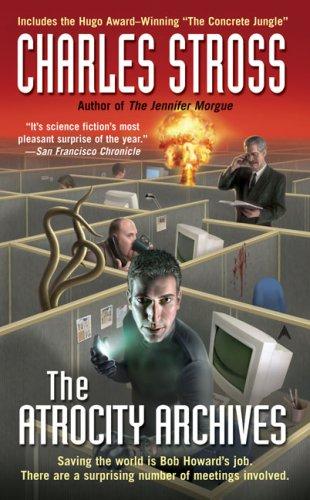
Atrocity Archives
by
Stross, Charles
Published 13 Jan 2004
Fifteen minutes of bumbling around red routes and through trackless wastes of identical red brick houses embellished with satellite dishes and raw pine fences brings us into an older part of town, where the buildings actually look different and the cycle paths are painted strips at the side of the road rather than separately planned routes. I glance around curiously, trying to spot landmarks. "Aren't we near Bletchley Park?" I ask. "It's a couple of miles that way," says our driver without taking his hands off the wheel to point. "You thinking of visiting?" "Not just yet." Bletchley Park was the wartime headquarters of the Ultra operation, the department that later became GCHQ--the people who built the Colossus computers, originally used for breaking Nazi codes and subsequently diverted by the Laundry for more occult purposes.
…
Churchill charged SOE with setting Europe ablaze behind German lines, and that's exactly what they tried to do. Until December 1945, when SIS got their revenge, of course." "So the bureaucratic infighting goes that far back?" "Guess so." I take a sip of beer. "But the Laundry survived more or less intact after the rest of SOE was gutted, like the way GCHQ survived even though the Bletchley Park operation was wound up. Only more secretively." Hmm. This is not stuff we should be talking about in public; I pull out my palmtop and tap away at it until a rather useful utility shows up. "What's that?" she asks interestedly, as the background clatter and racket diminishes to a haze of white noise.
…
British governments are less forthcoming--many of Whitehall's deepest secrets are stored in boxes labelled for release no less than a hundred years after the events they describe--but we can guess at similar revenants of SOE surviving the winter of the war, just as we know that many of the secrets of Bletchley Park's codebreaking operation ended up in Cheltenham, at the new (and unimportantsounding) Government Communications Headquarters. SOE was deeply engaged with resistance operations against the Nazi occupation of Europe during the Second World War; if by some chance the Ahnenerbe-SS were sheltering ghastly secrets, it is unlikely that the subsequent custodians of such knowledge would have joined their comrades mustering out of service at the end of the conflict.
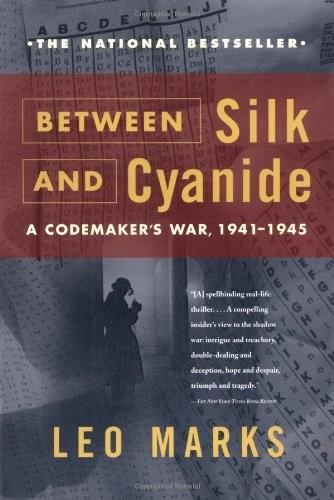
Between Silk and Cyanide: A Codemaker's War, 1941-1945
by
Leo Marks
Published 1 Jan 1998
He at once asked how I had got on with the Golf team's briefing, and I assured him it had been as normal as I knew how to make it. He looked at me quizzically and told me to sit down. It was as well that he did because I couldn't believe what I now heard him saying. Tomorrow I was to discuss the future of WOKs with Colonel Tiltman of Bletchley Park. The Colonel Tiltman of the Bletchley Park. The cryptographic supremo. I was to keep the whole morning free for him. No problem!—I'd keep my whole coding life free for him if he had any use for it. I to thank Nick for what he'd achieved but the deep brown melter wouldn't function and all that emerged was the last of my clucks.
…
The school for code-breakers was the only one of its kind in England and its founding father, patron saint and principal customer was Britain's cryptographic supremo, John Tiltman. According to O'Reilly, Tiltman's talent had already received the ultimate Intelligence accolade: it had made him a bargaining counter with the Americans. The course was due to last for eight weeks, at the end of which the students would be graded and sent to Bletchley Park, which was Tiltman's workshop and the headquarters of the cryptographic department, known in the trade as MI8. Fifteen new pupils, including two young women, had been selected for the course and we sat at separate desks in a large, bright room, studying the mating habits of the alphabet, counting the frequency of letters and working our way through exercises which gradually became more difficult until we were ready to tackle codes of military and diplomatic level.
…
Since it was my was offence, and was my first stint of night duty, and I did seem to care about my job, he was going to exercise his discretion and let me off with a warning. Just this once. He pointed firmly to the door. So much for my concept of SOE-mindedness. I couldn't even get myself reported! Determined to try again, I wondered how I could reach Lord Selbourne or go even higher, to Colonel Tiltman of Bletchley Park. He called me back in mid-speculation, and, as casually as any Irishman can, said that he didn't wish me to misconstrue his leniency. It had nothing to do with his friendship with Father. There was another reason for it. He finally said that a lady whose judgement he respected had spoken quite highly of me, and that if I had any problems I could do a lot worse than talk them over with her.

Surviving AI: The Promise and Peril of Artificial Intelligence
by
Calum Chace
Published 28 Jul 2015
More recently, science fiction got started with Mary Shelley’s Frankenstein in the early nineteenth century, and in the early twentieth century Karel Capek’s play RUR (Rossum’s Universal Robots) introduced the idea of an uprising in which robots eliminate their human creators. Alan Turing The brilliant British mathematician and code-breaker Alan Turing is often described as the father of both computer science and artificial intelligence. His most famous achievement was breaking the German naval ciphers at the code-breaking centre at Bletchley Park during the Second World War. He used complicated machines known as bombes, which eliminated enormous numbers of incorrect solutions to the codes so as to arrive at the correct solution. His work is estimated to have shortened the war by two years, but incredibly, his reward was to be prosecuted for homosexuality and obliged to accept injections of synthetic oestrogen which rendered him impotent.
…
It would accept as inputs the outputs of previous computations recorded on punch cards. Babbage’s collaborator Ada Lovelace has been described as the world’s first computer programmer thanks to some of the algorithms she created for the Analytical Engine. The first electronic digital computer was the Colossus, built by code-breakers at Bletchley Park (although not by Turing). But the first general-purpose computer to be completed was ENIAC (Electronic Numerical Integrator And Computer), built at the Moore School of Electrical Engineering in Philadelphia, and unveiled in 1946. Like so many technological advances, it was funded by the military, and one of its first assignments was a feasibility study of the hydrogen bomb.
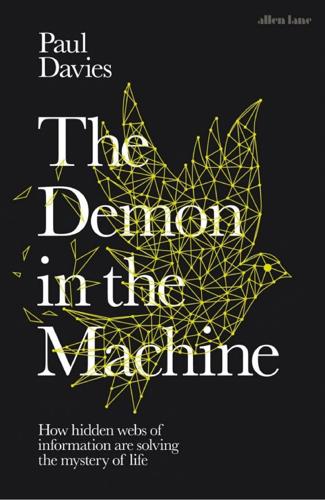
The Demon in the Machine: How Hidden Webs of Information Are Finally Solving the Mystery of Life
by
Paul Davies
Published 31 Jan 2019
Christened Colossus, it was built by Tommy Flowers at the Post Office’s telephone exchange at Dollis Hill in London and installed at the top-secret code-breaking establishment in Bletchley Park. Colossus became fully operational in 1943, a decade before IBM built its first commercial machine. The sole purpose of Colossus was to assist in the British code-breaking effort and so it was built and operated under an exceptionally tight security blanket. For political reasons, the culture of secrecy surrounding Bletchley Park persisted well after the end of the war and is part of the reason why Flowers and Turing often do not receive credit for being the first architects of the computer.
…
But only five years later the Cambridge mathematician Alan Turing established a connection between Gödel’s result and Hilbert’s halting problem, which he published in a paper entitled ‘On computable numbers, with an application to the Entscheidungsproblem’.2 It proved to be the start of something momentous. Turing is best known for his role in cracking the German Enigma code in the Second World War, working in secret at Bletchley Park in the south of England. His efforts saved countless Allied lives and shortened the war by many months, if not years. But history will judge his 1936 paper to be more significant than his wartime work. To address Hilbert’s problem of mindless computation Turing envisaged a calculating machine rather like a typewriter, with a head that could scan a moving tape and write on it.

Culture and Prosperity: The Truth About Markets - Why Some Nations Are Rich but Most Remain Poor
by
John Kay
Published 24 May 2004
What turned a calculator into a computer Culture and Prosperity { 267} was the insight that a machine that can make long strings of calculations can do almost anything-write letters, check spelling, remember addresses, and turn on the central heating. This was first realized by Alan Turing, at the time a fellow of King's, the Cambridge University college that was also home to John Maynard Keynes. At the outbreak of the World War II, Turing became a code-breaker at Bletchley Park, northwest ofLondon. The group Turing joined, which represented the cream of British academic life, built the first operational computer. 3 Turing spent eight years working for the British government. He returned to King's College and then took a Royal Society professorship at Manchester University. 4 Prosecuted for homosexual activities, he committed suicide.
…
Buchanan and Stubblebine (1962), Demsetz (1964). Mnookin and Kornhauser (1979). Chapter 23: The Knowledge Economy ••••••••••••••••••••••••••••••••••••• 1. See, for example, Shapiro and Varian (1998); also "new economy'' writers such as Kelly (1998), Leadbeater (2000), and Coyle (2001). 2. Bodanis (2000), Clark (1979). 3. The Bletchley Park project, once highly secret, has now generated extensive literature-Hinsley and Stripp (1993), Enever (1994), Butters (2000)-and a film (Enigma). 4. In the last years of his life, Turing was a path breaker in the understanding of the mathematics of spontaneous order in nonlinear dynamic systems of the kind described in chapter 10.
…
An Introduction to Queuing Theory. New York: Halsted Press. Bibliography { 393} Burgess, S., and H. Rees. 1996. "Job Tenure in Britain, 1975-1992." Economic journal 106: 334-44. Burn, D. 1978. Nuclear Power and the Energy Crisis: Politics and the Atomic Industry. London: Macmillan Press. Butters, L. 2000. Bletchley Park: Home ofStation X. Andover, Pitkin Unichrome. Buzo, A. 1999. The Guerrilla Dynasty: Politics and Leadership in North Korea. Boulder, Colo.: Westview Press. Calavita, K. H., N. Pontell, and R. H. Tillman. 1997. Big Money Game: Fraud and Politics in the Savings and Loan Crisis. Berkeley, Calif., and London: University of California Press.

Concretopia: A Journey Around the Rebuilding of Postwar Britain
by
John Grindrod
Published 2 Nov 2013
‘You all cycled on these high pavements to get into the building. But it was a beautiful building. And all of the drawing offices were these prefabricated wooden places.’ It’s easy to see Terlings, with its huts teeming with intellectuals, experts and their committed support staff, as another Bletchley Park. But the place wasn’t full of secret code-breakers. It was home to a dynamic team of planners, architects, draughtsmen and women, and administrators – all working frantically to create something vast and new in the English countryside with a minimum of time and resources. A new town – one of the first four designated by the postwar Labour government.
…
That would be sent to punch card operators – we had three of those – who would then transfer that information from the form into the digital format on a card which would then be put into the computer.’ It was like the paperless office in reverse, the computer not just generating paper but ingesting it too. I was reminded of the punch-cards Alan Turing’s crypto-analysts were using for their proto-computers at Bletchley Park in their efforts to decode Enigma over two decades earlier. Not all of Stanley Miller’s experimental systems worked smoothly. The timber-framed windows were a weakness on the MWM blocks. ‘A window on a two-storey house is subject to wind-driven rain at a fairly low level,’ John explained. ‘Stick the same window 28 storeys up and the same window doesn’t perform very well at all.
…
Pretty soon all it seemed to add up to was a relay station for transmitting the cricket or regional adverts. Even so, it’s clear BT don’t realise what they have here. Bursting with fascinating if outmoded technology, this temple of geek is a historic site of the communication world, like the huts at Bletchley Park. It contains the relics of the future – for some a haul as exciting as any number of crossbows, gold coins and pottery. In 2010 the management team was quite unprepared for the huge number of requests for tickets when they added it to the Open House Weekend programme, and they had to turn away most of the people who applied.

Computer: A History of the Information Machine
by
Martin Campbell-Kelly
and
Nathan Ensmenger
Published 29 Jul 2013
Von Neumann was deeply interested in Turing’s work and invited him to stay on at the Institute. Turing, however, decided to return to Britain. World War II was looming, and he was enlisted in the code-breaking operation at Bletchley Park, a former mansion some eighty miles north of London. There he played a vital part in using computing machinery to break Nazi codes. Bletchley Park was led by a cadre of outstanding administrators, “men of the professor type,” and staffed by several thousand machine operators, clerks, and messengers. Even among men of the professor type, Turing stood out for the originality of his mind but also for his social clumsiness: “famous as ‘Prof’” he was “shabby, nail-bitten, tieless, sometimes halting in speech and awkward of manner.”
…
The reason was that none of the British projects had very much money. This forced them to keep things simple and thus to avoid the engineering setbacks that beset the grander American projects. Britain had in fact already built up significant experience in computing during the war in connection with code-breaking at Bletchley Park. A mechanical computer—specified by Alan Turing—was operational in 1940, and this was followed by an electronic machine, the Colossus, in 1943. Although the code-breaking activity remained completely secret until the mid-1970s, it meant that there were people available who had both an appreciation of the potential for electronic computing and the technical know-how.
…
See Harvard Mark I Babbage, Charles Analytical Engine, 8, 41–45, 46 Anticipatory carriage, 42 bank clearing houses and, 9–10 calculating engines of, 55, 56, 87 (photo) character of, 14 conditional branch concept and, 58 Difference Engine, 6–8, 10, 59 range of knowledge of, 276 table-making projects and, 4–5 Babbage, Henry, 55–56 Backus, John, 171–173, 191 (photo) Ballistics calculations, 54, 66–68, 71, 75, 144 Ballistics Research Laboratory (BRL), 66–68, 71–77 Bank of America, 136, 158, 159 Bank of England, 10 Bankers’ Clearing House (London), 9–10 Banking industry, 9–10, 27, 28–29, 157–161, 175, 177 Baran, Paul, 211–212 Barclays Bank, 136, 157 Barcode readers, 164–165 Barcoding, 161–165 Barlow, John Perry, 303 BASIC, 192, 193, 203, 205–207, 242–243, 247 Batch processing, 153, 160, 161, 203, 204 Beginners All-purpose Symbolic Instruction Code. See BASIC Bell, Jay, 250 Bell Telephone Laboratories, 74, 151, 210, 213–215, 220 Berkeley, Edmund C., 101 Berners-Lee, Tim, 287–289 Berry, Clifford, 69 Bezos, Jeff, 295 BINAC, 101–102, 105, 106 Binary code, 168, 171 Bitnet, 292 Blackberry OS, 297, 298 Bletchley Park code-breaking operation, 61, 81–82 Blogs, 299 Bolt, Beranek and Newman (BBN), 208, 212, 282, 283–284 Bookkeepers and bookkeeping systems, 27, BOS (Batch Operating System), 179 Brand, Stewart, 234 Bricklin, Daniel, 243–244 Brin, Sergey, 294 British Telecom, 269, 270 Brooks, Frederick P., 179–180, 181, 183 Brown, E.
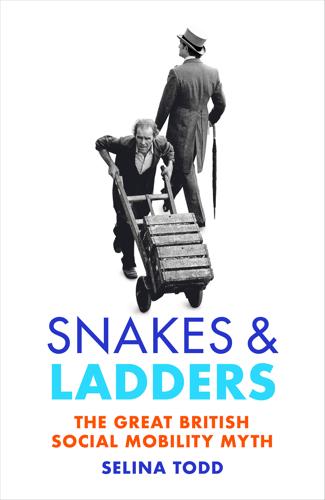
Snakes and Ladders: The Great British Social Mobility Myth
by
Selina Todd
Published 11 Feb 2021
But ‘educated and professional’ men were relieved of this obligation.12 They were permitted to sign up to a Central Register, noting where their services might be most useful. Government intelligence and the new, top-secret codebreaking centre at Bletchley Park immediately began to recruit from Britain’s elite universities – the playgrounds of the upper and upper-middle classes. ‘Young men with first-class brains are wanted’, wrote one civil servant of Bletchley Park. ‘I should imagine that the men required would all be available from Oxford or Cambridge.’13 But by the summer of 1940 the political landscape was shifting. In May the ignominious retreat of Britain’s troops from Dunkirk emphasised the need for better military leaders, better equipment and better organisation of the war effort – at home and abroad.
…
The hopes of aspiring ‘architects, actors [and] academics’ who studied at Girton College, Cambridge were ‘destroyed by the war’.38 Even before conscription for single women was introduced (after which women graduates were obliged to choose between teaching, nursing and the Civil Service) they found it hard to get professional or technical jobs in the conservative, cautious atmosphere of the early war years. Women graduates were recruited to Bletchley Park only as ‘linguists’ and ‘temporary assistants’, on pay grades lower than the men, though many of them played a pivotal role in codebreaking.49 Fewer women than men were recruited to the higher grades of the Civil Service, and those who were appointed had ‘slightly “superior” social origins to those of the men’ and were better qualified than their male counterparts.40 Nevertheless, women’s recruitment into the Civil Service did increase from its low pre-war level.
…
C., 108, 124 Barbados, 183 Barings bank, 280 Battersea, London, 21–2 Beard, Charles, 24 Beatles, The, 225, 234, 278 Beesley, Ian, 227, 228–9, 239 Behan, Brendan, 229 Bell, Colin, 151, 162, 163, 165, 167 Belle Vue photography, 186 Benn, Anthony ‘Tony’, 241, 247, 251 Benson, Frank, 46 Benzie, Isa, 87 Bernstein, Sidney, 223 Berwickshire, Scotland, 44–5 Bevan, Aneurin, 137 Beveridge Report (1942), 125–6, 156 Bevin, Ernest, 19–20, 26, 28, 36, 72 World War II (1939–45), 105, 109, 110, 111, 113, 116, 118 Beynon, Huw, 234 Billy Liar (Waterhouse), 145 Birmingham University, 152, 233 Black British people, 306–7, 314, 320, 325, 340–44, 365 Black, Milda, 175 Black, Neil, 286, 288–9, 294–5 Blair, Anthony ‘Tony’, 300, 303, 308, 322, 329 Bletchley Park, Buckinghamshire, 109, 116 ‘blind-alley’ jobs, 72 Board of Education, 18, 22, 33, 34, 73, 81, 117, 133 Bone, Joseph, 60 Booth, Charles, 48, 50, 54, 56 Border Country (Williams), 145, 147 Bowley, Arthur, 71 Braddock, Bessie, 20–21, 37, 38 Bradford College of Art, 229 Bragg, Melvyn, 205 Braine, John, 145, 146 Branson, Richard, 256 breakthrough generation (1920–34), 6, 105–27, 128–41, 142–71, 172–88 academia, 149–55, 164 armed forces, 107–8, 120–25, 131–2 conservatism and, 146, 157, 159 downward mobility, 110, 137, 197, 203, 204–5 education, 105–7, 118, 122–5, 131–5, 142–6, 148, 158, 160–61 emigration, 172–3, 178–80 housing, 127, 137, 145, 154, 155, 176, 183, 184 immigration, 172, 173–8, 180–88 managers, 156–71 meritocracy and, 125–6, 135, 140, 146–50, 155, 157 publishing, 144, 145 socialism and, 134, 139, 146, 147 welfare, 117, 125, 127, 129, 136, 140, 141, 142, 144, 154–5, 164 World War II (1939–45), 105–27 Brexit, 350, 362, 363, 367, 368 Bridges, Samantha, 305–6, 316, 324–5, 337, 347 Brierley, Walter, 78, 88–9 Bristol, England, 77, 80, 329 Bristol Polytechnic, 237, 290 British Airways, 256 British Broadcasting Corporation (BBC), 86–7, 223, 327, 363 British Medical Journal, 276 Brittain, Vera, 86 Brown, Clara, 183 Brown, James Gordon, 300, 322, 323, 329 Butler, Richard Austen ‘Rab’, 194 Callaghan, Leonard James, 247, 248 Cambridge University breakthrough generation (1920–34), 108, 109, 113, 116, 134, 135, 150, 152, 154 golden generation (1935–55), 205, 206, 207, 208, 209, 223, 226, 233 millennial generation (1986–99), 340 pioneer generation (1880–99), 23, 24 precarious generation (1900–19), 86 Thatcher’s children (1972–85), 305, 315, 340 Cameron, David, 300 Campaign for Nuclear Disarmament (CND), 225 Campbell, Richard, 312, 340–41, 342–3 Canada, 172, 179, 180 capital punishment, 225 Carey, Ella, 169 celebrity, 309–10 censuses, 4, 15, 32, 44 Certificate of Secondary Education, 195 Chamberlain, Neville, 101, 109 Chartists, 42 Chavs (Jones), 348 Cheltenham School of Art, 220 child labour, 34 childcare, 4, 9, 32, 269, 277, 365 Children’s Society, 339 Christianity, 20, 29 Church, Richard, 52, 57, 58 Churchill, Winston, 28, 109, 127, 141, 248 Citizen’s Advice Bureau, 117 City Technology Colleges, 291 civil rights movement (1954–68), 222, 225, 232 Civil Service breakthrough generation (1920–34), 114, 116, 121, 122, 135 golden generation (1935–55), 197, 211, 212, 256, 287 magpie generation (1956–71), 271, 272, 287 millennial generation (1986–99), 332 pioneer generation (1880–99), 22, 42–3, 44, 45, 48, 52, 57, 58, 59 precarious generation (1900–19), 82, 86, 101 Thatcher’s children (1972–85), 332 cleaning, 4–5, 367 Cleary, Emma, 75 Clegg, Alec, 193, 194–5, 208 Clegg, Nicholas, 323 Clements, Roger, 158, 159, 160, 161, 166, 168, 169 clerical work, 5, 8–9 breakthrough generation (1920–34), 111, 118, 129, 136, 138, 140, 142, 144, 152, 157, 158 golden generation (1935–55), 196, 201, 202, 203, 206, 212, 213, 222, 242, 249–50, 291 magpie generation (1956–71), 272, 273, 276 millennial generation (1986–99), 323 pioneer generation (1880–99), 16, 21, 32, 33, 36, 37, 40, 41–66, 91, 269, 287 precarious generation (1900–19), 69, 72, 74, 75, 77, 80, 82, 85 Thatcher’s children (1972–85), 301, 323, 324–5 climate change, 354 Co-op movement, 22, 27, 361 co-operative working, 361 coalition government (2010–15), 300, 322–3, 324, 326, 329–32 Cockburn High, Leeds, 204 Cohen, Isaac, 174, 176–7, 209 Cohen, Sue, 176–7, 209 Commonwealth, 173, 180, 182 Communist Party of Great Britain, 38, 88, 225–6, 228, 235, 236 comprehensive schools, 148, 150, 356 golden generation (1935–55), 192–3, 195, 198–9, 214, 230, 237–8, 240, 246, 256, 260, 262 magpie generation (1956–71), 267, 269, 270, 273, 287, 292, 293, 303 Thatcher’s children (1972–85), 303, 305, 306, 308, 316, 320, 326, 327, 330, 340 Comrades’ Circles, 19 conservatism breakthrough generation (1920–34), 146, 157, 159 golden generation (1935–55), 260 magpie generation (1956–71), 286, 288, 292 pioneer generation (1880–99), 40, 63, 65, 91, 92 Conservative Party, 18–19, 346 Baldwin government, second (1924–9), 39, 76, 80, 92 Cameron government (2010–16), 300, 322–3, 324, 326, 329–32 child labour and, 34–5 Churchill government (1951–5), 137, 141, 191, 198–9 City Technology Colleges, 291 Eden government (1955–7), 191 education and, 96, 194 Education Act (1902), 19 general election (1918), 62–3, 74 general election (1922), 39, 91 general election (1945), 127 general election (1951), 137, 141 general election (1955), 157 general election (1959), 147 general election (1970), 238 general election (1979), 247–8 general election (2017), 349–50 General Strike (1926), 39, 76 Heath government (1970–74), 234, 235 hereditary rights and, 19 inflation and, 163, 235 Johnson government (2019–), 300 Macmillan government (1957–63), 145, 191, 207, 210, 213 Major government (1990–97), 300, 303, 315, 327 May government (2016–19), 300 private enterprise and, 140, 146, 156, 163, 249, 268, 272, 283, 301 privatisation, 255, 256, 257, 258, 273 public sector marketization, 281–2 Robbins’ Report (1963), 207–8, 313 secondary-school scholarships and, 96 Spens Committee (1933–8), 194 technological innovation and, 149 Thatcher government (1979–90), 247–63, 273, 280–82, 291, 301, 303, 313, 327, 354 unemployment and, 73, 74, 75, 80 Unemployment Act (1922), 75 Cooper, Joan, 117, 135 Corbyn, Jeremy, 349–50 Coronation Street, 224 Cosgrove, Paul, 291–2, 293, 294–5 Coutts bank, 256, 273–4 Coventry City FC, 310 COVID-19 pandemic (2019–20), 4, 5, 354, 358–9, 368 Craig, Ryan, 310 Crosland, Charles Anthony ‘Tony’, 146–7, 148, 150, 157, 214 Czechoslovakia, 232, 235 Daily Express, 248, 250 Daily Mail, 63, 250–51, 275 Daily Mirror, 91, 225 Davies, Ann, 166–7, 202 Davies, Hunter, 224 democracy, 125, 126, 233 Democratic Unionist Party (DUP), 350 depression, 317, 318 Dewdney, Andrew, 220–21, 225, 231, 239–40, 245 do it yourself, 268, 270, 279 Dobson, Barry, 204–5, 210 Dockers’ Union, 26 doctors, see medicine, careers in domestic servants, 50–51, 79 Donovan Commission (1968), 234 Dorling, Danny, 348, 354 downward mobility, 8 breakthrough generation (1920–34), 110, 137, 197, 203, 204–5 fear of, 63, 91, 137, 263, 344, 351 golden generation (1935–55), 191, 201–2, 203, 204–5, 249–55, 263 magpie generation (1956–71), 267, 285–96 millennial generation (1986–99), 299, 329, 344, 348 precarious generation (1900–19), 69, 70, 75, 79, 83, 86, 88, 92, 197 shame and, 8, 78, 271 Thatcher’s children (1972–85), 299, 312, 319, 329, 344, 348 Duncan, Carlton, 181, 182, 187–8 Duncan, Isadora, 32 Dunkirk evacuation (1940), 109 Dupree, Jack, 229 Durant, Henry, 366 Durham University, 207, 224 Durham, County Durham, 25 Dyer, Geoff, 278 East Anglia University, 208 East Denholm, Scottish Borders, 66 East India Company, 42 eating disorders, 230, 317 education, 2, 3, 5, 6, 9, 354–7 breakthrough generation (1920–34), 105–7, 118, 122–5, 131–5, 142–6, 148, 158, 160–61 golden generation (1935–55), 9, 191–215, 220, 226–36, 256 magpie generation (1956–71), 267–73, 276, 278, 280, 282, 283, 287, 292, 293 millennial generation (1986–99), 300, 307, 312–20, 324, 325, 330–31, 332 pioneer generation (1880–99), 16, 18, 20, 22–7, 29–31, 33–7, 45–6 precarious generation (1900–19), 73–4, 81–3, 86, 92, 93–8 Thatcher’s children (1972–85), 300, 302, 303–6, 309, 312–20, 323–5, 326, 328, 332, 333–4 Education Act 1902 19, 29 1918 35–6, 63, 82 1944 122, 132, 145, 192 1988 293 Education (Scotland) Act 1872 45 1918 35, 192 1945 192 Education and the Working Class (Willmott and Young), 144, 151 Education Reform Act (1988), 303, 304 Educational Maintenance Allowance, 308 Edwards, John, 20, 21, 25–6 Edwards, Mary, 165–6 elections 1906 general election, 19, 27 1910 general elections, 28–9 1918 general election, 62 1922 general election, 39, 75, 91 1934 LCC election, 93 1945 general election, 5, 38, 127, 192 1951 general election, 137, 141 1955 general election, 157 1959 general election, 147 1966 general election, 214 1970 general election, 238 1974 general election, 241–2 1979 general election, 247–8 2017 general election, 349–50, 362 Elementary Education Act (1870), 16 eleven-plus exam golden generation (1935–55), 121, 148, 192–204, 212–15, 220, 230, 260, 262, 267, 271 magpie generation (1956–71), 267, 271, 278 Eliot, Thomas Stearns, 58 Elizabeth II, Queen, 225 Ellis, Bill, 158 Emergency Teacher Training Scheme, 132–4, 135 emigration, 172–3, 178–80 Empire Windrush, 173, 181 employment levels breakthrough generation (1920–34), 125, 127, 129, 130, 145, 163, 180 golden generation (1935–55), 191, 214, 222, 228, 234, 246, 250, 252–4 magpie generation (1956–71), 267, 277–8, 284 millennial generation (1986–99), 330 precarious generation (1900–19), 70–71, 73, 74–80, 88, 89, 100 Thatcher’s children (1972–85), 303, 321, 330 Equal Pay Act (1970), 243 equality breakthrough generation (1920–34), 110, 125–7, 135, 140, 150 golden generation (1935–55), 207, 209, 211, 213, 214, 217, 232, 240, 242, 244, 246, 248, 251 pioneer generation (1880–99), 17, 18, 24, 29, 31 precarious generation (1900–19), 93, 95 Esperanto, 225 Essex University, 208 etiquette, 99 European Economic Community, 247 European Union, 350 European Voluntary Workers’ Scheme, 175 Every Child Matters, 307 Fabian Society, 18 Falconer, Mary, 60 Farooq, Abdul, 186 fascism, 88, 92, 101–2, 127, 134 feminism, 31, 216, 232, 243, 311, 317 Ferguson, Robert, 47 finance, careers in breakthrough generation (1920–34), 112, 158, 165, 166 golden generation (1935–55), 206, 212, 235, 249, 250, 256, 259 magpie generation (1956–71), 273–5, 280, 281, 291 pioneer generation (1880–99), 41, 43–60, 62, 64, 65 precarious generation (1900–19), 96 Thatcher’s children (1972–85), 322 financial crash (2007–08), 3, 322, 324, 326, 329–31, 338, 347–8, 350, 357 Financial Times, 343 flexible work, 321, 360 Floud, Jean, 142–3, 148, 151, 153, 196, 205, 213 Foot, Karen, 317–18, 325, 333, 345 football, 309, 310–11, 320 Forbes Adam, Ronald, 121, 124 Foreign Labour Committee, 173 Forster, Edward Morgan, 41, 50 Fox, Tom, 74 France, 222, 232, 235 Further Education and Training Scheme, 131 Future of Socialism, The (Crosland), 146–7 Gaitskell, Hugh, 157 Gandhi, Mohandas ‘Mahatma’, 70 Garnett, Walter, 106 de Gaulle, Charles, 232 Gay Liberation Front, 236 GCSEs, 302, 307, 312 General Nursing Council (GNC), 84 General Strike (1926), 39, 76, 93 geographic mobility, 80, 118, 151, 163, 326–8 Germany, 34, 38, 199 Nazi Germany (1933–45), 101, 105, 109, 174, 177, 209 West Germany (1949–90), 199, 234 Gini coefficient, 250 Girton College, Cambridge, 116 Gissing, George, 50, 61 Gladstone, William, 19, 42 Glass, David, 129–30, 153, 158 golden generation (1935–55), 6, 10, 191–246, 247–63 activism, 225, 232–6, 238, 246, 251 downward mobility, 191, 201–2, 203, 204–5, 249–55, 263 education, 9, 191–215, 220, 226–36, 256 eleven-plus exam, 121, 148, 192–204, 212–15, 220, 230, 260, 262 housing, 208, 218, 219, 257–9, 263 meritocracy and, 196, 206, 207, 213, 215, 217 public sector work, 212, 213, 235, 236–9 socialism and, 217, 218, 219, 221, 225–6, 228, 229, 232, 251 unemployment and, 201, 235, 240, 241, 246, 250, 252–4 welfare and, 191, 213, 217, 218, 247, 248–9, 256, 260, 262, 263 Goldman, Emma, 28, 32 Goldthorpe, John, 60, 151, 157–8, 248, 250–51 Gollancz, Victor, 88 Gorb, Peter, 122 Gove, Michael, 330 gradualism, 27 Grafflin, Anne, 24 grammar schools breakthrough generation (1920–34), 108, 122, 134, 179 golden generation (1935–55), 192–6, 202–9, 211–14, 221–2, 230, 236, 262, 300 magpie generation (1956–71), 278 Thatcher’s children (1972–85), 304, 305, 306 Granada Television, 223 Gray, Isabella, 58–61, 66 Gray, John, 44–61, 64–6, 144, 164, 269, 287 Gray, Patrick, 62, 66 Great Depression (1929–39), 3, 39, 70, 78, 79–80 Greater London Council, 278, 335, 354 Greene, Oscar, 306, 328, 334, 338, 348 Greenwich, London, 80 Greenwood, Arthur, 126 Greenwood, Walter, 88, 89 Grier, Nick, 268–9, 271, 285–6 Guardian, 33, 196, 233 Gypsies, 267, 268, 269, 273, 279, 280, 282, 285, 288, 289 Haileybury School, Hertfordshire, 139 Hakim, Ahmed, 186 Hall, Amanda, 270, 272, 273, 280–81, 285, 287, 288, 289 Hall, Edith, 84–5 Halsey, Albert, 132, 142–5, 149, 150, 153, 196, 205, 213 ABCA lecturer, 124 doctorate, 148 Floud, relationship with, 143, 148, 153 Liverpool lecturer, 152 LSE, studies at, 131, 142 Oxford lecturer, 150 RAF service, 107, 108, 127 Halsey, Margaret, 152 Hampson, John, 89 Hankey, Maurice Pascal Alers, 1st Baron, 113 Hannam, June, 218–19, 221–2, 226–9, 233, 235–7, 244, 259–60, 290 Hannington, Wal, 78 Harris, Chris, 269, 285–6 Harris, Jose, 38 Harrisson, Tom, 125 Hawkins, Annabel, 325 Heath, Edward, 234, 235, 241 Henderson, Arthur, 34 higher education breakthrough generation (1920–34), 109, 113–19, 122, 124, 131–4, 136, 149–55 golden generation (1935–55), 208, 213, 217, 226–36, 242 magpie generation (1956–71), 271, 272, 280, 282, 292 millennial generation (1986–99), 324, 325, 332 precarious generation (1900–19), 73–4, 81, 83, 86, 97–8, 100 pioneer generation (1880–99), 23–6, 30, 35, 36, 46 Thatcher’s children (1972–85), 305–6, 309, 312–20, 324, 326, 328, 332, 333–4 Hilton, Jack, 88 Hirst, Ruth, 218, 219, 220, 222, 226, 227, 230, 239 Hitler, Adolf, 101, 105 Hodges, Ann, 61, 62, 95, 97 Hoggart, Richard, 124, 134, 144–6, 148–9, 151–2, 204, 218, 231, 233 homosexuality, 236, 259, 288–9, 294 Hookway, E.
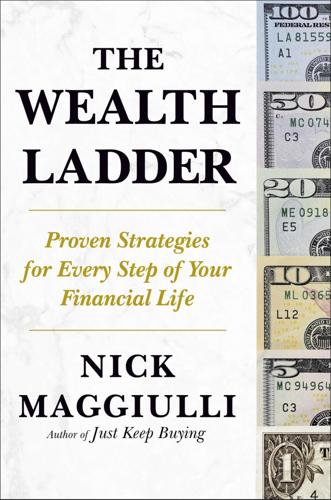
The Wealth Ladder: Proven Strategies for Every Step of Your Financial Life
by
Nick Maggiulli
Published 22 Jul 2025
,” Edge Delta (blog), March 11, 2024, https://edgedelta.com/company/blog/how-much-data-is-created-per-day. BACK TO NOTE REFERENCE 1 James Gleick, The Information: A History, a Theory, a Flood (New York: Pantheon, 2011), 401. BACK TO NOTE REFERENCE 2 “AI Safety and the Legacy of Bletchley Park,” Talking Machines, February 25, 2016, https://www.thetalkingmachines.com/episodes/ai-safety-and-legacy-bletchley-park. BACK TO NOTE REFERENCE 3 About the Author Nick Maggiulli is the chief operating officer and data scientist at Ritholtz Wealth Management, where he oversees operations across the firm and provides insights on business intelligence.
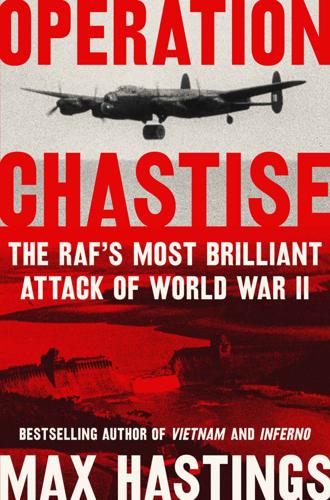
Operation Chastise: The RAF's Most Brilliant Attack of World War II
by
Max Hastings
Published 18 Feb 2020
An important part of the reason for this was that they empowered many of the brightest people in their societies to deploy their talents, with an imagination which the dictatorships never matched. The codebreakers of the US Navy’s Op20G and the US Army’s Arlington Hall, together with Britain’s Bletchley Park, provided conspicuous examples of this phenomenon. So, too, did a host of projects commissioned and undertaken by scientists and engineers on both sides of the Atlantic. Although Barnes Wallis’s Big Plane, Big Bomb proposals had been formally rejected in May 1941, he nonetheless persuaded the MAP’s David Pye that he should retain access to government facilities, to continue his experiments on the ballistics of dam-breaking.
…
Portal, the man who decreed the dams raid, played a curiously passive role here, failing to intervene as he had intervened to mandate Chastise in February 1943, now to insist upon an attack on the dams’ repairs. Although there is no evidence to explain the chief of air staff’s silence and apparent inertia, it may be relevant to notice the intelligence analysis that then lay upon Air Ministry desks. Bletchley Park’s codebreakers swiftly accessed the special cypher used by Speer, his subordinates and local police forces to communicate about the dam disaster between 17 and 25 May. According to the British official historians of intelligence, ‘the decrypts showed that the emergency was quickly controlled’.
…
Norm, 128, 147, 172, 181, 183, 260, 263 Batson, Sgt. Ron, 183 Baxter, Cpl. Peter, 267–8 Beaverbrook, Lord (Max Aitken), 33 Bentine, Michael, 307 Berkenkopf, Father, 238 Berlin, 136, 172, 231, 273, 284–6 Bettany, Guy, 268–9 Bever dam, 227 Bielefeld viaduct attack, 292 Bishop, Air Marshal Billy, 78 Blackett, Professor Pat, 41 Bletchley Park codebreakers, 2, 24, 37, 282 bomb-aimers, 104, 111, 129–30 bombs: 500-lb, 17; contact charges, 43; deep-penetration, 33–5, 37, 204–5, 292; General Purpose (GP), 8, 20; Grand Slam, 292; High-Capacity (HC), 20; hydrostatic pistols, 22, 38–9, 62, 200, 204; Mistel ‘piggyback’, 276; physics of explosions, 38–9, 42–4; ‘Tallboys’, 204–5, 292 see also Highball; Upkeep Boorer, Norman, 30 Boscombe Down experimental station, 129–30 Bottomley, AVM Norman, 19, 51–2, 60, 61, 80–1, 152, 265 Brady, F/Sgt.
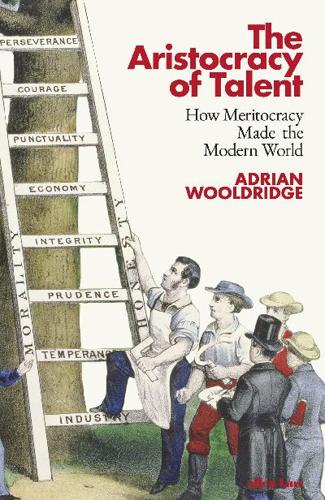
The Aristocracy of Talent: How Meritocracy Made the Modern World
by
Adrian Wooldridge
Published 2 Jun 2021
Wodehouse’s Ring for Jeeves (1953) because he has gone to a school designed to teach aristocrats to fend for themselves (i.e. learn how to darn their own socks), lest ‘the social revolution should set in with greater severity’.6 Even the legal system belatedly conceded the idea that all men are equal before the law: in 1948 peers finally lost their right to be tried before their fellows in the Lords.7 At the same time, the war reinforced the cult of education and science that had sprung up during the Great Depression. Scientists had invented the world’s most powerful weapon, the atomic bomb. Boffins had broken the Germans’ codes in Bletchley Park. Maynard Keynes had invented a way of saving the economy from depression. Academics moved in and out of Whitehall in the form of the ‘great and the good’, a development celebrated in C. P. Snow’s meritocrat-worshipping ‘Strangers and Brothers’ novels. Ensconced in romantic Oxford and Cambridge colleges, gifted with elegant prose styles, linked by friendship and even marriage to fashionable society, post-war intellectuals such as A.
…
American women were given the vote in 1920 and British women in 1928. The Second World War provided women another big push. In America, Rosie the Riveter became a symbol of women’s can-do spirit as they took the place of men in factories. In Britain, some 8,000 women, making up 80 per cent of the workforce, worked at Bletchley Park, Britain’s code-breaking headquarters, operating the cipher machines that, according to some historians, shortened the war by two years.33 Some of the women were recruited in fairly conventional ways, by asking Oxbridge tutors to nominate their brightest students, but some were recruited more imaginatively, by getting women to complete cryptic crosswords at high speed.
…
Abolishing mortgage-interest tax deduction, which helps already wealthy people to buy homes, would allow the government to increase the size of its housing programmes for the poor without putting more pressure on the Exchequer.40 With a bit of imagination new technology can also be used to equalize life chances. During the Second World War, Bletchley Park did an impressive job of discovering untapped female talent by recruiting people who could solve crosswords and other puzzles. Unit 8200 of the Israeli Defense Forces, an elite cyber-security group that is so exclusive global companies such as Google and Facebook compete to hire ‘graduates’ of the unit without expecting them to bother with university, does something similar today.

Human Frontiers: The Future of Big Ideas in an Age of Small Thinking
by
Michael Bhaskar
Published 2 Nov 2021
Far from an admission of defeat or inadequate recognition of past challenges, the Idea Paradox clarifies that we need an emboldened, confident response. 6 The Stagnant Society Inventing the Twenty-first Century For forty-plus years, Bell Labs, the greatest industrial laboratory in history, ‘the idea factory’ of the twentieth century, invented the future. Then it stopped. Why? If one big idea defines the early twenty-first century, it's digital technology: a world-changing general purpose technology. But the story of its creation is revealing. The Digital Age was spawned in Bell Labs, and in other very specific places like Bletchley Park, Princeton, the state-run Advanced Research Projects Agency (ARPA) and Xerox PARC. Without these organisations it's unclear how we would have reached our present technological settlement. The production and dissemination of big ideas can be fragile, contingent on specific circumstances. Change them just a bit and the breakthrough could be lost.
…
But the diversity is greater still – you could argue that the structure of Oxbridge colleges enables experimental spaces, just as organisations like Y Combinator do for startup ideas, or ARPA does for technology in general. Lastly come even purer breakthrough organisations – those with a specific mission geared around executing a particular idea. Places like Bletchley Park or the Manhattan Project, which grew out of the Second World War, are emblematic here – faced with a monumental problem or challenge, they assemble a taskforce to achieve it. This form may be the only way of taking on many of our biggest questions. DeepMind, the Human Genome Project and IBM's quantum computing centre resemble this kind of organisation, with a clear goal and the means to achieve it.
…
utm_source=twitterShare White, Curtis (2003), The Middle Mind: Why Americans Don't Think for Themselves, San Francisco: HarperSanFrancisco White, Curtis (2014), The Science Delusion: Asking the Big Questions in a Culture of Easy Answers, New York: Melville House Whitehead, A.N. (1925), Science and the Modern World, London: Macmillan Williams, Jeffrey J. (2018), ‘The Rise of the Promotional Intellectual’, The Chronicle of Higher Education, accessed 22 August 2018, available at https://www.chronicle.com/article/the-rise-of-the-promotional-intellectual/ Wilson, Edward O. (2017), The Origins of Creativity, London: Allen Lane Winchester, Simon (2008), The Man Who Loved China: The Fantastic Story of the Eccentric Scientist Who Unlocked the Mysteries of the Middle Kingdom, New York: HarperCollins Wolf, Martin (2019), ‘On the Technological Slowdown’, Foreign Affairs, accessed 14 July 2019, available at https://www.foreignaffairs.com/articles/2015-11-19/martin-wolf-innovation-slowdown Wong, May (2017), ‘Scholars say big ideas are getting harder to find’, Phys.org, accessed 10 October 2018, available at https://phys.org/news/2017-09-scholars-big-ideas-harder.html Wootton, David (2015), The Invention of Science: A New History of the Scientific Revolution, London: Allen Lane Wright, Robert (2000), Nonzero: History, Evolution and Human Cooperation, New York: Pantheon Books Wright, Ronald (2006), A Short History of Progress, Edinburgh: Canongate Wu, L., Wang, D., and Evans, J.A. (2019), ‘Large teams develop and small teams disrupt science and technology’, Nature 566, pp. 378–82 Wuchty, Stefan, Jones, Benjamin F., and Uzzi, Brian (2007), ‘The Increasing Dominance of Teams in Production of Knowledge’, Science, Vol. 316 No. 5827, pp. 1036–9 Xinhua (2019), ‘China to build scientific research station on Moon's south pole’, Xinhua, accessed 18 January 2021, available at http://www.xinhuanet.com/english/2019-04/24/c_138004666.htm Yueh, Linda (2018), The Great Economists: How Their Ideas Can Help Us Today, London: Penguin Viking Index ‘0,10’ exhibition 103 ‘0-I’ ideas 31 Aadhaar 265 abstraction 103 AC motor 287, 288 academia 209 Académie des sciences 47 Adam (robot) 235–6 Adams, John 211 Adler, Alfred 188 Adobe 265 Advanced Research Projects Agency (ARPA) 180, 247, 253, 296, 317 AEG 34 aeroplanes 62–6, 68–70, 71, 219 Aeschylus 3 Africa 267, 279–80, 295 age/ageing 122, 158–60, 193 AGI see artificial general intelligence Agrarian Revolution 252 agricultural production 92–3 AI see artificial intelligence Akcigit, Ufuk 193 Alexander the Great 159 Alexander, Albert 52 Alexandrian Library 4, 295, 304 algorithms 175, 185, 196, 224, 235, 245 aliens 240–1, 306, 308–9, 337 Allison, Jim 58 Alphabet 193, 225, 265, 294, 295 AlphaFold software 225–6, 227, 228–9, 233 AlphaGo software 226–7, 228, 233 AlQuraishi, Mohammed 225, 226, 229 Amazon 84–5, 214, 272 Amazon Prime Air 71 American Revolution 139 amino acids 223, 226 Ampère, André-Marie 74–5 Anaximander 35 ancestors 10–12 ancient Greeks 1–6, 7–8, 291, 303–4 Anderson, Kurt 106 Angkor Wat 43 anthrax 47–8, 51 Anthropocene 14–15 anti-reason 211–12 anti-science 211–12 antibacterials 234 antibiotics 38, 52–3, 124, 125, 217, 315 resistance to 235 Apollo missions 70, 315, 316, 317, 318 Apple 33, 85, 159, 185, 186, 193, 272, 296, 312 Aquinas, Thomas 36 AR see augmented reality archaeology 153–4 Archimedes 1–6, 7–8, 19, 27, 32, 37, 39, 291, 304 architecture 103, 115, 188 ARIA 297 Aristarchus 5 Aristotle 24, 108, 282, 304 Arkwright, Richard 25, 26, 34, 253 Armstrong, Louis 103 ARPA see Advanced Research Projects Agency art 99–104, 107–8, 176–7, 236, 321, 339 Artemis (Moon mission) 71, 218 artificial general intelligence (AGI) 226, 237–8, 249, 250, 310, 313, 330, 341 artificial intelligence (AI) 225–9, 233–41, 246–7, 248, 249–52, 262, 266, 300, 310, 312–13, 323, 329, 330, 331, 338 arts 152, 293 see also specific arts Artsimovich, Lev 147 arXiv 116 Asia 264, 267–8, 273, 275 Asimov, Isaac, Foundation 45 Astor, John Jacob 288 astronomy 30, 231, 232 AT&T 85, 181, 183, 185, 197 Ates, Sina T. 193 Athens 24, 295 Atlantis 154 augmented reality (AR) 241–2, 338 authoritarianism 112–13, 284 autonomous vehicles 71, 72, 219 ‘Axial Age’ 108 Azoulay, Pierre 317–18 Bach, J.S. 236 bacillus 46 Bacon, Francis 25, 259 bacteria 38, 46, 53 Bahcall, Safi 31 Ballets Russes 99–100 Baltimore and Ohio railway 67 Banks, Iain M. 310 Bardeen, John 182 BASF 289 Batchelor, Charles 286 Bates, Paul 226 Bayes, Thomas 289 Beagle (ship) 36 Beethoven, Ludwig van 26 Beijing Genomics Institute 257, 294–5 Bell Labs 180–4, 186–8, 190, 206, 214, 217, 289, 296, 322 Benz, Karl 68, 219, 330 Bergson, Henri 109 Bessemer process 80 Bezos, Jeff 71, 326 Bhattacharya, Jay 201, 202, 321 Biden, Joe 59 Big Bang 117, 174, 181 Big Big Ideas 79–80 big ideas 5, 8, 11, 13–19 adoption 28 and an uncertain future 302–36 and art 99–103 artificial 223–38 and the Big Ideas Famine 13 and bisociation 36 blockers to 17–18 and breakthrough problems 46–73, 77, 86, 98, 222, 250, 301 and the ‘burden of knowledge’ effect 154–65, 175, 178, 235, 338 and business formation 95 ceiling 18 conception 37 definition 27–8, 40–1 Enlightenment 132–40, 136–40 era of 109–10 erroneous 176 evidence for 222, 223–54 execution 37 ‘fishing out’ mechanism 152 future of 45, 98, 302–36, 337–43 harmful nature 41–2 how they work 23–45 and the Idea Paradox 178–9, 187, 191, 217, 226, 250, 254, 283–4, 301, 312, 342 and the Kardashev Scale 337–43 long and winding course of 4, 5, 35–8, 136 and the low-hanging fruit paradox 149–54, 167, 178 and luck 38–9 moral 136, 138 nature of 169–72 necessity of 41–3 need for 42–3 normalisation of 171–5, 178 originality of 28 paradox of 143–79 and patents 97 process of 37–8 purchase 37–8 and resources 128 and rights 132–40 and ‘ripeness’ 39 and short-termism 192 slow death of 106–7 slowdown of 98 society's reaction to 216 and specialisation 156, 157–8 today 21–140 tomorrow 141–343 big pharma 31, 60, 185, 217–18, 226 Big Science 118–19 Bill of Rights 137 Bingham, Hiram 153 biology 243–8, 300 synthetic 245–6, 251, 310, 329 BioNTech 218, 298 biotech 195–6, 240, 246, 255–8, 262, 266, 307 bisociation 36 Björk 104 Black, Joseph 26 ‘black swan’ events 307, 310 Bletchley Park 180, 296 Bloom, Nick 91, 92, 93 Boeing 69, 72, 162, 165, 192, 238 Bohr, Niels 104, 118, 159 Boltsmann, Ludwig 188 Boston Consulting Group 204 Botha, P.W. 114 Bowie, David 107 Boyer, Herbert 243 Boyle, Robert 232 Brahe, Tycho 36, 229, 292 brain 166, 246–8, 299–300 collective 299, 300–1 whole brain emulations (‘ems’) 248–9, 341 brain drains 197 brain-to-machine interfaces 247–8 Branson, Richard 71 Brattain, Walter 182 Brazil 266–7, 268, 279 breakthrough organisations 294–9 breakthrough problems 46–73, 77, 86, 98, 222, 234, 250, 301 breakthroughs 2–5, 27–8, 32–7, 41, 129, 152, 156 and expedition novelty 333 hostility to 187 medical 58–60 missing 175 near-misses 160 nuclear power 145 price of 87–98 and short-termism 192 slowdown of 87, 94 society's reaction to 216 and universities 204 see also ‘Eureka’ moments breast cancer 94 Brexit referendum 2016: 208 Brin, Sergey 319, 326 Britain 24, 146, 259, 283, 297 see also United Kingdom British Telecom 196 Brunel, Isambard Kingdom 67 Brunelleschi 232 Bruno, Giordano 216 Buddhism 108, 175, 264–5, 340 Buhler, Charlotte 188–9 Buhler, Karl 188–9 ‘burden of knowledge’ effect 154–65, 175, 178, 235, 338 bureaucracy 198–87, 280–1 Bush, George W. 211 Bush, Vannevar 168, 314–15, 317 business start-ups 95–6 Cage, John 104 Callard, Agnes 111 Caltech 184 Cambridge University 75, 76, 124, 235–6, 257, 294–6 canals 67 cancer 57–61, 76, 93–4, 131, 234, 245, 318 research 59–61 capital and economic growth 88 gray 192, 196 human 275, 277 capitalism 36, 111–13, 186, 189, 191–8 CAR-Ts see chimeric antigen receptor T-cells carbon dioxide emissions 220–1 Cardwell's Law 283 Carey, Nessa 244 Carnap, Rudolf 189 Carnarvon, Lord 153 cars 289 electric 71 flying 71 Carter, Howard 153 Carter, Jimmy 58 Carthage 3, 43 Cartright, Mary 163 CASP see Critical Assessment of Protein Structure Prediction Cassin, René 135 Catholic Church 206, 230 Cavendish Laboratory 76, 294 Cell (journal) 234 censorship 210–11 Census Bureau (US) 78 Centers for Disease Control 212 Cerf, Vint 253 CERN 118, 233, 239, 252, 296 Chain, Ernst 52, 60, 124 Champollion, Jean-François 155 Chang, Peng Chun 135 change 10–13, 18–19, 24 rapid 30, 32 resistance to 222 slowdown 85 chaos theory 163 Chaplin, Charlie 104 Chardin, Pierre Teilhard de 300 Charpentier, Emmanuelle 244, 256 chemistry 49, 56, 104, 117, 118, 124, 149–50, 159, 241, 244 chemotherapy 57 Chicago 10 chicken cholera 46 chimeric antigen receptor T-cells (CAR-Ts) 58, 61 China 15, 25, 71–2, 111, 112, 138, 208, 213, 216, 255–64, 265, 266, 267, 268, 275, 277, 279, 280, 283, 284–5, 312, 313, 314, 319, 328 Han 259, 260 Ming 284, 308, 309 Qing 260 Song 24, 259–60, 306 Tang 259–60 Zhou 259 Christianity 108, 303–4, 340 Church, George 245 cities 270–2, 308–9, 340 civilisation collapse 42–4 decay 187 cleantech 195 climate change 219–21, 284, 313–14, 338 clinical trials 218 cliodynamics 339 coal 23, 24, 26, 80, 220 Cocteau, Jean 101 cognitive complexity, high 332–3 cognitive diversity 281–3 Cognitive Revolution 252 Cohen, Stanley N. 243, 244 collective intelligence 339 collectivism 282 Collison, Patrick 117, 272 colour 75 Coltrane, John 104 Columbian Exchange 177 Columbus 38 comfort zones, stepping outside of 334 communism 111, 133, 134, 173, 217, 284 companies creation 95–6 numbers 96–7 competition 87, 283 complacency 221–2 complexity 161–7, 178, 204, 208, 298, 302, 329 high cognitive 332–3 compliance 205–6 computational power 128–9, 168, 234, 250 computer games 107 computers 166–7, 240, 253 computing 254 see also quantum computing Confucianism 133, 259 Confucius 24, 108, 109, 282 Congressional Budget Office 82 connectivity 272 Conon of Samos 4 consciousness 248, 340 consequences 328–9 consolidation, age of 86 Constantine 303 convergence 174, 311–12 Copernicus 29, 30, 41, 152, 171, 229, 232, 292 copyright 195 corporations 204–5 cosmic background microwave radiation 117, 181 cotton weaving, flying shuttle 24–5 Coulomb, Charles-Augustin de 74–5 counterculture 106 Covid-19 (coronavirus) pandemic 13, 14, 15, 55, 86, 113–14, 193, 202, 208, 212, 218, 251–2, 263, 283–4, 297–8, 309, 318, 327 vaccine 125, 245 Cowen, Tyler 13, 82, 94–5, 221 cowpox 47 creativity 188, 283 and artificial intelligence 236 crisis in 108 decrease 106–8 and universities 203 Crete 43 Crick, Francis 119, 296 CRISPR 243, 244, 251, 255–8, 299 Critical Assessment of Protein Structure Prediction (CASP) 224–6, 228 Cronin, Lee 242 crop yields 92–3 cultural diversity 281–3 cultural homogenisation 177 cultural rebellion 106–7 Cultural Revolution 114, 305 culture, stuck 106 Cunard 67 Curie, Marie 104, 144, 203, 289–90, 332 Daniels, John T. 62–3 Daoism 259 dark matter/energy/force 338 DARPA see Defense Advanced Research Projects Agency Darwin, Charles 34, 35–6, 37–8, 41, 77, 109, 118, 171, 289 Darwin, Erasmus 35 data 233 datasets, large 28 Davy, Sir Humphrey 149, 150 Debussy, Claude 100–1 decision-making, bad 43–4 Declaration of Independence 1776: 137 Declaration of the Rights of Man and Citizen 1789: 137 DeepMind 225–9, 296 Defense Advanced Research Projects Agency (DARPA) 315 democracy 111–12 Deng Xiaoping 261 deoxyribonucleic acid (DNA) 119, 223–4, 243, 251, 255, 339 DNA sequencing 56 Derrida, Jacques 109 Deutsch, David 126, 203 Diaghilev, Sergei 99–101 Diamond, Jared 42 Digital Age 180 digital technology 241–2, 243 diminishing returns 87, 91, 94, 97, 118, 123, 126, 130–1, 150, 161, 169, 173, 222, 250, 276, 285, 301 Dirac, Paul 159–60 disruption 34, 96, 109, 119, 157 diversity, cultural 281–3 DNA see deoxyribonucleic acid Dorling, Danny 171 Doudna, Jennifer 244, 251, 256 Douglas, Mary 290 Douthat, Ross 14, 106 drag 65 Drake equation 306 Drezner, Daniel 214 drones, delivery 71, 72 Drucker, Peter 189 drugs 55–7, 124, 235 Eroom's Law 55, 57, 61, 92–3, 119, 161, 234, 245, 338 and machine learning 234 research and development 55–7, 61, 92–4, 119, 161, 172–3, 217–18, 234, 245, 315, 338 see also pharmaceutical industry Duchamp, Marcel 103, 171 DuPont 184 Dutch East India Company 34 Dyson, Freeman 120 dystopias 305–8 East India Company 34 Easter Island 42–3 Eastern Europe 138 ecocides 42–3 economic growth 240, 272, 273, 316 endogenous 94 and ideas 88, 89–92, 95 process of 87–8 slowdown 82, 83, 84, 85, 178 economics 87–9, 98, 339, 340 contradictions of 87 Economist, The (magazine) 188 Edelman annual trust barometer 209 Edison, Thomas 183–4, 286–9, 290, 293 education 127, 277, 324–8 Einstein, Albert 11, 29, 74, 77, 104, 109, 117, 119, 124, 159–60, 203, 332 Eisenstein, Elizabeth 231 Eldredge, Niles 30 electric cars 71 electricity 11, 74–7, 81, 286–7, 289 electromagnetic fields 76 electromagnetic waves 75, 76 elements (chemical) 149–50 Elizabeth II 144–5 employment 204–5 Encyclopædia Britannica 97, 128, 155 ‘End of History’ 112 energy 337–8, 341–2 availability 85 use per capita 85 see also nuclear power engineering 243 England 25, 144–5, 309 Englert, François 118 Enlightenment 130, 136–40, 252 see also Industrial Enlightenment; neo-Enlightenment Eno, Brian 295 entrepreneurship, decline 96 epigenetics 164 epigraphy 236–7 epistemic polarisation 210 Epstein, David 334 Eratosthenes 5 Eroom's Law 55, 57, 61, 92–3, 119, 161, 234, 245, 338 ethical issues 256–7 Euclid 3, 304 ‘Eureka’ moments 2–5, 35, 36–7, 129, 163 Europe 95, 247, 258–60, 268, 268, 271, 283, 304, 308 European Space Agency 71 European Union (EU) 206, 216, 262, 266 Evans, Arthur 153 evolutionary theory 30, 35–6 expedition novelty 333 experimental spaces 296–8 Expressionism 104 Facebook 34, 159, 170, 197 Fahrenheit 232 failure, fear of 335 Faraday, Michael 75 FCC see Future Circular Collider FDA see Food and Drug Administration Federal Reserve (US) 82 Feigenbaum, Mitchell 163 fermentation 49 Fermi, Enrico 143, 159, 306 Fermi Paradox 306 Fernández-Armesto, Felipe 109 fertility rates 269 Feynman, Richard 77, 166, 332 film 104, 106–7, 108, 115 financialism 191–8, 206–7, 214, 217, 219 Firebird, The (ballet) 99–100 ‘first knowledge economy’ 25–6 First World War 54, 99, 104, 187, 188–9 Fisk, James 182 Fleming, Alexander 38, 52, 60, 332 flight 36, 62–6, 68–70, 71, 335 Flint & Company 64 flooding 220, 284 Florey, Howard 52, 60, 124, 332 Flyer, the 62–4, 66, 72 Foldit software 225 Food and Drug Administration (FDA) 55, 60, 93, 212 food supply 81 Ford 34, 253 Ford, Henry 68, 104, 219 Fordism 81 Foucault, Michel 110 Fraenkel, Eduard 124 France 49–51, 54, 64, 67, 95, 279, 309, 332 franchises 31 Franklin, Benjamin 119, 211 Frederick the Great 292 French Revolution 137, 275 Freud, Sigmund 34, 36, 77, 104, 171, 188, 190, 216 frontier 278–9, 283–4, 302, 310–11 Fukuyama, Francis 111–12 fundamentalism 213 Future Circular Collider (FCC) 239 futurology 44 Gagarin, Yuri 70 Galen 303 Galileo 206, 231, 232, 291, 322 Galois, Évariste 159 GDPR see General Data Protection Regulation Gell-Mann, Murray 77 gene editing 243–4, 251, 255–8 General Data Protection Regulation (GDPR) 206 General Electric (GE) 33, 184, 265, 288, 333 General Motors 289 Generation Z 86 genes 223–4 genetic engineering 243–4, 251, 253, 255–8 genetic science 163–4, 202 genius 26 genome, human 119, 202, 244, 255–7, 296, 313 genome sequencing 243–4 germ theory of disease 50–1, 53 Germany 54, 95, 96, 279, 283, 292, 332 Gesamtkunstwerk 99 Gibson, William 241 Glendon, Mary Ann 135 global warming 147 globalisation 177 Go 226–7 Gödel, Kurt 41, 168 Goldman Sachs 197 Goodhart's Law 199 Google 34, 85, 185, 197, 240, 272, 318 20 per cent time 319–20 Google Glass 241 Google Maps 86 Google Scholar 116 Google X 294 Gordon, Robert 13, 83, 94–5 Gouges, Olympe de 137 Gould, Stephen Jay 30 Gove, Michael 208 government 205, 207, 214, 216, 252, 267–8, 297 funding 185–6, 249, 252, 314–19, 321 GPT language prediction 234, 236 Graeber, David 13–14, 111 grants 120, 185–6, 195, 202, 316, 317, 319, 321–3 gravitational waves 117–18, 119 Great Acceleration 309–10 Great Convergence 255–301, 339 Great Disruption 96 Great Enrichment (Great Divergence) 23, 26, 258 Great Exhibition 1851: 293, 309 Great Stagnation Debate 13–14, 16, 17, 45, 72, 82–3, 87, 94–6, 129, 150, 240, 279, 338 Greenland 42 Gropius, Walter 103 Gross Domestic Product (GDP) 82, 90, 128, 278, 318 GDP per capita 23, 78, 82 growth cultures 25 growth theory, endogenous 88–9, 94 Gutenberg, Johannes 36 Guzey, Alexey 200, 322 Haber, Fritz 332 Haber-Bosch process 289 Hadid, Zaha 152 Hahn, Otto 144 Hamilton, Margaret 316 Harari, Yuval Noah 114–15, 236 Harris, Robert 307 Harvard Fellows 200 Harvard, John 156 Harvey, William 34, 291–2 Hassabis, Demis 229, 233 Hayek, Friedrich 189 Hegel, Georg Wilhelm Friedrich 36 Heisenberg, Werner 41, 159, 168, 332 heliocentric theory 5, 29, 118, 232, 304 helium 145 Hendrix, Jimi 105 Henry Adams curve 85 Hero of Alexandria 39 Herper, Matthew 55 Hertz, Heinrich 76 Herzl, Theodor 188 Hesse, Herman 307 Hieron II, king of Syracuse 1–2 Higgs, Peter 118 Higgs boson 117–18, 119, 239 Hinduism 133 Hiroshima 144 Hitler, Adolf 138, 188 Hodgkin, Dorothy 124, 332 Hollingsworth, J.
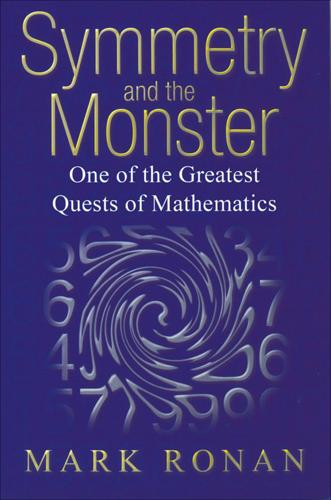
Symmetry and the Monster
by
Ronan, Mark
Published 14 Sep 2006
Atkin was an expert on the j-function and the mini-j-functions. He was also a computer expert who had at one time worked at the Atlas laboratory, the place where Leech and McKay were working when they tried to interest people in Leech’s lattice. Many years before that, when he was a young man, Atkin had worked at Bletchley Park, the British decoding centre during the Second World War. Before long letters were flying back and forth between Cambridge and Chicago, and two of Atkin’s group theory colleagues, Paul Fong and Stephen Smith, soon got involved. Paul Fong had been a student of Richard Brauer, he of the big cross-section theorem that inspired Thompson and Feit, and in March 1979 Thompson wrote him a letter that started as follows: Dear Paul, How I wish Richard were alive!
…
Index Abel prize, 226 Abel, Niels Henrik, 20, 226 Alperin, Jonathan, 123, 125 Aschbacher, Michael, 165–8, 174, 214 Atkin, A. O. L., 191, 201–2 Atlas, 179–85 Atlas Laboratory (computer centre), 149, 190 atom of symmetry, 8, 40 exceptional, 128, 155, 161, 179, 211, 244–7 Baby Monster, 159, 165, 178–80 Babylonians, 16 Baer, Reinhold, 132, 158–9 black hole, 222 Bletchley Park, 202 block system, 109–11 Bolyai, Farkas, 195–6 Bolyai, Janos, 195–6 Borcherds, Richard, 4, 219–20, 224–5 Borel, Armand, 91 Bourbaki, Nicolas, 90–4, 112 Brauer, Alfred, 115 Brauer, Richard, 115–9, 121, 124, 202 building 98, 111–12, see also multi-crystal Burnside, theorem of, 86 Burnside, William, 84–7, 123 calculus, 87, 89 Cameron, Peter, 134 Cardano, Gerolamo, 17–19 Cartan, Élie, 69–70, 73 Cartan, Henri, 91–2 Cauchy, Augustin, 14, 26, 46–7 character table, 134, 181 character theory, 86 Chevalley, Claude, 94–5, 99 Classification (of finite simple groups), 119, 136, 171–5, 212–14 Conway groups, 155 Conway, John Horton, 2, 148–56, 178–83, 199–203, 210–11, 213, 227 Conway–Norton conjectures, 217, 219, 225 coordinate geometry, 60 cross-section, 118–19 cube, 5–9, 103–15 cube, symmetry of, 50 Curtis, Robert, 179–82 cyclic arithmetic, 80–2, 83–4 decomposition, see deconstruction deconstruction, 34 del Ferro, Scipione, 17–19 Deligne, Pierre, 108 Descartes, René, 59 Dickson, Leonard Eugene, 79–80, 82–3, 88 Dieudonné, Jean, 92 dodecahedron, 6, 9, 103–4 Dürer, Albrecht, 28 Dyson, Freeman, 4 Einstein, Albert, 72–3, 220–2 electromagnetism, 72 electron, 75 electron orbital, 75–6 Engel, Friedrich, 64, 68, 71 equation, algebraic, 15–21 differential, 57–8 irreducible, 27, 29, 32 Euclid, 27, 90, 196–7 Euler, Leonard, 33, 202 Feit, Walter, 114, 119–23, 164, 168 Feit-Thompson theorem, 117, 119 Fermat’s Last Theorem, 46 Ferrari, Ludovico, 17–19 Feynman, Richard, 45, 75 Fibonacci, Leonardo, 28–9 Fields medal, 124, 225 Fischer groups, 161–4, 178 Fischer, Bernd, 157–9, 160–1, 175–88, 191–3 Fong, Paul, 202 Fontana, Niccolo, see Tartaglia four dimensions, 60–1 Fourier, Joseph, 22 Frenkel, Igor, 218 Galois group, 34 Galois, Évariste, 11–15, 20–6, 31–5 Gauss, Carl Friedrich, 11, 19 Goddard, Peter, 225 Goethe, Johann Wolfgang von, 3, 10 Goldbach conjecture, 113 golden section, 27–30, 238–9 Gorenstein, Daniel, 119, 123, 135, 172–5, 211, 213 Gosset, Thorold, 106 gravitation, 73, 87 Griess, Robert, 178, 206–10 group, 33 group of Lie type, see periodic table group, as abstract concept, 50–1 cyclic, 34 of permutations, 42–3 prime cyclic, 34–5 simple, see atom of symmetry sporadic, see atom of symmetry, exceptional sub-group, 43, 45 Hales, Thomas, 146 Hall, Marshall, 136, 138–40 Harada, Koichiro, 184 Held, Dieter, 137–8, 179 Higman, Donald, 139 Higman, Graham, 149 Hilbert, David, 77, 131 Hughes, Daniel, 122 hyperbolic plane, 196 icosahedron, 6, 9, 103–4 interchange, see permutation involution centralizer, see cross-section involution, see mirror symmetry, transposition Janko groups, 135–6, 137–8, 189 Janko, Zvonimir, 125–8, 134–8, 179, 189, 214 j-function, 191–4, 199, 217–19, 227–8 j-function, mini-, 199, 217 Jordan, Camille, 48–9, 82 Kepler conjecture, 146–7 Khayyám, Omar, 16–17 Killing, Wilhelm, 63–8 Killing-Cartan classification, 70 Klein, Felix, 56, 63–4 Lagrange, Joseph-Louis, 19, 43–4 Lagrange, theorem of, 43, 45 Leech Lattice, 147–55, 179, 216–17, 220, 242–3 Leech, John, 147–9 Leon, Jeffrey, 188 Leonardo da Vinci, 28 Lepowsky, James, 218 Lie algebras, 220 Lie groups, 59, 62, 76, 79 classical, 66, 83 Lie theory, 72 Lie, Sophus, 53–59, 62–5, 67–8, 69, 70 Livingstone, Donald, 185–8 Lobachevski, Nikolai, 195–6 Lorentzian, 223–4 Louis-Phillipe, King of France, 23 Loyd, Sam, 36–8 Lyons, Richard, 179, 211, 213 MacLane, Saunders, 115–16, 121, 173 Mason, Geoffrey, 212 Mathieu groups, 131, 133, 161–3 Mathieu, Émile, 130–1, 133 McKay, John, 1, 149, 190, 228 McLaughlin, John, 155 Meurman, Arne, 218 Miller, G.
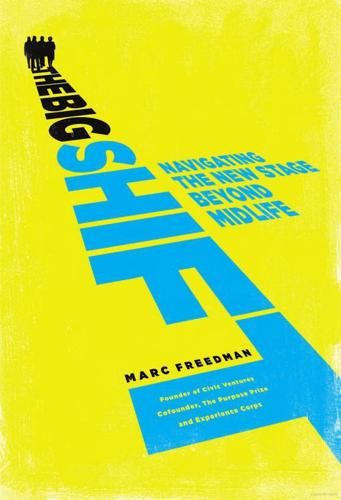
The Big Shift: Navigating the New Stage Beyond Midlife
by
Marc Freedman
Published 15 Dec 2011
In World War II, which interrupted his academic career, he served in the Royal Navy, traveling dangerous supply routes through the icy waters between Britain and Russia. He barely survived. He told me that he’d been dubbed “Lucky Laslett” for managing to evade mortal harm during that period. He was eventually pulled from active duty and transferred to Bletchley Park, where he learned Japanese and became a code breaker in British naval intelligence. After the war, Laslett diverted from the academic path again to work as a broadcaster and producer for BBC’s Third Programme, the arts and culture channel that enabled him to pursue his lifelong interest in translating the world of ideas for a wide audience.
…
According to Young, “At the start of his lectures, Peter Laslett would take off his coat, take off his gown, take off his jacket, unbutton his shirt sleeves and roll them up, while the audience sat frozen in anticipation that, this time, he would take off all his clothes. Perhaps it was his wartime Japanese naval intelligence code breaking at Bletchley Park that gave him a taste for action.” Laslett and Young once hatched a plan as young lecturers to create a second university on the Cambridge grounds, accessible to ordinary people and designed to meet during the nearly half of the year when the regular Cambridge students were on break. Later they combined to cofound the Open University in 1969.

On the Slow Train Again
by
Michael Williams
Published 7 Apr 2011
So don’t turn left out of the station, where you will find only a soulless and half-tenanted 1980s shopping mall and a high street dominated by pound shops – and, for some reason, a disproportionate number of butchers’. Instead, cross the road and turn into the drive of Bletchley Park, the world’s first large-scale code-breaking centre, where the Cambridge mathematician Alan Turing and the cream of Oxbridge’s academics raced against time to crack Germany’s Enigma code. ‘Bletchley Park was Britain’s greatest achievement of 1939–45 and perhaps the twentieth century,’ wrote George Steiner, the cultural historian. And there can be few other buildings where a connection with the railways has played such a major part in the security of the nation.
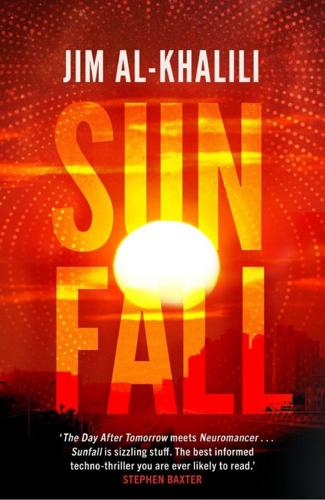
Sunfall
by
Jim Al-Khalili
Published 17 Apr 2019
And yet, and yet … All the time the Project had been just an idea in Marc Bruckner and Qiang Lee’s heads – a set of equations and computer simulations – she’d been fine, but seeing it take shape like this now suddenly unsettled her. A billion things could go wrong, a malfunction in a small component somewhere, one simple miscalculation, a bug in a line of code – and it would be curtains. She looked up at the giant magnets suspended high above her head. What the hell were we thinking? 33 Tuesday, 10 September – Bletchley Park, Buckinghamshire, England A faint breeze ruffled the tops of the trees lining the cycle path, but the sky was clear and blue. It was going to be another hot day. The temperature in western Europe had broken all records this summer and had nudged above 40˚C in Britain for the third year running.
…
After the CERN incident she had been one of an army of cyber experts assigned the job of uncovering who had been behind it. The Purifiers had not claimed responsibility, but then what group would claim credit for a botched attempt? But now, as Ignition approached, security was being ramped up to feverish levels. And work at Bletchley Park was no different. It suited Shireen just fine being able to come and go relatively freely, even though she knew that every move she made was being monitored and scrutinized. At least she’d been allowed to block out the intrusion into her augmented reality feed and get some privacy back. She overtook a couple of joggers.
…
The work at the Centre for Intelligence on Cyberterrorism was in a high-security compound just outside the city of Milton Keynes, north of London, where she was part of a team of frighteningly brilliant young coders, mathematicians and cyber espionage specialists. Of course, no one ever used the organization’s unflattering acronym and the place was known locally by its more popular name of Bletchley. Everyone here, as far as she could tell, was doing pretty much what Bletchley Park had been famous for one hundred years ago when it was home to an equally brilliant group of young British cryptanalysts and codebreakers led by Alan Turing. Today, Bletchley was a United Nations of geeks, all working together to monitor worldwide cyberterrorist activities. Most of the people seemed friendly enough.
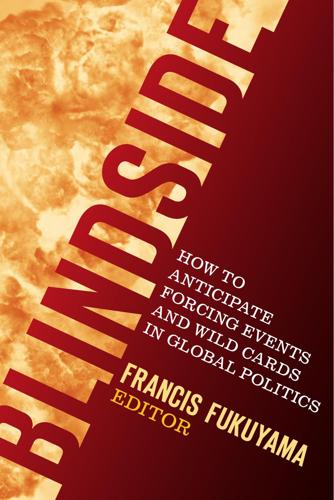
Blindside: How to Anticipate Forcing Events and Wild Cards in Global Politics
by
Francis Fukuyama
Published 27 Aug 2007
Bush had secured funding for development of an all-electronic analyzer, and had organized a broad program of analog computing research that would continue at MIT until well after World War II. The war, of course, created any number of desperate demands for computation, which in turn led to two of the most famous of the pioneering computers: the digital, all-electronic Colossus, which was actually a series of machines created at the British code-breaking center, Bletchley Park, as a tool for cracking the most difficult German ciphers;5 and the digital, all-electronic ENIAC, which was constructed by engineers at the University of Pennsylvania to calculate artillery trajectories.6 Starting in mid-1944, moreover, the ENIAC team was joined by the world-renowned, Hungarian-born mathematician John von Neumann, who was also a participant in the super-secret Manhattan Project—and who was looking for computing machines that could help out with the horrendous calculations needed in that effort.
…
See Bird flu Balance of payments, 44, 45, 49–50 Bangladesh, climate change in, 105 Banking, in East Asian economic crisis, 44–45, 46, 52 Bank of Thailand, 45 Barbarian societies, 131 Baron, Jon, 110–11 Bataille, Georges, 161 Believability: of asteroid strike scenario, 3, 98; of strategic surprises, 93–94, 98, 103–05 Bellah, Robert, 103 Berlin Wall, fall of, 2 Bernanke, Ben, 148 Berners-Lee, Tim, 123 index Bias(es): denial as form of, 103; against optimism, in intelligence community, 2–3; toward optimism, in policymaking, 111 Binary mathematics, in digital computers, 123–24 Bin Laden, Osama, 72 Bioengineering, 163 Biofuels, 78–80 Biological weapons: affordability of, 8; infectious disease as, 83; optimism vs. pessimism about prospect of, 136; political barriers to preparing for, 10; probability of attack with, 10; technological innovation in, 163 Biotechnology, 163 Bird flu: H5N1 strain of, 82, 83, 84, 85; H7N7 strain of, 86; optimism vs. pessimism about prospect of, 136 Blair, Tony, 105 Bletchley Park (Britain), 122 “Blue” states, 141 BNP. See British National Party Bold policies, 109–10, 118–19 Bolivia, political Left in, 149 Bolshevik Revolution, 154 Bovine spongiform encephalopathy (BSE): prevention of, 83–84; reporting on, 87; surveillance of, 86 Brazil, ethanol in, 78, 79, 81 Britain: demographics in, postwar, 130, 132, 139–40; infectious disease in, 83, 85–86; in NATO, 107; oil dependence in, 78; political Left in, 149–50; prioritizing of risks in, 147–48; technology innovation in, 60 British Foreign Service, 145–46 British National Party (BNP), 149–50 British Parliament, Reagan’s 1982 address to, 33, 40 Brown, Gordon, 150 BSE.

Whiplash: How to Survive Our Faster Future
by
Joi Ito
and
Jeff Howe
Published 6 Dec 2016
The relatively primitive mechanical devices of early cryptography, like the cipher disk Alberti used to track his shifting alphabets, grew increasingly complex, culminating in advanced cryptographic machines like the German Enigma machine of World War II, whose theoretically unbreakable ciphers were betrayed by a simple design flaw—no letter encoded by an Enigma would ever be encoded as itself. Alan Turing and Gordon Welchman led a team at Bletchley Park, England, that created an electromechanical device to help discover the shifting keys to the Enigma codes. Called the Bombe, the device could eliminate thousands of possible combinations, leaving a much smaller number of potential ciphers for the human cryptographers at Bletchley to try.30 When the Nazis replaced Enigma with Lorenz—a secure means of encoding teleprinter messages for radio transmission, which the British knew as “Tunny”—Tommy Flowers, a British engineer, countered with Colossus, the first programmable electronic digital computer.
…
Shannon, “A Mathematical Theory of Communication,” SIGMOBILE Moble Computing Communications Review 5, no. 1 (January 2001): 3–55, doi:10.1145/584091.584093. 33 C. E. Shannon, “Communication Theory of Secrecy Systems,” Bell System Technical Journal 28, no. 4 (October 1, 1949): 656–715, doi:10.1002/j.1538-7305.1949.tb00928.x. 34 B. Jack Copeland, Colossus: The Secrets of Bletchley Park’s Code-Breaking Computers (OUP Oxford, 2006). 35 Russell Kay, “Random Numbers,” April 1, 2002. 36 Singh, The Code Book. 37 David R. Lide, ed., A Century of Excellence in Measurements, Standards, and Technology: A Chronicle of Selected NIST Publications 1901–2000, NIST Special Publication 958 (Washington, D.C.: U.S.

Crypto: How the Code Rebels Beat the Government Saving Privacy in the Digital Age
by
Steven Levy
Published 15 Jan 2002
Each day the encrypters would reset the wheels in a different way; those receiving the message would already have been informed of what those settings should be on that given day. That’s why the Allied coup of recovering live Enigma machines—the key intelligence breakthrough of World War II—was only part of the elaborate codebreaking process that took place at Bletchley Park in England. The cryptanalysts also had to learn the process by which the Axis foes made their settings; then they could conduct what was known as a “brute force” attack that required going through all the possible combinations of settings. This could be efficiently done only by creating machines that were the forerunners of modern computers.
…
The very inclusion of the topic on the agenda couldn’t have pleased the NSA: in its view, any knowledge of codebreaking outside the Triple Fence represented a possible threat to its own codes. Diffie himself had been worried that the session would be a bust. Over the winter he had arranged for the presentations. But one by one, for various reasons, his presenters dropped out. By late spring only one survived—a talk entitled “The Bombe at Bletchley Park,” by one of the original World War II codebreakers. It was Adi Shamir who came to the rescue. Shamir had been studying Ralph Merkle’s knapsack scheme for public key cryptography. And now, several weeks before the conference, he thought he had broken it, at least the weaker variation of the system known as the single-iteration knapsack.
…
(Simon Singh’s account in The Code Book was to follow.) Ellis’s paper “The Story of Non-Secret Encryption” lays the outline for the discoveries and, like the other CESG papers, is available on its Web site. Some of Clifford Cocks’s remarks here were drawn from “The Invention of Non-Secret Encryption,” a talk given at Bletchley Park on June 20, 1998, at a “History of Cryptography” seminar hosted by the British Society for the History of Mathematics. Page 316 Project C43 The paper is still not available. It is unclear whether this research was related to speech-encryption work known as “Project X” in Bell Labs. In Turing: The Enigma, Andrew Hodges describes Alan Turing’s participation in that project, which also benefited from the input of Claude Shannon (also at Bell Labs then) and William Friedman.

Normandy '44: D-Day and the Epic 77-Day Battle for France
by
James Holland
Published 3 Jun 2019
Michael: The 82nd Airborne Division in World War II, Da Capo, 2011 Lucas, James, German Army Handbook, 1939–1945, Sutton, 1998 Mackenzie, William, The Secret History of SOE Special Operations Executive 1940–1945, St Ermin’s Press, 2000 Macintyre, Ben, Double Cross: The True Story of the D-Day Spies, Bloomsbury Publishing, 2012 —, SAS: Rogue Heroes, Penguin Viking, 2016 Mallman Showell, Jak P., Hitler’s Navy, Seaforth Publishing, 2009 Man, John, The Penguin Atlas of D-Day and the Normandy Campaign, Viking, 1994 Margaritis, Peter, Crossroads at Margival: Hitler’s Last Conference in France, June 17, 1944, Self-published, 2009 Mazower, Mark, Hitler’s Empire: Nazi Rule in Occupied Europe, Allen Lane, 2008 McFarland, Stephen L., and Phillips Newton, Wesley, To Command the Sky: The Battle for Air Superiority Over Germany 1942–1944, Smithsonian Institution Press, 1991 McKay, Sinclair, The Secret Life of Bletchley Park, Aurum, 2011 —, The Secret Listeners: How the Y Service Intercepted the German Codes for Bletchley Park, Aurum, 2013 McManus, John C., Grunts: Inside the American Infantry Experience, NAL Caliber, 2010 McNab, Chris (ed.), German Paratroopers, MBI, 2000 Mead, Richard, Churchill’s Lions: A Biographical Guide to the Key British Generals of World War II, Spellmount, 2007 —, The Men Behind Monty, Pen & Sword, 2011 Meilinger, Colonel Phillip S., The Paths of Heaven: The Evolution of Airpower Theory, Air University Press, 1997 Messenger, Charles, The Second World War in the West, Cassell, 2001 Meyer, Hubert, The 12th SS: The History of the Hitler Youth Panzer Division, Vol.
…
Incredibly, Göring also had his own private intelligence system, the Forschungsamt, but this was primarily for keeping him one step ahead of his enemies – and those were within the Nazi hierarchy, not outside it. The British and Americans, on the other hand, pooled their intelligence very effectively. Much, rightly, has been made of the code-breakers of Bletchley Park cracking the German Enigma machines used to send coded Morse messages; but the cryptanalysts at Bletchley had also broken the Lorenz cipher machines attached to teleprinters, which the Germans used between Berlin and major headquarters and commanders in the field. In the run-up to OVERLORD, this decoded traffic, known as ‘Fish’, gave the Allies a pretty clear picture of troop dispositions in Normandy and throughout OB West.
…
While it was true that they were at long last out of range of Allied naval guns, there were now many more Allied air forces operating over Normandy and, with improved weather, the movement of the LÜTTICH force, kicking up dust, made them an obvious target, even though the operation was launched amid heavy ground mists in the early hours of Monday, 7 August. Even worse for the Germans was the fact that Bradley knew the assault was coming. Given Ultra clearance, he was able to see decrypts of German Enigma-coded radio traffic decoded at Bletchley Park throughout 5 August, revealing troop movements that seemed to indicate the Germans were planning some kind of counter-attack. By 2 p.m. on the 6th, it was revealed they would be attacking westwards, with further details of the attacking force just before 8 p.m. Another decrypt at eleven minutes past midnight on 7 August was passed on to Bradley, reporting a German attack towards Mortain.
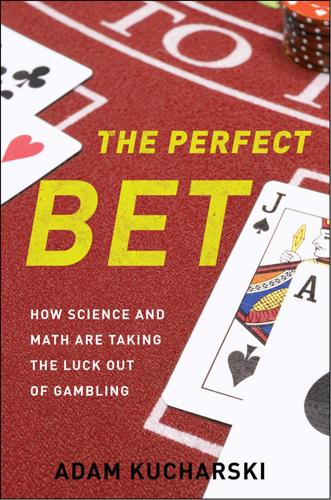
The Perfect Bet: How Science and Math Are Taking the Luck Out of Gambling
by
Adam Kucharski
Published 23 Feb 2016
Although he was based mainly in Cambridge, he also took up a part-time position with the Government Code and Cypher School at nearby Bletchley Park. When the Second World War broke out in autumn 1939, Turing found himself at the forefront of the British effort to break enemy codes. During that period, the German military encrypted radio messages using so-called Enigma machines. These typewriter-like contraptions had a series of rotors that converted keystrokes into coded text. This complexity of the encryption was a major obstacle for the code breakers at Bletchley Park. Even if Turing and his colleagues had clues about the messages—for example, certain “crib” words that were likely to appear in the text—there were still thousands of possible rotor settings to trawl through.
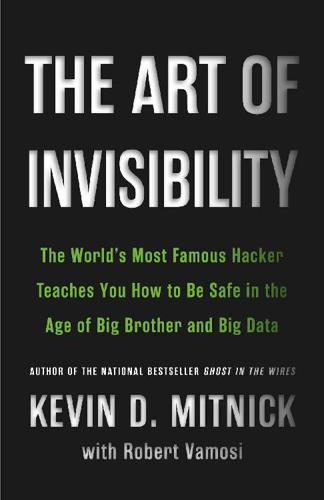
The Art of Invisibility: The World's Most Famous Hacker Teaches You How to Be Safe in the Age of Big Brother and Big Data
by
Kevin Mitnick
,
Mikko Hypponen
and
Robert Vamosi
Published 14 Feb 2017
Or can they? In World War II the British government set up a number of listening stations around the country to intercept signals from the German military. The advances that led to the Allies decrypting these messages came a bit later—at Bletchley Park, the site of the Government Code and Cypher School, where the German Enigma code was broken. Early on, the people at Bletchley Park intercepting the German telegraph messages could identify certain unique characteristics of a sender based on the intervals between the dots and the dashes. For example, they could recognize when a new telegraph operator came on, and they even started giving the operators names.

Possible Minds: Twenty-Five Ways of Looking at AI
by
John Brockman
Published 19 Feb 2019
The vast majority of computer chips built in the era of Moore’s Law are based on the von Neumann architecture, including those powering our data centers, our laptops, and our smartphones. Von Neumann’s digital-computer architecture is conceptually the same generalization—from early digital computers constructed with electromagnetic relays at both Harvard University and Bletchley Park—that occurs in going from a special-purpose Turing Machine to a Universal Turing Machine. Furthermore, his self-replicating automata share a fundamental similarity with both the construction of a Turing Machine and the mechanism of DNA-based reproducing biological cells. There is to this day scholarly debate over whether von Neumann saw the cross connections between these three pieces of work, Turing’s and his two.
…
More surprising to me, though, was that the AI-risk message arose almost simultaneously with the field of computer science. In a 1951 lecture, Alan Turing announced: “[I]t seems probable that once the machine thinking method had started, it would not take long to outstrip our feeble powers. . . . At some stage, therefore, we should have to expect the machines to take control. . . .”* A decade or so later, his Bletchley Park colleague I. J. Good wrote, “The first ultraintelligent machine is the last invention that man need ever make, provided that the machine is docile enough to tell us how to keep it under control.”* Indeed, I counted half a dozen places in The Human Use of Human Beings where Wiener hinted at one or another aspect of the Control Problem.
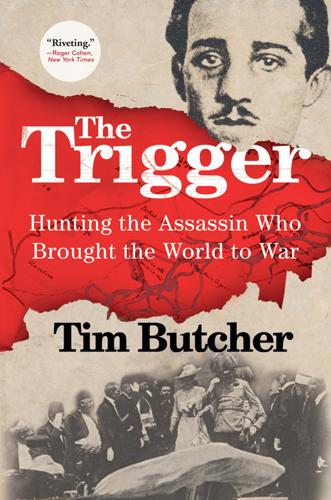
The Trigger: Hunting the Assassin Who Brought the World to War
by
Tim Butcher
Published 2 Jun 2013
While it is true that there were communist supporters within British intelligence – this was the period before Kim Philby, Guy Burgess, Donald Maclean et al. were exposed as Moscow’s agents – I don’t believe their involvement settled the issue of where British support in Yugoslavia should go. Within the last few years it has been revealed that British code-breakers at Bletchley Park were able to decrypt German military communications emerging from the Balkans during the Second World War. These messages showed that the Wehrmacht took the threat from the partisans more seriously than that from any others. What Maclean recommended, however, was a policy shift that would have a huge impact on the Balkans, a consequence that the warrior-diplomat was aware of at the time.
…
Donia: Sarajevo – A Biography, 2006, University of Michigan Press Lawrence Durrell: White Eagles Over Serbia, 1957, Faber and Faber Charlotte Eagar: The Girl in the Film, 2008, Reportage Modris Eksteins: Rites of Spring – The Great War and the Birth of the Modern Age, 2012, Vintage Canada Ralph Erskine and Michael Smith, editors: The Bletchley Park Codebreakers, 2010, Dialogue Arthur John Evans: Through Bosnia and the Herzegovina On Foot, 1876, Longmans, Green and Co. – Illyrian Letters, 1878, Longmans, Green and Co. Tony Fabijančić: Bosnia – In the Footsteps of Gavrilo Princip, 2010, University of Alberta Press Hans Fronius: Das Attentat von Sarajevo, 1988, Styria Misha Glenny: The Fall of Yugoslavia – The Third Balkan War, 1992, Penguin – The Balkans 1804–1909: Nationalism, War & the Great Powers, 1999, Granta Books Richard Greene: Edith Sitwell – Avant Garde Poet, English Genius, 2011, Virago John Gunther: Inside Europe, 1938, Harper Max Hastings: Catastrophe – Europe Goes to War in 1914, 2013, William Collins Richard Holmes: Soldiers – Army Lives and Loyalties, 2011, HarperPress Rezak Hukanović: The Tenth Circle of Hell, 1997, Little, Brown Dobroslav Jevdjević: Sarajevski Atentatori,1934, Binoza Vladimir Jokanović: Made in Yugoslavia, 2000, Picador Robert D.

Messy: The Power of Disorder to Transform Our Lives
by
Tim Harford
Published 3 Oct 2016
Perhaps defeat was inevitable anyway: Rommel was on sick leave in Germany when the battle began, and his deputy was killed almost immediately; Rommel’s British adversary, Montgomery, had much shorter supply lines, excellent air support, four times as many good tanks, and seven times as many men. But Rommel’s undoing was a rare emphasis on careful logistical planning. Dreadfully short of fuel, Rommel insisted on knowing to the hour when and where tanker ships from Italy would be docking to supply his forces. He didn’t know about Ultra and Bletchley Park, the top-secret codebreaking center; he never realized that every single one of those “unbreakable” coded messages was being decoded. Supplied with that tidy German schedule, the British air force destroyed most of the gasoline tankers, and Rommel’s dynamic panzers were stranded. It’s hard to get inside your enemy’s OODA loop when he’s reading your mail.
…
(Whittaker), 240 Amazon, 124–27, 136–41 Ambulance response time, 159–61, 170–71 Anderson, Laurie, 17n Andreessen, Marc, 242, 243 Anechoic chambers, 75 Annealing, simulated, 10–11 Another Green World (Eno album), 9, 16 Apgar score, 153–55, 157 Apple (company and products), 63, 69, 139 Aquinas, Thomas, 93 Architecture, 68 modernist, 61–63, 72 playground, 269–70, 273 workplace, 70–73, 80, 85 Architecture of Happiness, The (de Botton), 62 Argentina, 216 Ariely, Dan, 248, 255, 256 Armitage, Simon, 31 Artificial intelligence, 252 Asch, Solomon, 47–48, 272n16 Attention deficit/hyperactivity disorder (ADHD), 18 Attentional filters, 17 Australia, 55, 68–69, 192, 207 Automation, 177–204, 258 disasters caused by, 177–86 human overreliance on, 192–98 unreliability of, 186–92 See also Computers Autonomy in childhood, 264 in workplace, 67–68, 80–84, 87–89 Avalanches, 165–66, 169 Aztec Empire, 34 Baar, Roland, 33 Bahns, Angela, 53–54 Bali, 190 Ball, David, 262 Banking regulations, 161–67, 169–74 Bardeen, John, 26 Barnes & Noble, 136–39 Basel Accords, 161–65, 169–70 Beagle (ship), 27 Beatles, 98 Beckmann, Johann Gottlieb, 150–53, 191, 205, 206 Belew, Adrien, 20–22, 97 Bentham, Jeremy, 170, 171 Beranek, Leo, 75–76 Berger, Warren, 71 Berkowitz, Aaron, 275n23 Berlin Wall, 8 Bevan, Gwyn, 172 Bezos, Jeff, 124–27, 129, 132, 136–41, 143–44, 146, 264 BHP Billiton, 68–69, 86 Big Sort, The (Bishop and Cushing), 217 Biodiversity, 155, 157, 206 Birmingham (England), 213–14 University of, 156 Bishop, Bill, 217 Blair, Tony, 149–50, 152, 155, 159, 170, 172, 173 Blaser, Martin, 208–9 Bletchley Park (England), 147 Blitzkrieg, 128 Blyton, Enid, 45 Bohlin, Peter, 63 Bolt, Beranek and Newman, 75–76, 78 Bombardier Inc., 51 Bonding, 36–39, 41, 57, 60 Bonin, Pierre-Cédric, 178–82, 185–86, 199 Borges, Jorge Luis, 234–39 Bose Corporation, 76, 78 Bösendorfer piano, 1–2 Boston, Route 128 technology cluster in, 214–15 Boston Attention and Learning Lab, 16 Boulder (Col.), 46–47 Bowie, David, 7–9, 16, 17n, 20, 25, 28 Boy Scouts, 42 Boyd, John, 132–35, 137, 140, 144, 264 “Boys Keep Swinging” (Bowie), 21, 22 Bradley, Sarah, 92 Brailsford, Dave, 58 Brand, Stewart, 79 Brandes, Vera, 1–3, 5 Braun, Allen, 99–100 Bridging, 38–39, 41, 57 Brin, Sergey, 81 Britain.
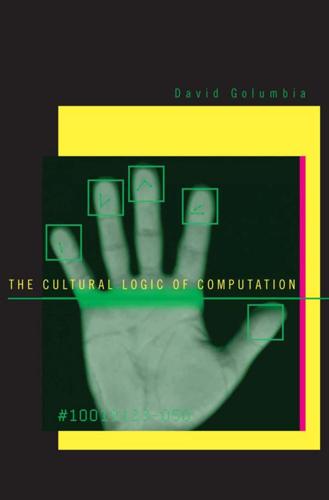
The Cultural Logic of Computation
by
David Golumbia
Published 31 Mar 2009
The most famous part of Weaver’s memorandum suggests that MT is a Computationalist Linguistics p 89 project similar to cryptanalysis, one of the other primary uses for wartime computing. Since cryptanalysis seems to involve language, it may be natural to think that the procedures used to replicate the German Enigma coding device (via Turing’s work with the aptly named “Bombe” computer at Bletchley Park) might also be applicable to the decoding of human language. Of course, in actuality, neither Enigma nor the Bombe played any role in translating, interpreting, or (metaphorically) decoding language: instead, they were able to generate statistically and mathematically sophisticated schemes for hiding the intended linguistic transmission, independent in every way of that transmission.
…
Weaver’s principal intuition, that translation is an operation similar to decoding, was almost immediately dismissed even by the advocates of MT as a research program. In standard histories of MT, we are told that this Computationalist Linguistics p 93 approach was “immediately recognized as mistaken” (Hutchins 1986, 30), since the “computers at Bletchley Park were applied to cracking the cipher, not to translating the German text into English” (30). This conclusion emerges from engineering investigation into the problem, since few linguists or philosophers would have assented to the view that languages are codes; nevertheless, even today, a prominent subset of computationalists (although rarely ones directly involved in computer language processing) continue to insist that formal languages, programming languages, and ciphers are all the same kinds of things as human languages, despite the manifest differences in form, use, and meaning of these kinds of systems.
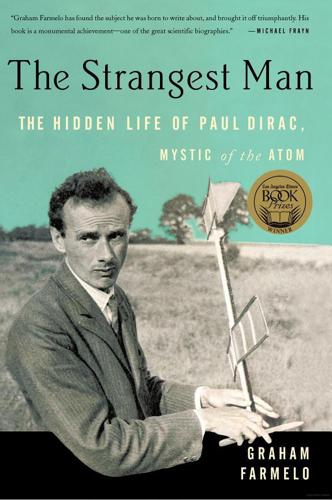
The Strangest Man: The Hidden Life of Paul Dirac, Mystic of the Atom
by
Graham Farmelo
Published 24 Aug 2009
It would be better to bomb the enemy’s fleet of U-boats, he told an unmoved Lindemann. Churchill persevered with his policy and kept his scientific committees at a distance: for him, ‘Scientists should be on tap, not on top.’7 Like many mathematicians, Dirac was invited to work at the Government’s research station in Bletchley Park. In late May 1942, he was approached by the ancient-history scholar Frank Adcock, who had been charged with recruiting the best Cambridge brains. Adcock wrote to Dirac, ‘There is some work concerned with the war which is itself important and would, I believe, be of interest to you. I am not free to say just what the work is.’8 When Dirac asked to know more, a Foreign Office official wrote to clarify: ‘The work would be a full-time job [nominally nine hours a day] and would require you to leave Cambridge.’9 With Manci four months pregnant, this was too much disruption for Dirac to contemplate, so he never did work in the huts of Bletchley Park with Max Newman and Newman’s former student Alan Turing.10 This would have been one of the most intriguing collaborations of the war.
…
I am not free to say just what the work is.’8 When Dirac asked to know more, a Foreign Office official wrote to clarify: ‘The work would be a full-time job [nominally nine hours a day] and would require you to leave Cambridge.’9 With Manci four months pregnant, this was too much disruption for Dirac to contemplate, so he never did work in the huts of Bletchley Park with Max Newman and Newman’s former student Alan Turing.10 This would have been one of the most intriguing collaborations of the war. In Cambridge, Dirac supervised graduate students and gave his quantum-mechanics lectures to about fifteen students on Tuesday, Thursday and Saturday mornings.
…
E. (1995) Edwin Hubble: Mariner of the Nebulae, Bristol: Institute of Physics Publishing. Churchill, Randolph (1965) Twenty-One Years, London: Weidenfeld and Nicholson. Conquest, R. (1986) Harvest of Sorrow: Soviet Collectivization and the Terror-Famine, New York: Oxford University Press. Copeland, B. J. (2006) Colossus: The Secrets of Bletchley Park’s Codebreaking Computers, Oxford: Oxford University Press. Cornwell, J. (2003) Hitler’s Scientists, London: Penguin Books. Craigie, N. S., Goddard, P. and Nahm, W. (eds) (1983) Monopoles in Quantum Field Theory, Singapore: World Scientific. Crease, R. P. and Mann, C. C. (1986) The Second Creation: Makers of the Revolution of Twentieth Century Physics, New Brunswick, NJ: Rutgers University Press.

This Will Make You Smarter: 150 New Scientific Concepts to Improve Your Thinking
by
John Brockman
Published 14 Feb 2012
Alan Turing, the father of the modern computer, began by thinking about the highly conscious and deliberate step-by-step calculations performed by human “computers” like the women decoding German ciphers at Bletchley Park. His first great insight was that the same processes could be instantiated in an entirely unconscious machine, with the same results. A machine could rationally decode the German ciphers using the same steps that the conscious “computers” went through. And the unconscious relay-and-vacuum-tube computers could get to the right answers in the same way the flesh-and-blood ones could. Turing’s second great insight was that we could understand much of the human mind and brain as an unconscious computer too. The women at Bletchley Park brilliantly performed conscious computations in their day jobs, but they were unconsciously performing equally powerful and accurate computations every time they spoke a word or looked across the room.
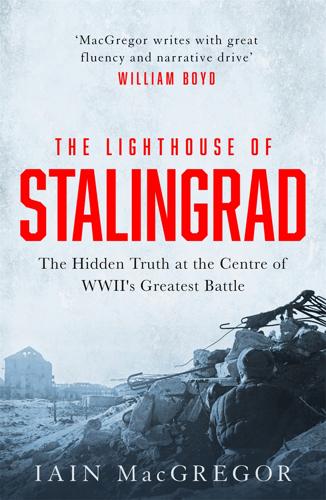
The Lighthouse of Stalingrad: The Hidden Truth at the Centre of WWII's Greatest Battle
by
Iain MacGregor
Published 27 Jul 2022
The Soviet leader, however, convinced himself that the advantageous trade agreements that favored Germany would guarantee the peace for many more months, and that the German troop concentrations on the new border carved out of Poland were preparing in secret for the invasion of Great Britain.18 Weeks before the invasion began, British code breakers cracked the German Enigma code at Bletchley Park, and their reports were reinforced by reports from the Polish resistance of German troop movements. Winston Churchill’s ambassador to Moscow, Sir Stafford Cripps, was ordered to inform the Kremlin of British fears a German attack was likely. Stalin was not convinced. The warnings from American intelligence were given equally short shrift.
…
Uwe Roske 43 Author’s collection Index Adam, Colonel Wilhelm, 63, 245, 252–3, 267, 269 Afanasiev, Lieutenant Ivan F., 188–93, 226–8, 290, 296, 299 Alexandrov, Private, 190 Andriyanov, Major, 132, 155, 185 Andropov, Yuri, 3 Anikin, Junior Lieutenant Alexei, 226 Avagimov, Commissar, 226 B., Private Christian, 67 Babi Yar, 48 Baku, 60 Barmaley Fountain, 141 Barrikady Gun Factory, 14, 121, 145, 147–8, 206, 209, 277 Bath House, 239, 263 Bayerlein, Lieutenant Colonel, 258 Beevor, Antony, 19, 21 Beketovka, 269–70, 273 Below, Lieutenant Colonel von, 116 Below, Major von, 258 Berlin, battle of, 12, 184, 291, 293 Berlin Wall, fall of, 17 Berndl, Private, 109, 272 Bletchley Park, 33 Blitzkrieg, 26 Bock, Field Marshal Fedor von, 37, 48–9, 51, 55, 59 Brauchitsch, Field Marshal Walther von, 26, 45, 165 Brest Fortress, 12 Brewery, 115, 135, 227, 288 Brezhnev, Leonid, 2–4, 12 Budyonny, Marshal S. M., 33 Burkovski, Albert, 88 Burmakov, Major General Ivan, 268 Case Blue (Fall Blau), 155, 176, 261, 273 Castro, Fidel, 295 Central Ferry Crossing, 107, 127, 134, 146, 149 Central Landing, 9, 90, 92, 103, 115, 117–18, 120, 143, 150, 155, 184 Chemical Plant, 206 Chepurin, Juliy Petrovich, 288–90 Cherkasova, Alexandra Maksimovna, 291–4 Chervyakov, Senior Lieutenant Z.

Markets, State, and People: Economics for Public Policy
by
Diane Coyle
Published 14 Jan 2020
Electricity generation Space exploration Social media Postal service Car manufacturing Roads Broadband network Airlines One industry the UK singled out was computers, with the creation of a national champion in ICL, formed with government encouragement out of smaller predecessor companies and with the government holding a 10% stake. The UK had been a pioneer in developing programmable computers, not least because of the stellar efforts of Alan Turing, Bill Tutte, and the codebreakers at Bletchley Park during World War II, but its industry had fallen far behind the US by the 1960s. Much of the research had occurred in universities and the post office, while official secrecy prevented the Bletchley Park pioneers from even discussing their achievements, much less commercializing them. Other European countries also tried to establish national computer champions, such as Bull in France (nationalized by the Mitterrand government in 1982, re-privatized in 1994) and Olivetti in Italy (absorbed into Telecom Italia in 1999 as an office and technology services subsidiary after its initial success as a computer manufacturer in the 1960s–80s faded; now producing notebook computers).

Boom: Bubbles and the End of Stagnation
by
Byrne Hobart
and
Tobias Huber
Published 29 Oct 2024
The more people who dive in with both feet, the more likely it is that their collective efforts will eventually produce something that makes all the work and risk worthwhile. The cognitive supply chain Stanley Frankel and Eldred Nelson at Los Alamos and Alan Turing at Bletchley Park in the UK can all claim an approximate tie for the title of the first modern computer programmer. There had been mechanical computing devices before World War II, with Ada Lovelace and Charles Babbage’s Difference Engine in the 1830s a notable early example. But it was during the war that engineers at Los Alamos and Bletchley Park first systematized computation in a way that would be familiar to anyone who programs today: They broke tasks down into discrete steps, some of which could be executed trivially and some of which required more hands-on effort.
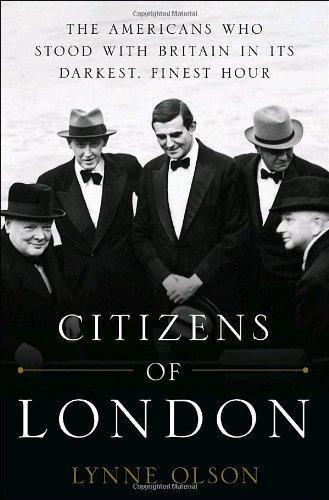
Citizens of London: The Americans Who Stood With Britain in Its Darkest, Finest Hour
by
Lynne Olson
Published 2 Feb 2010
But the Europeans’ greatest contribution was in the field of intelligence. Just before the Battle of Britain began, British code breakers at Bletchley Park succeeded in cracking the Luftwaffe’s version of the cipher produced by Germany’s complex Enigma machine. Months later, they broke the Enigma cipher of the German navy and then the army. The information produced by British cryptographers about German military tactics and plans proved critical to the winning of the Battle of the Atlantic and to Allied victory. But Bletchley Park could not have done it without the help of the French and, above all, the Poles. Using documents supplied by French intelligence, Polish cryptographers in the early 1930s were the first to decipher Enigma intercepts.
…
That device, and information about German codes passed on by the Poles, provided the foundation upon which the British built their own fabled code-breaking system. A master at taking credit for wartime intelligence successes that did not, in fact, originate in his agency, Stewart Menzies, head of the vaunted Secret Intelligence Service (MI6), had been quick to claim control of Bletchley Park. That gave him the pleasurable job of presenting Churchill with Bletchley’s latest “golden eggs” of intelligence. While Menzies “bathed in the reflected glory cast upon him … the truth was that SIS could not claim exclusive responsibility for any of the major intelligence coups of the war,” declared one British intelligence official.
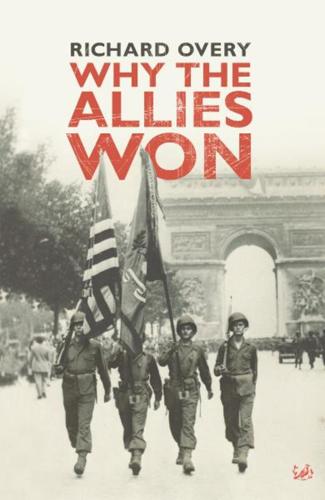
Why the Allies Won
by
Richard Overy
Published 29 Feb 2012
On 6 March he announced that Britain was now fighting ‘the Battle of the Atlantic’ which he regarded with justice as ‘the real issue of the war’ for Britain.18 The concentration of British minds on the naval war produced some positive results. British cryptanalysts at the code and cypher school at Bletchley Park succeeded in breaking enough of the German naval code to be able to steer convoys away from the gathering wolves for the summer months. Desperate efforts were made to provide better air cover for convoys and escort vessels for the whole of the North Atlantic run, and a submarine Tracking Room set up in London succeeded through a combination of secret intelligence and intelligent guesswork in steering large numbers of convoys clear of danger altogether.19 But losses continued to mount elsewhere.
…
After a string of glaring intelligence errors in the past, the Soviet High Command also insisted on the topmost priority for intelligence gathering of all kinds. Some was provided from Britain, but the most detailed information was culled from the Ultra decrypts and forwarded by the Soviet spy John Cairncross (later revealed as the ‘Fifth Man’ of the Cambridge spy ring), who had found himself a job at the Bletchley Park intelligence centre in 1942. But most of the intelligence on German troop concentrations came as a result of great improvements in Soviet intelligence gathering, particularly in reading low-level German radio traffic, and in using small storm detachments to capture Germans from the front-lines for interrogation.55 Though Soviet commanders never guessed the exact striking point for the German attack, they had a much clearer idea of what they were up against than in previous campaigns.
…
A4 rocket, 292–5 Aachen, 151 Abyssinia see Ethiopia Acheson, Dean, 402 Adam Opel company, 248 administration see leadership agriculture and food: Germany, 245; Lend-Lease, 311; Soviet Union, 223, 229–30, 231; US, 241 air war: Allied air power, 275–8; eastern front, 93–5, 110, 158, 258, 260–2, 263, 268–70, 396; German loss of air power, 157–9, 260–1, 342, 395–8; and invasion of France (1944), 158–9, 181–3, 192, 196, 199, 202, 206, 207, 209, 210, 211, 218–19, 255–6, 277–8, 395, 396; North Africa, 276–7; and oil supplies, 285, 286–7; role in war’s outcome, 395–8; and sea war, 36–7, 60–1, 68, 69, 70, 71–2, 141, 280–1, 396; Soviet air power, 258, 260–2; US close-support tactics, 276–7; see also bombing campaigns aircraft Allied bomber production, 133, 138 British: Lancaster bomber, 138; Swordfish, 37; VLR, 68, 69, 73 eastern front, 258, 260–2, 263 fuel supplies, 285, 286–7 German: Fw-190, 262; He-177, 269; Hs-129, 269; Ju-87, 127; Ju-288, 269; Me-109, 250, 260, 262; Me-110, 136; Me-210, 269; numbers, 263; production, 5–6, 134, 151–2, 245–6, 247, 250, 251, 269–70; quality, 6; Stuka, 260 Japanese, 273; Zeke/Zero, 40 production statistics, 407 Soviet, 93, 260–1; I-15, 260; I-16, 260; Il-2 Sturmovik, 110, 262, 432; La-5, 262, 432; Lagg-3, 262, 432; numbers, 262, 279; Pe-2, 432; production, 220–1, 224, 225, 226–7; quality, 6; Yak-1, 220–1; Yak-9, 262, 432 tactical importance, 257, 258, 263, 268–70 US: B-17 Flying Fortress, 140, 255, 276; B-24 Liberator, 240, 255, 276; B-29 Super-Fortress, 153, 276; numbers, 279, 454; P-38 Lightning, 150, 255, 276; P-51 Mustang, 150–1, 276; P-147 Thunderbolt, 150, 151, 211, 255, 276; production, 150–1, 234, 235, 239–42 Akagi, 49, 50, 51 El Alamein, Battle of (1942), 20, 271 Alanbrooke, Viscount: background and war role, 330–2; and Churchill, 327, 329, 330–1; on Eisenhower, 177, 425; and invasion of France (1944), 174, 175, 182, 193, 201, 218; at Teheran (1943), 303, 317, 322 Albert Hall New Year pageant (1942), 309 Aleutian Islands, 40, 45, 47 Alexander, Field Marshal Harold, 329 Alexei, Metropolitan, 348 Allies: emergence of coalition, 18; fighting skills, 7; strength of coalition, 344–5, 390–1 Animal Farm (Orwell), 365 Anschluss (1938), 13 Anthony, 165 Antonov, Alexei, 332–4 Anvil, Operation (1944), 179, 214 Ardenne, Baron Manfred von, 291 Ardennes offensive (1944–45), 216 Argentina, 20, 75–6 armour see tanks Arnold, General ‘Hap’, 150, 276, 302, 317 artillery: German, 160, 250; Hedgehog mortars, 62; Japanese, 271, 272; production statistics, 408; Soviet, 109–10, 158, 224, 228; US, 235, 241 ASDIC, 37 Astrakhan, 81 Atlantic, Battle of the, 30–9, 54–63, 64–73, 74, 141, 393, 396 Atlantic Charter (1941), 32 Atlantic conference (1941), 30–3 Atlantic Gap, 58, 65–73, 393 Atlantic Wall, 187–9 atomic weapons, 142–3, 154–5, 245, 287–91, 295–7, 364 Augusta, 31 Australia: Japanese threat to, 18, 40; as US springboard, 41–2 Austria: annexation to Germany (1938), 13 Auto-Union company, 248 Aviaprom, 225 Avranches, 211, 212 Axis: expansion (1938–42), 19 Azores, 71 B-Dienst, 57, 65 Baku, 284 Balkans, 328 Barbarossa, Operation (1941–43), 78–122; German brutality, 372–3; German initial successes, 16–17; German public’s attitude, 376; German rout, 117–19; Hitler on reasons for failure, 386; Kursk (1943), 106–17, 113, 260, 262, 263, 270; reasons for, 80, 279, 282–3, 371; reasons for Soviet win, 15–16, 120–2, 246; Soviet losses and recovery, 23–4; Soviet morale, 82–4; Stalin as war leader during, 315–17; Stalingrad (1942–43), 78–104, 94, 393; statistics, 84; strength of German forces, 22–3; see also eastern front Bayerlein, General Franz, 255, 256 Bayeux, 197, 198 Bedford, Clay, 237 Belgium, 15, 216 Belgorod, 118 Bell, Bishop George, 348 Berchtesgaden see Berghof Berghof, 200, 205, 250, 343 Bergius, Friedrich, 281–2 Berle, Adolph, 4 Berlin: air raids on, 146–7 Berlin, Isaiah, 325 Berlin Philharmonic, 343 Big Inch pipeline, 286 Big Week bombing attack (1944), 151–2 Bismarck, 37 Black Record (Vansittart), 354 Black Sea coast, 80–1, 84, 118 Blaicher, Ernst, 423 Bletchley Park, 38, 108 Blitz, 132–3 Blumentritt, General Gunther, 256 BMW, 162 Bodyguard, 184–7 Boer War (1899–1902), 324 Boeselager, Baron Georg von, 378 Bohlen, Charles, 319 Bohr, Niels, 288, 295 Bolero, Operation (1942), 169 bomb-sights, 140 Bomber Command: and D-Day (1944), 181–3, 196, 199; operations over Germany, 131–2, 134–9, 140, 141, 143–7, 152–3, 285; Pathfinders, 139; pre-war strength, 130 bombing campaigns, Allied, 123–63; 1939, 130–1; 1940–42, 126, 131, 135–41; 1943–45 (Combined Bombing Offensive), 130, 141–53; accuracy, 132, 135, 140–1; achievements, 156–63; area bombing, 137–8; eastern front, 260; effect on German air power, 157–9; effect on morale, 161–2; effect on production, 159–61, 162, 251–2; fighter escorts, 150–1; financial costs, 157; over France, 140–1, 181–3; against German oil supplies, 284–5; over Germany, 24, 131, 133–53, 156, 157–63, 251–2; German defences, 135–6, 143–4, 147, 148, 152, 160; invasion of France (1944), 181–3, 196, 206, 207, 209, 210, 211, 218–19; over Italy, 24, 157; over Japan, 24, 153–5, 157, 161–2; morality of, 129–30, 156, 363–4; reasons for, 127–8; reasons for strategic, 129–30, 134–5; reasons for success, 393; role in war’s outcome, 24–5, 395–6; Stalin’s enthusiasm, 123–5, 158; targets, 128–30; technological aids, 138–9, 140, 143–4, 144–5, 146, 147 bombing campaigns, Axis, 131, 132–3, 144, 216; rocket programme, German, 291–5 Bormann, Martin, 75, 386, 387 Borneo, 279 Bosyi (Soviet steel-worker), 231 Bourguebus Ridge, 207–8 Bradley, General Omar, 192, 203, 207, 208, 209, 211, 213 Braun, Eva, 75 Braun, Wernher Freiherr von, 292–3 Brest, 141 Brezhnev, Leonid, 403 Britain: atomic research, 295–6; bombing campaigns, 124–32, 134–9, 140, 141, 143–7, 152–3; civilian casualties, 360; end of European war, 217; fear of chemical warfare attacks, 131; fighting skills, 257; German bombing of, 132–3, 294; and German peace overtures, 326–7; invasion avoided (1940), 15, 16, 25; invasion of France (1944), 167–209, 212, 213; invasion of Madagascar (1942), 164–7; Mediterranean strategy, 53–4, 328–9; mid-war isolation, 15, 16; naval power’s importance, 33–4; in North Africa, 124; oil supplies, 286–7; and outbreak of war, 13–15; post-war, 401; pre-war strength, 9; propaganda, 354, 360–3, 365; and sea war, 35–6, 37–9, 41; and Second Front, 123, 124; soldiers executed, 361; Soviet relations, 107–8, 123–5, 304, 307–12, 437; supplies to, 32; US aid to, 236–7, 311–12; US relations, 304–7; war leadership, 323–9, 330–2; war production, 243, 407–8; see also Royal Air Force and Royal Navy Britain, Battle of (1940), 15 British army units: 2nd army, 192, 197; 6th airborne division, 192; 50th division, 197 British Fleet Air Arm, 36 Brooke, Field Marshal Sir Alan see Alanbrooke, Viscount Budenny, Marshal, 84 Bulge, Battle of the (1944–45), 216 Burma, 18, 279 Butt, D.M., 135 Cadogan, Alexander, 174 Caen, 178, 192, 197, 198, 200–1, 203, 204–5, 206–9, 212, 213 Caen canal, 195–6 Cairncross, John, 108 Cairo conference (1943), 174 Canadian forces: 1st army, 214; 3rd division, 197; Dieppe raid (1942), 166; invasion of France (1944), 197, 200, 207, 209, 212, 213, 214 Canaris, Admiral Wilhelm, 375 Capra, Frank, 363, 365 car industry: German, 248–9; Japanese, 271; US, 238–9 Casablanca conference (1943), 142–3, 169, 363 Catholic Church, 349 Caucasus, 16, 18, 81, 82, 84, 279, 282–3 Chamberlain, Neville, 126, 131, 134, 324–5, 355 Chelyabinsk, 228 chemical warfare, 131, 295, 364 Cherbourg, 178, 201, 203 Cherwell, Lord, 135 Chiang Kai-Shek, 89, 404 China, 10, 89, 397, 404 Chrysler Corporation, 238, 241 Chuikov, General Vasili Ivanovich, 89, 90–3, 95–6, 122 Churchill, Lady Jenny, 323 Churchill, Lord Randolph, 323 Churchill, Winston: 1941 pessimism, 18; and air power, 328; on air war, 123; and Alanbrooke, 327, 329, 330–1; at Atlantic conference (1941), 30–3; background and character, 323–6; and Barbarossa (1941–43), 103; and bombing, 124–6, 131, 132, 134, 135, 137, 141–2, 145; at Casablanca (1943), 142–3, 169; and Hitler, 352, 353; and invasion of France (1944), 169, 174, 178, 182–3, 191, 192, 218; and Madagascar, 164–5; as Minister for War, 126; at Moscow meeting (1942), 124–5; pneumonia bout, 178; on production’s importance, 253; on reasons for Allied success, 393; role in war’s outcome, 26, 313, 323–9; and Roosevelt, 22, 32, 132, 306, 312; and sea war, 36, 38–9, 41, 58, 74; on shipping’s importance, 22; and Soviet Union, 307, 308, 309, 312; and Stalin, 301–3; at Teheran (1943), 119, 175–6, 287, 300–3, 326, 328–9; and Torch (1942), 54; and US, 304–6, 312, 328; and war’s moral issues, 351, 352; and World War I, 25, 31, 126, 324, 328 Ciano, Count Galeazzo, 367 Citadel, Operation (1943), 106, 110–17 Cobra, Operation (1944), 203, 208–16 codes and ciphers: British, 37, 57; Enigma (Ultra), 57, 107–8, 184, 192, 207, 213; German, 38, 57, 67, 107–8, 184; Japanese, 46–7 Cold War, 404–6 communications: eastern front, 260, 263; importance, 258; tanks, 109; see also radio communism: Churchill on, 351; post-war spread, 403–4; prewar appeal, 8–9; role in Allied success, 3; Roosevelt on, 447–8; US hatred, 349, 351 Consolidated aircraft plant, 240 convoys: escort system and tactics, 59–60, 66; HX224, 66; HX229, 67–8; HX231, 69; merchant ships, 32–3; ON166, 67; ONS5, 69; SC118, 66–7; SC122, 67–8; SC130, 70; technological protection, 37, 60–2; WS17, 164 Coral Sea, Battle of the (1942), 18, 42–4, 43 Cotentin peninsula, 202–3 Coutances, 211 Cox, James, 318 Cripps, Sir Stafford, 311 Culin, Sergeant Curtis C.
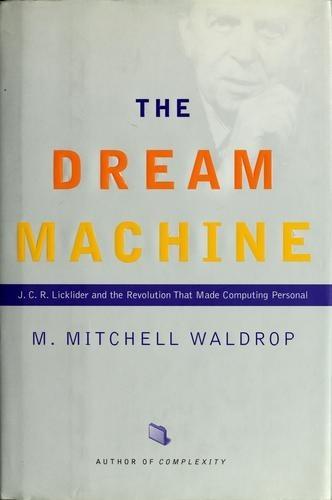
The Dream Machine: J.C.R. Licklider and the Revolution That Made Computing Personal
by
M. Mitchell Waldrop
Published 14 Apr 2001
Between January and March 1943, for example, Shannon struck up a brief friendship with Alan Turing, who was visiting Bell Labs to make a report on the X-system for the British government. They certainly couldn't talk about Turing's wartime work back in England, where he was a leading member of the now- famous code-breaking team at Bletchley Park; in 1943 the very existence of the Bletchley Park effort had to be kept secret, lest the Germans realize that Turing and company could crack the messages being encrypted by the Wehrmacht's "Enigma" machines, and move to another system. But the two young men could and did start meeting in the laboratory cafeteria around "teatime," as Turing put it, to chat about their common interest in information and computation.
…
Indeed, as Turing's biographer Andrew Hodges points out, there had been not only a parallel between Shannon's work and Turing's, but a kind of reciproc- ity. Turing had started from the concept of computability and come to realize that computation was inextricably bound up with information and encryption; the very fact that his abstract machine had to read and write symbols encoded on a data tape guaranteed it. (At Bletchley Park, in fact, Turing had invented the "deciban," a measure of information content that was conceptually identical to Shannon's.) Shannon, conversely, had started from the communication and in- formation end and come to much the same conclusion. In his five-part architec- ture of communication, after all, there was always a transmitter to encode the message and a receiver to decode it at the other end (his example in the 1948 paper would be a transmitter that scanned through an English text letter by let- ter and turned it into Morse code).
…
Aberdeen Proving Ground, 20, 44-45, 101 ABM treaty, 309 Abrahams, Paul, 169, 172 Abramson, Norman, 372-73 ACE (Automatic Computing Engine), 83, 122 ACM SymposIUm on Operating System Pnnclples, 275 acoustics, 13-16 ActivlslOn, 436n Admlnlstratlve BehavlOr (Simon), 134 Adobe Systems, 449-50 Advanced Research Projects Agency (ARPA), 6, 198-201, 220-21,237-41,263-69, 279,385,394-95,397 applications vs. research at, 402-6,417 behavioral-sCIence program at, 202 budget cuts at, 417-18 DynamiC Modeling research group and, 317-20 effect of Vietnam on, 280-82 Fall JOint Computer Confer- ence and, 287-94 graduate student conference and, 282-84, 359 Network Measurement Center of, 284-85, 321 IN D EX Strategic Computing Initiative of, 457, 461 see also Arpanet Advanced Systems DIvIsion, 444 Advice Taker, 162, 166-67, 172 agents, 286, 414 Aiken, Howard H., 38, 43, 46, 59,85,98, 101 Au Force, U.S., 100, 184 air-traffic control system, 328 Alexander, Robert C., 351, 382n, 446 Algol, 171n algorithms, 136, 137, 149 Allen, Paul, 431-32 Alohanet, 372-74, 376 "Aloha System, The" (Abram- son), 372 Alta, Utah, 282 Altair, 430-32 Alto, 333, 368-71, 374, 82-85, 428,438,444 Alto Aloha Network, 374-75 Alto II, 382 Amdahl, Gene, 249-50 Ameflcan Acoustical Society, 151 Amencan Documentation Insti- tute,213 Amerzean FederatlOn of InformatlOn Processmg Soaetles Conference Proceedmgs, 372 AmerIcan Mathematical Society, 35 American Research and Develop- ment Corporation, 146-47 Amenca Onlme, 424 Ames Research, 211 AnalytICal Engme, 38, 103 Anderson, Harlan, 144, 146-47 Anderson, Tim, 411-13 Andreessen, Marc, 466n AN/FSQ7, 117-18 ANS, 464 antiaircraft fire control, 53-57, 77 antIsubmanne warfare, 405-6 antiwar demonstrators, 280-81 Apple Computer Company, 433-34,446 Apple Macmtosh, 183,362,449, 452 applets, 226, 286 Apple II, 232, 434, 435, 438 arms race, 90-91,100,121-22, 199 Army Air Corps, 13-14 ARPA, see Advanced Research Projects Agency Arpanet, 6,226,258,259-332, 343,371-72,373,376,406, 420,456,458,462 data rate of 275-76 E-maIl and, 324-26 facIlitators for, 321, 372 first four nodes of, 259 ICCC and, 326-29, 372 Implementation of, 300-303 maIlmg lIsts on, 420, 427-28 as open system, 377-78 Project MAC and, 304-24 publtc demonstration of, 324 software "fly-off" for, 323-24 store-and-forward system for, 269-77 user protocols for, 300-301, 322-24 artifiCial IntellIgence, 19, 57, 123, 135, 138, 158, 160-63, 166-67, 169n, 178,221, 402-4 artillery traJectones, 44-45 Aspray, WIlliam, 58, 105n AssociatIOn for Computmg Machinery, 240, 314 assoCiative traIls, 28 "As We May Think" (Bush), 29, 215 Atanasoff, John v., 36-37 Atanasoff- Berry Computer (ABC), 37 AT&T, 270-72, 425, 469 AtkInson, BIll, 443 Atlantic Monthly, 29, 85, 193, 215,227 AtomIC Energy Commission, 125-26 augmentation enVlfonment, 212-17,241-43 Augmented Human Intellect Research Center, 242 "Augmentmg the Human Intel- lect" (Engelbart), 213, 242 automata, 88-89, 161n A utomata Studies (McCarthy and Shannon), 161 n Automatic Computing Engme (ACE), 83, 122 automatIC dialer, 270 Automatic Sequence Controlled Calculator (Mark-I), 37-40, 43, 100, 102, 122, 124 Baars, Bernard J., 68-69, 140 Babbage, Charles, 38, 103 backups, development of, 234 Backus,John, 165, 171n Backus-Naur form notation, 171n Ballistics Research Laboratory, 44,45,425 Balzer, Bob, 282 "Bandwagon, The" (Shannon), 94 Baran, Paul, 276, 278, 469 Barker, Ben, 299, 302 BASIC, 190, 292, 431 BasIc Input/Output System (BIOS), 435 INDEX 491 BasIc Operatmg System (BOS), 252 batch processing, 143-44, 154, 163,171,180,190,202,232, 233,246,254,292,318 Bateson, Gregory, 57, 83 Bausch and Lomb, 347 BCC 500, 346, 350, 364 Bechtolshelm, Andreas, 438n-39n behavlOnsm, 70-74, 96-97, 128, 130-32, 139 BehavIOrism (Watson), 70 Bell, Gordon, 248, 361, 439, 461 Belleville, Bob, 448, 449 Bell Systems TechmcalJournal, 74 Bell Telephone Laboratones, 34-35, 37, 43, 54, 75, 76, 77, 80,101, 118, 161n, 235,252, 253,295,315,417 Bennet, Joe, 107 Beranek, Leo, 13-14, 17, 105, 150,158,179,194,237 Berkeley, U mverslty of Califorma at,211,212,239,256,25 262,264,285,427 Berkeley Computer Corporation, 346 Berkeley System Distribution 4.2 Umx, 427 Berlin, Technical University of, 313 Berlm, Umverslty of, 41 Berlin Blockade, 93, 99 Berners-Lee, Tim, 465-66 Berry, Clifford, 37 Bethe, Hans, 42 Bigelow, JulIan, 54, 86-87 Bma, Enc, 466n bmary anthmetlc, 33, 34-36 binary choice, 32 bmary numbers, 36-37 BIOS (BasIc Input/Output Sys- tem), 435 Blrkenstock, James, 116 "bit," 81 bit-mapping, 366-68 Bitnet, 457 Bletchley Park, 80 Blue, AI, 266-67, 274, 396-97 Bobrow, Damel, 167, 354, 386, 451 Boggs, David, 375, 381-82, 386, 416 Bohr, Niels, 91 Bolt, Richard, 105, 150 Bolt Beranek and Newman, 3, 114, 150-57, 175, 179, 190, 194,237-38,314,320,360, 376,380,394 and ARPA network, 294-304 BOS (BasIc Operating System), 252 Boston Computer SOCiety, 436 Boston Herald, 20 bounded rationality, 134-37 Bowmar Brain, 428 Brand, Stewart, 388, 421 Bravo, 384, 409 Bncklm, Dan, 315 Bntlsh Postal Service, 275 Broca, Paul, 11 Brooks, Fred, 252 Brown, Gordon, 220 Brownstein, Chuck, 462 Bruner, Jerome, 139 "bug," 40 Bulletin of the Atomic Sczenllsts, 85 Burchard, John, 109, 126-27, 149 Burks, Arthur W., 87 Burmaster, David, 307-8, 316, 317n,455 Bush, Vannevar, 23, 24-31, 34, 46,76,82,185,465 desk library Idea of, 27-29 Differential Analyzer and, 25-26 Individual empowerment Idea of, 28-29 Wiener's Idea rejected by, 29-30 Buslcom, 339 "byte," 246-47 Byte, 433 Byte Shop, 433 C (language), 168,319,426 Califorma Network, 226 Cambndge ProJect, 315-17 Cambndge University, 100 Cape Cod System, 115 Card, Stuart, 346, 354, 363, 383 Carlson, Chester, 333 Carnegie Institution, 26-27 Carnegie Mellon U mverslty, 241, 258,340,361,438 Carnegie Tech, 134, 190,209, 239-41,313 cathode-ray tube, 87, 113, 242 Center for Cogmtlve Studies, 139-40 Central IntellIgence Agency (CIA), 316, 339 central processing umt (CPU), 60, 164 Cerf, Vinton, 282, 301, 302, 321, 322-23, 327, 328-29, 331, 375,378-80,381,398,41 420,456 CERN, 465 Ceruzzl, Paul, 429 chaos theory, 124 character generators, 362 Cheadle, Ed, 358, 359 Chomsky, Noam, 130-33, 138 chunklng, 130, 132, 138 Church, Alonzo, 52, 53, 172n CIA (Central Intelligence Agency), 316, 339 CircUits, electronic, 32-33 circuit sWitching, 272 CISCO Systems, 464 Clapp, Verner, 185 Clark, James, 419, 466n Clark, Wesley, 141, 143-45, 147, 149,152,173,188-90,218, 261, 262, 273-74, 337, 341, 343,345, 369n Clarke, Arthur C., 76 Cleven, Buck, 224-25, 256 Cltnton, BIll, 461 clocks, In computers, 234 coaxial cable, 374 Cobol, 168, 246 cognitive neurOSCience, 97, 139-40,181 COgrtlllve RevolutIOn m Psychology, The (Baars), 68 cognItive SCIence, 57, 96-97, 240 Cohen, Danny, 282 command and control systems, 176,200-203,207-8, 217-18,276 Commodore PET, 434 common sense, formaltzlng of, 162 commUnIcation, 23, 56, 76, 82, 184 architecture of, 77 channels of, 78, 79 five stages of, 77-78 see also Information theory communIcation englneenng, 82 CommumcatlOns of the ACM, 240, 426 compact discs, 79 Compaq, 441n Compatible Tlme-Shanng Sys- tem (CTSS), 190-91, 221-24,228-36,243,248, 319,414 as open system, 231 reltabIlIty of, 233-34 compilers, 165 Complex Computer, 35-36, 37 complex mformatlon processing, 136-37, 162 complex numbers, 35 compressIOn algonthms, 267 Compton, Karl, 18, 26, 103 CompuServe,424 492 INDEX "Computer as a CommUnIcation Device, The" (Llckltder and Taylor), 264 "Computer In the University, The" (Perils), 180 ComputerLand, 433 computers: analog, 25, 30, 101 business applications for, 188, 447-48 clocks In, 234 digital, 30, 31, 98, 103 emotional Impact of, 64 human symbiosIs with, 4-6, 147-50, 175-86, 194-95, 254,255,262,288,354,363 languages, see languages, com- puter laptop, 387 memory In, see memory, 10 computers microcomputers, 428-38, 452-53 minicomputers, 334, 365, 424, 425,431 notebook, 361-62, 367 open architecture of, 422-23 from operator-supervised to programmable, 37-40 perceptions of, 142-44 personal, 4-5, 116n, 188, 189, 257,261-62,343,358-59, 360,363-70,386,428-3 445-48 real-time, 101-5 and revolt agamst mamframe, 421-28 senal vs. parallel, 61 supercomputers, 425 theory of, 33-34, 47-48, 88-92 von Neumann's functIOnal units of, 60 Wiener's push for, 29-30 see also specific computers Computers and the World of the Future (Licklider), 180 computer SCience, 86 Computer SCIences Laboratory (CSL), 340, 344-45, 351-55, 363,368,370,387,401,444, 450-51 computer utIlities, 292-93, 343, 433 "Computing Machinery and Intelligence" (Tunng), 122 concept manIpulation, 215 Connection Machine, 419 control, Wiener's theory of, 23, 56, 82 Control Data Corporation, 249 Conway, Lynn, 419 Cooper, Robert, 457 cooperative modelIng, 184 Corbato, Fernando, 165-66, 173-75, 190-92, 207, 208, 221,228-30,233-36, 243-47, 249, 250, 251, 253, 25 268, 304,312-14,470 Cornerstone, 436 Corporation for NatIOnal Research InItiatives, 457 Cosmic Cube, 419 Couleur, John, 250 CouncIl on Library Resources, 185 Courant, Richard, 21 Courant Institute, 169 CP/M, 434-35 Crawford, Perry, 102 Cray, Seymour, 249, 425 Cnck, FrancIs, 89 Crocker, Steve, 282, 283-87, 300-303,321-22,372, 394-95,397 Crowther, WIll, 297, 298-301, 321 CRT displays, 347-48 CSL, see Computer SCIences Lab- oratory CSnet, 458-59 CTSS, see Compatible Tlme- Shanng System Curne, Malcolm, 398-99 Curry, Jim, 345 cybernetICs, 82-93, 98, 121-26, 160-61 Cybernetics (Wiener), 84, 91, 92, 121 response to, 95-96 Dahl, Ole-Johan, 357 DanIel, Stephen, 427 DARPA (Defense Advanced Research Projects Agency), 396 Dartmouth College, 138, 159-60, 167, 190, 292 Data General, 334, 365, 424, 431 DatamatIOn, 292 data vlsualtzatlon, 267 Davies, Donald, 275, 278 dBase, 435 D D R&E (duector of defense research and engmeenng), 198,402 Dealer Meetmgs, 353-54 Dealers of Llghtnmg (HIltzlk), 441 DEC (Digital EqUIpment Corpo- ratIOn), 147, 154-57, 175, 188,210,248,251,261,292, 313,334,350,416,421-24, 428, 431, 439-40, 440n-41n, 454 deCiban, 80 decldabtllty problem, 48-53, 58 decimal math, 34-36 DECnet,416 DECSYSTEM 10,434 DEC Systems Research Center, 451 Defender antiballIstic-missile program, 278 Defense Advanced Research Pro- Jects Agency (DARPA), 396 Defense CommunIcations Agency, 277, 406 Defense Department, U.S., 1-6, 101, 198, 199,224,266, 278-79,280-81 air defense and, 100, 104, 112, 115 Deltamax, 113-14 Dendral, 397-98 DennIs, Jack, 187, 221, 244, 250 Dertouzos, Michael, 412-13, 416-17,453 Descartes, Rene, 22 descnptlon copier, 88-89 desktop publIshmg, 392 Deutsch, Peter, 346 Differential Analyzer, 24, 25-26, 31,32,37,44,62 Digital Research, 434-35 direction centers, 117, 119 director of defense research and englOeenng (DDR&E), 198, 402 Disk Operatmg System (DOS), 252,435 Disney, Walt, 338 displays, 242, 359, 366, 402 desktop, 178-79 DNA, 89 Dr.
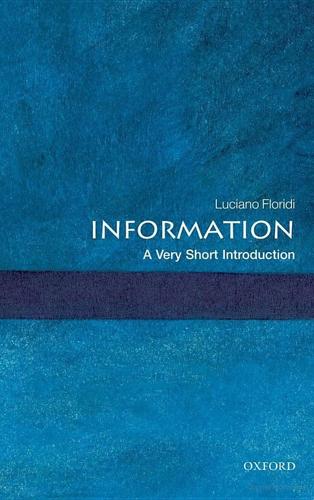
Information: A Very Short Introduction
by
Luciano Floridi
Published 25 Feb 2010
Julius Caesar (100 ec-44 ec) was so aware of the value of information that he devised one of the first and most popular encryption techniques, known as a Caesar cipher, to communicate with his generals. It consisted in replacing each letter in the message by a letter shifted some fixed number of positions down the alphabet. For example, with a shift of 4, A would be replaced by E, B would become F, and so forth. Likewise, our computers are partly the outcome of the work done by Turing at Bletchley Park, Britain's code-breaking centre, to decipher German communications during the Second World War, and the internet developed during the Cold War to ensure that the US Air Force might still be able to share vital information even after a nuclear attack. Clearly, when we talk about the economic value of information, the information in question is semantic.

Exponential: How Accelerating Technology Is Leaving Us Behind and What to Do About It
by
Azeem Azhar
Published 6 Sep 2021
When you pick up your smartphone, you hold a device with several chips and billions of transistors. Computers – once limited to the realms of the military or scientific research – have become quotidian. Think of the first electronic computer, executing Alan Turing’s codebreaking algorithms in Bletchley Park in 1945. A decade later, there were still only 264 computers in the world, many costing tens of thousands of dollars a month to rent.8 Six decades on, there are more than 5 billion computers in use – including smartphones, the supercomputers in our pockets. Our kitchen cupboards, storage boxes and attics are littered with computing devices – at only a few years old, already too outdated for any modern application.
…
Abu Dhabi, UAE, 250 Acemoglu, Daron, 139 Acorn Computers, 16, 21 Ada Lovelace Institute, 8 additive manufacturing, 43–4, 46, 48, 88, 166, 169, 175–9 Adidas, 176 advertising, 94, 112–13, 116, 117, 227–8 AdWords, 227 aeroponics, 171 Afghanistan, 38, 205 Africa, 177–8, 182–3 Aftenposten, 216 Age of Spiritual Machines, The (Kurzweil), 77 agglomeration, 181 Air Jordan sneakers, 102 Airbnb, 102, 188 aircraft, 49–50 Alexandria, Egypt, 180 AlexNet, 33 Algeciras, HMM 61 Alibaba, 48, 102, 108, 111, 122 Alipay, 111 Allen, Robert, 80 Alphabet, 65, 113–14, 131, 163 aluminium, 170 Amazon, 65, 67–8, 94, 104, 108, 112, 122, 135–6 Alexa, 25, 117 automation, 135–6, 137, 139, 154 collective bargaining and, 163 Covid-19 pandemic (2020–21), 135–6 drone sales, 206 Ecobee and, 117 Go stores, 136 Kiva Systems acquisition (2012), 136 management, 154 Mechanical Turk, 142–3, 144, 145 monopoly, 115, 117, 122 Prime, 136, 154 R&D, 67–8, 113 Ami Pro, 99 Amiga, 16 Anarkali, Lahore, 102 anchoring bias, 74 Android, 85, 94, 117, 120 Angola, 186 Ant Brain, 111 Ant Financial, 111–12 antitrust laws, 114, 119–20 Apache HTTP Server, 242 Appelbaum, Binyamin, 63 Apple, 47, 62, 65, 85, 94, 104, 108, 112, 122 App Store, 105, 112, 115 chip production, 113 Covid-19 pandemic (2019–21), 222–3 data collection, 228 iOS, 85 iPhone, 47, 62, 85, 94, 105 media subscription, 112 watches, 112 APT33 hacker group, 198 Aral, Sinan, 238 Aramco, 108, 198 Armenia, 206–7 Arthur, William Brian, 110, 123 artificial intelligence, 4, 8, 31–4, 54, 88, 113, 249 academic brain drain, 118 automation, 125–42 data and, 31–2, 142 data network effect, 106–7 drone technology and, 208, 214 education and, 88 employment and, 126–7 healthcare and, 88, 103 job interviews and, 153 regulation of, 187, 188 arXiv, 59 Asana, 151 Asian Development Bank, 193 Aslam, Yaseen, 148 Assembly Bill 5 (California, 2019), 148 asymmetric conflict, 206 AT&T, 76, 100 Atari, 16 attack surfaces, 192–3, 196, 209, 210 Aurora, 141 Australia, 102, 197 automation, 125–42 autonomous weapons, 208, 214 Azerbaijan, 173, 206–7 Ballmer, Steve, 85 Bangladesh, 175 banking, 122, 237 Barcelona, Catalonia, 188 Barlow, John Perry, 184 Barrons, Richard, 195, 211 Bartlett, Albert, 73 batteries, 40, 51, 53–4, 250, 251 Battle of the Overpass (1937), 162 Bayraktar TB2 drone, 206 Bee Gees, 72 Bekar, Clifford, 45 Bell Labs, 18 Bell Telephone Company, 100 Benioff, Marc, 108–9 Bentham, Jeremy, 152 Berlin Wall, fall of (1989), 4 Bermuda, 119 Berners-Lee, Timothy, 55, 100, 160, 239 Bessen, James, 46 Bezos, Jeffrey, 135–6 BGI, 41 Biden, Joseph, 225 Bing, 107 biological weapons, 207, 213 biology, 10, 39, 40–42, 44, 46 genome sequencing, 40–41, 90, 229, 234, 245–7, 250, 252 synthetic biology, 42, 46, 69, 174, 245, 250 biopolymers, 42 bits, 18 Black Death (1346–53), 12 BlackBerry, 120 Blair, Tony, 81 Bletchley Park, Buckinghamshire, 22 blitzscaling, 110 Blockbuster, 138 BMW, 177 Boeing, 51, 236 Bol.com, 103 Bollywood, 181 Boole, George, 18 Bork, Robert, 114–15, 117, 119 Bosworth, Andrew, 233 Boyer, Pascal, 75 Boyle, James, 234 BP, 92, 158 brain, 77 Braudel, Fernand, 75 Brave, 242 Brazil, 202 Bremmer, Ian, 187 Bretton Woods Conference (1944), 87 Brexit (2016–20), 6, 168 British Broadcasting Corporation (BBC), 87, 129, 191 Brookings Institution, 130 BT, 123 Bulgaria, 145 Bundy, Willard Legrand, 149 Busan, South Korea, 56 business, 82, 92–124 diminishing returns to scale, 93, 108 economic dynamism and, 117 economies of scale, 50, 92 growth, 110–13 increasing returns to scale, 108–10 intangible economy, 104–7, 118, 156, 175, 180 linear value chains, 101 market share, 93–6, 111 monopolies, 10, 71, 94, 95, 114–24 network effect, 96–101 platform model, 101–3, 219 re-localisation, 11, 166–79, 187, 252, 255 state-sized companies, 11, 67 superstar companies, 10, 94–6 supply chains, 61–2, 166–7, 169, 175, 187, 252, 255 taxation of, 96, 118–19 Butler, Nick, 179 ByteDance, 28 C40 initiative, 189 Cambridge University, 127, 188 cancer, 57–8, 127 Capitol building storming (2021), 225 car industry, 93 carbon emissions, 35, 90, 251 Carlaw, Kenneth, 45 Carnegie, Andrew, 112 Carnegie Mellon University, 131 Catholic Church, 83, 88 censorship, 216–17, 224–6, 236 Central Intelligence Agency (CIA), 194 Cerebras, 34 cervical smears, 57–8 chemical weapons, 207, 213 Chen, Brian, 228 chewing gum, 78 Chicago Pile-1 reactor, 64 Chile, 170 China automation in, 127, 137 brainwave reading in, 152 Covid-19 pandemic (2019–21), 245 drone technology in, 207 Great Firewall, 186, 201 Greater Bay Area, 182 horizontal expansion in, 111–12 manufacturing in, 176 misinformation campaigns, 203 raw materials, demand for, 178 Singles’ Day, 48 social credit systems, 230 superstar companies in, 95 US, relations with, 166 chips, 19–22, 28–9, 48–9, 52, 113, 251 Christchurch massacre (2019), 236 Christensen, Clayton, 24 CIPD, 153 cities, 11, 75, 169, 179–84, 188, 255 Clegg, Nick, 225–6, 235 climate change, 90, 169, 187, 189, 251, 252 cloud computing, 85, 112 Cloudflare, 200 cluster bombs, 213 CNN, 185, 190 coal, 40, 65, 172 Coase, Ronald, 92 Coca-Cola, 93 code is law, 220–22, 235 cold fusion, 113–14 Cold War (1947–91), 194, 212, 213 collective bargaining, 147, 149, 154, 156, 162–5 Colombia, 145 colonialism, 167 Columbus, Christopher, 4 combination, 53–7 Comical Ali, 201 commons, 234–5, 241–3, 256 companies, see business comparative advantage, 170 complex systems, 2 compounding, 22–3, 28 CompuServe, 100 computing, 4, 10, 15–36, 44, 46, 249 artificial intelligence, 4, 8, 31–4, 54, 88 cloud computing, 85, 112 internet, 47–8, 55, 65, 84 Law of Accelerating Returns, 30–31, 33, 35 machining, 43 Moore’s Law, see Moore’s Law quantum computing, 35 transistors, 18–22, 28–9, 48–9, 52 conflict, 87, 189, 190–215 attack surfaces, 192–3, 196, 209, 210 cyberattacks, 11, 114, 140, 181, 187, 190–200, 209–14, 256 de-escalation, 212–13 drone technology, 11, 192, 204–9, 214, 256 institutional change and, 87 misinformation, 11, 191, 192, 200–204, 209, 212, 217, 225 new wars, 194 non-proliferation, 213–14 re-localisation and, 189, 193, 194, 209 consent of the networked, 223 Costco, 67 Coursera, 58 Covid-19 pandemic (2019–21), 12–13, 59, 78–9, 131, 245–9 automation and, 127, 135, 136 cities and, 183 contact-tracing apps, 222–3 gig economy and, 146 lockdowns, 12, 152, 176, 183, 246 manufacturing and, 176 misinformation and, 202–4, 247–8 preprint servers and, 60 recession (2020–21), 178 remote working and, 146, 151, 153 supply chains and, 169, 246 vaccines, 12, 202, 211, 245–7 workplace cultures and, 151, 152 cranks, 54 credit ratings, 162, 229 critical thinking skills, 212 Croatia, 145 Crocker, David, 55 crowdsourcing, 143–4 Cuba, 203 Cuban missile crisis (1962), 99, 212 cultural lag, 85 cyberattacks, 11, 114, 140, 181, 187, 190–200, 209–14, 256 CyberPeace Institute, 214 Daniel, Simon, 173–4 Dar es Salaam, Tanzania, 183 Darktrace, 197 data, 8, 11, 71, 217–19, 226–31, 235, 237–42, 256 AI and, 8, 32, 33, 58, 106 compensation for, 239 commons, 242 cyberattacks and, 196 doppelgängers, 219, 226, 228, 239 interoperability and, 237–9 network effects, 106–7, 111 protection laws, 186, 226 rights, 240 Daugherty, Paul, 141 DDT (dichlorodiphenyltrichloroe thane), 253 death benefits, 151 Dediu, Horace, 24, 30 deep learning, 32–4, 54, 58, 127 deforestation, 251 dehumanisation, 71, 154, 158 deindustrialisation, 168 Deliveroo, 154, 163 Delphi, 100 dematerialised techniques, 166, 175 Denmark, 58, 160, 199–200, 257 Deutsche Bank, 130 Diamandis, Peter, 5 Dickens, Charles, 80 digital cameras, 83–4 Digital Geneva Convention, 211 Digital Markets Act (EU, 2020), 122 digital minilateralism, 188 Digital Nations group, 188 Digital Services Act (EU, 2020), 123 diminishing returns, 93, 108 disinformation, see misinformation DoorDash, 147, 148, 248 dot-com bubble (1995–2000), 8, 108, 150 Double Irish tax loophole, 119 DoubleClick, 117 drone technology, 11, 192, 204–9, 214, 256 Dubai, UAE, 43 Duke University, 234 dystopia, 208, 230, 253 Eagan, Nicole, 197 eBay, 98, 121 Ecobee, 120 economies of scale, 50, 92 Economist, The, 8, 65, 119, 183, 239 economists, 63 Edelman, 3 education artificial intelligence and, 88 media literacy, 211–12 Egypt, 145, 186 Elance, 144 electric cars, 51, 69, 75, 173–4, 177, 250 electricity, 26, 45, 46, 54, 157, 249–50 see also energy Electronic Frontier Foundation, 184 email, 6, 55 embodied institutions, 82 employment, 10, 71, 125–65 automation, 125–42 collective bargaining, 147, 149, 154, 156, 162–5 dehumanisation and, 71, 154, 158 flexicurity, 160–61, 257 gig economy, 10, 71, 142–9, 153, 162, 164, 239, 252, 255 income inequality, 155–8, 161, 168 lump of labour fallacy, 139 management, 149–54, 158–9 protections, 85–6, 147–9 reskilling, 159–60 universal basic income (UBI), 160, 189 Enclosure, 234–5, 241 energy, 11, 37–8, 39–40, 44, 46, 172–4, 250 cold fusion, 113–14 fossil fuels, 40, 159, 172, 250 gravitational potential, 53 solar power, 37–8, 53, 65, 77, 82, 90, 171, 172, 173, 249, 250, 251 storage, 40, 53, 114, 173–4, 250, 251 wind power, 39–40, 52 Energy Vault, 53–4, 173 Engels, Friedrich, 81 Engels’ pause, 80, 81 environmental movement, 73 Epic Games, 116 estate agents, 100 Estonia, 188, 190–91, 200, 211 Etzion Airbase, Sinai Peninsula, 195 European Commission, 116, 122, 123 European Space Agency, 56 European Union, 6, 82, 147, 186, 226 Excel, 99 exogeny, 2 exponential gap, 9, 10, 67–91, 70, 89, 253 cyber security and, 193 institutions and, 9, 10, 79–88, 90 mathematical understanding and, 71–5 predictions and, 75–9 price declines and, 68–9 superstar companies and, 10, 94–124 exponential growth bias, 73 Exponential View, 8–9 externalities, 97 extremism, 232–4 ExxonMobil, 65, 92 Facebook, 27, 28, 65, 94, 104, 108, 122, 216–17, 218, 219, 221–2, 223 advertising business, 94, 228 censorship on, 216–17, 224–6, 236 collective bargaining and, 164 data collection on, 228, 239–40 extremism and, 233–4 Instagram acquisition (2012), 117, 120 integrity teams, 234 interoperability, 237–8 Kenosha unrest shooting (2020), 224 misinformation on, 201, 225 network effect and, 98, 223 Oculus acquisition (2014), 117 pay at, 156–7 Phan photo controversy (2016), 216–17, 224, 225 platform model, 101 polarisation and, 233 relationship status on, 221–2 Rohingya ethnic cleansing (2018), 224, 225 US presidential election (2016), 217 WhatsApp acquisition (2014), 117 facial recognition, 152, 208 Factory Act (UK, 1833), 81 Fairchild Semiconductor, 19, 21 fake news, 201–4 family dinners, 86 farming, 170–72, 251 Farrar, James, 148 fax machines, 97 Federal Aviation Administration (US), 236 feedback loops, 3, 13 fertilizers, 35, 90 5G, 203 Financial Conduct Authority, 122 Financial Times, 183 Finland, 160, 211–12 Fitbit, 158 Fiverr, 144 flashing of headlights, 83 flexicurity, 160, 257 flints, 42 flywheels, 54 Ford, 54, 92, 162 Ford, Gerald, 114 Ford, Henry, 54, 162 Ford, Martin, 125 Fortnite, 116 fossil fuels, 40, 159, 172 France, 100, 138, 139, 147, 163 free-market economics, 63–4 freelance work, 10, 71, 142–9 Frey, Carl, 129, 134, 141 Friedman, Milton, 63–4, 241 Friedman, Thomas, 167 FriendFeed, 238 Friendster, 26 Fudan University, 245 fund management, 132 Galilei, Galileo, 83 gaming, 86 Gates, Bill, 17, 25, 84 gender, 6 General Agreement on Tariffs and Trade, 87 General Data Protection Regulation (GDPR), 226 General Electric, 52 General Motors, 92, 125, 130 general purpose technologies, 10, 45–8 generative adversarial networks (GANs), 58 Geneva Conventions, 193, 199, 209 Genghis Khan, 44 GEnie, 100 genome sequencing, 40–41, 90, 229, 234, 245–7, 250, 252 Germany, 75, 134, 147 Giddens, Anthony, 82 gig economy, 10, 71, 142–9, 153, 162, 164, 239, 252, 255 Gilbreth, Lillian, 150 Ginsparg, Paul, 59 GitHub, 58, 60 GlaxoSmithKline, 229–30 global financial crisis (2007–9), 168 Global Hawk drones, 206 global positioning systems (GPS), 197 globalisation, 11, 62, 64, 156, 166, 167–71, 177, 179, 187, 193 internet and, 185 conflict and, 189, 193, 194 Glocer, Thomas, 56 Go (game), 132 GOAT, 102 Gojek, 103 Golden Triangle, 170 Goldman Sachs, 151 Goodfellow, Ian, 58 Google, 5, 35, 36, 94, 98, 104, 108, 115, 122 advertising business, 94, 112–13, 116, 117, 227 Android, 85, 94, 117, 120 chip production, 113 Covid-19 pandemic (2019–21), 222–3 data network effect, 106–7 death benefits, 151 Double Irish tax loophole, 119 Maps, 113 quantum computing, 35 R&D, 114, 118 vertical integration, 112–13, 116 X, 114 YouTube acquisition (2006), 112, 117 Gopher, 59, 100 GPT-3, 33 Graeber, David, 133–4 Grand Bazaar, Istanbul, 102 Graphcore, 34, 35 graphics chips, 34 Grateful Dead, The, 184 gravitational potential energy, 53 gravity bombs, 195 Greater Bay Area, China, 182 Greenberg, Andy, 199 Gross, Bill, 53 Grove, Andrew, 17 GRU (Glavnoje Razvedyvatel’noje Upravlenije), 199 Guangzhou, Guangdong, 182 Guardian, 8, 125, 154, 226, 227 Guiyang, Guizhou, 166 H1N1 virus, 75 Habermas, Jürgen, 218 Hard Times (Dickens), 80 Hardin, Garrett, 241 Harop drones, 207–8 Harpy drones, 207–8 Harvard University, 150, 218, 220, 221, 253 healthcare artificial intelligence and, 57–8, 88, 103 data and, 230, 239, 250–51 wearable devices and, 158, 251 Helsinki, Finland, 160 Herlev Hospital, Denmark, 58 Hinton, Geoffrey, 32, 126–7 HIPA Act (US, 1996), 230 Hitachi, 152 Hobbes, Thomas, 210 Hoffman, Josh, 174 Hoffman, Reid, 110, 111 Holmes, Edward, 245 homophily, 231–4 Hong Kong, 182 horizontal expansion, 111–12, 218 Houston Islam protests (2016), 203 Houthis, 206 Howe, Jeff, 143 Hsinchu, Taiwan, 181 Hughes, Chris, 217 Hull, Charles, 43 Human + Machine (Daugherty), 141 human brain, 77 human genome, 40–41, 90, 229, 234, 250 human resources, 150 Hussein, Saddam, 195 Hyaline, 174 hydroponics, 171 hyperinflation, 75 IBM, 17, 21, 47, 98 IDC, 219 Ideal-X, 61 Ikea, 144 Illumina, 41 Ilves, Toomas Hendrik, 190 ImageNet, 32 immigration, 139, 168, 183–4 Impossible Foods, 69 Improv, 99 income inequality, 155–8, 161, 168 India, 103, 145, 181, 186, 224, 253, 254 Indonesia, 103 Industrial Revolution (1760–1840), 79–81, 157, 235 informational networks, 59–60 ING, 178 innovation, 14, 117 Innovator’s Dilemma, The (Christensen), 24 Instagram, 84, 117, 120, 121, 237 institutions, 9, 10, 79–88, 90–91 path dependence, 86–7 punctuated equilibrium, 87–8 intangible economy, 104–7, 118, 156, 175, 180 integrated circuits, 19 Intel, 16–17, 19, 163 intellectual property law, 82 Intermediate-Range Nuclear Forces Treaty (1987), 237 International Alliance of App-Based Transport Workers, 164 International Court of Justice, 224 International Criminal Court, 208 International Energy Agency, 77, 82 International Labour Organization, 131 International Monetary Fund (IMF), 87, 167, 187 international organisations, 82 International Organization for Standardization, 55, 61 International Rescue Committee, 184 International Telecommunication Union, 55 internet, 7, 47–8, 55, 65, 72, 75, 84–5, 88, 115, 184–6 code is law, 220–22, 235 data and, 11, 32, 71 informational networks, 59–60 localisation, 185–6 lockdowns and, 12 network effect, 100–101 online shopping, 48, 61, 62, 75, 94, 102, 135 platform model and, 102 public sphere and, 223 standardisation, 55 Wi-Fi, 151 interoperability, 55, 120–22, 237–9, 241, 243, 256–7 iPhone, 47, 62, 85, 94, 115, 175 Iran, 186, 196, 198, 203, 206 Iraq, 195–6, 201, 209 Ireland, 57–8, 119 Islamic State, 194, 233 Israel, 37, 188, 195–6, 198, 206, 207–8 Istanbul, Turkey, 102 Jacobs, Jane, 182 Japan, 37, 152, 171, 174 Jasanoff, Sheila, 253 JD.com, 137 Jena, Rajesh, 127 Jio, 103 job interviews, 153, 156 John Paul II, Pope, 83 Johnson, Boris, 79 Jumia, 103 just in time supply chains, 61–2 Kahneman, Daniel, 74 KakaoTalk, 27 Kaldor, Mary, 194 Kapor, Mitchell, 99 Karunaratne, Sid, 140–41, 151 Kenosha unrest shooting (2020), 224 Keynes, John Maynard, 126, 158 Khan, Lina, 119 Khartoum, Sudan, 183 Kim Jong-un, 198 King’s College London, 179 Kiva Systems, 136 Kobo360, 145 Kodak, 83–4, 88 Kranzberg, Melvin, 254 Krizhevsky, Alex, 32–3, 34 Kubursi, Atif, 178 Kurdistan Workers’ Party, 206 Kurzweil, Ray, 29–31, 33, 35, 77 Lagos, Nigeria, 182 Lahore, Pakistan, 102 landmines, 213 Law of Accelerating Returns, 30–31, 33, 35 Laws of Motion, 20 learning by doing, 48, 53 Leggatt, George, 148 Lemonade, 56 Lessig, Larry, 220–21 Leviathan (Hobbes), 210 Li Fei-Fei, 32 life expectancy, 25, 26 light bulbs, 44, 157 Lime, 27 Limits to Growth, The (Meadows et al.), 73 linear value chains, 101 LinkedIn, 26, 110, 121, 237, 238 Linkos Group, 197 Linux OS, 242 Lipsey, Richard, 45 lithium-ion batteries, 40, 51 lithium, 170 localism, 11, 166–90, 252, 255 log files, 227 logarithmic scales, 20 logic gates, 18 logistic curve, 25, 30, 51, 52, 69–70 London, England, 180, 181, 183 London Underground, 133–4 looms, 157 Lordstown Strike (1972), 125 Lotus Development Corporation, 99 Luddites, 125, 253 Lufa Farms, 171–2 Luminate, 240 lump of labour fallacy, 139 Lusaka, Zambia, 15 Lyft, 146, 148 machine learning, 31–4, 54, 58, 88, 127, 129, 143 MacKinnon, Rebecca, 223 Maersk, 197, 199, 211 malaria, 253 Malaysia Airlines Flight 17 shootdown (2014), 199 Malta, 114 Malthus, Thomas, 72–3 malware, 197 Man with the Golden Gun, The (1974 film), 37 manufacturing, 10, 39, 42–4, 46, 166–7, 175–9 additive, 43–4, 46, 48, 88, 166, 169, 175–9 automation and, 130 re-localisation, 175–9 subtractive, 42–3 market saturation, 25–8, 51, 52 market share, 93–6, 111 Marshall, Alfred, 97 Massachusetts Institute of Technology, 18, 147, 202, 238 Mastercard, 98 May, Theresa, 183 Mayors for a Guaranteed Income, 189 McCarthy, John, 31 McKinsey, 76, 94 McMaster University, 178 measles, 246 Mechanical Turk, 142–3, 144, 145 media literacy, 211–12 meningitis, 246 Mexico, 202 microorganisms, 42, 46, 69 Microsoft, 16–17, 65, 84–5, 88, 98–9, 100, 105, 108, 122, 221 Bing, 107 cloud computing, 85 data collection, 228 Excel, 99 internet and, 84–5, 100 network effect and, 99 Office software, 98–9, 110, 152 Windows, 85, 98–9 Workplace Productivity scores, 152 Mill, John Stuart, 193 miniaturisation, 34–5 minimum wage, 147, 161 misinformation, 11, 191, 192, 200–204, 209, 212, 217, 225, 247–8 mobile phones, 76, 121 see also smartphones; telecom companies Moderna, 245, 247 Moixa, 174 Mondelez, 197, 211 Mongol Empire (1206–1368), 44 monopolies, 10, 71, 94, 95, 114–24, 218, 255 Monopoly (board game), 82 Montreal, Quebec, 171 mood detection systems, 152 Moore, Gordon, 19, 48 Moore’s Law, 19–22, 26, 28–9, 31, 34, 63, 64, 74 artificial intelligence and, 32, 33–4 Kodak and, 83 price and, 41–2, 51, 68–9 as social fact, 29, 49 superstar companies and, 95 time, relationship with, 48–9 Moravec, Hans, 131 Moravec’s paradox, 131–2 Motorola, 76 Mount Mercy College, Cork, 57 Mozilla Firefox, 242 Mumbai, India, 181 mumps, 246 muskets, 54–5 MySpace, 26–7 Nadella, Satya, 85 Nagorno-Karabakh War (2020), 206–7 napalm, 216 NASA (National Aeronautics and Space Administration), 56 Natanz nuclear site, Iran, 196 National Health Service (NHS), 87 nationalism, 168, 186 NATO (North Atlantic Treaty Organization), 191, 213 Netflix, 104, 107, 109, 136, 137, 138, 139, 151, 248 Netherlands, 103 Netscape Communicator, 6 networks, 58–62 network effects, 96–101, 106, 110, 121, 223 neural networks, 32–4 neutral, technology as, 5, 220–21, 254 new wars, 194 New York City, New York, 180, 183 New York Times, 3, 125, 190, 228 New Zealand, 188, 236 Newton, Isaac, 20 Nigeria, 103, 145, 182, 254 Niinistö, Sauli, 212 Nike, 102 nitrogen fertilizers, 35 Nixon, Richard, 25, 114 Nobel Prize, 64, 74, 241 Nokia, 120 non-state actors, 194, 213 North Korea, 198 North Macedonia, 200–201 Norway, 173, 216 NotPetya malware, 197, 199–200, 211, 213 Novell, 98 Noyce, Robert, 19 NSO Group, 214 nuclear weapons, 193, 195–6, 212, 237 Nuremberg Trials (1945–6), 208 O’Reilly, Tim, 107 O’Sullivan, Laura, 57–8, 60 Obama, Barack, 205, 214, 225 Ocado, 137 Ocasio-Cortez, Alexandria, 239 Oculus, 117 oDesk, 144 Ofcom, 8 Ofoto, 84 Ogburn, William, 85 oil industry, 172, 250 Houthi drone attacks (2019), 206 OAPEC crisis (1973–4), 37, 258 Shamoon attack (2012), 198 Standard Oil breakup (1911), 93–4 Olduvai, Tanzania, 42 online shopping, 48, 61, 62, 75, 94, 102, 135 open-source software, 242 Openreach, 123 Operation Opera (1981), 195–6, 209 opium, 38 Orange, 121 Organisation for Economic Co-operation and Development (OECD), 119, 167 Osborne Computer Corporation, 16 Osborne, Michael, 129 Osirak nuclear reactor, Iraq, 195–6, 209 Ostrom, Elinor, 241 Oxford University, 129, 134, 203, 226 pace of change, 3 pagers, 87 Pakistan, 145, 205 palladium, 170 PalmPilot, 173 panopticon, 152 Paris, France, 181, 183 path dependence, 86 PayPal, 98, 110 PC clones, 17 PeerIndex, 8, 201, 237 Pegasus, 214 PeoplePerHour, 144 PepsiCo, 93 Perez, Carlota, 46–7 pernicious polarization, 232 perpetual motion, 95, 106, 107, 182 Petersen, Michael Bang, 75 Phan Thi Kim Phuc, 216–17, 224, 225 pharmaceutical industry, 6, 93, 250 phase transitions, 4 Philippines, 186, 203 Phillips Exeter Academy, 150 phishing scams, 211 Phoenix, Arizona, 134 photolithography, 19 Pigou, Arthur Cecil, 97 Piketty, Thomas, 160 Ping An Good Doctor, 103, 250 Pix Moving, 166, 169, 175 PKK (Partîya Karkerên Kurdistanê), 206 Planet Labs, 69 platforms, 101–3, 219 PlayStation, 86 plough, 157 Polanyi, Michael, 133 polarisation, 231–4 polio, 246 population, 72–3 Portify, 162 Postel, Jon, 55 Postings, Robert, 233 Predator drones, 205, 206 preprints, 59–60 price gouging, 93 price of technology, 22, 68–9 computing, 68–9, 191, 249 cyber-weapons, 191–2 drones, 192 genome sequencing, 41–2, 252 renewable energy, 39–40, 250 printing press, 45 public sphere, 218, 221, 223 Pulitzer Prize, 216 punctuated equilibrium, 87–8 al-Qaeda, 205, 210–11 Qatar, 198 quantum computing, 35 quantum physics, 29 quarantines, 12, 152, 176, 183, 246 R&D (research and development), 67–8, 113, 118 racial bias, 231 racism, 225, 231, 234 radicalisation pathways, 233 radiologists, 126 Raford, Noah, 43 Raz, Ze’ev, 195, 209 RB, 197 re-localisation, 11, 166–90, 253, 255 conflict and, 189, 193, 194, 209 Reagan, Ronald, 64, 163 religion, 6, 82, 83 resilience, 257 reskilling, 159–60 responsibility gap, 209 Restrepo, Pascual, 139 Reuters, 8, 56, 132 revolutions, 87 Ricardo, David, 169–70, 177 rights, 240–41 Rise of the Robots, The (Ford), 125 Rittenhouse, Kyle, 224 Roche, 67 Rockefeller, John, 93 Rohingyas, 224 Rome, ancient, 180 Rose, Carol, 243 Rotterdam, Netherlands, 56 Rule of Law, 82 running shoes, 102, 175–6 Russell, Stuart, 31, 118 Russian Federation, 122 disinformation campaigns, 203 Estonia cyberattacks (2007), 190–91, 200 Finland, relations with, 212 Nagorno-Karabakh War (2020), 206 nuclear weapons, 237 Ukraine cyberattacks (2017), 197, 199–200 US election interference (2016), 217 Yandex, 122 S-curve, 25, 30, 51, 52, 69–70 al-Sahhaf, Muhammad Saeed, 201 Salesforce, 108–9 Saliba, Samer, 184 salt, 114 Samsung, 93, 228 San Francisco, California, 181 Sandel, Michael, 218 Sanders, Bernard, 163 Sandworm, 197, 199–200, 211 Santander, 95 Sasson, Steve, 83 satellites, 56–7, 69 Saturday Night Fever (1977 soundtrack), 72 Saudi Arabia, 108, 178, 198, 203, 206 Schmidt, Eric, 5 Schwarz Gruppe, 67 Second Machine Age, The (Brynjolfsson and McAfee), 129 self-driving vehicles, 78, 134–5, 141 semiconductors, 18–22, 28–9, 48–9, 52, 113, 251 September 11 attacks (2001), 205, 210–11 Shamoon virus, 198 Shanghai, China, 56 Shannon, Claude, 18 Sharp, 16 Shenzhen, Guangdong, 182 shipping containers, 61–2, 63 shopping, 48, 61, 62, 75, 94, 102, 135 Siemens, 196 silicon chips, see chips Silicon Valley, 5, 7, 15, 24, 65, 110, 129, 223 Sinai Peninsula, 195 Sinclair ZX81, 15, 17, 21, 36 Singapore, 56 Singles’ Day, 48 Singularity University, 5 SixDegrees, 26 Skydio R1 drone, 208 smartphones, 22, 26, 46, 47–8, 65, 86, 88, 105, 111, 222 Smith, Adam, 169–70 sneakers, 102, 175–6 Snow, Charles Percy, 7 social credit systems, 230 social media, 26–8 censorship on, 216–17, 224–6, 236 collective bargaining and, 164 data collection on, 228 interoperability, 121, 237–8 market saturation, 25–8 misinformation on, 192, 201–4, 217, 247–8 network effect, 98, 223 polarisation and, 231–4 software as a service, 109 solar power, 37–8, 53, 65, 77, 82, 90, 171, 172, 173, 249, 250, 251 SolarWinds, 200 Solberg, Erna, 216 South Africa, 170 South Korea, 188, 198, 202 Southey, Robert, 80 sovereignty, 185, 199, 214 Soviet Union (1922–91), 185, 190, 194, 212 Spain, 170, 188 Spanish flu pandemic (1918–20), 75 Speedfactory, Ansbach, 176 Spire, 69 Spotify, 69 Sputnik 1 orbit (1957), 64, 83 stagflation, 63 Standard and Poor, 104 Standard Oil, 93–4 standardisation, 54–7, 61, 62 Stanford University, 32, 58 Star Wars franchise, 99 state-sized companies, 11, 67 see also superstar companies states, 82 stirrups, 44 Stockholm International Peace Research Institute, 208 Stockton, California, 160 strategic snowflakes, 211 stress tests, 237 Stuxnet, 196, 214 Sudan, 183 superstar companies, 10, 11, 67, 94–124, 218–26, 252, 255 blitzscaling, 110 collective bargaining and, 163 horizontal expansion, 111–12, 218 increasing returns to scale, 108–10 innovation and, 117–18 intangible economy, 104–7, 118, 156 interoperability and, 120–22, 237–9 monopolies, 114–24, 218 network effect, 96–101, 121 platform model, 101–3, 219 taxation of, 118–19 vertical expansion, 112–13 workplace cultures, 151 supply chains, 61–2, 166–7, 169, 175, 187, 252 surveillance, 152–3, 158 Surviving AI (Chace), 129 Sutskever, Ilya, 32 synthetic biology, 42, 46, 69, 174, 245, 250 Syria, 186 Taiwan, 181, 212 Talkspace, 144 Tallinn, Estonia, 190 Tang, Audrey, 212 Tanzania, 42, 183 TaskRabbit, 144 Tasmania, Australia, 197 taxation, 10, 63, 96, 118–19 gig economy and, 146 superstar companies and, 118–19 Taylor, Frederick Winslow, 150, 152, 153, 154 Tel Aviv, Israel, 181 telecom companies, 122–3 Tencent, 65, 104, 108, 122 territorial sovereignty, 185, 199, 214 Tesco, 67, 93 Tesla, 69, 78, 113 Thailand, 176, 203 Thatcher, Margaret, 64, 163 Thelen, Kathleen, 87 Thiel, Peter, 110–11 3D printing, see additive manufacturing TikTok, 28, 69, 159–60, 219 Tisné, Martin, 240 Tomahawk missiles, 207 Toyota, 95 trade networks, 61–2, 166–7, 169, 175 trade unions, see collective bargaining Trading Places (1983 film), 132 Tragedy of the Commons, The (Hardin), 241 transistors, 18–22, 28–9, 48–9, 52, 113, 251 transparency, 236 Treaty of Westphalia (1648), 199 TRS-80, 16 Trump, Donald, 79, 119, 166, 201, 225, 237 Tufekci, Zeynep, 233 Turing, Alan, 18, 22 Turkey, 102, 176, 186, 198, 202, 206, 231 Tversky, Amos, 74 23andMe, 229–30 Twilio, 151 Twitch, 225 Twitter, 65, 201, 202, 219, 223, 225, 237 two cultures, 7, 8 Uber, 69, 94, 102, 103, 106, 142, 144, 145 Assembly Bill 5 (California, 2019), 148 engineering jobs, 156 London ban (2019), 183, 188 London protest (2016), 153 pay at, 147, 156 satisfaction levels at, 146 Uber BV v Aslam (2021), 148 UiPath, 130 Ukraine, 197, 199 Unilever, 153 Union of Concerned Scientists, 56 unions, see collective bargaining United Arab Emirates, 43, 198, 250 United Autoworkers Union, 162 United Kingdom BBC, 87 Biobank, 242 Brexit (2016–20), 6, 168 collective bargaining in, 163 Covid-19 epidemic (2020–21), 79, 203 DDT in, 253 digital minilateralism, 188 drone technology in, 207 flashing of headlights in, 83 Golden Triangle, 170 Google and, 116 Industrial Revolution (1760–1840), 79–81 Luddite rebellion (1811–16), 125, 253 misinformation in, 203, 204 National Cyber Force, 200 NHS, 87 self-employment in, 148 telecom companies in, 123 Thatcher government (1979–90), 64, 163 United Nations, 87, 88, 188 United States antitrust law in, 114 automation in, 127 Battle of the Overpass (1937), 162 Capitol building storming (2021), 225 China, relations with, 166 Cold War (1947–91), 194, 212, 213 collective bargaining in, 163 Covid-19 epidemic (2020–21), 79, 202–4 Cyber Command, 200, 210 DDT in, 253 drone technology in, 205, 214 economists in, 63 HIPA Act (1996), 230 Kenosha unrest shooting (2020), 224 Lordstown Strike (1972), 125 manufacturing in, 130 misinformation in, 202–4 mobile phones in, 76 nuclear weapons, 237 Obama administration (2009–17), 205, 214 polarisation in, 232 presidential election (2016), 199, 201, 217 presidential election (2020), 202–3 Reagan administration (1981–9), 64, 163 self-employment in, 148 September 11 attacks (2001), 205, 210–11 shipping containers in, 61 shopping in, 48 solar energy research, 37 Standard Oil breakup (1911), 93–4 taxation in, 63, 119 Trump administration (2017–21), 79, 119, 166, 168, 201, 225, 237 Vietnam War (1955–75), 216 War on Terror (2001–), 205 universal basic income (UBI), 160, 189 universal service obligation, 122 University of Cambridge, 127, 188 University of Chicago, 63 University of Colorado, 73 University of Delaware, 55 University of Oxford, 129, 134, 203, 226 University of Southern California, 55 unwritten rules, 82 Uppsala Conflict Data Program, 194 UpWork, 145–6 USB (Universal Serial Bus), 51 Ut, Nick, 216 utility providers, 122–3 vaccines, 12, 202, 211, 245–7 Vail, Theodore, 100 value-free, technology as, 5, 220–21, 254 Veles, North Macedonia, 200–201 Véliz, Carissa, 226 Venezuela, 75 venture capitalists, 117 vertical expansion, 112–13, 116 vertical farms, 171–2, 251 video games, 86 Vietnam, 61, 175, 216 Virological, 245 Visa, 98 VisiCalc, 99 Vodafone, 121 Vogels, Werner, 68 Wag!
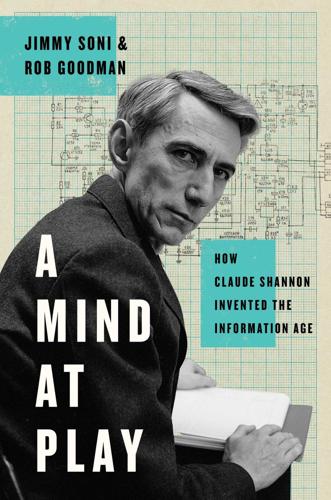
A Mind at Play: How Claude Shannon Invented the Information Age
by
Jimmy Soni
and
Rob Goodman
Published 17 Jul 2017
So though mathematicians turned up their noses at most of the problems brought to them, they did so privately, and labored enthusiastically to produce answers. And so hundreds of the world’s top mathematical minds put their personal research aside, swallowed various degrees of pride, and gathered at the outposts of Los Alamos, Bletchley Park, Tuxedo Park—and Bell Labs, where wartime contracts brought a fresh-from-fellowship Claude Shannon into contact with the latest in military technology and thought. * * * For men like Vannevar Bush, James Conant, John von Neumann, J. Robert Oppenheimer, and others, the war lifted the veil on their work.
…
abstraction, CS’s genius for, 46 Agamemnon, HMS, 120, 121 Alfred Noble Prize, 48 “Algebra for Theoretical Genetics, An” (Shannon), 53–60 Alice in Many Tongues (Weaver), 85 Alice’s Adventures in Wonderland (Carroll), 85, 234 alleles, 55 All Souls College, Oxford, 259–60 Alzheimer’s disease, 268–71 American Journal of Psychology, 250–51 American Mathematical Monthly, 19 American Mathematical Society, 174 American Philosophical Society, 259 American Telephone & Telegraph (AT&T), 65, 66, 205 Anderson, Benedict, 75 Ann Arbor, Mich., 13–14, 34, 293n Ann Arbor Daily News, 14 anti-aircraft guns, 86–89 Apollonius, 250 Apollo Theater, 110 Apple II computer, 266 Archimedes, 32, 250 Armed Forces Security Agency (AFSA), 194, 196 Army, U.S., 81, 97, 194, 198 Army Air Service, U.S., 83 Army Signal Corps, 88 artificial intelligence, 76, 266 chess-playing computers and, xv, 211, 212–14 CS on future of, 207–9, 215–16 Theseus as rudimentary example of, 204, 205–7 Ashkelon, Israel, 261 automobiles, 265 “Baby Ford,” 27 Baghdad, 250 Baker, Bill, 226 “Bandwagon, The” (Shannon), 189–92 bandwidth, information and, 127–28, 135–36 Banquet, The (Xenophon), 253 Barbara’s Philippine Journey (Burks), 52 Bardeen, John, 67 Barnard, Chester, 166–67 Baruch, Bernard, 240 Bateson, Gregory, 178 Beauzamy, Bernard, 61 Beethoven, Ludwig van, 9, 265 Beiderbecke, Bix, 62 Bell, Alexander Graham, 66, 123, 126, 265 Bell Laboratories, 74, 81, 115, 123, 126, 128, 131, 136, 137, 141, 156, 165, 181, 182, 187, 193, 195, 199–200, 211, 217, 229, 233, 235, 239, 249, 259, 273, 277 Betty Shannon and, 183–84 cryptography work of, 98–102, 103, 105 CS hired by, 90 CS’s continued employment by, 226 CS’s freedom at, 68, 114, 199–200, 225 CS’s friendships at, 111–14 CS’s resignation from, 225–26 CS’s summer fellowship at, 63, 64, 71–72 CS’s summer internship at, 38 CS’s Theseus project and, 204–5 intellectual freedom of, xiii, 66–68, 70, 225 inventions and discoveries of, 67 math group at, 65, 68–71, 86, 199 philosophy of, 66–67, 70 Turing’s visit to, 103–4, 105, 107–8 World War II and, 86–90, 91, 93–95, 98–101, 103, 105 Bello, Francis, 186–87, 188 Bell System, 126, 127, 130–31 Bell System Technical Journal, 68, 161, 165, 166, 186 Bell Telephone Company, 178 Bennett, William, 98 Berkeley Heights, N.J., 184 Berlekamp, Elwyn, 261 Berrou, Claude, 325n bits (binary digits), 236, 309n choice and, 141 CS’s introduction of, 141 as fundamental unit of information, xiv, 154 redundancy and, 159–60 Blackman, Ralph, 85 Bletchley Park, 93 Bôcher Memorial Prize, 74 Bode, Hendrik, 85, 225 Bohr, Niels, 131 Boltzmann, Ludwig, 125 BOMBE, 96 Boole, George, 35–37, 38–39, 40, 42, 130 Boolean algebra, 35–37, 38–39, 40–41, 54, 72, 140 Born, Max, 263 Boston, Mass., 63, 79, 177 Boston Globe, 248 Botvinnik, Mikhail, 211–12 Boyer, Carl, 172 Boy Scouts, 10–11 Brattain, Walter, 67 Brewer, Brock, 207–8 Brighton, England, xi British navy, 294n Brunn, Lottie, 253 Buddhism, 263 Buffon’s Needle, 234 Burke, Colin, 96–97 Burks, Barbara Stoddard, 52–53, 58–59, 60 Bush, Vannevar, 21–24, 27–31, 33–34, 38, 43, 51, 53, 54, 59, 60, 63, 73, 75, 77, 91, 99–100, 166, 177 analog computers of, 28, 29–30 CS’s genius recognized by, 20, 22, 33, 48 as CS’s mentor, xii, 48–49, 58, 64–65, 74, 93 on CS’s personality, 47–48 differential analyzer of, see differential analyzer electrical grid project of, 24, 28, 30 Eugenics Record Office closed by, 50 NDRC and, 81–82 Profile Tracker of, 21–22, 25, 27–28, 31 specialization disliked by, 49 as teacher, 22–23, 28–29 as tinkerer, 22–23 Byte, 212 Caissac (chess-playing computer), 215, 266 calculus, 23–24, 29, 54 California, 80, 226, 227 California, University of, at Los Angeles, 243 California Institute of Technology (Caltech), 83 Cambridge, England, 188 Cambridge, Mass., 28, 33, 49, 223, 272 Cambridge University, 25 Carnegie Institution of Washington, 50 Carroll, Lewis, 85, 278 Cartier-Bresson, Henri, 207–8 Cavendish Laboratory, 188 Central Intelligence Agency (CIA), 193, 194, 195 Chamberlain, Owen, 263 Champaign-Urbana, Ill., 167 Chandler, Raymond, 152–53 channel capacity, 157–61 Charles River, 33 chess, 199 computers and, xv, 107, 108, 209, 210–16, 266 CS’s passion for, 199, 211–12 Chicago, University of, 131 choice: information and, 133–34, 138, 141–44 in logical statements, xiii chromosomes, 54–55 Churchill, Winston, xiii, 67, 97–98, 150 Church of Scientology, 200–201 Civil War, U.S., 6 Clark, A.

The Coming Wave: Technology, Power, and the Twenty-First Century's Greatest Dilemma
by
Mustafa Suleyman
Published 4 Sep 2023
FROM VACUUM TUBES TO NANOMETERS: TURBO-PROLIFERATION If you want a hint of what’s coming next, consider the foundation of the last mature wave. From the start, computers were driven by new-frontier mathematics as well as the urgencies of great power conflict. Like the internal combustion engine, computing began as the stuff of obscure academic papers and laboratory tinkerers. Then came the War. In the 1940s, Bletchley Park, Britain’s top secret World War II code-breaking hub, started to realize a true computer for the first time. Racing to crack Germany’s supposedly unbreakable Enigma machines, an extraordinary team turned theoretical insights into a practical device capable of doing just that. Others were also on the case.
…
Brian, 56 artificial capable intelligence (ACI), vii, 77–78, 115, 164, 210 artificial general intelligence (AGI) catastrophe scenarios and, 209, 210 chatbots and, 114 DeepMind founding and, 8 defined, vii, 51 gorilla problem and, 115–16 gradual nature of, 75 superintelligence and, 75, 77, 78, 115 yet to come, 73–74 artificial intelligence (AI) aspirations for, 7–8 autonomy and, 114, 115 as basis of coming wave, 55 benefits of, 10–11 catastrophe scenarios and, 208, 209–11 chatbots, 64, 68, 70, 113–14 Chinese development of, 120–21 choke points in, 251 climate change and, 139 consciousness and, 74, 75 contradictions and, 202 costs of, 64, 68 current applications, 61–62 current capabilities of, 8–9 cyberattacks and, 162–63, 166–67 defined, vii early experiments in, 51–54 efficiency of, 68–69 ego and, 140 ethics and, 254 explanation and, 243 future of, 78 future ubiquity of, 284–85 global reach of, 9–10 hallucination problem and, 243 human brain as fixed target, 67–68 hyper-evolution and, 109 invisibility of, 73 limitations of, 73 medical applications, 110 military applications, 104, 165 Modern Turing Test, 76–77, 78, 115, 190, 210 narrow nature of, 73–74 near-term capabilities, 77 omni-use technology and, 111, 130 openness imperative and, 128–29 potential of, 56, 70, 135 as priority, 60 profit motive and, 134, 135, 136 proliferation of, 68–69 protein structure and, 88–89 red teaming and, 246 regulation attempts, 229, 260–61 research unpredictability and, 130 robotics and, 95, 96, 98 safety and, 241, 243–44 scaling hypothesis, 67–68, 74 self-critical culture and, 270 sentience claims, 72, 75 skepticism about, 72, 179 surveillance and, 193–94, 195, 196 synthetic biology and, 89–90, 109 technological unemployment and, 177–81 Turing test, 75 See also coming wave; deep learning; machine learning arXiv, 129 Asilomar principles, 269–70, 272–73 ASML, 251 asymmetrical impact, 105–7, 234 Atlantis, 5 Atmanirbhar Bharat program (India), 125–26 attention, 63 attention maps, 63 audits, 245–48, 267 Aum Shinrikyo, 212–13, 214 authoritarianism, 153, 158–59, 191–96, 216–17 autocomplete, 63 automated drug discovery, 110 automation, 177–81 autonomy, 105, 113–15, 166, 234 Autor, David, 179 al-Awlaki, Anwar, 171 B backpropagation, 59 bad actor empowerment, 165–66, 208, 266 See also terrorism B corps, 258 Bell, Alexander Graham, 31 Benz, Carl, 24, 285 Berg, Paul, 269–70 BGI Group, 122 bias, 69–70, 239–40 Bioforge, 86 Biological Weapons Convention, 241, 263 biotech. See synthetic biology Black Death, 205 Bletchley Park, 32 books, 30 Boyer, Herbert W., 80 Breakout, 51–52, 113 Brin, Sergey, 53 British East India Company, 186, 189 Brown, David, 98 Brown, Wendy, 185 C “Can We Survive Technology” (Neumann), 221 capital expenditure, 134 Carey, Nessa, 82 Carlson curve, 81 cars.
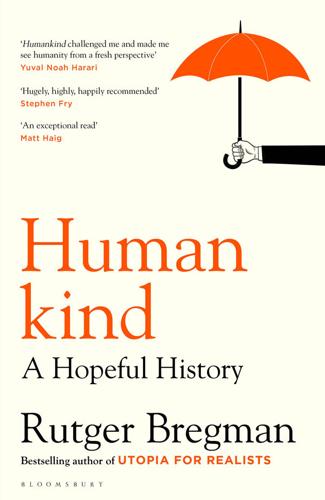
Humankind: A Hopeful History
by
Rutger Bregman
Published 1 Jun 2020
Science had been called to action. There was work to be done and not a moment to lose. While the smartest physicists were cooking up the first atomic bomb in the town of Los Alamos in the American South West, and the cleverest mathematicians were cracking the Germans’ Enigma Code in the English countryside at Bletchley Park, Morris and his colleagues were grappling with the toughest task of all. They had to unravel the mystery of the Nazi mind. By early 1944 there was one conundrum that had scientists stumped. Why did the Germans continue to fight so hard? Why weren’t more of their soldiers laying down their arms and conceding defeat?
…
S., here Bahn, Paul, here, here bananas, here ‘barbarians’, here Bataclan massacre, here Battle of the Somme, here Baumeister, Roy, here BBC Prison Study, here, here, here Beethoven, Ludwig van, here behavioural disorders, here behaviourism, here Belyaev, Dmitri, here, here Bentham, Jeremy, here Berkowitz, Roger, here Berlin Wall, fall of, here, here Berners-Lee, Tim, here Bertsch, Leann, here bestiality, here bin Laden, Osama, here binge drinking, here Bird Mound, here Birdman Cult, here Bismarck, Otto von, here Bitcoin, here Blackett, Patrick, here Bletchley Park, here Blitz, the, here, here, here Bloom, Paul, here blushing, here, here, here, here, here Boer Wars, here Boersema, Jan, here, here, here, here bonobos, here, here Book of Genesis, here Book of Samuel, here Bornem, Coca-Cola Incident, here Bosch, Reinier, here, here Boston Marathon bombing, here, here Bowman, Steve, here brain areas, here brain damage, here brain size, here, here, here, here Bratton, William, here Breivik, Anders, here Brexit, here, here Brown, Jack, here Buddha, here bullying, here Burke, Edmund, here Buss, David, here Buurtzorg, here, here, here, here, here, here bystander effect, here Calvin, John, here canaries, here cannibalism, here, here, here, here, here, here capitalism, here, here, here, here, here, here, here, here, here, here, here, here and incentives, here, here cargo cults, here Carib people, here Carlin, John, here Cattivelli, Walter, here cave paintings, here, here Chagnon, Napoleon, here, here Charles V, Emperor, here Chávez, Hugo, here Chávez, Julio, here Chekhov, Anton, here Chernoweth, Erica, here chimpanzees, here, here, here, here, here, here, here Christmas truce (1914), here, here Churchill, Winston, here, here, here, here, here, here, here Cicero, here Cleary, Raoul, here climate change, here, here Clinton, Bill, here Code of Hammurabi, here coinage, here Cold War, here collective work events, here Collins, Randall, here Colombia, and FARC insurgency, here, here, here Columbus, Christopher, here, here commons, the, here, here communism, here, here, here, here, here, here and evolutionary theory, here, here and incentives, here, here from Latin communis, here Confucius, here conquistadors, here, here Cook, James, here Cookie Monster study, here Crécy, Battle of, here Crick, Francis, here crime, here broken windows theory, here, here, here see also prisons; terrorists Crimean War, here crocodiles, here, here Curtis, Richard, here Daily Mail, here, here Dams, John, here Darley, John, here, here Dart, Raymond, here, here, here Darwin, Charles, here, here, here, here Dawkins, Richard, here, here, here, here de Blok, Jos, here, here, here, here, here de Klerk, Frederik Willem, here De May, Joseph, here de Moor, Tine, here de Queirós, Pedro Fernandes, here de Tocqueville, Alexis, here de Waal, Frans, here, here, here Deci, Edward, here, here demand characteristics, here democracy, here Alaska, here Leicester East, here Porto Allegre, here, here, here Torres, here, here Vallejo, California, here see also commons, the; participatory budgeting depression, here Diamond, Jared, here, here, here, here, here, here Diaz, Julio, here, here Diderot, Denis, here dogs, here Dresden bombing, here drones, here Drummen, Sjef, here, here, here, here, here, here Du Bois, W.

The Long History of the Future: Why Tomorrow's Technology Still Isn't Here
by
Nicole Kobie
Published 3 Jul 2024
That paper, beyond making Turing famous in his field at a remarkably young age, also sparked work in military circles to develop machines like the Electronic Numerical Integrator and Computer (ENIAC), built by John Mauchly and J. Presper Eckert, and perfected by John von Neumann in 1945. This was a mechanical version of what Turing described, and computers continue to be built in this style now. During the war, Turing famously worked at Bletchley Park, the mansion house at the centre of Britain’s wartime codebreaking efforts, where he and colleagues built on Polish efforts to create a machine to decrypt communications scrambled by the German Enigma cypher device so the Allies couldn’t read them. The decrypting machine, dubbed the Bombe, was followed by Colossus, which not only helped the British unpick German messages but is seen by some as the first electronic computer.5 After the war, while living in London, Turing started working on a design for a stored-program computer, but his work developing a physical machine was hampered by the Official Secrets Act; he later wrote software for the Manchester Mark 1, one of the earliest such machines.
…
A half-eaten apple was found by his housekeeper next to his body, but he often ate one before bed; plus, he’d been conducting experiments using cyanide to electroplate spoons, as you do. That suggests an accident was possible, argues Professor Jack Copeland, who is one of the directors of the Turing Archive.5 The Bombe can still be seen at the museum at Bletchley Park just north of London, where visitors can also walk through Hut 8 where Turing worked – and where he chained a mug to a radiator to stop people from nicking it.6 This is from an interview with McCarthy conducted by Peter Asaro with Selma Selma Šabanović at the IEEE History Center in the US: https://biturl.top/bYNBBn The IEEE History Center has a collection of more than 800 oral histories in electrical and computer technology here: https://biturl.top/eeyeMr 7 Creating AI that plays games is still how many models are built and tested, notably AlphaGo, an AI-powered system designed by Google’s DeepMind to play the board game Go.8 As I write this, two CEOs of tech behemoths are preparing to duke it out not via academic debate but with actual fists.
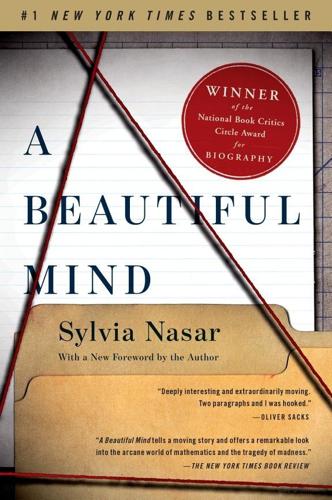
A Beautiful Mind
by
Sylvia Nasar
Published 11 Jun 1998
But because the science required sophisticated mathematics, it was also very much a mathematicians’ war, and the war effort tapped the eclectic talents of the Princeton mathematical community.31 Princeton mathematicians became involved in ciphers and code breaking. A cryptanalytic breakthrough enabled the United States to win a major battle at Midway Island, the turning point in the naval war between the United States and Japan.32 In Britain, Alan Turing, a Princeton Ph.D., and his group at Bletchley Park broke the Nazi code without the Germans’ knowledge, thus turning the tide in the submarine battle for control of the Atlantic.33 Oswald Veblen and several of his associates essentially rewrote the science of ballistics at the Aberdeen Proving Ground. Marston Morse, who had recently moved from Harvard to the Institute, headed a related effort in the Office of the Chief of Ordnance.34 Another mathematician, the Princeton statistician Sam Wilks, made best daily estimates of the position of the German submarine fleet on the basis of the prior day’s sighting.35 The most dramatic contributions were in the areas of weaponry: radar, infrared detection devices, bomber aircraft, long-range rockets, and torpedoes with depth charges.36 The new weapons were extremely costly, and the military needed mathematicians to devise new methods for assessing their effectiveness and the most efficient way to use them.
…
Its worry that a psychotic individual in a position of power could trigger a nuclear war convinced the Air Force to adopt a safer button that required cooperation of several individuals to arm and detonate a nuclear warhead. To be plucked from academe and initiated into the secret world of the military had become something of a rite of passage for the mathematical elite. In World War II, the very best had traveled into the New Mexico desert to Los Alamos to work on the A-bomb alongside von Neumann, and to Bletchley Park north of London to help Turing and his team break the Nazi code.12 Many others, less well known or simply younger, wound up at dozens of less famous sites working on weapon design, encryption, bomb targeting, and submarine chases.13 The recruitment of scientists by the military hadn’t stopped when the war ended, much to everyone’s surprise.
…
T., 34, 35, 229, 230–31, 232 Bell Jar, The (Plath), 211 Bellman, Richard, 110, 185 Berge, Claude, 243 Bers, Lipman, 246 Best, Richard, 184, 185–86, 189 Bewley, Truman, 354, 355 Binmore, Kenneth, 355 bipolar disorder (manic depressive illness), 18, 258, 318–19 Birkhoff, G. D., 53, 55, 103, 136 Blackwell, David, 117 Blake, William, 13 Bletchley Park, 56, 107 Bleuler, Eugen, 17 Bleuler, Manfred, 352 Bluefield, West Va., description of, 28 Bluefield College, 35, 39 Bluefield Daily Telegraph, 33, 38 Bluefield Supply, 33 Bôcher Prize, 138, 226–27, 237, 243 Bochner, Salomon, 64, 71, 128, 132 Boeing, 342–43 Bohnenblust, H.
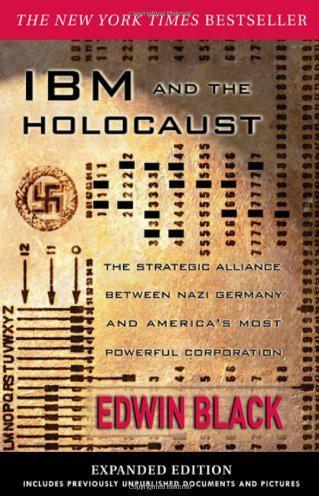
IBM and the Holocaust
by
Edwin Black
Published 30 Jun 2001
He added, “He has intimate knowledge of foreign industrial methods and resources.”39 IBM and its technology were in fact involved in the Allies’ most top-secret operations. The Enigma code crackers at Bletchley Park in England used Hollerith machines supplied by IBM’s British licensee, the British Tabulating Machine Company. Hut 7 at Bletchley Park was known as the Tabulating Machine Section. As early as January 1941, the British Tabulating Machine Company was supplying machines and punch cards not only to Bletchley Park, but to British intelligence units in Singapore and Cairo as well.40 By May 1942, IBM employees had joined America’s own cryptographic service.
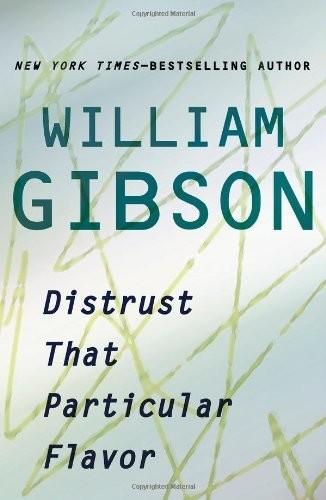
Distrust That Particular Flavor
by
William Gibson
Published 3 Jan 2012
Certain goals of the government’s Total (now Terrorist) Information Awareness initiative may eventually be realized simply by the evolution of the global information system—but not necessarily or exclusively for the benefit of the United States or any other government. This outcome may be an inevitable result of the migration to cyberspace of everything that we do with information. Had Orwell known that computers were coming (out of Bletchley Park, oddly, a dilapidated English country house, home to the pioneering efforts of Alan Turing and other wartime code-breakers) he might have imagined a Ministry of Truth empowered by punch cards and vacuum tubes to better wring the last vestiges of freedom from the population of Oceania. But I doubt his story would have been very different.
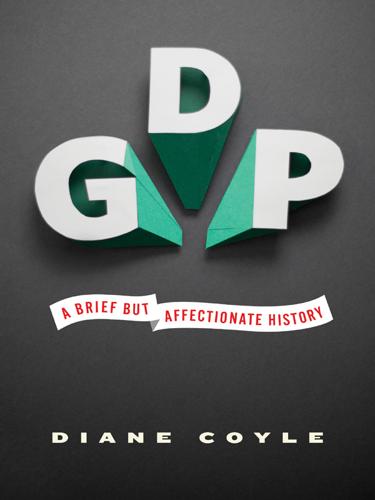
GDP: A Brief but Affectionate History
by
Diane Coyle
Published 23 Feb 2014
In a classic example of historical serendipity, the ability to look empirically at how technology brings about economic growth coincided with a period when a new technology was starting to spread so widely that it seemed bound to boost the economy. This was, of course, the computer and Internet revolution. This provides a good example of the kind of time lags Paul David described. The electronic programmable computer was one of the basic innovations of World War II. It emerged from the wartime code-breaking work at Bletchley Park in the United Kingdom and the brilliant conceptual leaps made by Alan Turing, and, across the Atlantic during and after the war, from the work of John Von Neumann and others involved in the development of nuclear weapons. Computers began as military and academic machines, then came into use in big businesses, and in the 1980s finally became small and cheap enough to spread to all offices and gradually individual homes.
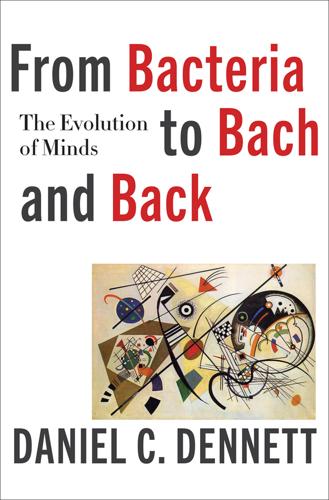
From Bacteria to Bach and Back: The Evolution of Minds
by
Daniel C. Dennett
Published 7 Feb 2017
Before we take up the minds of animals, I want to turn to some further examples of the design of artifacts that will help isolate the problem that evolution solved when it designed competent animals. The intelligent designers of Oak Ridge and GOFAI After seventy years there are still secrets about World War II that have yet to emerge. The heroic achievements of Alan Turing in breaking the German Enigma code at Bletchley Park are now properly celebrated even while some of the details are still considered too sensitive to make public. Only students of the history of atomic energy engineering are likely to be well acquainted with the role that General Leslie Groves played in bringing the Manhattan Project to a successful conclusion.
…
C., 125n Batesian mimicry, 127 Bateson, Gregory, 116 Baum, Eric, 160 Bayes, Thomas, 167 Bayesian networks, 174–75 Bayesian thinking, 167–69, 298, 300, 316 hierarchical predictive coding in, 167, 168–70, 356–57, 385, 388 predictive coding in, 385 Beardsley, Monroe, 324 Beatles, 325, 327 Beatrix Potter syndrome, 96 behavior: intentional stance and, 339, 379–80 self-protection as fundamental reason for, 343–44 unconscious processes in, 100–101 behavior, animal: cultural evolution and, 176–77 hypothetical testing of, 98, 99 inheritance of, 123 instinctive, 88–89, 98, 99, 123, 150–51, 165 learned, 88–89, 98, 99 plasticity and, 99 rationales for, 90–93, 101 reinforcement and, 98, 99 “soliloquies” for, 91 behaviorism, 39 Bennett, Jonathan, 366–67 Berlin, Irving, 325, 327 Bernstein, Leonard, 325–26, 327 Beverley, Robert MacKenzie, 53–54, 75, 151–52 biased transmission, 253 Bickerton, Derek, 262–64, 268, 282 bifocal glasses, 233–34 Big Data, 74 binary codes, 108, 109 Biological Origin of Human Values, The (Pugh), 371 biomass, 9, 86–87 bipedality, as threshold in cultural evolution, 258–59 birds: comprehension attributed to, 88 cultural evolution of, 177 distraction displays by, 91–93 instinctive behavior in, 123 learning by, 266 black box science, 386 Blackmore, Susan, 237, 264n, 392 Bletchley Park, 70 Blind Watchmaker, The (Dawkins), 37 blurts, 353 Bogdan, Radu, 344 bonobos, 252–53, 284, 409n Borges, Jorge Luis, 320 Boyd, Robert, 179, 209, 215n, 217, 224–25, 233, 237, 240, 252, 253–54, 257n, 265 Brahms, Johannes, 327–28 brain: auditory systems of, 184 bottom-up architecture of, 174, 412, 413 codependence of mind and, 413 as collectors of affordances, 150, 165–66, 272, 274, 412 competences developed by, 151 as designed to extract semantic information, 150–51, 157 as designers, 323–24 development of, 143 as expectation-generators, 168–70, 174–75, 298, 388 fusiform face area in, 111 brain genetically vs. culturally transmitted structures in, 279n neuronal spike trains in, 110–11 pattern-finding competences of, 274, 390–91 plasticity of, 159–60, 303 representations in, 347–48 subpersonal (neural) activity in, 346–53, 361 tokens in, 347–48 vocalization system of, 184 brain, computers vs., 111, 151–52, 154–75, 304 as alive vs. not alive, 156–57 as analog vs. digital, 154–55 as carbon- vs. silicon-based, 156 parallel vs. social processing in, 155–56 Brainstorms (Dennett), 161 brain-tokens, of words, 183–86 Brandom, Robert, 41, 314n Bray, Dennis, 48 Bromberger, Silvain, 188 Brooks, Rodney, 160 “bugs,” as thinkos, 229 Bully for Brontosaurus (Gould), 205 Cage, John, 377 Cambrian Explosion, 8 Candide (Voltaire), 29–30 Capote, Truman, 229–30 Carlin, George, 372 Carruthers, Peter, 296n Cartesian coordinates, 13 Cartesian dualism, see dualism Cartesian gravity, 15–22, 324, 335, 338 causes of, 364–70 as evolved phenomenon, 21 human exceptionalism as, 11, 22, 99–100 reasons and, 34 sexism as, 22, 23–24 species chauvinism as, 11, 22 Cartesian Theater, 185, 347, 353, 412 causation, perception of: expectation and, 355 Hume’s theory of, 354–55, 412 as innate reflex, 355 causes: as answers to “how come” questions, 39 evolution of, into reason, 48–49 intentional objects mistaken for, 359–63 reasons vs., 37, 39–40 cells, chemical cycles in, 48 Centered Mind, The (Carruthers), 296n Central Intelligence Agency, 106 chanting, 231 Charpentier, Emmanuelle, 381 Chater, Nick, 279n chemistry, prebiotic, 26–28, 30, 32 chess: computers and, 97, 158, 322, 387 fifty-move rule in, 387 gambits in, 30 intentional stance and, 97 children, language acquisition by, 190, 194–95, 274, 275, 276–77, 286 chimpanzees, 252, 284, 409n cultural evolution of, 177 words and, 203–4 Chomsky, Noam, 187, 188, 276–77, 279–81, 376 on problems vs. mysteries, 372–75 Chomskyan linguistics, 193–94, 248 evolutionary thinking about language disparaged by, 187, 188 merge in, 277, 279–81 Christiansen, Morten H., 248, 279n Church, Alonzo, 56n Churchland, Paul, 17 Church-Turing Thesis, 56n civilization: AI and, 399–410 as artificial environment, 372 complexity and fragility of, 408–10 as work in progress, 410 cladograms (phylogenetic diagrams), 180 Claidière, Nicolas, 269 clam rake, 77–78, 78 Clark, Kenneth, 327 clobbering, in software, 47 Cloud, Daniel, 188, 198n cognition, human: “bulldozer vs.
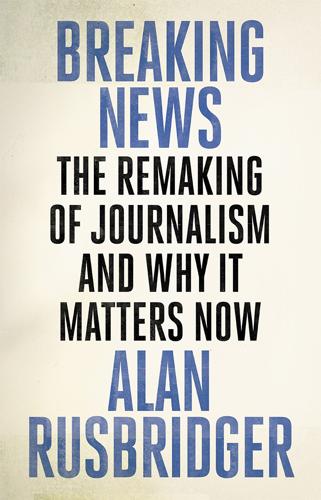
Breaking News: The Remaking of Journalism and Why It Matters Now
by
Alan Rusbridger
Published 14 Oct 2018
But that was not the debate that ensued in Britain – partly because a large segment of the British press had, like Clegg’s description of government, decided to play the man not the ball. In their gut, they didn’t like the look of Snowden just as, instinctively, they quite admired the inhabitants of Vauxhall Cross, Thames House and Cheltenham.18 In the British psyche spies are all about James Bond and Bletchley Park. The Germans – and even the Americans – had good recent-enough reasons to be more circumspect. There was muted support when, on 18 August, Glenn Greenwald’s partner, David Miranda, was detained for nine hours at Heathrow airport under Schedule 7 of the UK Terrorism Act 2000. He had (unknown to us) been acting as a go-between for Laura Poitras and Greenwald.
…
Abell, Stig ref1n Abramson, Jill ref1, ref2 Abu Qatada ref1 accountability journalism ref1, ref2 accuracy ref1 Adebolajo, Lee ref1 advertising specifics ref1, ref2, ref3, ref4, ref5 classified ref1, ref2, ref3, ref4 passim, ref1, ref2, ref3, ref4, ref5, ref6n Advertising Standards Authority ref1 Afghanistan ref1, ref2, ref3, ref4, ref5 The African Queen (film) ref1 Aftonbladet (newspaper) ref1 Age (newspaper) ref1, ref2 Ageh, Tony ref1, ref2 aggregation ref1 Ahad, Ghaith Abdul ref1 AIDS ref1 Aitken, Jonathan (MP) ref1, ref2, ref3, ref4, ref5n Aitken, Lolicia ref1, ref2, ref3, ref4 Aitken, Victoria ref1 Al Jazeera ref1 Al-Fayed, Mohamed ref1 al-Qaeda ref1, ref2 al-Yamanah deal ref1 Alibhai-Brown, Yasmin ref1 All the President’s Men (film) ref1 Allison, Eric ref1 Amazon ref1, ref2, ref3, ref4, ref5 American Journalism Review (AJR) ref1, ref2 American Society of Newspaper Editors ref1 Amnesty International ref1 Anatomy of Britain (Sampson) ref1 Anderson, Chris ref1 anonymity ref1, ref2, ref3, ref4, ref5, ref6, ref7, ref8, ref9, ref10, ref11, ref12, ref13 Apple ref1, ref2, ref3, ref4 Arab Spring ref1, ref2 Archer, Lord Jeffrey ref1 Arendt, Hannah ref1 arms companies ref1 Àrrese, Angel ref1 Ashley, Jackie ref1 Asian Babes (magazine) ref1 Assange, Julian ref1, ref2, ref3, ref4, ref5, ref6, ref7, ref8n Associated Newspapers ref1, ref2, ref3, ref4 Associated Press (AP) ref1, ref2 Atex system ref1 Atlanta Journal-Constitution (AJC) ref1 Atlantic Council, Digital Forensic Research Lab ref1 Attacking the Devil (film) ref1n Attenborough, David ref1 attention time ref1, ref2 tl;dr (too long didn’t read) ref1, ref2n Australia ref1, ref2, ref3, ref4 AutoTrader ref1, ref2 awards ref1, ref2, ref3, ref4, ref5, ref6, ref7, ref8, ref9 Azhar, Azeem ref1 ‘back doors’ ref1, ref2 Baker, Stewart ref1 Ball, James ref1 Baltimore Sun (newspaper) ref1, ref2 Ban Ki–Moon, Secretary General (UN) ref1 Bandar, Prince ref1 Bank of England ref1, ref2 banking ref1 Bannon, Steve ref1n Baquet, Dean ref1, ref2, ref3, ref4 Barcelona Football Club ref1, ref2 Barclay, Aidan ref1, ref2, ref3, ref4, ref5, ref6, ref7 Barclay, David ref1, ref2, ref3, ref4, ref5, ref6, ref7, ref8 Barclay, Frederick ref1, ref2, ref3, ref4, ref5, ref6, ref7, ref8 Barclay, Howard ref1, ref2, ref3 Barclays Bank ref1, ref2, ref3, ref4 Barnes, Julian ref1 Barnes, Thomas ref1, ref2 Baron, Martin ref1, ref2, ref3 Barrow Cadbury Trust ref1 Barstow, Tom ref1 BBC ref1, ref2, ref3, ref4, ref5, ref6, ref7, ref8 digital news ref1, ref2, ref3, ref4, ref5, ref6, ref7 ethos ref1, ref2, ref3, ref4, ref5, ref6, ref7 radio ref1, ref2, ref3, ref4, ref5, ref6, ref7, ref8, ref9 TV ref1, ref2, ref3, ref4, ref5, ref6 BBH agency ref1 Beatty, Warren ref1 Beauchamp, Zack ref1n Beaverbrook, Lord ref1, ref2 Bebo ref1 Been There ref1, ref2 Being Digital (Negroponte) ref1 Belhaj, Abdel Hakim ref1 Bell, Sir David ref1, ref2 Bell, Emily ref1, ref2, ref3, ref4, ref5 passim, ref1, ref2, ref3, ref4n Mad/Great Pronouncements ref1, ref2, ref3, ref4, ref5 Bellfield, Levi ref1 Bellingcat ref1 Benjamin, Alison ref1 Benkler, Yochai ref1 Benn, Aluf ref1 Berkett, Neil ref1, ref2, ref3 Berliner, Wendy ref1 Berliner format ref1, ref2, ref3, ref4, ref5, ref6n Berlusconi, Silvio ref1, ref2 Bermuda ref1 Berners-Lee, Sir Tim ref1, ref2, ref3 Bernstein, Carl ref1, ref2, ref3 Berwin Leighton Paisner ref1 Beslan ref1 Bezos, Jeff ref1, ref2, ref3 Biafra War plan ref1 Bickel, Mr Justice ref1 Big Brother (TV) ref1 ‘big properties’ ref1 Bildt, Prime Minister Carl (Sweden) ref1, ref2 Bill and Melinda Gates Foundation ref1, ref2, ref3 Bill of Rights (1968) ref1 Billington, Michael ref1, ref2 Bin Jassim, Sheikh Hamad (aka HBJ) ref1 Bizzari, Marco ref1 Black, Conrad ref1, ref2, ref3 Black, Ian ref1 Black, Mr Justice ref1 BlackBerry ref1 Blackhurst, Chris ref1 Blair, Prime Minister Tony ref1 Blau, Wolfgang ref1, ref2, ref3n Blendle ref1 Bletchley Park ref1 Bloom, Godfrey ref1, ref2 Bloomberg ref1, ref2, ref3 Bloomberg Terminal ref1 Blunkett, David (MP) ref1 Boards ref1, ref2, ref3, ref4, ref5, ref6, ref7 Guardian Media Group (GMG) ref1, ref2, ref3, ref4, ref5, ref6, ref7, ref8n, ref9n Boer War ref1 Bogart, Humphrey ref1 Bogler, Dan ref1 bombs ref1, ref2, ref3 book festivals ref1, ref2 Boseley, Sarah ref1n Boston Consulting Group (BCG) ref1 Boston Globe (newspaper) ref1 Bowcott, Owen ref1, ref2 Bradlee, Ben ref1, ref2, ref3, ref4, ref5 Bradshaw, Peter ref1 Bragg, Billy ref1 brands ref1, ref2, ref3 passim, ref1, ref2 passim, ref1, ref2, ref3, ref4, ref5, ref6, ref7 Brecqhou island ref1, ref2 Breitbart ref1, ref2 Brennan Jr, William ref1 Brexit ref1, ref2, ref3, ref4, ref5, ref6, ref7, ref8n British Aerospace (BAE) ref1, ref2n British Airways (BA) ref1, ref2 British Journalism Review (BJR) ref1 broadsheets ref1, ref2, ref3, ref4, ref5, ref6, ref7 passim, ref1, ref2, ref3, ref4, ref5, ref6, ref7, ref8, ref9, ref10n Broder, David ref1, ref2, ref3, ref4, ref5n Brody, Neville ref1, ref2n Brooks, Rebekah ref1, ref2, ref3, ref4, ref5 Brooks, Richard ref1n Brooks, Tim ref1 Brown, Prime Minister Gordon ref1, ref2 Brown, Andrew ref1 Brown, George (MP) ref1 BSkyB ref1, ref2, ref3, ref4, ref5n Buckingham Palace ref1 B.UK Limited ref1 bulk sales ref1, ref2, ref3, ref4, ref5, ref6, ref7n, ref8n Bunting, Madeleine ref1, ref2, ref3 Bush, President George W. ref1 Butler report (2004) ref1 Buzzfeed ref1, ref2, ref3, ref4, ref5, ref6 Byrne, Gabriel ref1 Cable, Vince (MP) ref1 Cadwalladr, Carole ref1 Cairns, Colonel Douglas ref1 Calder, Simon ref1 Cambridge Analytica (CA) ref1, ref2 Cambridge Evening News (CEN) (newspaper) ref1, ref2, ref3, ref4, ref5 Cameron, Prime Minister David ref1, ref2, ref3, ref4, ref5, ref6, ref7 Campbell, W.

Spies, Lies, and Algorithms: The History and Future of American Intelligence
by
Amy B. Zegart
Published 6 Nov 2021
Many hallmarks of Britain’s modern intelligence system—including its recruitment of promising university students, the close integration of intelligence and statecraft, the use of codebreaking alliances with other nations, and the existence of intelligence leaders who “spoke truth to power”—date to the reign of Elizabeth I (1558–1603).11 When British codebreakers at Bletchley Park cracked Hitler’s ciphers in World War II, it was the third time in 350 years that British codebreaking prevented a foreign invasion.12 In comparison, America’s intelligence history is remarkably short and has been marked by three distinct overarching patterns: halting development, organizational fragmentation, and democratic tensions.
…
See also analysis of intelligence data bin Laden, Osama: CIA plan to capture, 69, 205; escape from Tora Bora, 99; long search for, 98, 99–103; near capture of, after 9/11, 99; pre-9/11 intelligence on, 69, 205; role in 9/11 attacks, 79; and U.S. laws against assassination, 191 bin Laden, killing of, 78, 106–7; analysis of intelligence data, 103–5; choice of covert action for, 105–6, 320n159; and deniability, 181; intelligence leading to, 77–78, 86, 100–102; as intelligence success, 21; and open-source intelligence, 5–6; secrecy surrounding operation, 94; uncertainty of identification, 77, 102, 104–5; Zero Dark Thirty film about, 27–28 biology, synthetic, challenges created by, 3 Black, Cofer, 171, 214 Black Chamber, 46, 59–60, 304n13 Black Tom explosion, 58 Bletchley Park codebreakers, 46 Bond, James, 23, 26 Brennan, John, 10, 89–90, 120, 122, 195 British intelligence: history of, 46, 304n11; in U.S., 58 Bureau of Military Information, 56–57 Burr, Aaron, 53 Burr, Richard, 225f Bush, George H. W., 177, 189 Bush, George W.: on assessments of Iranian nuclear program, 229; and covert action, 186, 192; and cyberattack on Iranian nuclear facilities, 264; drone strikes authorized by, 175, 343n91; National Security Council meetings, 73; and search for bin Laden, 91, 100; and September 11th terrorist attacks, 171 Cambridge Spies, 154, 162 Capitol riot (January 6th, 2021), 5, 39, 365n10 Carter, Ashton, 224, 257–58 Carter, Jimmy, 106, 177–79 case (operations) officers, duties of, 145–46 Casey, William, 183, 344n105 Castelnau, Noël de, 121 Castro, Fidel, 63, 171, 182 Center for Nonproliferation Studies, 225, 239 Center for Strategic and International Studies, 241, 247 Central Intelligence Agency (CIA): and Afghanistan War, 192–93; Angleton as counterintelligence chief at, 160–64; annual family day, 94; black sites, 18, 196–97; breech of computer system, 167–68; and congressional investigation of harsh interrogations, 195–98, 348n7, 349n24, 350n25; courting of positive portrayals in films and TV, 26–28; creation of, 46, 49–50, 63, 172; domestic spying by, 83; functions of, 63–64, 65, 72, 74, 82; headquarters, described, 7, 16, 148; and Korean War, 108–10, 114, 125, 322n22; lack of oversight before 1970s, 201–2; and Libyan nuclear weapons, 229; Memorial Wall, 7; military’s opposition to, 65; overemphasis on secrecy, 34; phone security at, 93; post-9/11 analysis reforms at, 133; pre-9/11 failures of, 34, 69, 115, 205; public relations efforts, 9; scandals of 1970s, and introduction of oversight, 202–5; and search for bin Laden, 101, 102–3; social media use, 1, 9; subcultures within, 92–93; as top-tier agency, 74, 311n130.
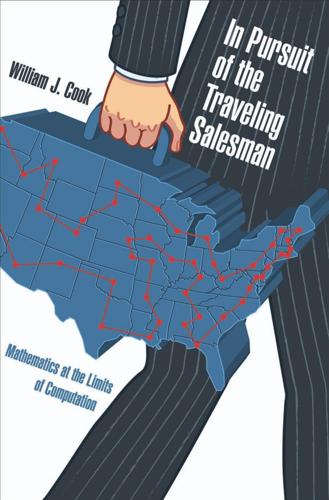
In Pursuit of the Traveling Salesman: Mathematics at the Limits of Computation
by
William J. Cook
Published 1 Jan 2011
Furthermore, the border graph could be assumed to be three-connected, that is, it is impossible to break the graph into two parts by deleting one or Origins of the Problem two vertices. Restricted to these three-regular, three-connected maps, Tait expected Hamiltonian circuits would always be available. William Tutte, the great graph theorist and Bletchley Park code breaker, eventually showed Tait’s conjecture to be false in 1946. That is too bad, but at least the circuit problem stood its ground longer than Kempe’s four-color proof, which was shown to be incorrect by P. J. Heawood in 1890. A historical footnote is that the first recorded description of the fourcolor problem is in a letter to Hamilton, written by Augustus De Morgan in 1852.
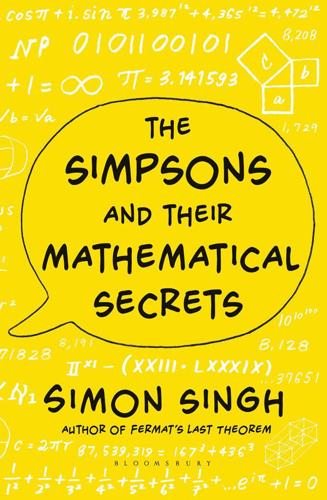
The Simpsons and Their Mathematical Secrets
by
Simon Singh
Published 29 Oct 2013
There is, however, some consolation for the Simpson family, as several important—and valid—concepts in mathematics bear their name. For example, Simpson’s paradox is arguably one of the most baffling paradoxes in mathematics. It was popularized and investigated by Edward H. Simpson, who developed an interest in statistics while working at Bletchley Park, the secret British code-breaking headquarters during the Second World War. One of the best illustrations of Simpson’s paradox concerns the American Civil Rights Act of 1964, a historic piece of legislation aimed at tackling discrimination. In particular, the paradox emerges if we scrutinize in detail the voting records of the Democrats and Republicans when the act came before the U.S.
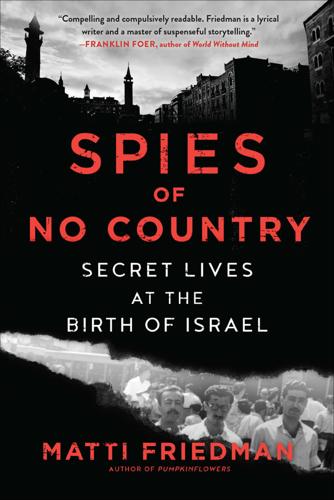
Spies of No Country: Secret Lives at the Birth of Israel
by
Matti Friedman
Published 5 Mar 2019
This was hard to do over the radio, especially with men who were products of the insouciant chaos of the Palmach, but the commanders tried. The radio transmissions usually began and ended with the same words, for example, and someone finally realized this was foolish—repetitive phrases were gifts to code breakers, the kind of thing that helped the British teams at Bletchley Park crack the Nazis’ Enigma encryption a few years before. So this had to change: Because of the possibility that the enemy can listen in on our broadcasts and crack our code, from tomorrow there is a new instruction: We will no longer say “Gamliel from The Dawn” and “The Dawn to Gamliel,” or the ending that is always used, “Be strong.”
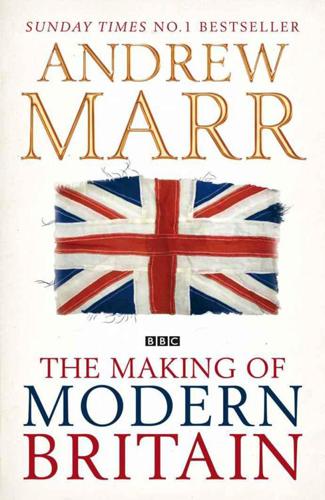
The Making of Modern Britain
by
Andrew Marr
Published 16 May 2007
Both sides developed new technologies, from ‘snorkels’ allowing U-boats to sail long distances underwater, and ever deadlier mines on the German side, to refined airborne radar, depth charges and code-breaking on the Allied side. Small shifts could lead to huge effects. To give just one example: the breaking of the German Enigma code and the exploitation of secret traffic by the British academics, chess masters, mathematicians, linguists and military men at Bletchley Park was one of the war’s most celebrated scientific success stories. (It should be remembered that Polish mathematicians and agents, French spies, British naval boarding parties and lackadaisical German intelligence officers were all part of the Enigma tale too.) Without Enigma intercepts the Submarine Tracking Room would have been half blind.
…
Index abdication crisis (1936) ref1, ref2 Abyssinia ref1 Addison Act (1919) ref1 Addison, Christopher ref1 adultery ref1 advertising ref1 air races ref1 air travel ref1 arguments over airspace ref1, ref2 early passenger services ref1 establishment of Imperial Airways and routes ref1 and flying boats ref1 air-raid protection (ARP) wardens ref1 aircraft production ref1 and Second World War ref1, ref2, ref3, ref4 Aitken, Sir Max see Beaverbrook, Lord Alexander, Sir Harold ref1, ref2 Alexandra, Queen ref1, ref2 Allenby, General ref1, ref2 Amritsar massacre (1919) ref1 Anglo-Persian Oil Company ref1 anti-communist organizations ref1 anti-Semitism ref1, ref2, ref3, ref4 Anti-Slavery Society ref1 appeasement ref1, ref2 arguments for ref1 Chamberlain’s meeting with Hitler ref1 and Halifax’s visit to Germany ref1 and Munich ref1 public support for ref1, ref2 Arab revolt (1917) ref1, ref2 architecture ref1, ref2, ref3 aristocracy ref1, ref2 defending of position against House of Lords reform ref1 in economic retreat ref1 and far-right politics ref1 Lloyd George’s attacks on ref1, ref2 post-war ref1 selling of estates ref1, ref2 Armistice Day ref1 Armour, G.D. ref1 Arnim, Elizabeth von ref1 art: Edwardian ref1 inter-war ref1, ref2 Artists’ Rifles ref1 Asquith, Helen (first wife) ref1 Asquith, Herbert ref1, ref2, ref3, ref4, ref5, ref6 downfall ref1, ref2 and First World War ref1, ref2, ref3, ref4 and Home Rule ref1 and House of Lords reform ref1, ref2 loses seat in 1918 election ref1 and loss of son ref1 marriages ref1, ref2 and press ref1 relationship with Venetia Stanley ref1 succession as prime minister ref1 and tariff reform ref1, ref2 and women’s suffrage ref1, ref2 Asquith, Margot (second wife) ref1, ref2, ref3, ref4 Asquith, Raymond (son) ref1 Asquith, Violet (daughter) ref1 Ataturk, Kemal ref1 Atlantic Charter ref1 Attlee, Clement ref1, ref2, ref3, ref4 Auchinleck, General Claude ref1, ref2 Audemars, Edmond ref1 Australia and First World War ref1 Automobile Association ref1 Automobile Club ref1 Aveling, Edward ref1 back-to-nature movement ref1 Baden-Powell, Sir Robert ref1, ref2 Balcon, Michael ref1 Baldwin, Stanley ref1, ref2, ref3, ref4, ref5, ref6, ref7 and abdication crisis ref1, ref2, ref3 and broadcasting ref1 characteristics ref1 and Churchill ref1 conflict with Rothermere and Beaverbrook ref1, ref2 and General Strike ref1, ref2 and India ref1 and Lloyd George ref1 and protectionism ref1 resignation ref1 succession as prime minister ref1 Balfour, A.J. ref1, ref2, ref3, ref4, ref5, ref6 Balfour, Betty ref1 Balfour Declaration (1917) ref1 Bank of England ref1, ref2, ref3 banks ref1 Barnes, Fred ref1 Barry, Sir John Wolfe ref1 Basset Hound Club Rules and Studbook ref1, ref2 Battle of the Atlantic ref1, ref2 Battle of Britain ref1 Battle of the Somme (film) ref1 battleships ref1 see also Dreadnoughts Bauhaus movement ref1 Bax, Arnold ref1 BBC (British Broadcasting Corporation) ref1, ref2 and abdication crisis ref1 creation ref1 development under Reith ref1, ref2 early announcers and tone of voice ref1 and General Strike (1926) ref1 receives first Royal Charter (1927) ref1 and Second World War ref1 ‘BBC English’ ref1 beach holidays ref1 Beamish, Henry Hamilton ref1 Beatty, Admiral David ref1, ref2, ref3 Beaufort, Duke of ref1 Beaverbrook, Lord (Max Aitken) ref1, ref2, ref3, ref4, ref5, ref6, ref7, ref8, ref9 Beck, Harry ref1 Beckwith-Smith, Brigadier ref1 BEF (British Expeditionary Force) and First World War ref1, ref2, ref3, ref4 and Second World War ref1, ref2, ref3 Belgian Congo ref1 Bell, Bishop ref1 Belloc, Hilaire ref1 Benn, Tony ref1 Bennett, Arnold ref1 Whom God Hath Joined ref1 Benz, Karl ref1 Beresford, Lord Charles ref1 Besant, Annie ref1 Bethmann-Hollweg, Chancellor ref1, ref2 Bevan, Nye ref1, ref2, ref3, ref4 Beveridge, William ref1, ref2 Bevin, Ernie ref1, ref2 Billings, Pemberton ref1 ‘bird flu’ ref1 birth control see contraception Bismarck ref1 black Americans arrival in Britain during Second World War ref1 Black and Tans ref1 Blackshirts ref1, ref2, ref3 Blake, Robert ref1 Bland, Hubert ref1, ref2 Bland, Rosamund ref1 Blast (magazine) ref1 Blatchford, Robert ref1, ref2 Bletchley Park ref1 Bluebird Garage ref1 Blunt, Wilfred Scawen ref1, ref2 ‘Bob’s your uncle’ phrase ref1 Boer War ref1, ref2, ref3, ref4, ref5, ref6, ref7 Boggart Hole riot (Manchester) (1906) ref1, ref2 Bolsheviks ref1, ref2, ref3, ref4, ref5, ref6, ref7, ref8 Bomber Command ref1, ref2 ‘Bomber Harris’ see Harris, Sir Arthur Bonar Law, Andrew ref1, ref2, ref3, ref4, ref5, ref6, ref7, ref8, ref9 Booth, Charles ref1, ref2 Boothby, Bob ref1 Bottomley, Horatio ref1 Bowser, Charlie ref1 Boy Scouts see scouting movement Boys Brigade ref1 Bradlaugh, Charles ref1 Braithwaite, W.J. ref1 Brest-Litovsk, Treaty of (1918) ref1 Bristol Hippodrome ref1 British Broadcasting Corporation see BBC British Empire ref1, ref2, ref3, ref4, ref5, ref6, ref7, ref8 British Empire Exhibition (1924) ref1 British Empire Union ref1 British Eugenics Education Society ref1 British Expeditionary Force see BEF British Gazette ref1, ref1 British Grand Prix ref1 British Legion ref1 British Union of Fascists see BUF Britons, The ref1 Brittain, Vera ref1 Britten, Benjamin ref1 broadcasting ref1 see also BBC Brooke, Sir Alan ref1, ref2, ref3 Brooke, Raymond ref1 Brooke, Rupert ref1 Brown, Gordon ref1 Brownshirts ref1 Buchan, John Prestor John ref1 BUF (British Union of Fascists) ref1, ref2, ref3 Burma ref1 Butler, R.A. ref1, ref2 Cable Street, Battle of (1936) ref1, ref2 Cadogan, Sir Alexander ref1 Cambrai, Battle of (1917) ref1 Campbell, Donald ref1 Campbell, Malcolm ref1 Campbell-Bannerman, Sir Henry ref1, ref2 camping and caravanning ref1 Camping Club of Great Britain and Ireland ref1 Canterbury, Archbishop of ref1, ref2, ref3, ref4 Carnarvon, Lord ref1 cars ref1, ref2, ref3 benefits of ref1 developments in ref1, ref2 first accident involving a pedestrian and ref1 Fordist mass-production ref1 motorists’ clothing ref1 rise in number of during Edwardian era ref1 Carson, Edward ref1, ref2, ref3, ref4, ref5, ref6, ref7 Casement, Sir Roger ref1, ref2 Cat and Mouse Act ref1 cavity magnetron ref1 Cecil, Hugh ref1 CEMA ref1 censorship Second World War ref1, ref2 Chamberlain, Arthur ref1 Chamberlain, Joe ref1 background and early political career ref1 and Boer War ref1 breaks away from Liberals ref1 characteristics ref1 fame of ref1 sets up Liberal Unionist organization ref1 stroke ref1, ref2 and tariff reform debate ref1, ref2, ref3 Chamberlain, Neville ref1, ref2, ref3 and appeasement ref1, ref2, ref3, ref4 as Chancellor ref1 and Churchill ref1 downfall and resignation ref1, ref2 failure of diplomacy towards Hitler ref1 and Munich ref1 and Second World War ref1, ref2 Channel Islands ref1 Channon, Sir Henry (‘Chips’) ref1 Chaplin, Charlie ref1, ref2 Chatsworth ref1 Chequers ref1 Cherwell, Lord (Frederick Lindemann) ref1 Cheshire, Leonard ref1 Chesterton, G.K. ref1, ref2 Childers, Erskine execution of by IRA ref1 The Riddle of the Sands ref1 Chindits ref1 Christie, Agatha ref1, ref2 Churchill, Clementine ref1 Churchill, Randolph ref1, ref2 Churchill, Winston ref1, ref2 and abdication crisis ref1 as air minister ref1 anti-aristocracy rhetoric ref1 at Board of Trade ref1 and Boer War ref1 and Bolsheviks ref1 and bombing of German cities during Second World War ref1 and Chamberlain ref1 as Chancellor of the Exchequer under Baldwin ref1 and Empire theatre protest ref1 and eugenics ref1, ref2 as First Lord of the Admiralty and build-up of navy ref1, ref2, ref3, ref4 and First World War ref1, ref2, ref3, ref4, ref5, ref6, ref7 and Gallipoli campaign ref1 and General Strike ref1, ref2 and George V ref1 and German invasion threat prior to First World War ref1 and Hitler ref1, ref2 and Home Rule ref1, ref2, ref3 and India ref1, ref2, ref3, ref4 and Lloyd George ref1, ref2, ref3 loses seat in 1922 election ref1 political views and belief in social reform ref1 public calls for return to government ref1 rejoins Tory Party ref1 relationship with Fisher ref1 relationship with United States during Second World War ref1, ref2, ref3, ref4 resignation over India (1931) ref1 and return to gold standard ref1, ref2 and Rowntree’s book on poverty ref1 and Second World War ref1, ref2, ref3, ref4, ref5, ref6, ref7, ref8, ref9, ref10, ref11, ref12, ref13 and Sidney Street siege ref1 speeches during Second World War ref1, ref2 steps to becoming Prime Minister ref1 suffragette attack on ref1 and tariff reform ref1, ref2 threatening of European peace by Hitler warning and calls for rearmament ref1, ref2, ref3 and Tonypandy miners’ strike (1910) ref1 cinema ref1 Citizens’ Army ref1 City of London Imperial Volunteers ref1 civil service ref1 Clark, Alan The Donkeys ref1 Clark, Sir Kenneth ref1, ref2 Clarke, Tom ref1 class distinctions in Edwardian Britain ref1 divisions within army during First World War ref1 impact of Second World War on ref1, ref2 and politics in twenties ref1 clothing motorists’ ref1 and Second World War ref1 and status in Edwardian Britain ref1 in twenties ref1 Clydebank, bombing of ref1 Clydeside ref1, ref2, ref3, ref4, ref5 coal miners strike (1912) ref1 Coliseum (London) ref1 Collins, Michael ref1, ref2, ref3 Colville, Jock ref1, ref2, ref3 Common Wealth ref1, ref2 Communist Party of Great Britain ref1, ref2, ref3, ref4, ref5 communist revolution, fear of ref1 communists ref1, ref2, ref3, ref4 Conan Doyle, Arthur ref1, ref2 The Hound of the Baskervilles ref1 Concorde ref1, ref2, ref3 Congo Reform Association ref1 Connolly, James ref1, ref2, ref3, ref4 Connor, William (‘Cassandra’) ref1 Conrad, Joseph ref1, ref2 Heart of Darkness ref1 The Secret Agent ref1 conscientious objectors First World War ref1 Second World War ref1 Conservatives ref1, ref2, ref3, ref4, ref5, ref6, ref7, ref8, ref9, ref10, ref11, ref12 contraception ref1, ref2, ref3 Coolidge, President Calvin ref1, ref2 Cooper, Duff ref1, ref2, ref3 Corrigan, Gordon ref1 Coventry, bombing of ref1, ref2 Coward, Nöel ref1 crash (1929) ref1, ref2 Cripps, Sir Stafford ref1, ref2 Crookes, Sir William ref1 Crooks, Will ref1 Crystal Palace fire (1936) ref1 Curzon, Lord ref1, ref2, ref3, ref4, ref5 Czechoslovakia ref1, ref2 Dacre, Harry ref1 Daily Express ref1, ref2, ref3 Daily Mail ref1, ref2, ref3, ref4, ref5 Ideal Home Exhibition ref1 Northcliffe’s article on shells crisis during war ref1 Daily Mirror ref1, ref2 Daimler, Gottfried ref1 ‘Daisy, Daisy, Give Me Your Answer Do’ ref1, ref2 Darwin, Charles ref1 Darwin, Erasmus ref1 Darwin, Major Leonard ref1 Davidson, J.C.C. ref1, ref2 Davison, Emily Wilding ref1 Davos Ski Club ref1 De Havilland ref1 De La Warr Seaside Pavilion (Bexhill) ref1 de Nyevelt, Baron de Zuylen ref1 de Valera, Eamon ref1, ref2, ref3 Debrett’s Peerage ref1 Defence of the Realm Act see DORA Dickens, Charles ref1 Dimond, Phyllis ref1 distributism ref1 Distributist League ref1 ditchers ref1, ref2 divorce ref1 Divorce Law Reform Association ref1 Dock, Wharf, Riverside and General Labourers’ Union ref1 dockers’ strikes ref1, ref2, ref3, ref4 Doenitz, Admiral ref1 DORA (Defence of the Realm Act) ref1, ref2, ref3 Douglas, Clifford ref1 Dowding, Sir Hugh ‘Stuffy’ ref1, ref2 Dreadnoughts ref1, ref2, ref3, ref4, ref5, ref6 Dresden, bombing of (1945) ref1 drug taking, in twenties ref1 Dunkirk ref1, ref2, ref3 Dunlop, John Boyd ref1 Dyer, General ref1 Easter Rising (1916) ref1, ref2, ref3, ref4, ref5 Eckersley, Peter ref1, ref2, ref3 economy and gold standard ref1, ref2, ref3, ref4, ref5 impact of crash (1929) ref1 post-First World War ref1, ref2 Eden, Anthony ref1, ref2, ref3 Edinburgh Castle pub (London) ref1 Edmunds, Henry ref1 education Edwardian era ref1 inter-war years ref1, ref2 Education Act (1902) ref1 Edward VII, King ref1, ref2, ref3, ref4, ref5, ref6 Edward VIII, King ref1 abdication ref1, ref2 affair with Mrs Dudley Ward ref1 enthusiasm for Nazi Germany ref1 love for Wallis Simpson ref1, ref2 and social reform ref1 Egypt ref1, ref2, ref3 Eighth Army ref1, ref2 Eisenhower, General ref1 El-Alamein, Battle of ref1, ref2 elections (1906) ref1 (1910) ref1, ref2 (1918) ref1 (1922) ref1, ref2 (1923) ref1 (1924) ref1 (1931) ref1 (1935) ref1 Elgar, Sir Edward ref1 Eliot, T.S. ref1, ref2, ref3, ref4, ref5 ‘Burnt Norton’ ref1 The Wasteland ref1 Ellis, Havelock ref1 emigration Edwardian era ref1 inter-war years ref1 Empire Day ref1 Empire theatre (London) ref1 Enigma ref1, ref2 ENSA (Entertainments National Service Association) ref1 eugenics ref1 evolution ref1 explorers ref1 Fabian Society ref1, ref2, ref3 Fairey Battle bombers ref1, ref2 fascism ref1, ref2, ref3, ref4, ref5, ref6 see also BUF Fawcett, Millicent Garrett ref1, ref2 Feisal, Emir ref1, ref2 Fenians ref1 film industry see cinema Film Society ref1 finger prints ref1 Finland ref1 First World War (1914) ref1, ref2 aftermath ref1 and alcohol ref1 Balkans campaign ref1 Baltic plan ref1 and Battle of Jutland ref1, ref2, ref3, ref4 and BEF ref1, ref2, ref3, ref4 British blockade of Germany ref1, ref2, ref3 and burial of the Unknown Soldier ref1 class divisions in army ref1 collapse of German army ref1 comparison with Second World War ref1 conscription ref1; criticism of by UDC ref2 Dardanelles campaign ref1, ref2, ref3 death toll and casualties ref1, ref2, ref3 early military failures ref1 and film industry ref1 and Fisher ref1 food shortages and rationing ref1 formation of coalition government ref1, ref2 French campaign ref1, ref2, ref3, ref4, ref5 Gallipoli campaign ref1, ref2, ref3, ref4 German raids ref1 and Haig ref1 impact of on British people ref1 and Middle East ref1 munitions factories ref1 Orpen’s paintings of ref1 and Passchendaele ref1 post-war attack on military chiefs ref1 post-war impact of ref1 preparations for ref1 and press/journalists ref1 public support for ref1 recruitment ref1, ref2 revisionists and ref1 Sassoon’s protest at ref1 scenario if Germany had won ref1 at sea ref1 seeking alternative strategies to Flanders campaign ref1 shells crisis and Daily Mail article ref1 sinking of German battleships by Germany at end of ref1 sinking of Lusitania ref1 slaughter in ref1 steps leading to and reasons for Britain’s declaration of war on Germany ref1 struggle to comprehend meaning of ref1 surrender of Germany ref1; trench warfare ref1, ref2, ref3, ref4 U-boat campaign ref1, ref2, ref3, ref4 and United States ref1, ref2, ref3 use of convoys ref1 use of horses ref1 and women ref1, ref2 Fisher, First Sea Lord ‘Jackie’ ref1, ref2, ref3, ref4, ref5, ref6 Fleming, Sir Alexander ref1 Fleury ref1 flying boats ref1 flying circuses ref1 folk dancing ref1 food imports ref1 Foot, Michael ref1 Ford, Ford Madox ref1 Ford, Henry ref1, ref2 Forde, Florrie ref1 Formby, George ref1 ref2 43 (nightclub) ref1, ref2 France and First World War ref1, ref2, ref3, ref4, ref5 and Second World War ref1, ref2, ref3 franchise ref1 and women ref1, ref2, ref3, ref4 free trade ref1, ref2, ref3, ref4, ref5 French, Sir John ref1, ref2, ref3, ref4, ref5, ref6, ref7, ref8 Fyfe, Hamilton ref1, ref2 gaiety, in twenties ref1 Gallacher, William ref1 Gallipoli crisis ref1, ref2, ref3, ref4 Galsworthy, John ref1 Galton, Francis ref1, ref2 gambling ref1 Gandhi, Mohandas ref1, ref2 garages ref1 garden cities ref1, ref2 Gardiner, Rolf ref1 Garnett, Theresa ref1 Garsington Manor ref1 Gaumont Palaces ref1 Gawthorpe, Nellie ref1 General Strike (1926) ref1, ref2, ref3 and BBC ref1 gentlemen’s clubs ref1 George III, King ref1 George IV, King ref1, ref2 George V, King ref1, ref2, ref3, ref4, ref5, ref6, ref7, ref8, ref9, ref10 George VI, King ref1 German Naval Law (1912) ref1 Germany ref1, ref2, ref3, ref4 of (1914) ref1 building of battleships ref1 early state-welfare system ref1 and eugenics ref1 fear of invasion by in Edwardian Britain ref1 and First World War ref1, ref2, ref3, ref4 national welfare system ref1 navy ref1 and planned Irish uprising ref1 and Versailles Treaty ref1 Wandervogel youth groups ref1 see also Second World War ‘GI brides’ ref1 Gibbon, Lewis Grassic ref1, ref2 Gibbs, Philip ref1, ref2, ref3 Gibson, Guy ref1 Gifford, Grace ref1 Gill, Eric ref1 GIs ref1 Gladstone, William ref1, ref2 Glasgow ‘forty hours strike’ (1919) ref1 Goering, Hermann Wilhelm ref1, ref2 gold standard ref1, ref2, ref3, ref4, ref5 Gort, Field Marshal ref1 Gough, General Hubert ref1, ref2 Graf Spee ref1 Graves, Robert ref1 Goodbye to All That ref1 Grayson, Victor ref1, ref2 Great Depression ref1, ref2 Great War see First World War Greece and Second World War ref1 Greenshirts (Social Credit) ref1, ref2, ref3 Gregory, Maundy ref1, ref2, ref3 Gresley, Sir Nigel ref1 Grey, Sir Edward ref1, ref2, ref3, ref4 Grieve, Christopher Murray see McDiarmid, Hugh Grigg, John ref1 Guest, Freddy ref1, ref2 Guilty Men ref1 Gunn, Neil ref1 guns and Edwardian Britain ref1 Haggard, Sir Rider ref1 Haig, Sir Douglas ref1, ref2, ref3, ref4 Halifax, Lord (Irwin) ref1, ref2, ref3, ref4, ref5 Handley Page, Frederick ref1, ref2 Hanfstaengel, Ernst ‘Putzi’ ref1 Hankey, Maurice ref1 Hannington, Wal ref1 Hardie, Keir ref1, ref2, ref3 Hardy, Thomas ref1 Hargrave, John ref1, ref2, ref3 Harmsworth, Alfred see Northcliffe, Lord Harmsworth, Harold see Rothermere, Lord Harris, Sir Arthur (‘Bomber Harris’) ref1, ref2 Harrisson, Tom ref1 Hart, Basil Liddell ref1 Hastings, Max ref1 headwear ref1 hedgers ref1, ref2 Henderson, Arthur ref1 Henderson, Sir Nevile ref1 Hepworth, Cecil ref1 Hindenburg, General ref1 Hipper, Admiral ref1, ref2 Hippodrome (London) ref1 Hitchcock, Alfred ref1 Hitler, Adolf ref1, ref2, ref3, ref4, ref5 appeasement towards ref1 and Churchill ref1, ref2 and Edward VIII ref1 and Halifax visit ref1 and Lloyd George ref1 and Munich meeting ref1 and Second World War ref1, ref2, ref3, ref4 suicide of ref1 support of by ‘Cliveden set’ ref1 and Unity Mitford ref1, ref2 Ho Chi Minh ref1 Hobhouse, Emily ref1 Hoesch, Leopold von ref1 Holden, Charles ref1 Hollywood ref1 Holtzendorff, Admiral Henning von ref1 Home Guard ref1, ref2, ref3 Home Rule (Ireland) ref1, ref2 honours selling for cash by Lloyd George ref1 Honours (Prevention of Abuses) Act (1925) ref1 Hood (battleship) ref1 Hoover Building ref1 Hore-Belisha, Leslie ref1 Houdini, Harry ref1 House of Lords ref1 reform of by Liberals ref1, ref2 housing ref1, ref2, ref3 Housing Manual (1919) ref1 Howard, Ebenezer ref1 Howard, Peter ref1 Hughes, Billy ref1 hunger marches ref1 Hurricanes ref1, ref2 ‘Hymn of Hate’ ref1 Hyndman, Henry ref1 Ibn Saud ref1 illegitimacy ref1 Illustrated London News ref1, ref2, ref3 immigration Edwardian Britain ref1 inter-war years ref1 Immigration Act (1924) (US) ref1 Imperial Airways ref1 income tax ref1, ref2, ref3, ref4 Independent Labour Party (ILP) ref1, ref2, ref3, ref4, ref5 India ref1, ref2, ref3, ref4, ref5 Indian National Congress ref1 industry Second World War ref1 Victorian Britain ref1 Inskip, Sir Thomas ref1 Instone ref1 International Brigade ref1 International Congress of Eugenics ref1 International Fascist League ref1 ‘ Invasion of 1910, The’ ref1 invasion fear of in Edwardian Britain ref1 IRA (Irish Republican Army) ref1, ref2, ref3, ref4 Iraq ref1, ref2, ref3 Ireland ref1 civil war (1922) ref1 a nd Easter Rising (1916) ref1, ref2, ref3, ref4, ref5 and First World War ref1 formation of independent Da´il in southern ref1 and Home Rule ref1, ref2 and Second World War ref1 war against British and negotiation of peace treaty (1921) ref1 Irish nationalists ref1, ref2, ref3 Irish Republican Army see IRA Irish Republican Brotherhood (IRB) ref1, ref2, ref3, ref4 Irish Volunteers ref1, ref2, ref3, ref4, ref5, ref6 Ironside, Lord ref1 Irwin, Lord see Halifax, Lord Islam ref1 Ismay, General ref1 Italian futurists ref1 Italians interment of during Second World War ref1 ‘ It’s a Long Way to Tipperary’ ref1 Jackson, Derek ref1 James, Henry ref1, ref2 Japanese and Second World War ref1, ref2, ref3, ref4 Jarrow Crusade (1936) ref1 jazz ref1 Jellicoe, John ref1, ref2, ref3 Jerusalem ref1 Jewish People’s Council Against Fascism ref1 Jews ref1, ref2 see also anti-Semitism ‘ jingo’ ref1 Johnston, Edward ref1 Johnston, Tom ref1 journalism ref1 see also press Joyce, James ref1 Joynson-Hicks, Sir William ref1, ref2 Jutland, Battle of ref1, ref2, ref3 Kandahar Ski Club ref1 Karno, Fred ref1 Keating, Sean ref1 Kemal, Mustapha ref1 Kendall, Mary ref1 Kennedy, Joseph ref1 Kenney, Annie ref1 Kent, Duke of ref1 Keppel, Alice ref1 Key, Edith ref1 Keynes, John Maynard ref1, ref2, ref3 Kibbo Kift ref1, ref2, ref3 Kinship in Husbandry ref1 Kipling, Rudyard ref1, ref2, ref3, ref4, ref5, ref6 Kitchener, Lord ref1, ref2, ref3, ref4, ref5, ref6, ref7, ref8, ref9, ref10, ref11 Knight, John ref1 Krupskaya, Nadezhda ref1 Labour Party ref1, ref1, ref1, ref1, ref1, ref1, ref1, ref1 Labour Representation Committee ref1, ref2 Lancastria, bombing of ref1 Land Army girls ref1 land speed records ref1 Landsdowne House ref1 Landsdowne, Lord ref1, ref2 Lane, Allen ref1 Lansbury, George ref1 Larkin, James ref1 Laszlo, Philip de ref1 Lauder, Harry ref1, ref2, ref3 Lawrence, D.H. ref1, ref2, ref3, ref4, ref5 Lawrence, Katie ref1 Lawrence, T.E. ref1, ref2, ref3 Le Queux, William ref1 League of Isis ref1 League of Nations ref1, ref2 Lebanon ref1 Lee, Arthur ref1 Leeper, Reginald ref1 Leese, Arnold ref1 Left Book Club ref1 Leigh-Mallory, Air Vice Marshal ref1 Lenin, Vladimir ref1, ref2, ref3 Lenton, Lilian ref1 Leopold, King of Belgium ref1 Letchworth ref1, ref2 Lewis, Rosa ref1 Liberal Party ref1, ref2, ref3, ref4, ref5 Liberal Unionist organization ref1 Liddell-Hart, Basil ref1 Lissauer, Ernst ref1 literature ref1, ref2, ref3, ref4 Little Tich ref1 Liverpool strikes ref1 Liverpool Mersey Tunnel ref1 Llanfrothen Burial Case ref1 Lloyd George, David ref1, ref2, ref3, ref4, ref5, ref6, ref7 anti-landlord rhetoric ref1, ref2 and Boer War ref1, ref2 as Chancellor of the Exchequer ref1 in charge of munitions ref1, ref2 and Churchill ref1, ref2, ref3 downfall ref1, ref2 and First World War ref1, ref2, ref3, ref4, ref5, ref6, ref7 and Hitler ref1 hostility towards Haig ref1 and Ireland ref1 Orange Book ref1 and People’s Budget ref1, ref2 personal life ref1 political career ref1 as prime minister and wartime regime under ref1, ref2, ref3 rise to power ref1, ref2 and Second World War ref1 selling of honours for cash ref1 share dealing ref1 and tariff reform debate ref1 vision of welfare system ref1 visit to Germany ref1 wins 1918 election ref1, ref2 and women’s vote ref1 Lloyd, Marie ref1, ref2, ref3, ref4 Lockyer, Sir Norman ref1 London ref1 fog in Edwardian era ref1 music halls ref1 as refuge for revolutionaries abroad in Edwardian era ref1 London Blitz ref1 London Pavilion theatre ref1 London Transport ref1 London Underground map ref1 Loos, Battle of ref1 Lubetkin, Berthold ref1 Ludendorff ref1, ref2, ref3, ref4 Luftwaffe ref1, ref2, ref3 Lunn, Arnold ref1, ref2 Lunn, Sir Henry ref1 Lusitania ref1 Lynn, Vera ref1 MacColl, Ewan ref1 MacCormick, John ref1, ref2 McDiarmid, Hugh (Grieve) ref1 MacDonagh, Michael ref1 MacDonald, Ramsay ref1, ref2, ref3, ref4, ref5, ref6, ref7 background ref1 and formation of National Government ref1, ref2 and Mosley ref1 vilification of ref1, ref2 MacInnes, Colin ref1 McKenna, Reginald ref1 Mackenzie, Compton ref1, ref2 Maclean, John ref1, ref2 Macmillan, Harold ref1 McNabb, Father Vincent ref1 McShane, Harry ref1 Madoff, Bernard ref1 ‘mafficking’ ref1 Major, John ref1 Malins, Geoffrey ref1 Mallard locomotive ref1 ‘Manchester Rambler, The’ ref1 Manners, Lady Diana ref1, ref2 marching ref1 Marconi, Guglielmo ref1 Marconi scandal (1911) ref1 Markiewicz, Countess ref1, ref2 Marlborough, Duke of ref1 Martin, Captain D.L. ref1 Marx, Eleanor ref1 Marx, Karl ref1 Mass Observation system ref1, ref2 Matcham, Frank ref1 Maude, Aylmer ref1 Maurice, Sir Frederick ref1 Maxse, Leo ref1, ref2 Maxton, Jimmy ref1, ref2 May, Phil ref1 medical science ref1 Melba, Dame Nellie ref1 Melbourne, Lord ref1 memorials ref1 Mendelsohn, Erich ref1 metro-land ref1 Meyrick, Kate ref1, ref2, ref3 Middle Classes Union ref1 Middle East ref1, ref2 Mill, John Stuart ref1 Millais, Sir John Everett ref1 Milner, Lord ref1, ref2, ref3 miners dispute (1926) ref1, ref2 Mitchell, Hannah ref1 The Hard Way Up ref1 Mitchell, Reginald ref1, ref2, ref3 Mitford, Deborah ref1 Mitford, Diana see Mosley, Diana Mitford girls ref1 Mitford, Jessica ref1, ref2, ref3, ref4, ref5 Mitford, Nancy ref1, ref2 Wigs on the Green ref1 Mitford, Pamela ref1 Mitford, Tom ref1 Mitford, Unity ref1, ref2, ref3 modernism ref1, ref2, ref3 Montacute House (Somerset) ref1 Montagu, Edwin ref1, ref2, ref3 Montgomery, General Bernard ref1, ref2, ref3, ref4 Morel, Edmund ref1, ref2 Morrel, Ottoline ref1, ref2 Morris, William (car maker) ref1, ref2 Morris, William (craftsman) ref1 Morrison, Herbert ref1, ref2 Morton, Desmond ref1 Morton, E.V. ref1 Mosley, Cimmie (first wife) ref1, ref2 Mosley, Diana (née Mitford) (second wife) ref1, ref2, ref3, ref4, ref5, ref6 Mosley, Oswald ref1, ref2, ref3, ref4, ref5, ref6, ref7, ref8, ref9 and anti-Semitism ref1 background and early life ref1 and Battle of Cable Street ref1 and fascism ref1 funding from Mussolini ref1 imprisonment ref1 launching of British Union of Fascists ref1 and MacDonald ref1 marriage to Diana Mitford ref1 and New Party ref1 and Olympia riot (1934) ref1 plans and ideas ref1 resignation from Labour ref1 and Rothermere ref1 Muir, Edwin ref1, ref2 Munich ref1 Munnings, Alfred ref1 Murdoch, Rupert ref1 Murray, Lord ref1 music ref1, ref2 music hall ref1 Mussolini, Benito ref1, ref2, ref3, ref4, ref5 national debt, post-war ref1 National Government ref1, ref2, ref3, ref4, ref5, ref6, ref7 National Insurance Bill (1911) ref1 National Party of Scotland ref1 National Unemployed Workers Movement (NUWM) ref1 National Union of Women’s Suffrage Societies (NUWSS) ref1 navy see Royal Navy Navy League ref1 Nazi Germany ref1, ref2, ref3, ref4, ref5, ref6, ref7 see also Hitler, Adolf Nehru, Jawaharlal ref1 Nesbit, Edith (Daisy) ref1, ref2, ref3 The Amulet ref1 Five Children and It ref1 The Railway Children ref1 Nevill, Captain ref1 New Party ref1, ref2 newspapers see press Nicholson, William ref1, ref2 nightclubs ref1, ref2, ref3, ref4 1922 committee ref1 Nivelle, General ref1, ref2 No-Conscription Fellowship ref1 Nordics ref1 Norman, Sir Montagu ref1, ref2, ref3 Northcliffe, Lord (Alfred Harmsworth) ref1, ref2, ref3, ref4 background ref1 and Daily Mail ref1 Daily Mail article on shells shortage ref1 and downfall of Asquith ref1 last days and death ref1 Motor Cars and Driving ref1 northern industrial cities, decline of ref1 Northern Ireland ref1 see also Ireland Norway and Second World War ref1, ref2 nostalgia ref1 nuclear bomb ref1, ref2 nudism ref1 O’Connor, General ref1, ref2 Ogilvie-Grant, Mark ref1 Olympia Garage ref1 organic food movement ref1, ref2, ref3, ref4 Orpen, William ref1, ref2 Orwell, George ref1, ref2, ref3 Homage to Catalonia ref1 The Road to Wigan Pier ref1 Ottoman Empire ref1, ref2, ref3 outdoors ref1 Owen, Frank ref1 Owen, Wilfred ref1, ref2, ref3 Oxford Automobile Company ref1 Oxford Union debate (1933) ref1, ref2 Paget, Lieutenant-General Sir Arthur ref1, ref2 Palace Theatre (London) ref1 Palestine ref1 Panahards ref1, ref2 Pankhurst, Adela ref1 Pankhurst, Christabel ref1, ref2, ref3 Pankhurst, Emmeline ref1, ref2, ref3, ref4 Pankhurst, Sylvia ref1 paperbacks ref1 Paris peace conference ref1, ref2 Park, Keith ref1 Parliament during Second World War ref1 Passchendaele ref1 Patton, General ref1, ref2 Peace Pledge Union ref1, ref2 Pearl Harbor ref1, ref2, ref3 Pearse, Padraig ref1, ref2 Pearson, George ref1 peerages ref1 selling for cash ref1 peers ref1 Penguin Books ref1 pensions ref1 People’s Budget (1909) ref1, ref2, ref3, ref4 Pétain, Marshal ref1 pianos ref1 Pick, Frank ref1 Piper, John ref1 Pistols Act (1903) ref1 Plunkett, Joseph ref1, ref2 Plymouth, bombing of ref1 political extremism ref1 Ponzi, Charles ref1 Poor Law Guardians ref1, ref2 poor/poverty ref1, ref2, ref3, ref4 Rowntree’s investigation and book on conditions in York ref1 Pound, Ezra ref1, ref2, ref3 Cantos ref1 Powell, Enoch ref1 Powys, John Cowper ref1, ref2 Preece, Sir W.H. ref1 press ref1, ref2 and abdication crisis ref1 and Daily Mail ref1 destruction of Liberal government by ref1 and First World War ref1 see also Beaverbrook, Lord; Northcliffe, Lord; Rothermere, Lord Price, G.
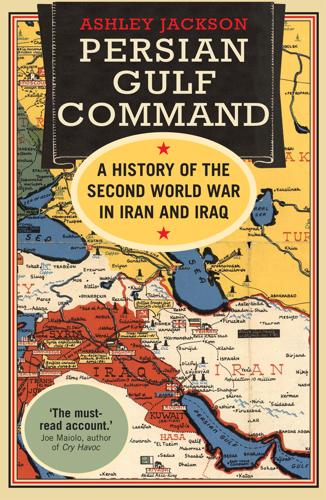
Persian Gulf Command: A History of the Second World War in Iran and Iraq
by
Ashley Jackson
Published 15 May 2018
Arriving in Baghdad the day after the coup, Ambassador Cornwallis said that he would have no relations with Rashid Ali’s ministry.50 Britain immediately proclaimed the coup unconstitutional, and distributed thousands of copies of a special broadcast made by Prince Abdulillah appealing for resistance. The danger to the port of Basra, to the oilfields and to the overland line of communication ‘was instantly obvious to London’, a perspective reinforced by Ultra decrypts.51 Bletchley Park code-breakers intercepted a report from the Italian minister in Tehran stating that he and his German colleagues had agreed on Syria as the best channel through which to send arms to the Golden Square. It was also revealed that Rashid Ali had been given an ultimatum by the Golden Square – ‘delete the British military presence and seal a relationship with Germany: otherwise the Army would take over from the junta’.52 On 6 April, the day that the Germans invaded Greece, the Iraqis prevented British military personnel from travelling between Baghdad and Habbaniya, and removed radio transmitters from the British Military Mission.
…
(i) Attlee, Clement (i), (ii), (iii) Auchinleck, General Sir Claude (i), (ii), (iii) and invasion of Syria (i) Middle East Command (i), (ii) and Persia and Iraq Command (i) and troops for Iraq (i), (ii) Ayn Zalah, oilfield (i) Azerbaijan (i), (ii), (iii) declaration of autonomous republic (i) Azimi, Fakhreddin (i) Babr, Iranian ship (i) Baggallay, Lacy, Foreign Office (i), (ii) Baghdad British advance on (i), (ii) British civilians besieged in (i) British war cemetery (i) farhud (violence) (i) flooding around (i), (ii) garrisoned (i) Rashid airbase (i), (ii), (iii) siege of British Embassy (i) Washash Channel (i), (ii), (iii) Baghdad and Northern Iraq War Contributions Fund (i) Baghdad Radio (i) Baghdad–Basra railway (i), (ii) Baillon, Major-General Joseph (i), (ii), (iii) Baku, Azerbaijan (i), (ii) Transcaucasus Centre Depot (i) Balfour Beatty, compensation claim (i) Bandar-e Shahpur, Iran (i), (ii), (iii), (iv) Polish refugees at (i) Bandra, SS (i) Baneh, Iran, Kurdish control of (i) Barham, Dr Noel (i) Barzani, Mullah Mustafa, Iraqi Kurd separatist (i) Basra (i), (ii), (iii) and advance on Baghdad (i) as bridgehead (i), (ii), (iii) deployment of troops to (i), (ii), (iii) employment (i) invasion of Iran from (i) port (i), (ii) strategic importance to Britain (i), (ii), (iii), (iv), (v), (vi) unrest (i) Basu, Lieutenant, Indian Army (i) BBC Arabic Service (i) BBC Persian Service (i) Beaton, Cecil (i), (ii), (iii) Beaverbrook, Lord (i) Berle, Adolf, US (i) Bird, Lieutenant William H., US (i) black market (i) Black Sea, Soviet supply route (i) Blackhall, Airman L.A. (i) Bletchley Park (i) Blomberg, Major Axel von (i), (ii) Bond Brothers and Company (i) Booth, Brigadier General Donald P., PGC commander (i) Brauchitsch, Field Marshal von (i) Briggs, Asa (i) British Army achievements in Middle East (i) public relations, Iraq (i) British army units Eighth Army (i) Ninth Army, in Syria (i) Tenth Army (i), (ii), (iii), (iv) and PAIC (i) III (British) Corps (i) 1st Cavalry Division (i) 5th Division (i), (ii) 18th Division (i) 51st Highland Division (i) 51st Infantry Division (i) 56th Infantry Division (i), (ii) 4th Cavalry Brigade (i) 7th Armoured Brigade (i) 9th Armoured Brigade (i), (ii) 1st Household Cavalry Regiment (i), (ii), (iii), (iv), (v) 11th Hussars (i) anti-aircraft troops in Iraq (i) Desert Mechanized Regiment (Arab Legion) (i) Essex Regiment, 1st Bn (i), (ii), (iii) King’s Own Royal Regiment (i), (ii), (iii), (iv), (v), (vi), (vii), (viii) Northamptonshire Regiment (i) Royal Artillery, 3rd Field Regt (i) Royal Wiltshire Yeomanry (i) Seaforth Highlanders (i), (ii) Warwickshire Yeomanry (i), (ii), (iii) Wiltshire Regiment (i) see also Arab Legion British Oil Development Company (i) British Overseas Airways Corporation (BOAC) (i), (ii), (iii) Brooke, General Sir Alan (i), (ii), (iii), (iv) Brooke-Popham, Sir Robert (i) brothels (i) Brown, F.E.
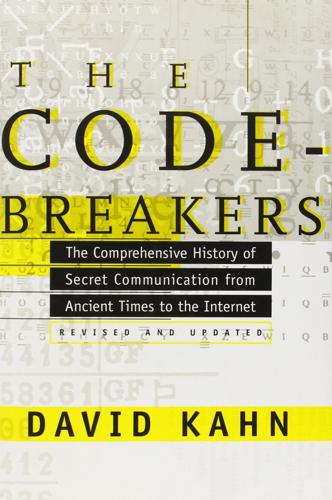
The Codebreakers: The Comprehensive History of Secret Communication From Ancient Times to the Internet
by
David Kahn
Published 1 Feb 1963
Sandler’s book is Chiffer: En Bok om Litterära och Historiska Hemligskrifter (Stockholm: Walhström & Widstrand, 1943). 481 Achilles: Segerdahl; German Foreign Office, letter, January 10, 1964. 483 Bohemann tells Cripps: “Telegram fran Churchill banade vag till Roosevelt” and “Tyskarnas hemliga kod forcerades av srenskar,” both Svenska Dagbladet (October 30, 1964), 5; “Churchill stor beundrare av Karl XII: Chifferbragd i UD,” Dagens Nyheter (October 30, 1964), 29; “Han dechiffrerade tyska krigskoden pa fjorton dagar,” Dagens Nyheter (November 1, 1964), 1. 483 Germans use Swedish wires: See demand in DGFP, XII, 1041. 483 $60,000 a year: /630, a letter from the American charge d’affaires at San Salvador, December 7, 1925, reporting a conversation with the British charge there a few years earlier. 484 Department of Communications: Sara Turing, Alan M. Turing (Cambridge: W. Heffer & Sons, 1959), 67. 484 Bletchley Park: D. C. Low, The History of Bletchley Park and Mansion (mimeographed, no publisher, 1963). 484 MI 8: Nalder, 118. Administrative problems of the British military cryptographic organization at 252-256, 162. 484 August 20 change: Captain Ellis M. Zacharias, Secret Missions: The Story of an Intelligence Officer (New York: G.
…
One story credited one of these wizards with solving a Turkish code during the war in less than five months, though he himself could not speak Turkish and had had to call in experts in the language to translate the messages. The Foreign Office reportedly considered no code as fully secret after it had been used for six months; consequently it changed all highly confidential codes every four months. In 1939, the Foreign Office moved what it euphemistically called its Department of Communications to Bletchley Park, an estate and mansion in Bletchley, a town in Buckinghamshire about 50 miles northwest of London. It is far and away the most history-redolent black chamber of all. The British, of course, trace the land from a Roman encampment, through its award by William the Conquerer to Bishop Geoffrey of Constance for services rendered at the Battle of Hastings, down on through the ownership of various lords (most notably the two George Villierses, first and second dukes of Buckingham) and rich men of decreasing interest.
…
It was about four feet wide, as tall as a man, and with six stacks of two horizontal rectangles, each holding three wired code wheels, the analogues of the rotors, on its front. This, the first British bombe, was installed March 18, 1940, in one of the long, peak-roofed, wooden huts that had been built as a non-London headquarters for the cryptanalysts on an estate, Bletchley Park, or B.P., in the railroad junction town of Bletchley, 50 miles northwest of the capital. It began work at once seeking to determine Enigma keys. The British concentrated at first on Luftwaffe messages. The Luftwaffe signalmen were not as well trained as the more veteran signalmen of the German Army and Navy; they were less disciplined in their cryptographic work, engaging in such forbidden practices as using a girlfriend’s name for a key setting or beginning a second message with the same setting as that left at the ending of the first.
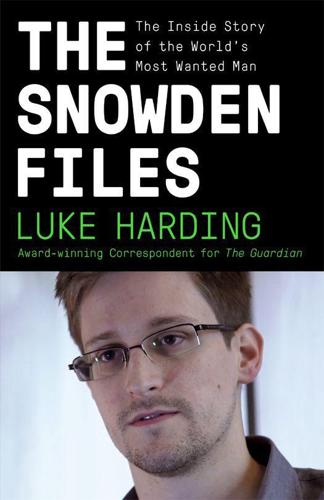
The Snowden Files: The Inside Story of the World's Most Wanted Man
by
Luke Harding
Published 7 Feb 2014
During the first and second world wars, military cryptography and cryptanalysis – the ability to decrypt coded information on enemy movements – played a key role. But it was largely the preserve of embattled nation states. Typically, those interested in codes were the British mathematicians working in secret to defeat the Nazis at wartime Bletchley Park, and the Soviets subsequently. By the 1970s, however, encryption software such as Pretty Good Privacy (or PGP) was available to private individuals, as well as commercial organisations. Encryption thus posed an obvious challenge to western intelligence agencies, anxious to continue reading their adversaries’ messages.

To Be a Machine: Adventures Among Cyborgs, Utopians, Hackers, and the Futurists Solving the Modest Problem of Death
by
Mark O'Connell
Published 28 Feb 2017
This was perhaps the foundational article of faith in the AI community, the idea that lay beneath both the ecstasies of the Singularity and the terror of catastrophic existential risk. It was known as the intelligence explosion, a notion that had first been introduced by the British statistician I. J. Good, a former Bletchley Park cryptographer who went on to advise Stanley Kubrick on his vision of AI in 2001: A Space Odyssey. In a paper called “Speculations Concerning the First Ultraintelligent Machine,” delivered at a NASA conference in 1965, Good outlined the prospect of a strange and unsettling transformation that was likely to come with the advent of the first human-level AI.
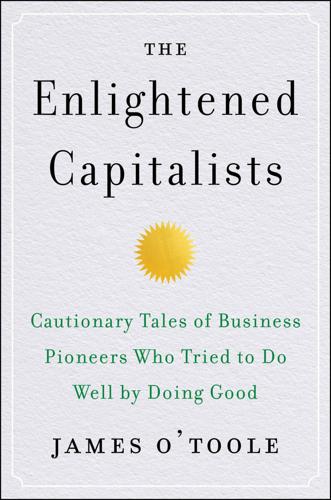
The Enlightened Capitalists
by
James O'Toole
Published 29 Dec 2018
Thereafter, he invariably played the role of maverick in whatever context he found himself. During World War II, Norris served in a top-secret US Navy cryptology unit engaged in breaking Japanese and German codes. Like their more famous British counterparts, Alan Turing and his colleagues at Bletchley Park—notably depicted in the 2014 film The Imitation Game—Norris and his navy colleagues made several technological breakthroughs that after the war proved invaluable in the development of digital computers. Leaving the navy in 1945, Norris worked for a variety of companies involved in the creation of mainframe computers, and in 1955 was named vice president and general manager of the Univac division of Sperry Rand.
…
What his plan lacked in details, Cray more than compensated for in execution. In 1960 CDC delivered a supercomputer to the US Navy that was more powerful, faster, and cheaper—at a bargain $600,000—than anything IBM offered at the time (a second computer was soon sold to the British government agency that had managed the Bletchley Park codebreaking). Control Data was on its way to becoming the manufacturer of the world’s largest, most powerful, and highest-speed computers. In 1962, IBM’s legendary chairman, Thomas J. Watson Jr., testily asked his executive team how they had allowed the Control Data Corporation to gain the lead in superconductors: “Contrasting this modest effort [of Cray’s laboratory] with 34 people including the janitor with our vast development activities, I fail to understand why we have lost our industry leadership position by letting someone else offer the world’s most powerful computer.”4 For the next decade, CDC turned out a succession of ever faster, more powerful computers.
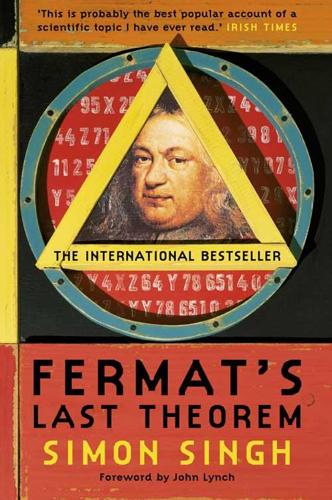
Fermat’s Last Theorem
by
Simon Singh
Published 1 Jan 1997
When the war started, the British Cypher School was dominated by classicists and linguists. The Foreign Office soon realised that number theorists had a better chance of finding the key to cracking the German codes and, to begin with, nine of Britain’s most brilliant number theorists were gathered at the Cypher School’s new home at Bletchley Park, a Victorian mansion in Bletchley, Buckinghamshire. Turing had to abandon his hypothetical machines with infinite ticker-tape and endless processing time and come to terms with a practical problem with finite resources and a very real deadline. Cryptography is an intellectual battle between the code-maker and the code-breaker.

AIQ: How People and Machines Are Smarter Together
by
Nick Polson
and
James Scott
Published 14 May 2018
The team became an indispensable source of technical advice to the military’s Office of Scientific Research and Development, and their guidance was sought at the highest levels of command—and they got results. The statisticians at Columbia developed nothing so fearsome or famous as the teams gathered in Los Alamos or Bletchley Park at the same time. But their remit was broader, and their effect on the war was profound. They studied rocket propellants, torpedoes, proximity fuses, the geometry of aerial combat, the vulnerability of merchant vessels—anything involving math that would advance the war effort. As Wallis, the group’s director, later reminisced: During the Battle of the Bulge in December 1944, several high-ranking Army officers flew to Washington from the battle, spent a day discussing the best settings on proximity fuses for air bursts of artillery shells against ground troops, and flew back to the battle.… This kind of responsibility, although rarely spoken of, was always in the atmosphere and exerted a powerful, pervasive, and unremitting pressure.5 Fortunately, it was a team of some of the best mathematical minds in the country, many of whom would go on to lead their chosen fields.

Seeking SRE: Conversations About Running Production Systems at Scale
by
David N. Blank-Edelman
Published 16 Sep 2018
He is the instigator, coauthor, and editor of Site Reliability Engineering and The Site Reliability Workbook. 1 See, for example, “How on-call and irregular scheduling harm the American workforce” from The Conversation, or “Why You Should End On-Call Scheduling and What to Do Instead” from When I Work, outlining the impact on income and family; the costs to the systems themselves are hard to estimate, but “friendly fire” in on-call situations is estimated to occur in over 1% of on-call shifts. 2 Bletchley Park and its complement of WRNS (Women’s Royal Naval Service) on-call operators. 3 According to, for example, Tom’s Hardware, around the Bletchley Park era, “in a large system, [a vacuum tube] failed every hour or so.” 4 See, for example, this MedicineNet article or this free medical dictionary, making specific reference to being reachable in 30 minutes of being paged. 5 “Accident & Emergency” in the UK/Ireland; Emergency Room (ER) in the US. 6 Note that doctors get a lot of automatic alerting as well, it’s just that it seems that a lot of it is very low quality; see, for example, this Washington Post article. 7 See, for example, this article from Medical Protection Ireland, emphasizing not eating junk food, paying bills in advance of a week of night-shift work, and double-checking calculations made during night shifts. 8 For example, this article claims that 5% of their ER admissions gave rise to 22% of their costs; this piece argues more broadly that Pareto Principle–style effects are distributed throughout medicine; and this article showed that adverse drug effects obeyed a Pareto Principle–like distribution across a sample of 700-plus cases. 9 As best I can tell, this situation is unique to software: industries that deal with very complex hardware, such as airplanes, do have problems related to complexity, and uncover latent problems with particular revisions of sensors, and so on, but the nature of software being changed all the time is found, as far as I know, nowhere else. 10 On-call in the medical professional also serves as a triage function, which is partially outsourced to monitoring software in the SRE case. 11 Leaving aside the considerable problems with persuading the public, this would be a good idea. 12 This applies to operations engineers generally, and sometimes to product software engineers. 13 For the purposes of this footnote, I want to attack the notion that failure is unavoidable and that everything in computing is wobbly stacks built on soggy marshes of unpredictability.
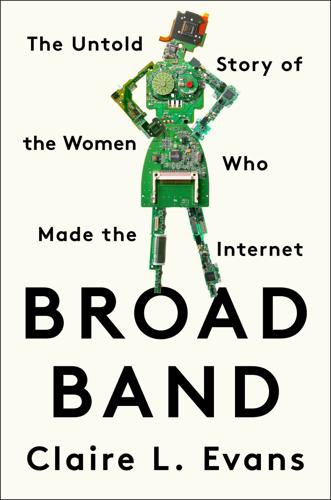
Broad Band: The Untold Story of the Women Who Made the Internet
by
Claire L. Evans
Published 6 Mar 2018
The nineteenth-century British mathematician Charles Babbage, whose desire to calculate by steam led to important early developments in mechanical computing, called what the human computing offices of his time did “mental labor.” He considered it work one did with the brain, just as hammering a nail is work one does with the arm. Indeed, computing was the grunt labor of organized science; before they were made obsolete, human computers prepared ballistics trajectories for the United States Army, cracked Nazi codes at Bletchley Park, crunched astronomical data at Harvard, and assisted numerical studies of nuclear fission on the Manhattan Project. Despite the diversity of their work, human computers had one thing in common. They were women. Mostly, anyway. The Naval Observatory hired only one female computer for its Nautical Almanac Office, although she was by far the most famous among them: Maria Mitchell, a Quaker from Nantucket Island, who had won a medal from the king of Denmark before she was thirty for discovering a new comet in the night sky.

Life After Google: The Fall of Big Data and the Rise of the Blockchain Economy
by
George Gilder
Published 16 Jul 2018
Their computer technology, advanced AI, and machine learning—acclaimed in hundreds of press releases as the Valley’s principal activity and hope for the future, with names such as TensorFlow, DeepMind, Machine Learning, Google Brain, and the Singularity—had gained such power and momentum that it was now deemed nothing less than a menace to mankind. In 1965 I. J. Good, whom Turing taught to play Go at Bletchley Park while they worked on cracking the Enigma cipher, penned the first (and still the pithiest) warning: Let an ultra-intelligent machine be defined as a machine that can far surpass all the intellectual activities of any man however clever. Since the design of machines is one of those intellectual activities, an ultra-intelligent machine could design even better machines.

The Rationalist's Guide to the Galaxy: Superintelligent AI and the Geeks Who Are Trying to Save Humanity's Future
by
Tom Chivers
Published 12 Jun 2019
One proved a load of theorems from Alfred North Whitehead and Bertrand Russell’s Principia Mathematica. The famous ELIZA spoke in a sort of natural language, albeit by essentially turning its interlocutor’s statements into questions; SHRDLU obeyed simple instructions in English. Nine years after Dartmouth, I.J. Good, who’d been one of Turing’s team of code-breakers at Bletchley Park, saw an early glimpse of the future that the Rationalists hope for and fear now. If mankind builds a machine that can ‘surpass all the intellectual activities of any man’, Good wrote, and ‘since the design of machines is one of these intellectual activities, an ultraintelligent machine could design even better machines; there would then unquestionably be an “intelligence explosion”, and the intelligence of man would be left far behind.
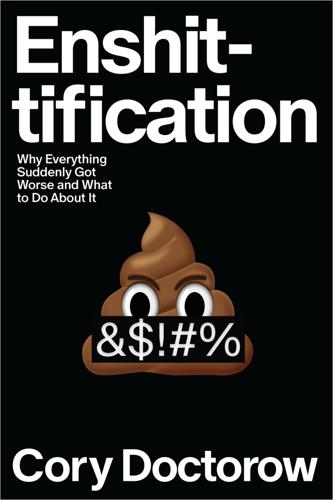
Enshittification: Why Everything Suddenly Got Worse and What to Do About It
by
Cory Doctorow
Published 6 Oct 2025
As I noted on page 59, the modern computer is universal in a highly technical sense: the “Turing-complete, universal von Neumann machine” is a mid-century innovation, the product of a heavily funded Allied Army technical project that was, in its own way, even more seismic than the Manhattan Project. Turing-complete refers to Alan Turing, the gay computer scientist who, during World War II, led a group of brilliant mathematicians (including a cadre of exiled Poles) and code breakers (including a motley assortment of crossword puzzle experts and other weirdos) at Bletchley Park, a secluded estate between Cambridge and Oxford, in an effort to break the Nazis’ Enigma cipher.1 Across the ocean, John von Neumann (as in universal von Neumann machine) led a group of exiled Hungarians and colleagues from around the world at the Princeton Institute in devising a new physical architecture for a computing machine.

The Rough Guide to England
by
Rough Guides
Published 29 Mar 2018
The thirty-odd structures are spread over a sequence of separate, carefully planned landscapes, from the lake views of the Western and Eastern gardens to the wooded delights of the Elysian Fields and the gentle folds of the Grecian Valley, Capability Brown’s first large-scale design. Stowe House, with its Neoclassical facade, is used by Stowe School, which offers regular guided tours. Bletchley Park Sherwood Drive, Bletchley, MK3 6EB, 2 miles south of Milton Keynes • Daily: March–Oct 9.30am–5pm; Nov–Feb 9.30am–4pm • £17.75 (includes audioguide) • 01908 640404, bletchleypark.org.uk • 5min walk from Bletchley station, with trains from London Euston (every 20min; 35min) and Birmingham New St (twice hourly; 1hr; some change at Milton Keynes) Bletchley Park – now on the edge of Milton Keynes – was the headquarters of Britain’s leading code-breakers during World War II, when it was known as “Station X”.
…
The Chiltern Hills extend across the region southwest from the workaday town of Luton, bumping across Bucks as far as the River Thames – this is handsome countryside, characterized by steep forested ridges and deep valleys interrupted by rolling farmland. North Bucks offers a couple of fine attractions: Stowe Gardens, dotted with outdoor sculptures and follies, and the World War II code-breaking centre of Bletchley Park. Meanwhile, Bedfordshire’s most distinctive attraction is whopping Woburn Abbey and its safari park. Cliveden Taplow, SL1 8NS, 1 mile east of Cookham • Grounds Daily: mid-Feb to Oct 10am–5.30pm; Nov & Dec 10am–4pm • £11.70; NT • House tours April–Oct Thurs & Sun 3–5pm; 30min • £2; NT • 01628 605069, nationaltrust.org.uk/cliveden Perched on a ridge overlooking the Thames, Cliveden (pronounced cliv-dun) is a grand Victorian mansion, designed with sweeping Neoclassical lines by Sir Charles Barry, architect of the Houses of Parliament.

Coders at Work
by
Peter Seibel
Published 22 Jun 2009
So we went to a pub and I chatted to Michie and then a bit later I got another letter from him, he says, “There's a research job at Edinburgh, why don't you apply for it.” So I became Donald Michie's research assistant and went to Edinburgh. That was my transition between physics and computer science. Michie had worked with Turing at Bletchley Park during the second World War and got all of Turing's papers. I had a desk in Turing's library, so all around me were Turing's papers. So I was a year at Edinburgh. After that Edinburgh kind of collapsed because James Lighthill, a mathematician, was hired by the government to go and investigate artificial intelligence at Edinburgh.
…
Yet in that period you were working in groups that had lots of women in them. Why was it so open to women then? Allen: Software was the newest-of-the-new stuff that was going on. And it's also probably still to this day considered a soft part of the science. And that's where women gravitated. Early on they were programmers on ENIAC and at Bletchley Park. Women were the computers—that was their name. But in engineering and physics and the harder, older sciences there weren't as many women. It was just divided that way, early on. Then women started to come out of the engineering schools. Now the undergraduate percentage of women in engineering is somewhere around 20 percent.

The Taste of War: World War Two and the Battle for Food
by
Lizzie Collingham
Published 1 Jan 2011
Never for one moment could we forget that everything happening elsewhere, on land, at sea or in the air, depended ultimately on its outcome.’3 The Battle of the Atlantic evokes images of brave merchant seamen defying the U-boats and often paying with their lives, doughty Britons withstanding the hardship of life under siege and brilliant code-breakers at Bletchley Park cracking the German navy’s Enigma code, which enabled them to pinpoint where the U-boats were lying in wait for the merchant marine. But the battle was not only about German submarines, ominous menace though they were. More decisive in the struggle to supply Britain with all its wartime needs was the lack of shipping.
…
The Allies learned that the most effective way of disposing of the submarines was to attack them by both sea and air as they approached their prey. Air cover from bases in Greenland and Iceland greatly improved the North Atlantic convoys’ chances and the air gap was later filled by planes from aircraft carriers. The behind-the-scenes work of decoding enemy communications carried out by the team of academics at Bletchley Park meant that, bar a gap in 1941–42, the Allies always knew more or less where the U-boats were lying in wait. In October 1943 the US Admiral Ernest King relegated the U-boats to the category of a problem rather than a menace.77 Britain’s food supply benefited. The percentage of imports lost to sinkings fell to 0.6 in the last quarter of 1943.

The Rough Guide to Poland
by
Rough Guides
Published 18 Sep 2018
The trio (Marian Rejewski, Henryk Zygalski and Jerzy Różycki) first broke the Enigma cypher in 1934, intelligence that was passed on to the French and British in 1939. In the West, the wartime breaking of Enigma was often treated as the sole achievement of British boffins based at Bletchley Park – although the construction of a Polish Memorial in the grounds of Bletchley Park Museum has gone some way to restore the balance. The Royal Castle: Museum of Applied Arts Góra Przemysła 1 • Tues–Thurs 9am–3pm, Fri noon–9pm, Sat & Sun 11am–6pm • 12zł; free on Sat • mnp.art.pl Rising just to the west of the Rynek is an arresting red-brick structure that looks like a medieval fortress reimagined by twentieth-century architects –which is more or less exactly what the Royal Castle (Zamek Królewski) actually is: the castle was built by Poznań-born thirteenth-century Piast ruler Przemysł II, then subsequently ruined, rebuilt, ruined, then rebuilt again in the modern era.
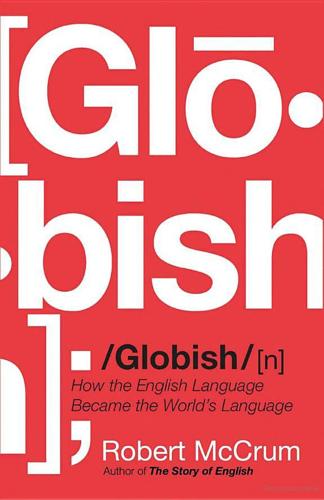
Globish: How the English Language Became the World's Language
by
Robert McCrum
Published 24 May 2010
One clue to its severity comes about nine hundred years later, on the outbreak of the Second World War: this military victory followed by a military occupation was especially admired by the Nazis. In particular, Heinrich Himmler, head of the SS, developed a fascination with the Bayeux Tapestry, an obsession monitored in some disbelief by Station X, Bletchley Park. Soon after the fall of France in 1940, the Bayeux Propagandastaffel (propaganda office) asked to see the famous relic. There were many angles to Nazi interest, aside from art history: the tantalizing example of the Norman fleet’s successful Channel crossing; history’s message that England could, after all, be subjugated by disciplined military might.

Physics in Mind: A Quantum View of the Brain
by
Werner Loewenstein
Published 29 Jan 2013
CHAPTER TWELVE How to Represent the World The Universal Turing Machine In 1936, a young mathematics student at King’s College, Cambridge, formulated the theoretical basis for a machine that could perform all sorts of mathematical tasks. That formulation would cast a wide net: it would bespread mathematics and physics and biology—even such a seemingly way-off field as brain physiology. The student was Alan Turing, the very same who, three years later at Bletchley Park, the British wartime cryptography headquarters, would crack the “Enigma” code of Hitler’s armies. But for the time being, at Cambridge, he was engaged in a more laid-back pursuit: whether and how mathematical assertions can be proven. What he was after was the inner essence of the mathematical process, and he came to the conclusion that anything that has a mathematical solution, anything computable at all, could be computed by a simple machine equipped with a one-dimensional tape bearing a binary code.
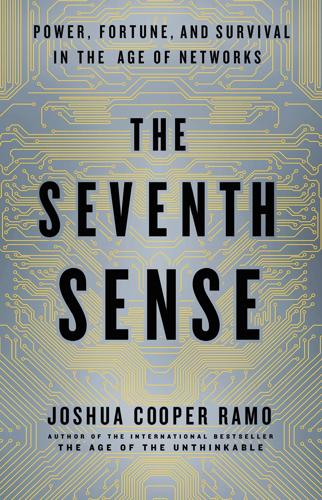
The Seventh Sense: Power, Fortune, and Survival in the Age of Networks
by
Joshua Cooper Ramo
Published 16 May 2016
“When greater-than-human intelligence drives progress,” Vinge explained, “that progress will be much more rapid. In fact, there seems no reason why progress itself would not involve the creation of still more intelligent entities—on a still shorter time scale.” Vinge reminded his audience of a moment once described by the British mathematician I. J. Good, who’d cracked codes in Bletchley Park alongside Alan Turing during World War II: “Let an ultraintelligent machine be defined as a machine that can far surpass all the intellectual activities of any man however clever,” Good had written. “Since the design of machines is one of these intellectual activities, an ultraintelligent machine could design even better machines; there would then unquestionably be an ‘intelligence explosion,’ and the intelligence of man would be left far behind.… Thus the first ultraintelligent machine is the last invention that man need ever make, provided that the machine is docile enough to tell us how to keep it under control.”
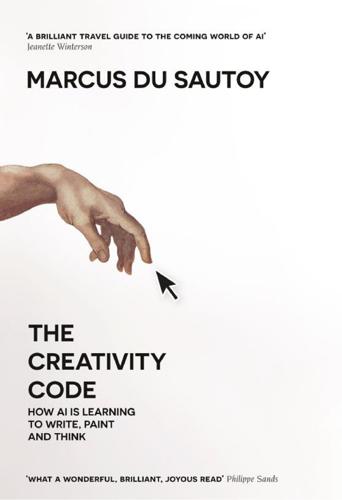
The Creativity Code: How AI Is Learning to Write, Paint and Think
by
Marcus Du Sautoy
Published 7 Mar 2019
Give us strength, Oh Lord, to let our children starve. Roald Dahl died before such a machine was within the realm of possibility, but suddenly it no longer seems such a crazy idea. One of the very first programs written for a computer was developed to write love letters. After cracking the Enigma code at Bletchley Park, Alan Turing headed to the University of Manchester to put into practice his ideas for a physical version of the all-purpose computer he’d been theorising about. Under his guidance the Royal Society Computing Laboratory soon produced the world’s first commercially available general-purpose electronic computer, the Ferranti Mark 1.

The Road to Conscious Machines
by
Michael Wooldridge
Published 2 Nov 2018
His penalty was to take a crude hormone drug that was intended to reduce his sexual desires – a form of ‘chemical castration’. He died, apparently by his own hand, two years later, at the age of just 41.2 Nowadays, of course, we all know a little of the Turing story, although perhaps not quite as much as we should. The best-known part of the story relates to his code-breaking work at Bletchley Park in the Second World War, made famous in the popular (albeit spectacularly inaccurate) 2014 Hollywood movie The Imitation Game. And he certainly deserves enormous credit for that work, which played an important role in the Allied victory. But AI researchers and computer scientists revere him for quite different reasons.

MegaThreats: Ten Dangerous Trends That Imperil Our Future, and How to Survive Them
by
Nouriel Roubini
Published 17 Oct 2022
He also predicted that technological innovation would lead to a sharp fall in the workweek so that workers could spend most of their time enjoying leisure and artistic and creative activities. World War II accelerated the pace for automation. Assembly lines built war materiel, newfangled radar tracked aircraft, and researchers at Bletchley Park, England, used advanced mathematics to break secret German naval codes that revealed the whereabouts of deadly submarines. The brilliant and tragic Alan Turing led the code-breaking initiative. His Enigma machine shortened the war and saved countless lives. After the war, Turing wrote a paper entitled “Computing Machinery and Intelligence.”
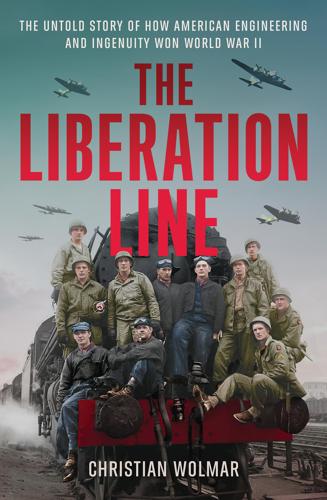
The Liberation Line: The Untold Story of How American Engineering and Ingenuity Won World War II
by
Christian Wolmar
Published 15 Dec 2024
He argues that the French railway system had already been degraded by sabotage and overuse by the German authorities, who paid little attention to maintenance. However, even Foucrier, who is critical of the high death toll of the aerial bombing campaign, accepts that “Zuckerman’s plan undoubtedly eased the task of the Allied troops. Just as Ultra [the surveillance work of Bletchley Park] possibly shortened the war by two years, the Transportation Plan probably shortened the battle of Normandy by several weeks, which implies a saving of human lives, at least of those of the Allied soldiers.”26 Apart from continued attacks aimed at crippling enemy air power, the raids on railway facilities were seen as the most important task of the combined air force, accounting for around 30 to 40 percent of sorties in the run-up to D-Day.
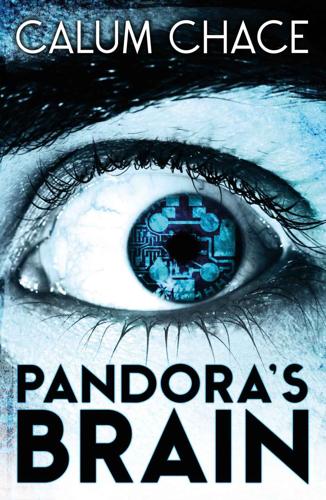
Pandora's Brain
by
Calum Chace
Published 4 Feb 2014
Ivan shook his head and smiled grimly. ‘Not a chance, I’m afraid. Shortly after an AI becomes self-aware, it will want to increase its mental capacities, and there is no reason why it couldn’t do so at an amazing rate. This was foreseen as long ago as the 1960s, by John Good, a colleague of Alan Turing’s at Bletchley Park. He said that once we create a thinking machine there will be an intelligence explosion, and that the first thinking machine would be the very last thing that mankind would invent. The machine would rewrite its software, expand its hardware, and increase its intelligence in a positive feedback cycle that would quickly create a super-intelligence, something far more capable than a human.

Augmented: Life in the Smart Lane
by
Brett King
Published 5 May 2016
Chapter 3 When Computers Disappear “Information technology grows exponentially, basically doubling every year. What used to fit in a building now fits in your pocket, and what fits in your pocket today will fit inside a blood cell in 25 years’ time.” Ray Kurzweil, 2009 At the height of World War II, Alan Turing and the Bletchley Park team had just developed the first programmable electronic digital computer, designed specifically to assist British codebreakers with cryptanalysis of Lorenz ciphers. The German Lorenz rotor stream cipher machines were widely used during the war by the German army to send encrypted messages and dispatches.
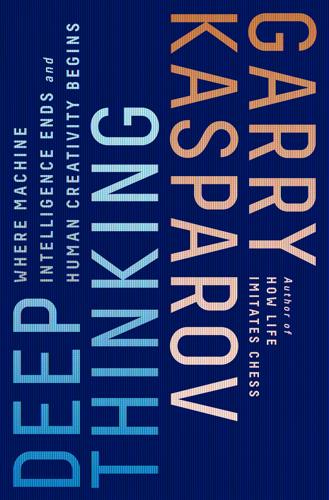
Deep Thinking: Where Machine Intelligence Ends and Human Creativity Begins
by
Garry Kasparov
Published 1 May 2017
For Grandmasters, computers were aliens among us, visiting our world at our invitation. Some of us were hostile toward them, but mostly we were curious and, occasionally, fairly compensated for these exhibitions, as Jesse Owens had been for racing against horses and cars, but it was always an awkward dance. The great AI pioneer Donald Michie, who worked at Bletchley Park with Alan Turing cracking the Enigma code during World War II, wrote wisely about this in 1989, predicting that there could be a “Grandmaster backlash” against machine participation in tournaments: Chess is a culture shared among colleagues who form a human community, however adversarial the game may be in itself.
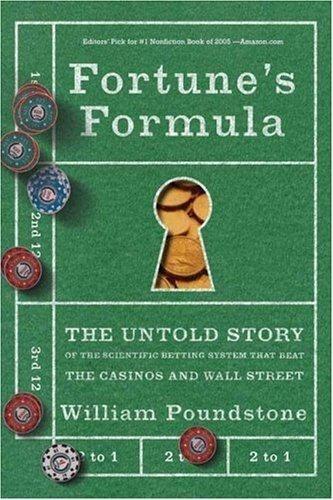
Fortune's Formula: The Untold Story of the Scientific Betting System That Beat the Casinos and Wall Street
by
William Poundstone
Published 18 Sep 2006
In the midst of Shannon’s personal crisis, Thornton Fry renewed his offer of a job at Bell Labs. This time Shannon accepted. And once again, Shannon turned his polymorphic genius to something completely different. Project X IT WAS CALLED PROJECT X. Declassified only in 1976, it was a joint effort of Bell Labs and Britain’s Government Code and Cipher School at Bletchley Park, north of London. It had a scientific pedigree rivaling that of the Manhattan Project, for the British-American team included not only Shannon but also Alan Turing. They were building a system known as SIGSALY. That was not an acronym, just a random string of letters to confuse the Germans, should they learn of it.

Is That a Fish in Your Ear?: Translation and the Meaning of Everything
by
David Bellos
Published 10 Oct 2011
There were good reasons to think they could help with the urgent task of tracking the Soviets’ ability to design an atomic bomb. The Second World War had fostered great advances in cryptography, the making and breaking of secret codes. Statistical techniques had been developed for decoding messages even when the language that had been encoded was not known. The astounding successes of the code breakers at the Bletchley Park site in England prompted some thinkers to wonder whether language itself could not be treated as a code. In a famous memorandum written in July 1949, Warren Weaver, then a senior official with the Rockefeller Foundation, found it “very tempting to say that a book written in Chinese is simply a book in English which was coded into the ‘Chinese code.’
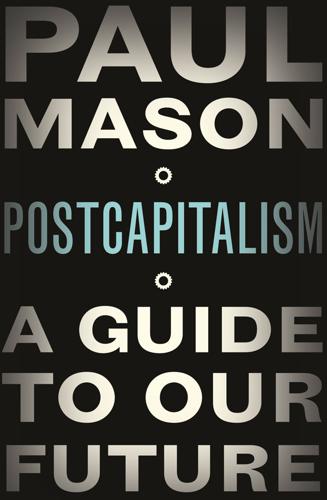
Postcapitalism: A Guide to Our Future
by
Paul Mason
Published 29 Jul 2015
It was the OSRD that took Claude Shannon, the founder of information theory, out of Princeton and put him into Bell Labs to design algorithms for anti-aircraft guns.21 There, he would meet Alan Turing and discuss the possibility of ‘thinking machines’. Turing, too, had been scooped out of academia by the British government to run the Enigma codebreaking operation at Bletchley Park. This culture of innovation survived the transition to peacetime, even as individual corporations tried to monopolize the results and scrapped over patent rights. And it was not limited to technical innovation. In 1942, GM gave management theorist Peter Drucker open access to study its operations.
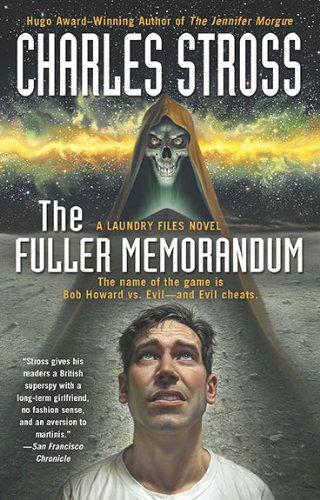
Fuller Memorandum
by
Stross, Charles
Published 14 Jan 2010
Magic being a branch of pure mathematics, and computers being machines that can be used to perform lots of mathematical tasks very fast, it follows that most real practicing magicians start out as computer science graduates. The Laundry, the government agency for handling this stuff, started out as a by-blow of the Second World War code-breakers at Bletchley Park, the people who built the first working programmable computers. And the domestic side of our work--preventing accidental incursions by incomprehensible horrors from beyond spacetime--has been growing rapidly in recent decades. You may have noticed there are more computers around these days, and more computer programmers.
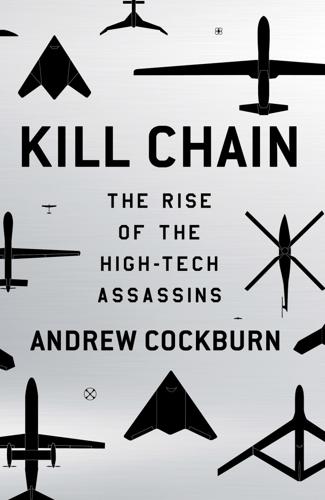
Kill Chain: The Rise of the High-Tech Assassins
by
Andrew Cockburn
Published 10 Mar 2015
Overall, the partnership between the ruthless (he thought the commanders at Pearl Harbor should have been executed the morning after the attack) and foul-mouthed Clarke and the white-shoe lawyer McCormack was a great success, in large part because its leaders had direct relationships with the high command, specifically Clarke with General Marshall and McCormack with McCloy. By the end of the war the operation had vastly expanded, covering all theaters in Europe as well as in Asia in profitable partnership with the principal British intelligence service MI6, which itself controlled the legendary code-breaking operation at Bletchley Park. Its Pentagon offices were the most secret and closely guarded in the building, save for perhaps the adjoining suite of offices, the Washington headquarters of the Manhattan Project. As veterans of Special Branch told me many years later, by the summer of 1945, the team monitoring Japan, which included the eminent scholar and later ambassador Edwin Reischauer, had become convinced that the regime was ready to give up, providing only that the emperor be retained.
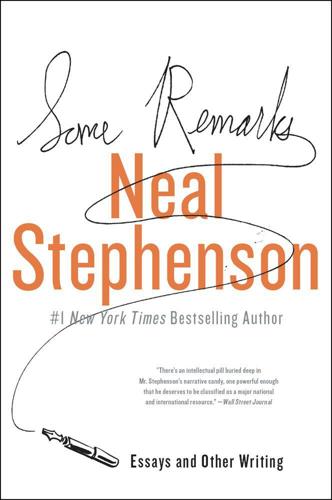
Some Remarks
by
Neal Stephenson
Published 6 Aug 2012
The equipment here is of a slightly older vintage than what we saw in Japan, but only because the cables are older; when FLAG and SEA-ME-WE 3 and Africa 1 come through, Engineer Musalam will have one of the building’s numerous unused rooms scrubbed out and filled with state-of-the-art gear. A few engineers pad through the place. The setup is instantly recognizable; you can see the same thing anywhere nerds are performing the kinds of technical hacks that keep modern governments alive. The Manhattan Project, Bletchley Park, the National Security Agency, and, I would guess, Saddam Hussein’s weapons labs are all built on the same plan: a big space ringed by anxious, ignorant, heavily armed men, looking outward. Inside that perimeter, a surprisingly small number of hackers wander around through untidy offices making the world run.

Human Compatible: Artificial Intelligence and the Problem of Control
by
Stuart Russell
Published 7 Oct 2019
This seems to create inevitable conflict with humans. And of course, the machine, equipped with ever-better models of human decision making, will anticipate and defeat our every move in this conflict. Intelligence Explosions I. J. Good was a brilliant mathematician who worked with Alan Turing at Bletchley Park, breaking German codes during World War II. He shared Turing’s interests in machine intelligence and statistical inference. In 1965, he wrote what is now his best-known paper, “Speculations Concerning the First Ultraintelligent Machine.”11 The first sentence suggests that Good, alarmed by the nuclear brinkmanship of the Cold War, regarded AI as a possible savior for humanity: “The survival of man depends on the early construction of an ultraintelligent machine.”

The AI Economy: Work, Wealth and Welfare in the Robot Age
by
Roger Bootle
Published 4 Sep 2019
Stoll said that a digital world full of “interacting libraries, virtual communities, and electronic commerce” was “baloney.”6 AI has met with a similar wall of skepticism – until recently. This skepticism has been fueled, among other things, by the fact that AI has been with us for some time – at least in theory – and it has not yet produced anything really dramatic. It grew out of digital computing, which was explored and developed at Bletchley Park in England during the Second World War, famously enabling the Nazis’ Enigma code to be broken. That feat is closely associated with the name of Alan Turing. Turing was also responsible for AI’s early conceptual framework, publishing in 1950 the seminal paper “Computing Machinery and Intelligence.”
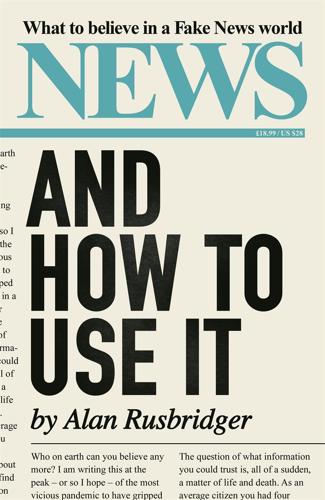
News and How to Use It: What to Believe in a Fake News World
by
Alan Rusbridger
Published 26 Nov 2020
They work through victims, lawyers, human rights organisations, whistleblowers, disenchanted spies and a host of other alternative sources to document agency abuses, blunders, misinformation and outright lies. Such reporters tend to be contemptuous of their counterparts at the other end of the spectrum. The rest fall somewhere in between, balancing access to the agencies while retaining a sense of scepticism. They see much to admire – from Bletchley Park in the past to foiling terrorist attacks at present – but do not hold back from documenting the dark side. Some of the biggest scandals in both the UK and US have involved the intelligence agencies. UK reporters have three intelligence agencies to cover: the Secret Intelligence Service, better known as MI6; the Security Service, MI5; and GCHQ.
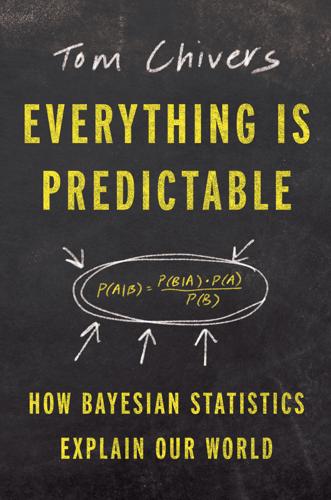
Everything Is Predictable: How Bayesian Statistics Explain Our World
by
Tom Chivers
Published 6 May 2024
Over a pleasant lunch, having spent several days not having to start every conversation with an argument about Bayesianism versus frequentism or being treated like the “… and finally” item at the end of the BBC’s The Six O’Clock News, the three of them decided that they ought to do it again. A similar experience was had in Florence a year later, and then Bernardo took a position at Yale and spent some time traveling the United States giving seminars, where he met a great selection of brilliant thinkers—George Box (son-in-law of Ronald Fisher) and I. J. “Jack” Good (Bletchley Park veteran and early AI theorist) among them. After one of these seminars, Bernardo got chatting with the statistician Morris DeGroot, and “during a very long evening, with plenty of scotch, we talked about many aspects of life and somehow, by dawn, we came to talk about statistics, and we agreed to make an effort to try to organize an international Bayesian meeting at the first available occasion.”
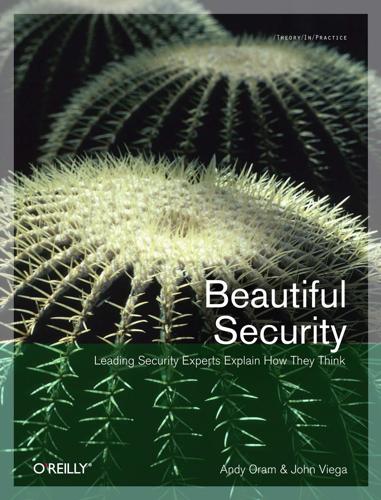
Beautiful security
by
Andy Oram
and
John Viega
Published 15 Dec 2009
The Egyptians carved obfuscated hieroglyphs into monuments; the Spartans used sticks and wound messages called scytales to exchange military plans; and the Romans’ Caesar ciphers are well documented in school textbooks. Many historians attribute the victory in the Second World War directly to the code breakers at Bletchley Park who deciphered the famous Enigma machine, yet even this monumental technological event, which ended the World War and changed history forever, may pale into insignificance next to changes to come. The packet switching network invented by Donald Davies in 1970 also changed the world forever when the sudden ability of computers to talk to other computers with which they previously had no relationship opened up new possibilities for previously isolated computing power.
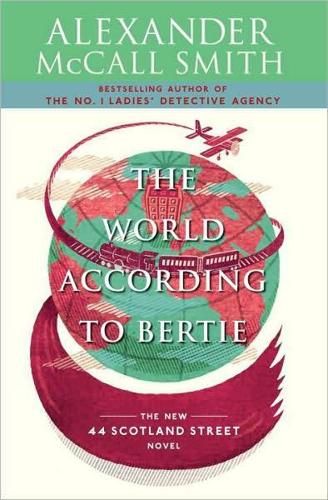
The World According to Bertie
by
Alexander McCall Smith; Robert Ian MacKenzie
Published 1 Jan 2007
What possible connection could Big Lou have with Prince Charlie and Francis II and the whole arcane Stuart dynasty? James tapped the photograph with his finger. “If there were a coded message on the glasses, it would be rather interesting to find out what it is,” he said. “Perhaps we could get Bletchley Park, or whoever cracks codes these days, to work out what it says.” Domenica laughed. “Let’s not let our imaginations run away with us,” she said. “Codes only occur in ridiculous novels. The real world is much more prosaic.” The photograph was slipped back into a large envelope and Domenica turned her attention to the list of anthropologists.

The Blockchain Alternative: Rethinking Macroeconomic Policy and Economic Theory
by
Kariappa Bheemaiah
Published 26 Feb 2017
Along with his mentor, Max Newman, Turing set about designing and building automated machines (Turing Machines) that could decrypt secret German military communications (as documented in the popular movie, ‘The Imitation Game’). However, owing to an obsession for secrecy during the war years and for several years after that, the achievements made by Turing and the team at Bletchley Park in computer development was kept hidden from view. Instead of Turing Machines, over the same time period, a machine called the ENIAC (Electronic Numerical Integrator And Computer) was being developed by John Mauchly and Presper Eckert across the Atlantic. Mauchly, a physicist, who was interested in meteorology tried to develop a weather prediction model.
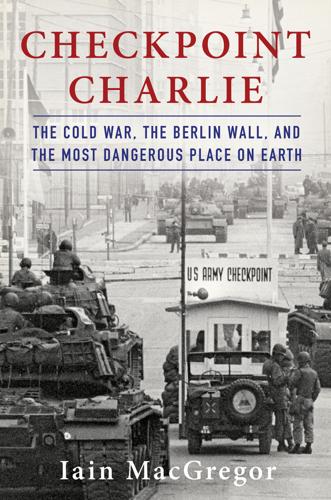
Checkpoint Charlie
by
Iain MacGregor
Published 5 Nov 2019
More than three thousand tons of earth would be removed to construct a tunnel shored up with metal plate and housing a sophisticated monitoring system and a miniature railway line, the whole thing lined with explosives should the need arise to retreat quickly upon detection. Surveillance began in December 1955 once the wiretapping equipment had been installed by British technicians. Unlike the work of the operation’s forebears at Bletchley Park who had broken the Enigma Code, the intelligence gathering of Operation Gold involved the less sophisticated methods of listening in on a mountain of random phone calls between Russian dignitaries, military commanders, secret police, and other Soviet officials coming through East Berlin. The recordings were then sent back to London for transcription.

Ma’am Darling
by
Craig Brown
Published 28 Jul 2017
She watched me, beady-eyed. I have always had an awkward grip and she said: ‘Oh, look, the poor man holds a pen exactly like I do.’ A couple of years later I met her at a party of Tom Stoppard’s and said hello and mentioned the lunch; she looked right through me and walked away. * Harris’s novel set at Bletchley Park. 90 What happened in the shower? Nobody quite knows. In February 1999, Princess Margaret was on Mustique. Her guests at Les Jolies Eaux were enjoying a relaxed breakfast, chatting about the day ahead. Suddenly, the cook rushed in. There was steam coming from under the bathroom door, she said: the Princess must be trapped inside.
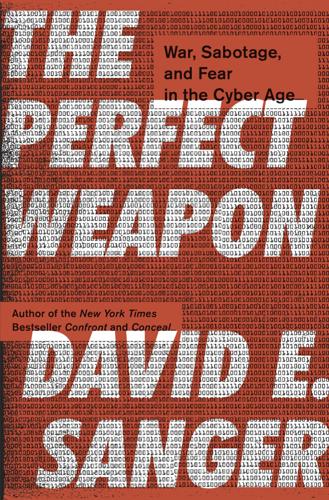
The Perfect Weapon: War, Sabotage, and Fear in the Cyber Age
by
David E. Sanger
Published 18 Jun 2018
The agency was born after World War I as the “Government Code and Cypher School,” which pretty well defined its role in the twentieth century. Hannigan was born twenty years after World War II had ended, and it was his job to push GCHQ to figure out its role in the cyber age. It had survived since the glory days of Enigma at Bletchley Park, decoding messages and intercepting calls, but in a new era when defense and offense had blended, merely intercepting conversations was not enough. So Hannigan began reorganizing GCHQ’s structure and moving it beyond its roots in signals intelligence. He realized that, like the NSA, GCHQ needed to up its game in cyber skills—specifically “network exploitation” and “network attack.”
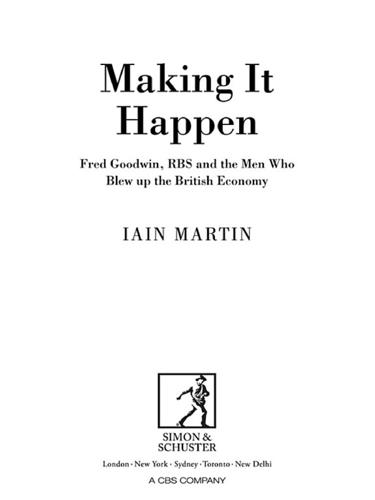
Making It Happen: Fred Goodwin, RBS and the Men Who Blew Up the British Economy
by
Iain Martin
Published 11 Sep 2013
There exists an extraordinary situation in which, as the result of the judgment by Justice Tugendhat on 9 June 2011, Goodwin’s now former mistress cannot be identified, seemingly for life, to protect her privacy. It is as though the affair – which it is not denied happened at the height of the period in which Goodwin was making catastrophic mistakes – is deemed to be the financial crisis equivalent of Bletchley Park, the secret installation in World War Two that was not allowed to be mentioned for decades after the end of hostilities. This is bizarre. Should the justice system really shield the public from the truth? In the summer of 2011 Goodwin moved out, back into the old family home in the Grange, Edinburgh.
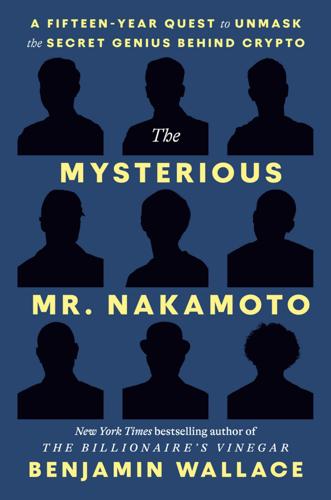
The Mysterious Mr. Nakamoto: A Fifteen-Year Quest to Unmask the Secret Genius Behind Crypto
by
Benjamin Wallace
Published 18 Mar 2025
The hackers, he suggested, had either followed tradesmen into the house or broken in. Another story Wright kept changing was the identities of the Second Man and the Third Man who made up the triune Satoshi Nakamoto he had long described. He told the ATO that the Third Man was David Rees, an English mathematician who’d done codebreaking work at Bletchley Park and whom Wright’s grandfather had known. But Rees’s daughters told the ATO that in 2008, when their father was ninety, he’d been “very frail, a little confused and suffered from some memory loss, his doctor regarded him as suffering from senile dementia,” and they “considered it inconceivable that their father could have completed work of this nature without his family being aware.”

Tripping on Utopia: Margaret Mead, the Cold War, and the Troubled Birth of Psychedelic Science
by
Benjamin Breen
Published 16 Jan 2024
Even the adventurous Major White: One reason for the unconventional choice of the newly discovered compound THC (rather than mescaline, which had a longer history of testing as a truth drug) may have been the perception that Nazi scientists had already mastered mescaline research and hence developed antidotes for the drug. The year before, in the summer of 1942, the British cryptographic operation at Bletchley Park deciphered a top-secret message sent to SS Medical Headquarters. “Experiments to date of injecting parachutists with scopolamine were successful,” the cryptic message read. “Therefore, experiments with mescaline are to be undertaken, since these injections produce and enhance effect through intoxication.
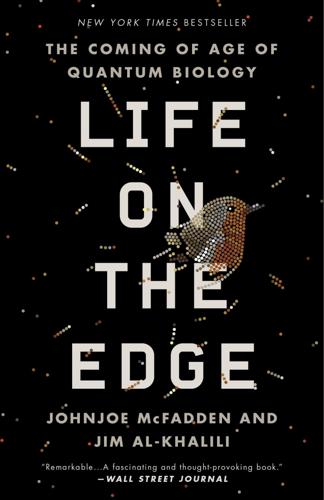
Life on the Edge: The Coming of Age of Quantum Biology
by
Johnjoe McFadden
and
Jim Al-Khalili
Published 14 Oct 2014
These nucleotide beads come in four varieties: adenine (A), guanine (G), cytosine (C) and thymine (T), so their arrangement along the DNA strand provides a one-dimensional sequence of genetic letters such as “GTCCATTGCCCGTATTACCG.” Francis Crick had spent the war years working at the Admiralty (the authority responsible for the command of the Royal Navy), so it’s conceivable he may have been familiar with codes, such as those produced by the German Enigma machines that were being decoded at Bletchley Park. In any case, when he saw the DNA strand he immediately recognized it as a code, a sequence of information that provided the crucial instructions of heredity. And, as we will discover in chapter 7, identification of the double helical DNA strand also solved the problem of how genetic information is copied.
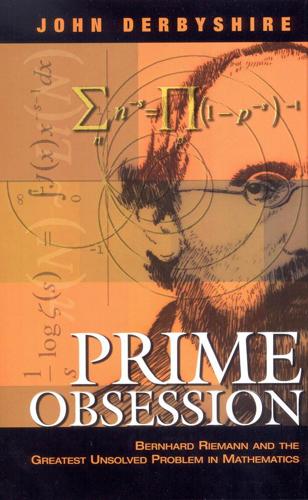
Prime Obsession:: Bernhard Riemann and the Greatest Unsolved Problem in Mathematics
by
John Derbyshire
Published 14 Apr 2003
He applied to the Royal Society for a grant to cover the cost of construction and actually cut some of the gear wheels himself, at the engineering department of King’s College, Cambridge, where he was lecturing. Turing’s work on the “zeta function machine” stopped abruptly in 1939, when World War II broke out. He joined the Government Code and Cypher School at Bletchley Park and spent the war years breaking enemy codes. Some of the gear wheels survived, however, 262 PRIME OBSESSION and were found among his effects when he died, probably from suicide, on June 7, 1954. As sad and strange as Turing’s death was—he ate an apple coated, by himself, with cyanide—he enjoyed posthumous good fortune in the matter of biographers.
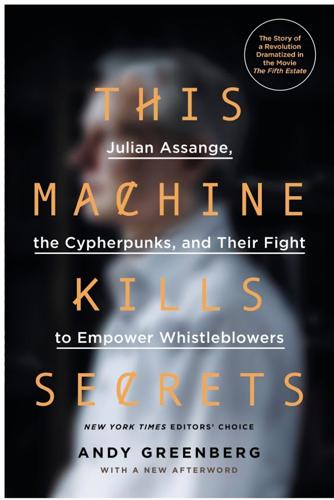
This Machine Kills Secrets: Julian Assange, the Cypherpunks, and Their Fight to Empower Whistleblowers
by
Andy Greenberg
Published 12 Sep 2012
The secretive organization would pay visits to his office, pairs of serious-faced spooks in suits, and politely warn Merritt about a certain legal issue that might affect his company: the International Traffic in Arms Regulations, or ITAR. To the U.S. government’s mind, cryptography was the realm of soldiers and spies, not common entrepreneurs like Merritt. Ever since the British encryption genius Alan Turing had broken the Nazis’ Enigma encryption engine at Bletchley Park, it had been clear to the military that code-breaking and code-making were as important for winning wars as missile guidance systems, bomber blueprints, and nuclear warheads. And when it came to deciding who could legally access which tools, ITAR painted military hardware and software with the same broad brush.
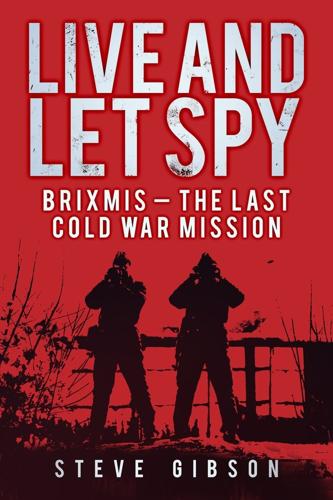
Live and Let Spy: BRIXMIS - the Last Cold War Mission
by
Steve Gibson
Published 2 Mar 2012
There are at least three reasons why intelligence seems not to be behaving intelligently in today’s context. First – the notion of politicisation. The intelligence community has, in recent times and specifically in regard to Iraqi WMD, allowed itself to be misled by power. Harry Hinsley, the historian and WWII Bletchley Park cryptanalyst, argued that the role of intelligence is to tell truth to power and to then leave the policy-makers well alone in their decision-making deliberations. By contrast, Robert Gates, the former Director of the CIA and latterly Secretary of State for Defense in the US, argues that analysts must consider policy-makers’ concerns, understand their objectives, and provide analysis relevant to their context.
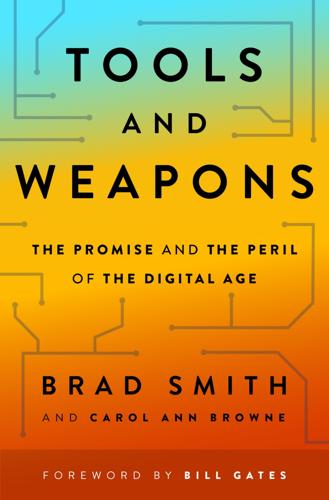
Tools and Weapons: The Promise and the Peril of the Digital Age
by
Brad Smith
and
Carol Ann Browne
Published 9 Sep 2019
Dom Galeon, “Microsoft’s Speech Recognition Tech Is Officially as Accurate as Humans,” Futurism, October 20, 2016, https://futurism.com/microsofts-speech-recognition-tech-is-officially-as-accurate-as-humans/; Xuedong Huang, “Microsoft Researchers Achieve New Conversational Speech Recognition Milestone,” Microsoft Research Blog, Microsoft, August 20, 2017, https://www.microsoft.com/en-us/research/blog/microsoft-researchers-achieve-new-conversational-speech-recognition-milestone/. Back to note reference 11. The rise of superintelligence was first raised by I.J. Good, a British mathematician who worked as a cryptologist at Bletchley Park. He built on the initial work of his colleague, Alan Turing, and speculated about an “intelligence explosion” that would enable “ultra-intelligent machines” to design even more intelligent machines. I.J. Good, “Speculations Concerning the First Ultraintelligent Machine,” Advances in Computers 6, 31–88 (January 1965).

More Everything Forever: AI Overlords, Space Empires, and Silicon Valley's Crusade to Control the Fate of Humanity
by
Adam Becker
Published 14 Jun 2025
Clarke), at least one famous crackpot (Herbert Dingle), and a few people who wished to remain anonymous. One or two of the essays went on to be classics in their fields; most of the rest were quickly forgotten.31 By the time that book was published, Good had already been working with computing machines for twenty years. During World War II, the young Good joined the code-breaking team at Bletchley Park upon finishing his PhD in mathematics at Cambridge. Shortly after arriving, the leader of the team, Alan Turing, caught Good napping on the job rather than breaking Nazi codes. But Good quickly found his way into Turing’s favor by solving a code-breaking problem that Turing himself hadn’t managed to crack.

These Strange New Minds: How AI Learned to Talk and What It Means
by
Christopher Summerfield
Published 11 Mar 2025
Turing’s amazing insight was that this process would set off a form of computational chain reaction in which computers became capable of ever more complex forms of reasoning, and perhaps would one day master human cognitive skills such as speaking in sentences or playing chess. This famous ‘Turing Machine’ was never built, because it was just an abstract idea, not a physically realizable device. However, having been recruited into the Government Code and Cypher School at Bletchley Park during the war, Turing had the opportunity to see at first hand the power of real, physical computers at work. There, he had worked with the world’s first programmable electronic computer, called the Colossus. It was powered by 2,000 vacuum tubes, which were an early precursor to the transistor, the basic electronic switch that powers all digital technology.
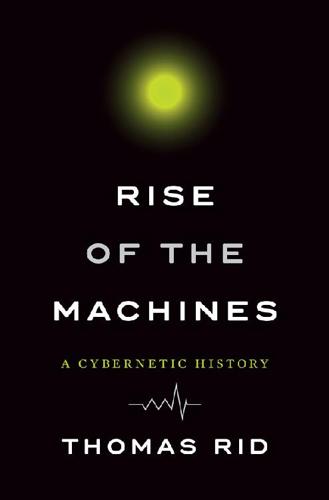
Rise of the Machines: A Cybernetic History
by
Thomas Rid
Published 27 Jun 2016
By the end of the ’60s, the myth of cybernetic organisms and living machines had begun to retreat into science fiction—and critical theory. The notion that machines could outthink humans was still hot among scientists in the 1960s. Irving “Jack” Good was a leading UK mathematician, then based at Trinity College, Oxford, and the Atlas Computer Lab in Chilton. He had worked as a cryptologist at Bletchley Park with Alan Turing during the war, and later at GCHQ until 1959.86 Good had become convinced that “ultraintelligent machines” would soon be built. “The survival of man depends on the early construction of an ultraintelligent machine,” he enigmatically opened his most-read paper, in 1965. In Good’s view, a machine was ultraintelligent if it could “far surpass” all the intellectual activities of any human being, however clever.
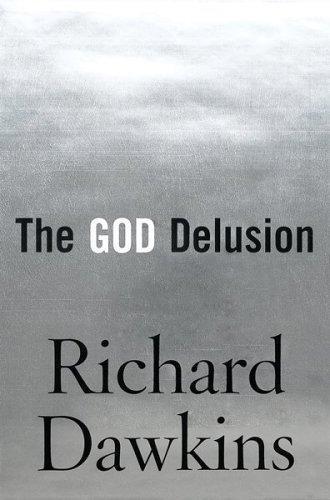
The God Delusion
by
Richard Dawkins
Published 12 Sep 2006
He was offered a choice between two years in prison (you can imagine how the other prisoners would have treated him) and a course of hormone injections which could be said to amount to chemical castration, and would have caused him to grow breasts. His final, private choice was an apple that he had injected with cyanide.120 As the pivotal intellect in the breaking of the German Enigma codes, Turing arguably made a greater contribution to defeating the Nazis than Eisenhower or Churchill. Thanks to Turing and his ‘Ultra’ colleagues at Bletchley Park, Allied generals in the field were consistently, over long periods of the war, privy to detailed German plans before the German generals had time to implement them. After the war, when Turing’s role was no longer top secret, he should have been knighted and fêted as a saviour of his nation. Instead, this gentle, stammering, eccentric genius was destroyed, for a ‘crime’, committed in private, which harmed nobody.
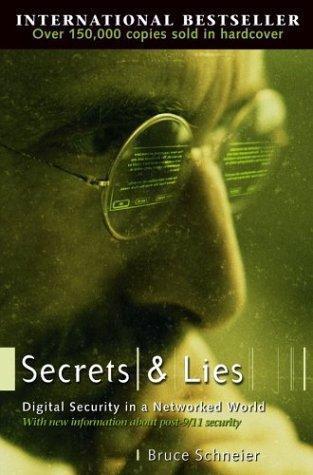
Secrets and Lies: Digital Security in a Networked World
by
Bruce Schneier
Published 1 Jan 2000
Eve isn’t going to look at the ciphertext message, shrug her shoulders, and wander off. She’s going to try to figure out what the plaintext is. If she’s the World War II British government, she is going to hire the best mathematicians, linguists, and chess players in the country, stick them and 10,000 others in a secret compound at Bletchley Park, and invent the computer—just so she can break the algorithm and recover the plain- texts. Even today, the National Security Agency (NSA) is the single largest consumer of computer hardware and the single largest employer of mathematicians in the world. Alice had better be a pretty smart cryptographer if she is going to outsmart these sorts of Eves.
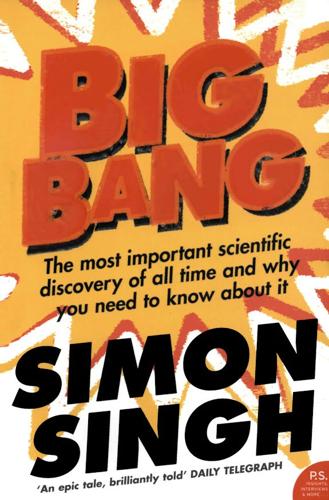
Big Bang
by
Simon Singh
Published 1 Jan 2004
Also recounted is the history of the Beale Ciphers, created in the early nineteenth century to obscure the location of a treasure of gold, buried somewhere in Virginia. Singh also traces the monumental improvements in code-making and -breaking brought on by the First and Second World Wars, including the development of the German Enigma cipher machine, which was cracked by the brilliant Allied code-breakers at Bletchley Park. Now, in the Information Age, the possibility of a truly unbreakable code looms large, and information security has become one of the major debates of our times. Simon Singh investigates how technology and the ways we communicate will affect our personal privacy and our everyday lives. Dramatic, compelling and remarkably far-reaching, this book will forever alter your view of history, what drives it, and how private that e-mail you just sent really is.

More: The 10,000-Year Rise of the World Economy
by
Philip Coggan
Published 6 Feb 2020
This led to the creation of the Computer-Tabulating-Recoding company, the forerunner of IBM.6 The Second World War accelerated the process of computer development. Navies needed help with calculating the trajectory of shells fired over a range of several miles, while at sea.7 The code-breaking team at Bletchley Park, led by Alan Turing, developed a computer to crack the Enigma code used by Germany. At the time, however, computers weighed about 30 tons and still had less processing power than most modern, compact devices. The Cray supercomputer, launched in the early 1970s, cost $37m in today’s money and had a memory of eight megabytes: a modern laptop costing just a few hundred dollars offers six gigabytes of memory, or 750 times more than the Cray.8 The reason that those early computers were so heavy was that they depended on vacuum tubes for the switches, which, by being on or off, represented the required information in binary form.

Your Computer Is on Fire
by
Thomas S. Mullaney
,
Benjamin Peters
,
Mar Hicks
and
Kavita Philip
Published 9 Mar 2021
Mar Hicks, Programmed Inequality, How Britain Discarded Women Technologists and Lost Its Edge in Computing (Cambridge, MA: MIT Press, 2017), chapter 1. 11. See, for example, Hazel Carby, Imperial Intimacies (New York: Verso, 2019) on the struggles of the “Windrush generation” to prosper and gain their civil rights in the UK. 12. In my conversations with women who worked in computing at Bletchley Park, and also after the war, I have been repeatedly greeted with responses to the effect of “Are you sure you want to interview me? I don’t think what I did was that important.” Part of my task in recording this history has been to convince these women that their contributions were important and that historians do value what they have to say. 13.
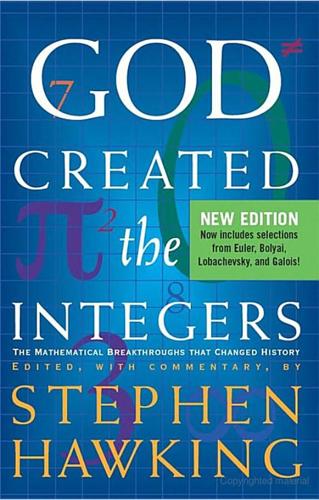
God Created the Integers: The Mathematical Breakthroughs That Changed History
by
Stephen Hawking
Published 28 Mar 2007
When war broke out in September 1939, Turing left his Cambridge fellowship and immediately reported to the facility the GCCS had established in the small town of Bletchley Park, the town where the rail line from Oxford to Cambridge intersected the main rail line from London to the north! While at Bletchley Park, Turing had his only serious relationship with a woman. Joan Clarke had been preparing for her final examinations for a Cambridge mathe-matics degree when she reported to Bletchley Park in June 1940. Her older brother had been at King’s College Cambridge, and she had once met Turing before the war. Turing began dating Joan in the spring of 1941.
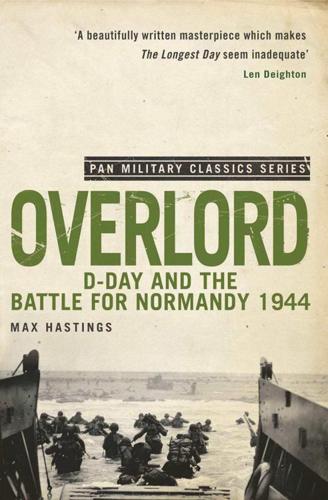
Overlord: D-Day and the Battle for Normandy 1944
by
Max Hastings
Published 22 Mar 2012
In the years since the revelation of the Allies’ breaking of German ciphers in the Second World War, it has sometimes been assumed that Ultra provided the Allies with absolute knowledge of enemy deployments and capabilities. This is a travesty of the truth. Ultra was of immense value, but its reliability and comprehensiveness varied greatly from day to day, according to luck, the extent to which local German units were signalling by radio rather than using land-lines, and the speed of the decrypters at Bletchley Park. O’Connor’s forces embarked upon GOODWOOD with no concept of the strength of the German defences they were to engage, while the Germans had been using observation posts, prisoner interrogation and aerial reconnaissance to powerful effect. This was the first and last occasion of the Normandy campaign on which von Kluge’s men were able to fight a battle on terms that suited them, albeit at a cost which they could much less well afford than the Allies.

Future Politics: Living Together in a World Transformed by Tech
by
Jamie Susskind
Published 3 Sep 2018
There is no evidence, Hart, suggested, that deviation from ‘accepted sexual morality’ by adults in private is ‘something which, like treason, threatens the existence of society’: ‘As a proposition of fact it is entitled to no more respect than the Emperor Justinian’s statement that homosexuality was the cause of earthquakes.’33 For Hart, our personal choices, especially OUP CORRECTED PROOF – FINAL, 28/05/18, SPi РЕЛИЗ ПОДГОТОВИЛА ГРУППА "What's News" VK.COM/WSNWS Freedom and the Tech Firm 203 those made in private, have no bearing on whether we are loyal citizens. (Hart himself had no problem answering Churchill’s call to service, having worked in military intelligence for most of the Second World War. Nor had the great mathematician and codebreaker Alan Turing who also worked at Bletchley Park, and who was the subject of criminal prosecution for homosexual acts.) So how would the Hart–Devlin debate play out today? We might firstly argue that VR is actually pretty different from pure fantasy. Its realism and sensual authenticity bring it closer to actually doing something than merely thinking about it.The trouble with this argument is that if you believe on principle (as Mill and Hart did) that mere immorality should never be made the subject of coercion, then to say something is very immoral, as opposed to merely quite immoral, doesn’t take you much further.
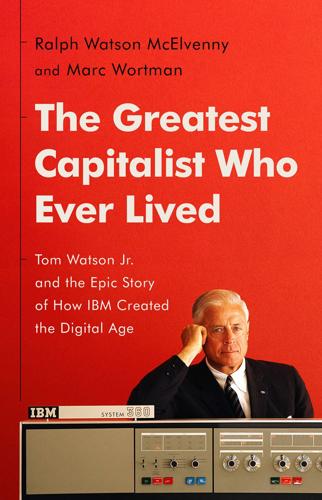
The Greatest Capitalist Who Ever Lived: Tom Watson Jr. And the Epic Story of How IBM Created the Digital Age
by
Ralph Watson McElvenny
and
Marc Wortman
Published 14 Oct 2023
Tedlow, The Watson Dynasty: The Fiery Reign and Troubled Legacy of IBM’s Founding Father and Son (New York: HarperBusiness, 2003), 149; Maney, Maverick, 311. 21. Maney, Maverick, 302–303, 322–323. 22. Quoted in Maney, Maverick, 315. 23. On Colossus as an early electronic computer, see David A. Price, Geniuses at War: Bletchley Park, Colossus, and the Dawn of the Digital Age (New York: Knopf, 2021). 24. Jean Ford Brennan, The IBM Watson Laboratory at Columbia University: A History (International Business Machines Corporation, 1971), 3–4, www.columbia.edu/cu/computinghistory/brennan/index.html#notes; Matthew T. Downey, Ben D.

Berlin: Life and Death in the City at the Center of the World
by
Sinclair McKay
Published 22 Aug 2022
See also American sector; British sector; French sector and Soviet sector; Second World War and see Second World War Westhafen Canal Wiene, Robert Wiesbaden Wilder, Billy Wilhelm, Crown Prince of Germany Wilhelm II, Kaiser of Germany Wilmersdorf Wirth, Joseph Wittenau Woman in Berlin, A Woman in the Moon (film) Woman in the Window, The (film) women/girls: Berlin, Battle of (1945) and; East Berlin, opportunities for in; factory workers; Freikorps literature exults in violence against; Kristallnacht and; Nazi art and image of; prostitution and see prostitution; rape of; rock ’n’ roll and; ‘rubble women’; self-reliance of; sexual coercion of, occupied zones and; suicide of; West Germany, obstacles to women breaking out from traditional housewife roles in working class World Jewish Congress Woywoth, Hans Wunderwald, Gustav: ‘Brücke über die Ackerstrasse’ Young Communist League Young Pioneers Youth Movement Zehlendorf Zeitzeugenbörse Zhukov, Marshal Ziegler, Adolf; ‘The Four Elements’ Zionism Also by Sinclair McKay The Fire and the Darkness About the Author Sinclair McKay is a features writer for The Telegraph and The Mail on Sunday. He is also the acclaimed author of the bestselling The Secret Life of Bletchley Park and The Fire and the Darkness. You can sign up for email updates here. Thank you for buying this St. Martin’s Publishing Group ebook. To receive special offers, bonus content, and info on new releases and other great reads, sign up for our newsletters. Or visit us online at us.macmillan.com/newslettersignup For email updates on the author, click here.

The Singularity Is Nearer: When We Merge with AI
by
Ray Kurzweil
Published 25 Jun 2024
This corresponds to £23,314,516 in 2020 British pounds, or $33,811,510 in early 2023 US dollars. Keep in mind that due to the uncertainty of the underlying estimates, only the first two significant digits should be regarded as meaningful. Performance source: B. Jack Copeland, ed., Colossus: The Secrets of Bletchley Park’s Codebreaking Computers (Oxford, UK: Oxford University Press, 2010), 282. 1946 ENIAC Real price: $11,601,846.15 Computations per second: 5,000 Computations/second/dollar: 0.00043 Price source: Martin H. Weik, A Survey of Domestic Electronic Digital Computing Systems, report no. 971 (Aberdeen Proving Ground, MD: Ballistic Research Laboratories, December 1955), 42, https://books.google.com/books?

A Life in Secrets
by
Sarah Helm
Published 1 Jan 2005
An inner circle of senior British officers and politicians had been keeping secret what they had known about the concentration camps and death camps since the start of the war. From as early as 1939 SS signals encoded by German Enigma machines had been intercepted and decoded by cryptanalysts at Bletchley Park in Buckinghamshire. The resulting decrypts, known as ULTRA, revealed early evidence of a Nazi extermination programme, but for security reasons nobody outside the inner circle—which included the prime minister—was allowed to know. The fear was, or so it was said later, that if information from ULTRA were to spread, the Germans would guess that the Enigma code had been broken and would change the codes.
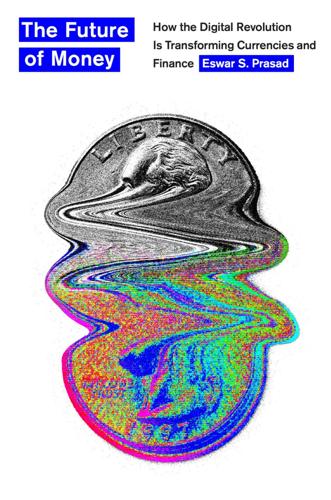
The Future of Money: How the Digital Revolution Is Transforming Currencies and Finance
by
Eswar S. Prasad
Published 27 Sep 2021
Native American code talkers from the Cherokee and Navajo Nations, who developed special codes for transmitting messages that could not be deciphered by enemy forces, played a key role in American military successes in World Wars I and II. On the flip side, the Polish code breakers—a group of Polish mathematicians who, in collaboration with Alan Turing and other code breakers at Bletchley Park, cracked the German Enigma code—are credited with an important role in engineering a quicker end to World War II. These examples highlight the never-ending tussle between cryptography and cryptanalysis, the science of deciphering or “breaking” codes. While Bitcoin is referred to as a cryptocurrency, it does not involve encryption in this traditional sense.

Power and Progress: Our Thousand-Year Struggle Over Technology and Prosperity
by
Daron Acemoglu
and
Simon Johnson
Published 15 May 2023
Notably, if the human mind is in essence a very sophisticated computer and the tasks that it performs are within the class of computable functions, then a universal Turing machine could replicate all human capabilities. Before World War II, however, Turing did not venture into the question of whether machines could really think and how far they could go in performing human tasks. During the war, Turing joined the top-secret Bletchley Park research facility, where mathematicians and other experts worked to understand encrypted German radio messages. He devised a clever algorithm—and designed a machine—to speed up the breaking of enemy ciphers. This then helped British intelligence to quickly decipher encrypted communications that the Germans had presumed to be unbreakable.
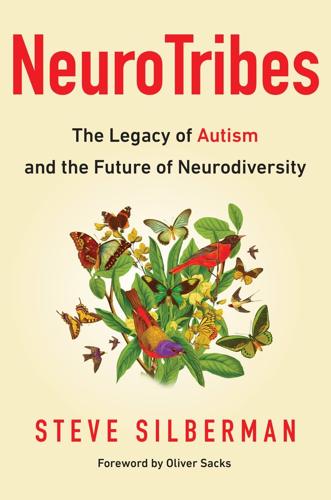
NeuroTribes: The Legacy of Autism and the Future of Neurodiversity
by
Steve Silberman
Published 24 Aug 2015
A boy with such a mind (and it was nearly always a boy in his imagination, though not in reality) didn’t have the same compulsion to waste time in foolish pursuits that other boys did; instead, he practically had to be forced to leave the house. During World War II, the British spy agency MI8 secretly recruited a crew of teenage wireless operators (prohibited from discussing their activities even with their families) to intercept coded messages from the Nazis. By forwarding these transmissions to the crack team of code breakers at Bletchley Park led by the computer pioneer Alan Turing, these young hams enabled the Allies to accurately predict the movements of the German and Italian forces. Asperger’s prediction that the little professors in his clinic could one day aid in the war effort had been prescient, but it was the Allies who reaped the benefits.

England
by
David Else
Published 14 Oct 2010
Rooms are furnished with antiques and original pieces from the manor, and the restaurant (mains £12 to £18) serves a seasonal modern British menu. Waddesdon is 6 miles northwest of Aylesbury off the A41. From the Aylesbury bus station, take bus 16 (15 minutes, hourly Monday to Friday, every two hours Saturday). Bletchley Park Once England’s best-kept secret, Bletchley Park (01908-640404; www.bletchleypark.org.uk; The Manor, Bletchley; adult/12-16 yr/under 12 yr £10/8/free; 9.30am-5pm Mon-Fri, 10.30am-5pm Sat & Sun) was the scene of a huge code-breaking operation during WWII, dramatised in the film Enigma. Almost 8,500 people worked here in total secrecy intercepting, decrypting, translating and interpreting enemy correspondence.

Winds of Change
by
Peter Hennessy
Published 27 Aug 2019
When Powell was paid it was in cash, so no transaction went through the newspaper’s accounts. The secret has remained safe to this day.68 Thus, the wartime brigadier in military intelligence carried out his clandestine operation by night in the south-eastern suburbs of London. His articles were published under the by-line ‘A Conservative’. But you didn’t need to have worked at Bletchley Park to decode their authorship. Each piece was laced with Enochian threnodies, some of them a pure match in style and content of his St George’s Eve peroration three years earlier. No other leading Conservative of the day could have sculpted a paragraph like this: National pride, call it patriotism, has always been the mainspring of the Conservative Party, long before England awoke one morning to find that her factories and fleets had won an Empire.

Wired for War: The Robotics Revolution and Conflict in the 21st Century
by
P. W. Singer
Published 1 Jan 2010
It was a B-29, the Enola Gay, that would use a Norden bombsight to drop the first nuclear bomb on Hiroshima. The real breakthrough was in computers that stayed off the battlefield. The first that used programming as we now understand it was Colossus, built at the top-secret codebreakers’ lab at Bletchley Park, England. Weighing a ton, Colossus had fifteen hundred electronic valves to crank out the complex mathematics needed to break the Enigma code used by the Germans. Colossus, however, used physical switches to store data, so the first truly electronic computer was ENIAC, the Electric Numerical Integrator and Computer.
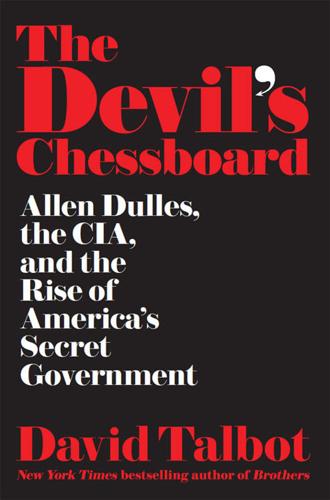
The Devil's Chessboard: Allen Dulles, the CIA, and the Rise of America's Secret Government
by
David Talbot
Published 5 Sep 2016
McCarthy’s prime suspect was a bespectacled, Ivy League–educated CIA analyst named William Bundy, whose profile made him the perfect embodiment of the Dulles agency man. A member of Yale’s secretive Skull and Bones society—breeding ground for future spooks—Bundy joined Army intelligence during the war, working at Bletchley Park in England as part of the Ultra operation that cracked Nazi codes. Dulles was close to Bundy’s father, Harvey, a top diplomat who had helped oversee the Marshall Plan, as well as his younger brother, McGeorge, another product of Skull and Bones and Army intelligence who had worked with Dulles at the Council on Foreign Relations and on the Dewey presidential campaign.
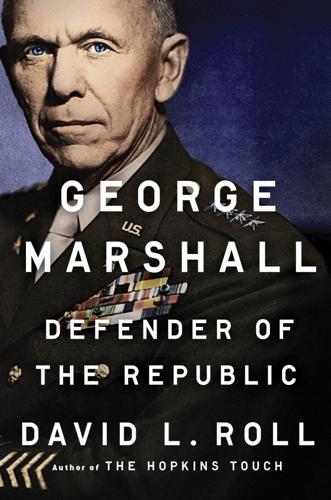
George Marshall: Defender of the Republic
by
David L. Roll
Published 8 Jul 2019
While the Combined Chiefs were discussing proposed operations in the Pacific, Burma, and China in a tiny conference room, Joan Bright, who ran the Special Information Centre out of a single office elsewhere in the Cabinet War Rooms, knocked at the door. She had in her hand an ULTRA intercept from Bletchley Park that had been received and decoded during the previous night. According to the message, the precarious Normandy beachhead would not be the target of a massive German counterattack because “Hitler had cancelled Case Three.” Cancellation of “Case Three” meant that General Gerd von Rundstedt’s five Panzer divisions of armored reserve and the nineteen divisions of the German Fifteenth Army would not be moved 120 miles from the Pas-de-Calais to Normandy to push the Allies back into the sea.

A History of Modern Britain
by
Andrew Marr
Published 2 Jul 2009
The Labour conference which kick-started the election campaign one hot afternoon in Blackpool is still remembered for the youth of the delegates. Denis Healey was there, in battledress and beret, fresh from the battlefront in Italy, preaching red-hot socialist revolution. Across Europe the upper classes were ‘selfish, depraved, dissolute and decadent’ he told the cheering hall. Roy Jenkins, who had helped crack the German codes at Bletchley Park, was there too, a slim and dapper soldier. There was even a socialist Rear Admiral. Labour’s manifesto, well written and snappily designed, would be distributed to nearly two million people, backed by powerful posters, 12 million leaflets and huge numbers of party volunteers. Its most popular passages could hardly have come as a shock.
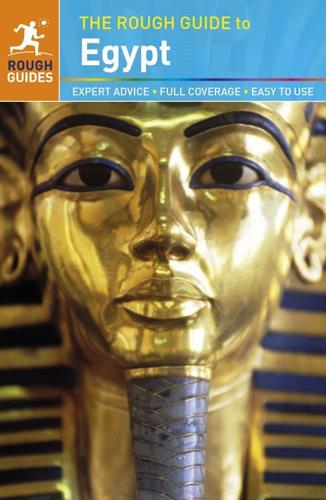
The Rough Guide to Egypt (Rough Guide to...)
by
Dan Richardson
and
Daniel Jacobs
Published 1 Feb 2013
As a reserve officer in the Hungarian air force (allied to Nazi Germany), he could hardly refuse being posted to Rommel’s Afrika Korps, which used his expertise as a spotter and his photos for their official handbook – to the fury of his old companions in Egypt, many of whom were now in the LRDG. Thanks to the codebreakers of Bletchley Park, the British knew of Almássy’s infiltration of two German spies into Egypt, whom he guided through the Gilf to Kharga Oasis in 1941. He later made amends by visiting Patrick Clayton in an Italian POW camp and getting him moved to a better one. Almássy himself wound up in a Soviet camp where he lost his teeth from scurvy, before a People’s Court cleared him of being a Nazi sympathizer after testimony that he had sheltered Jewish neighbours in his flat in Budapest.
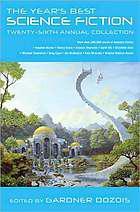
The Year's Best Science Fiction: Twenty-Sixth Annual Collection
by
Gardner Dozois
Published 23 Jun 2009
Our father had remembered, just, how the area was all villages and farmland before the Second World War. He had stayed on even after our mother died twenty years before he did, him and his memories made invalid by all the architecture. At the service I spoke of those memories—for instance how during the war a tough Home Guard had caught him sneaking into the grounds of Bletchley Park, not far away, scrumping apples while Alan Turing and the other geniuses were labouring over the Nazi codes inside the house. “Dad always said he wondered if he picked up a mathematical bug from Turing’s apples,” I concluded, “because, he would say, for sure Wilson’s brain didn’t come from him.”